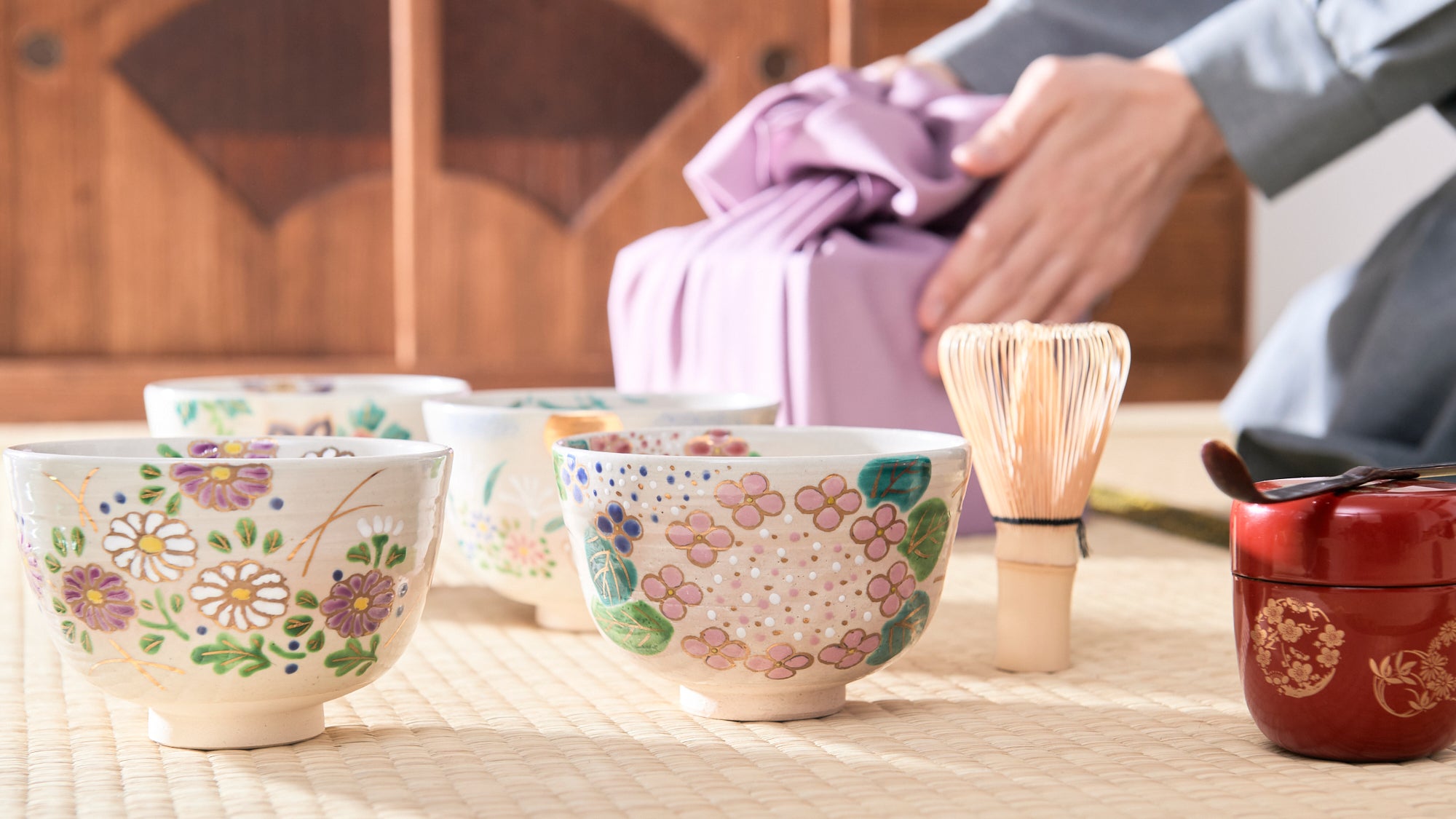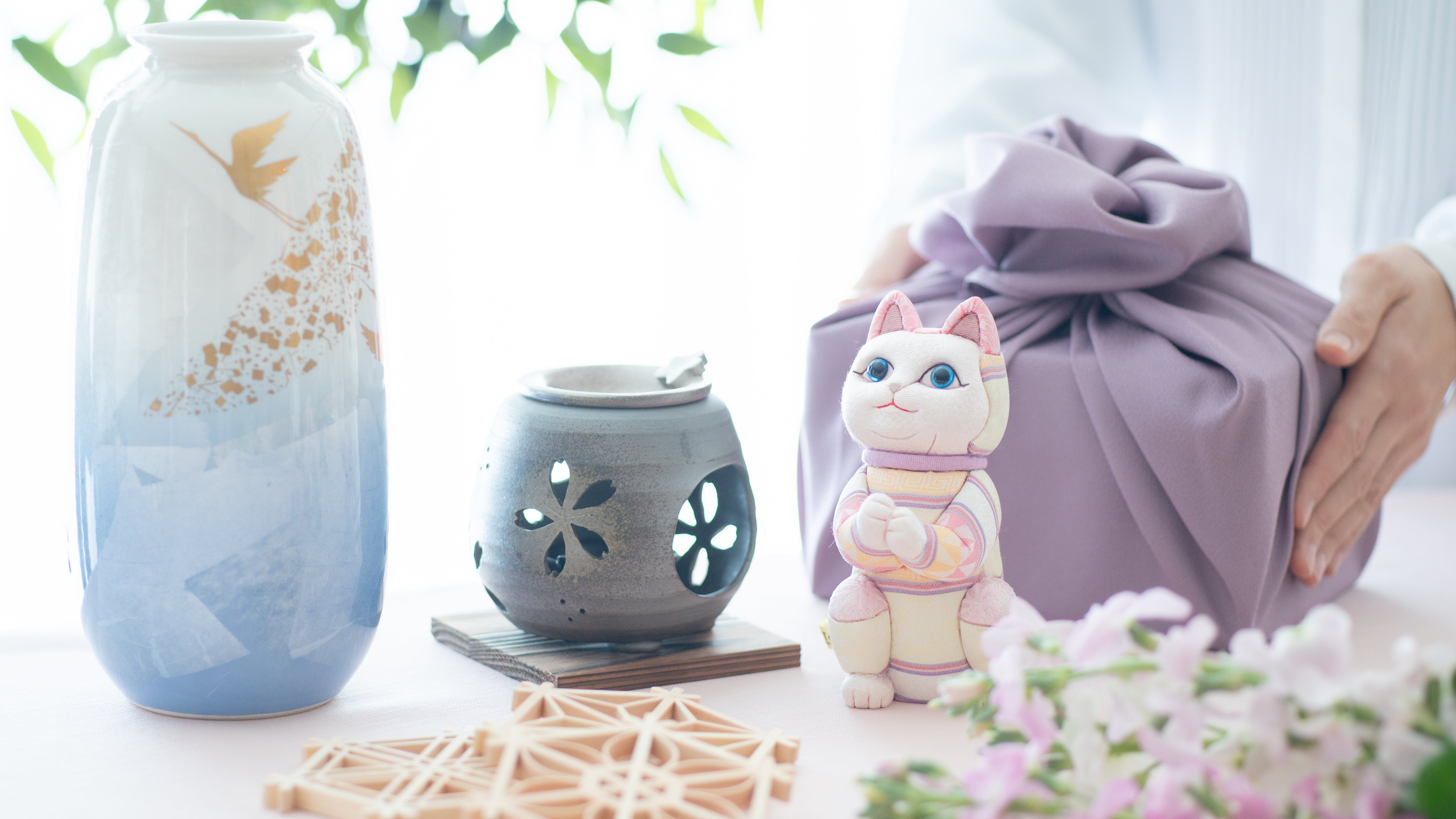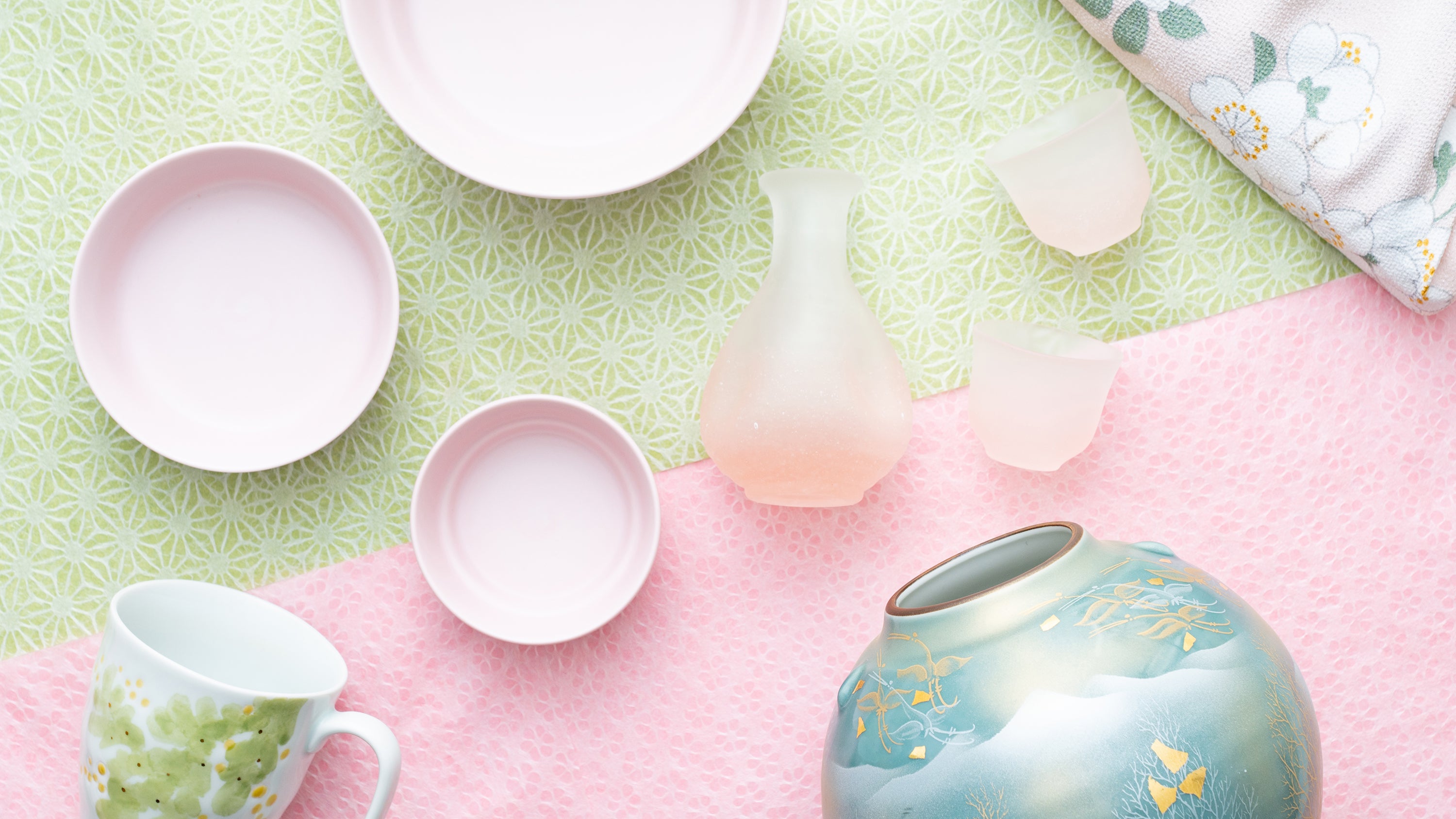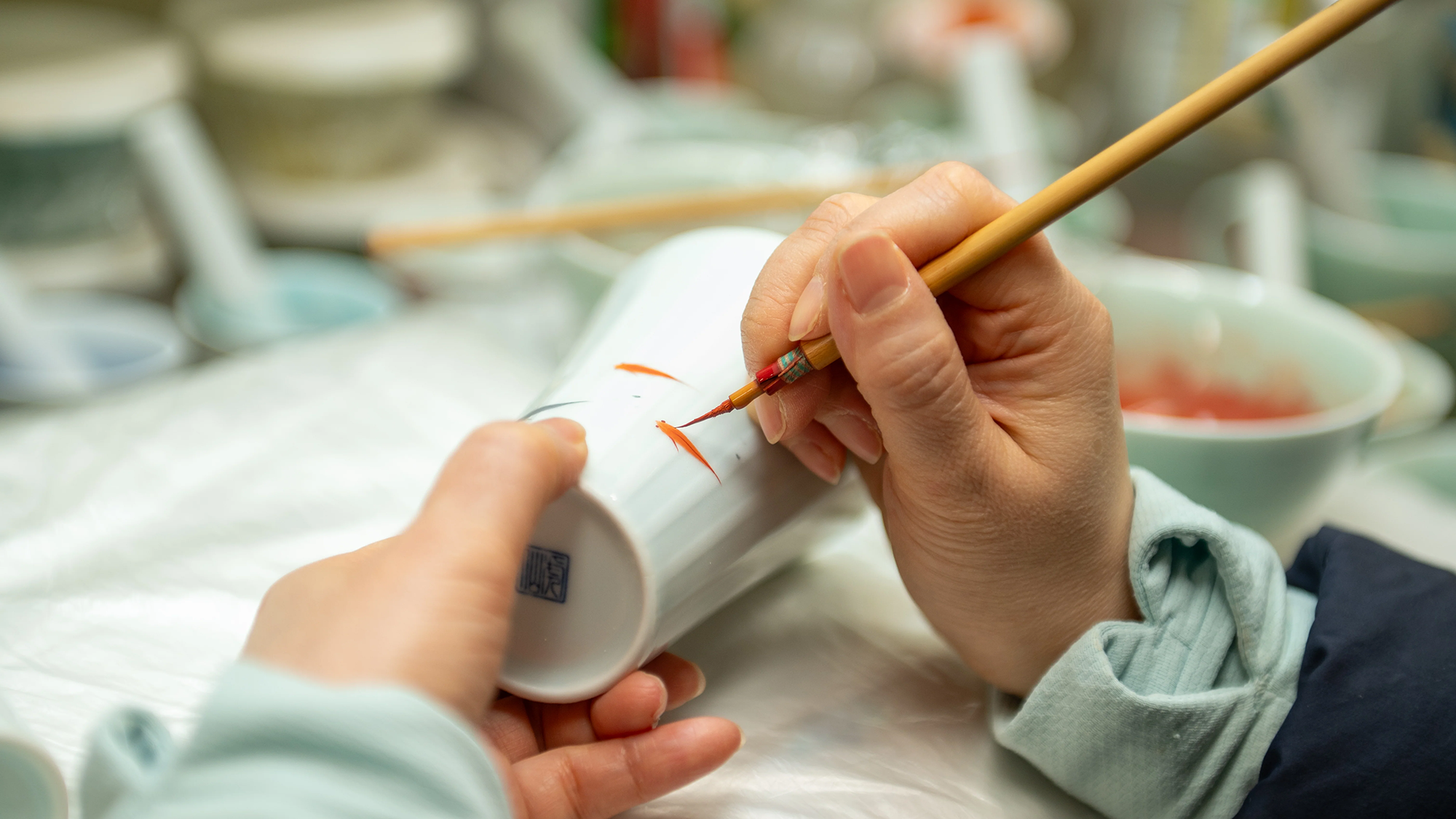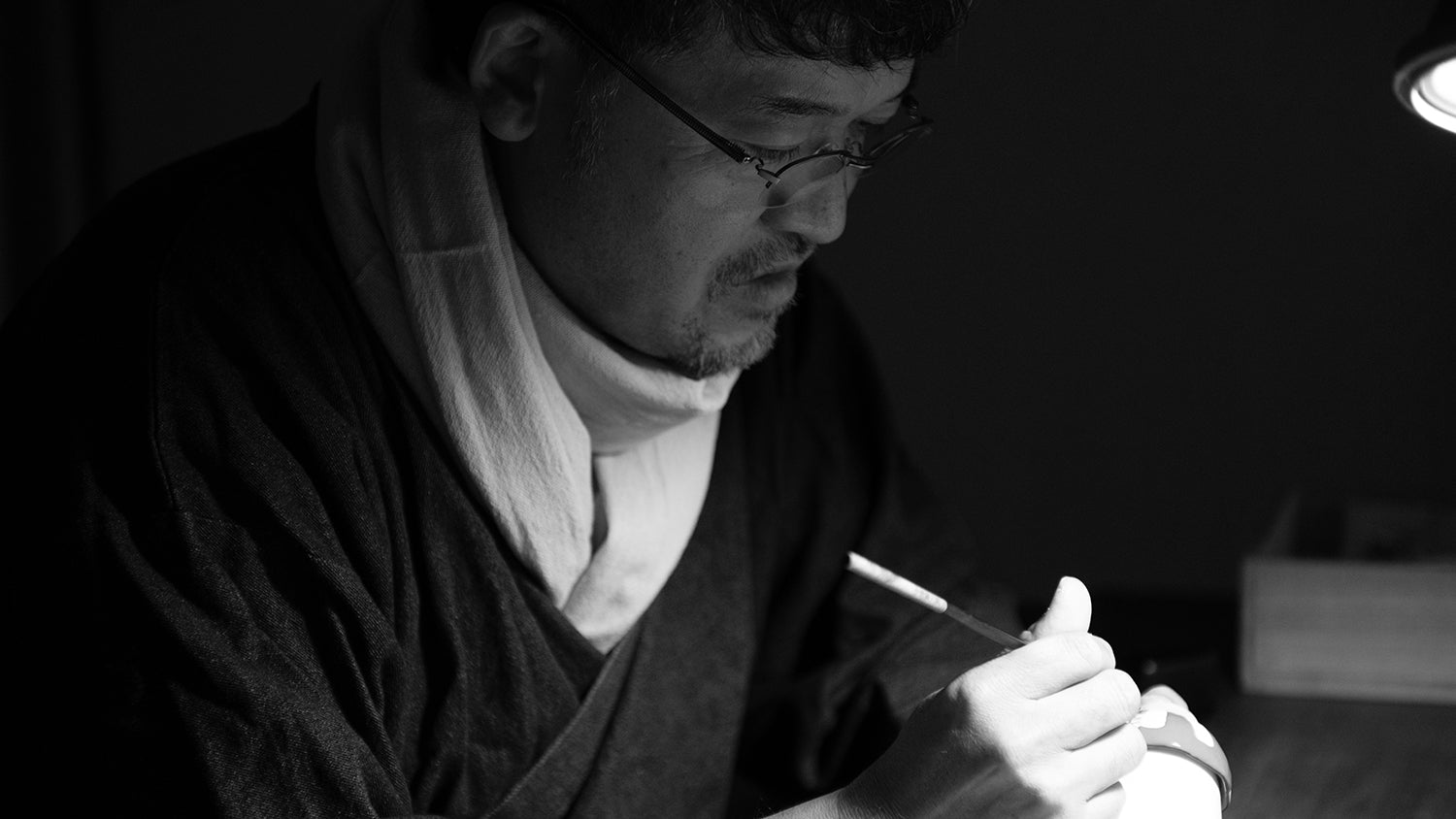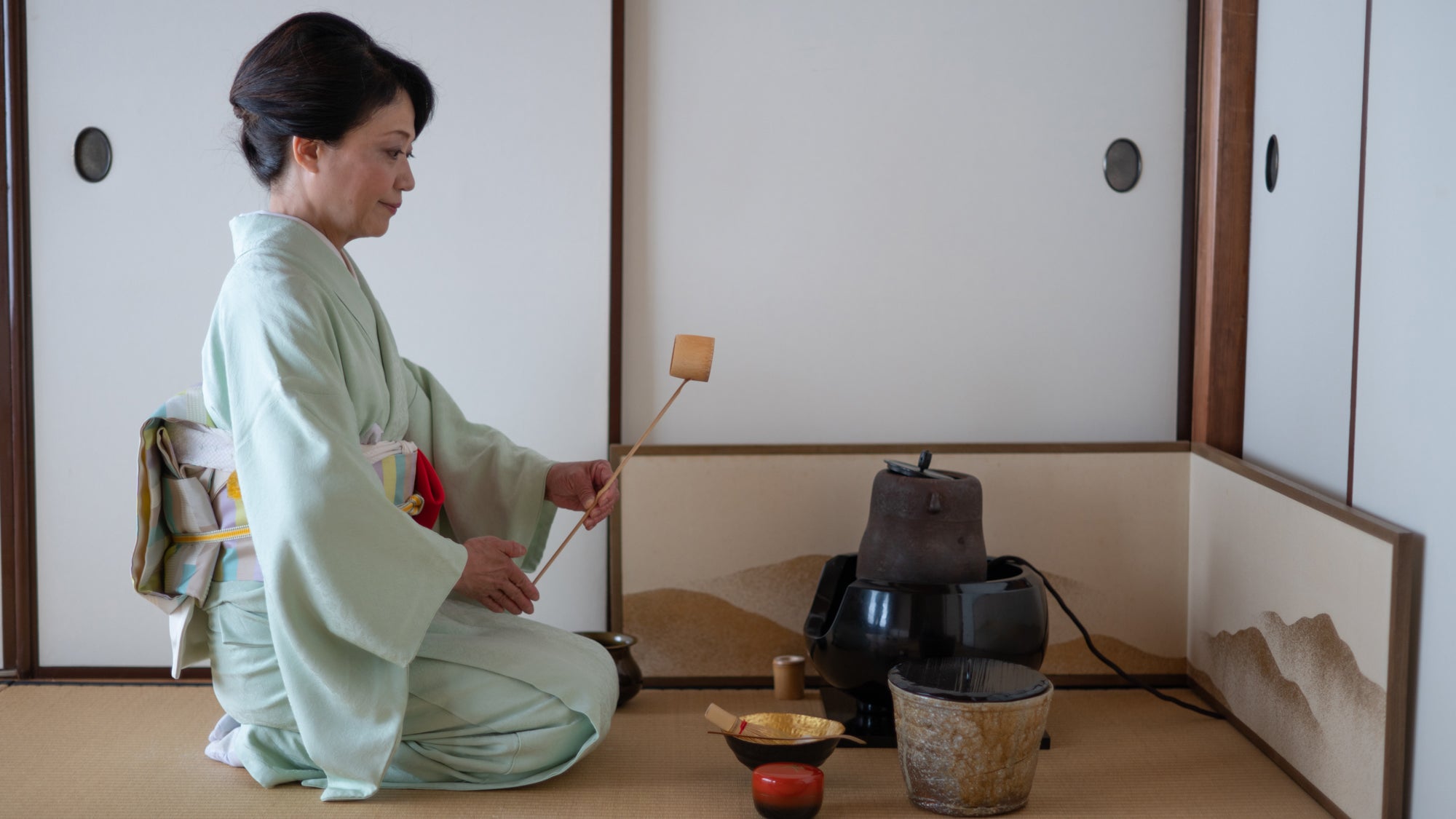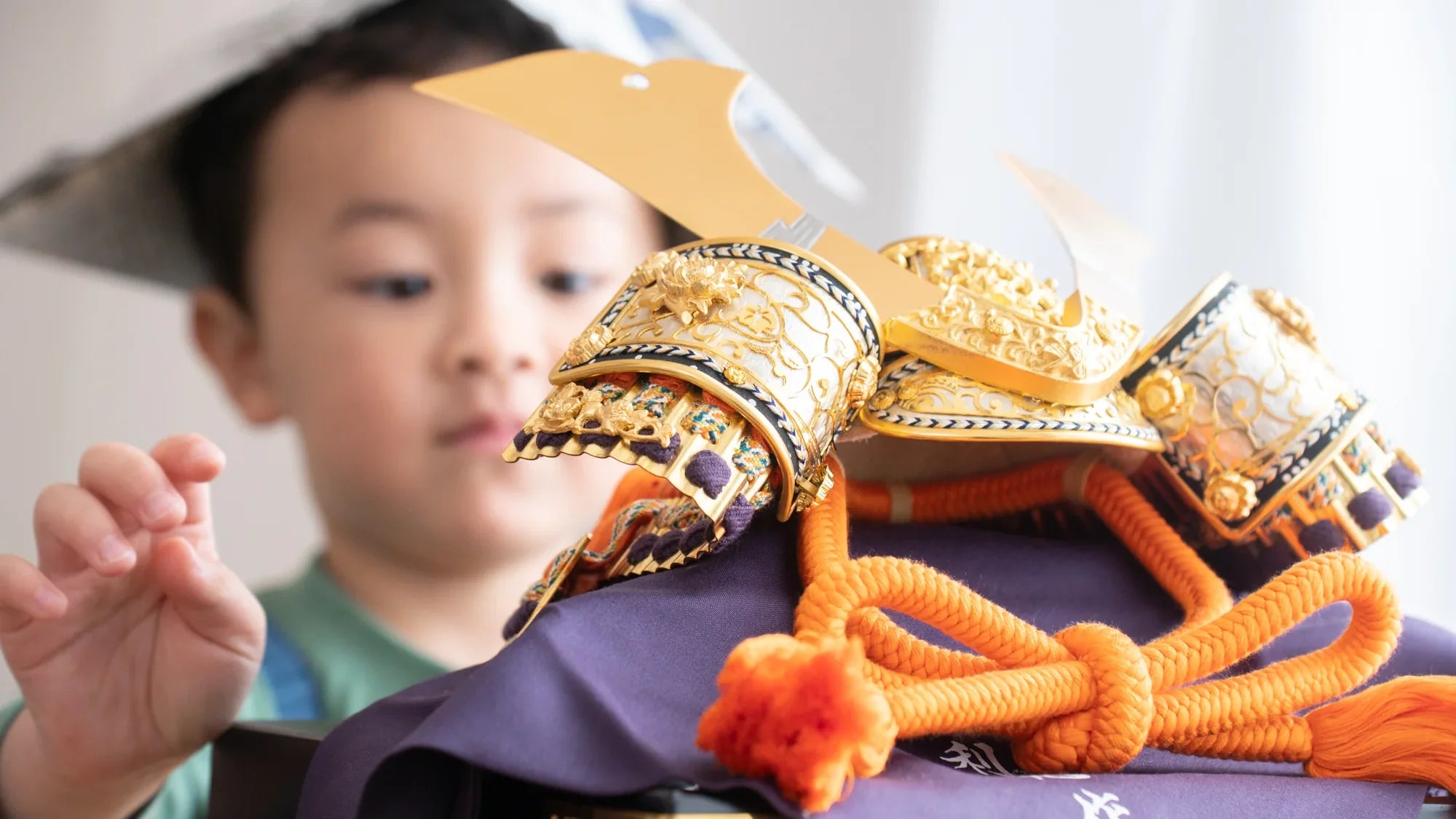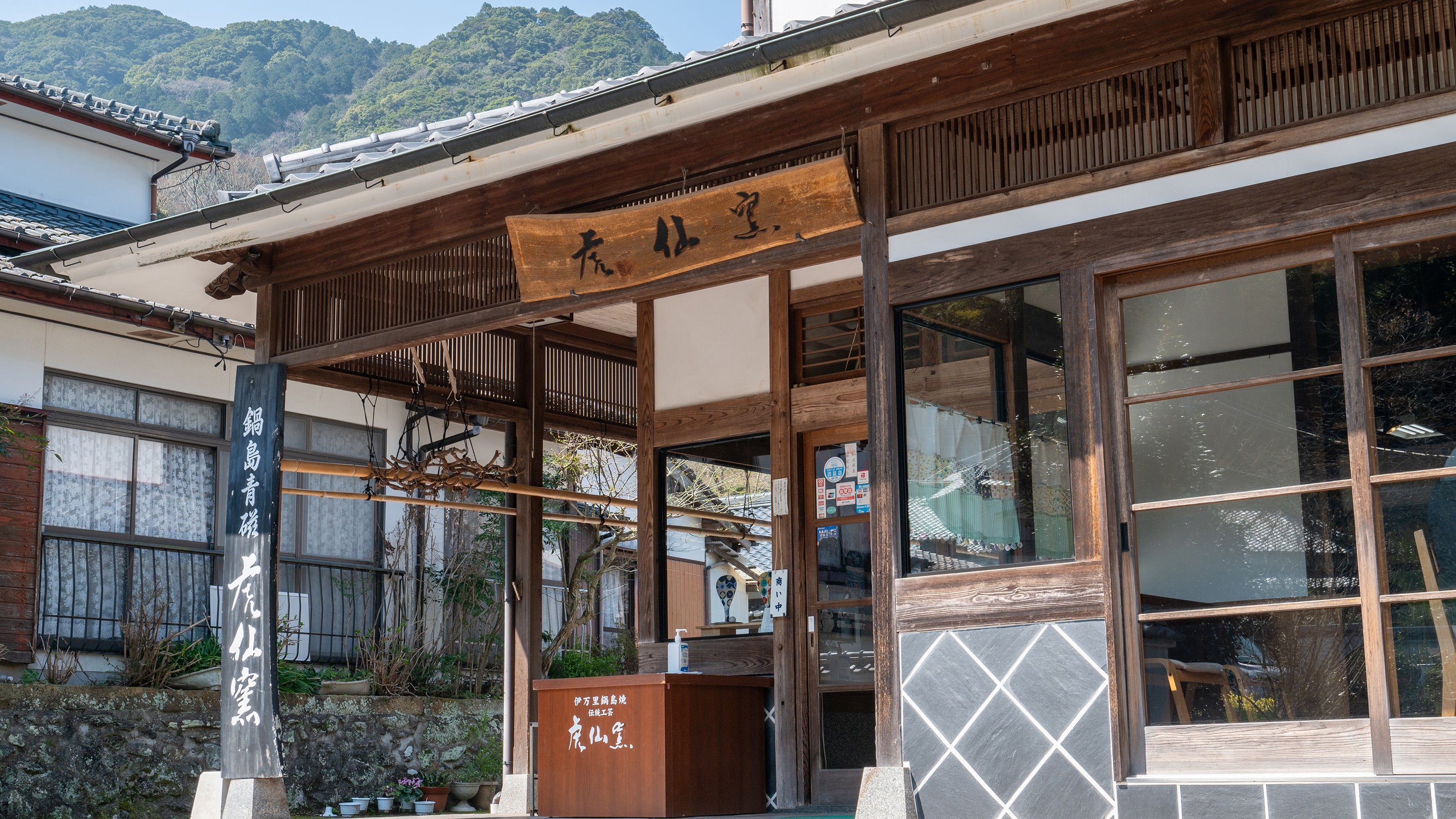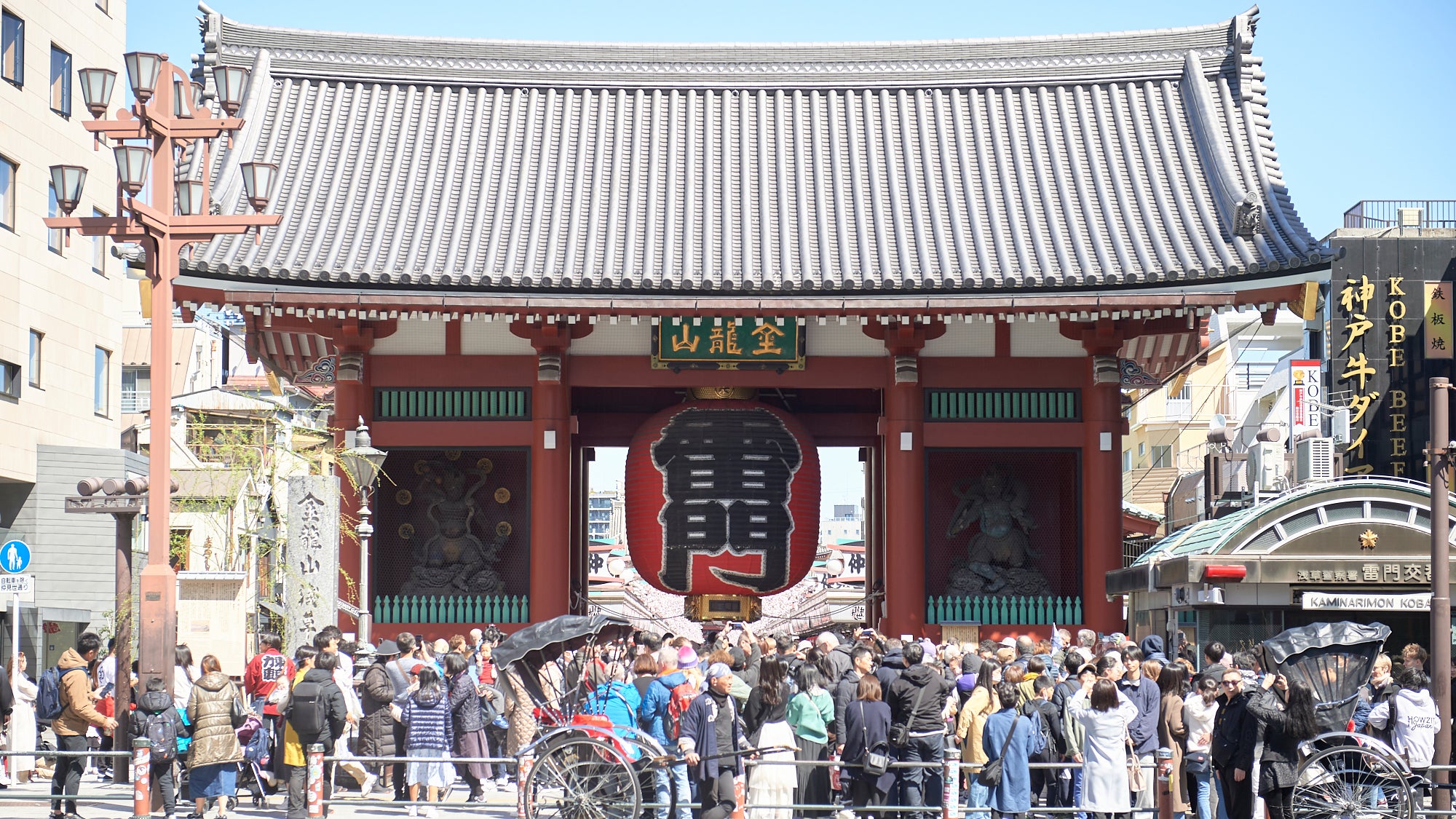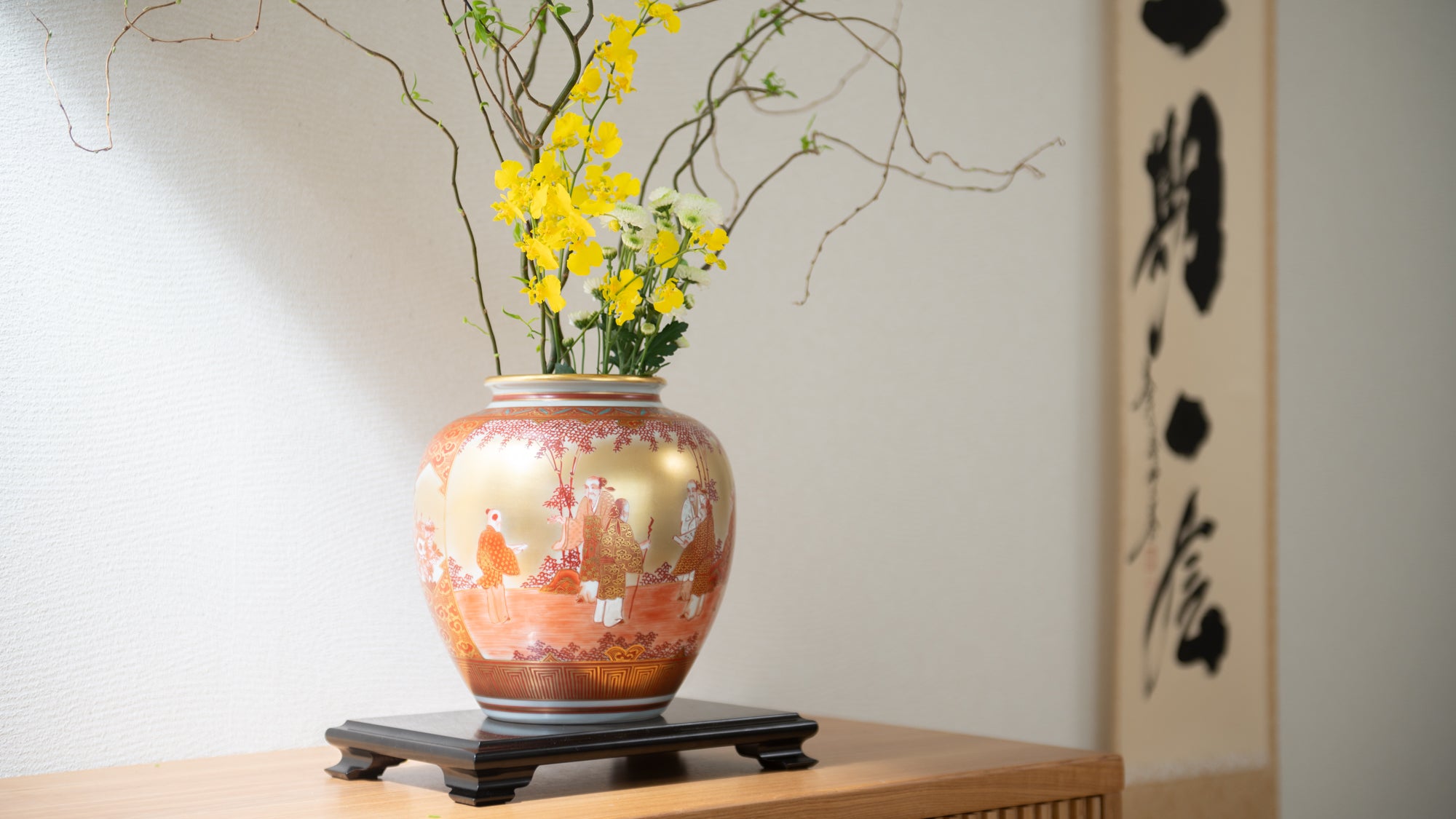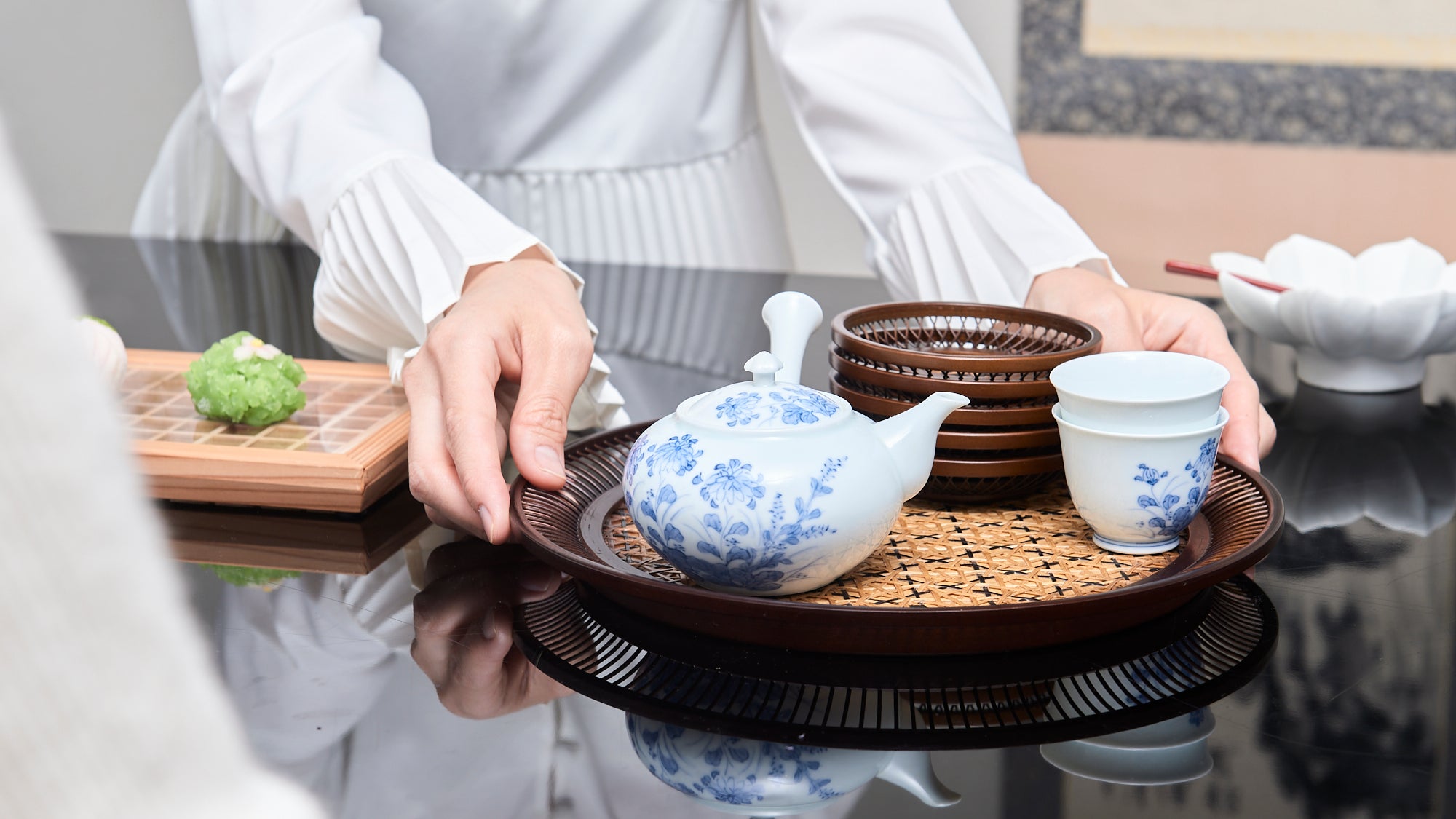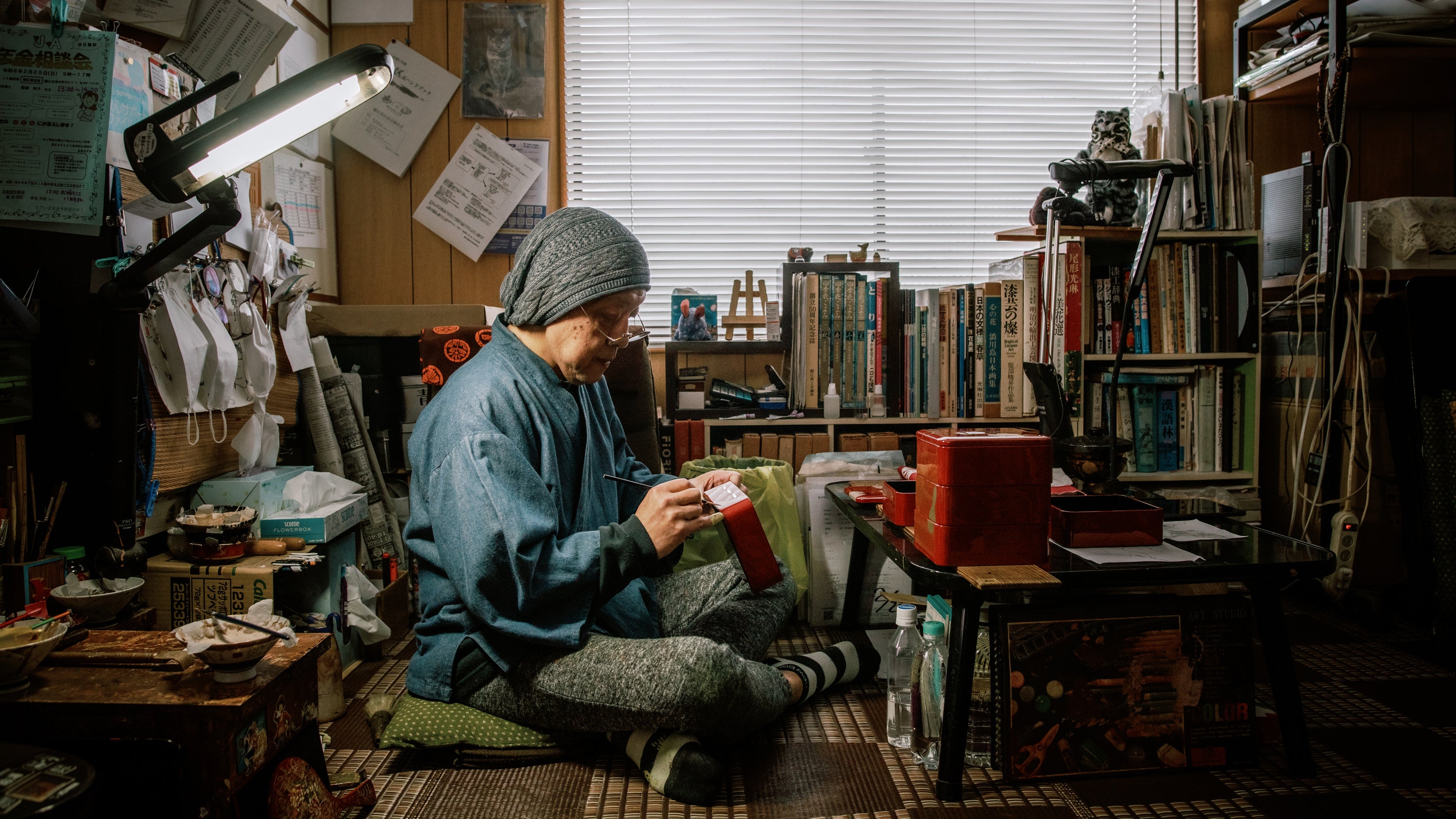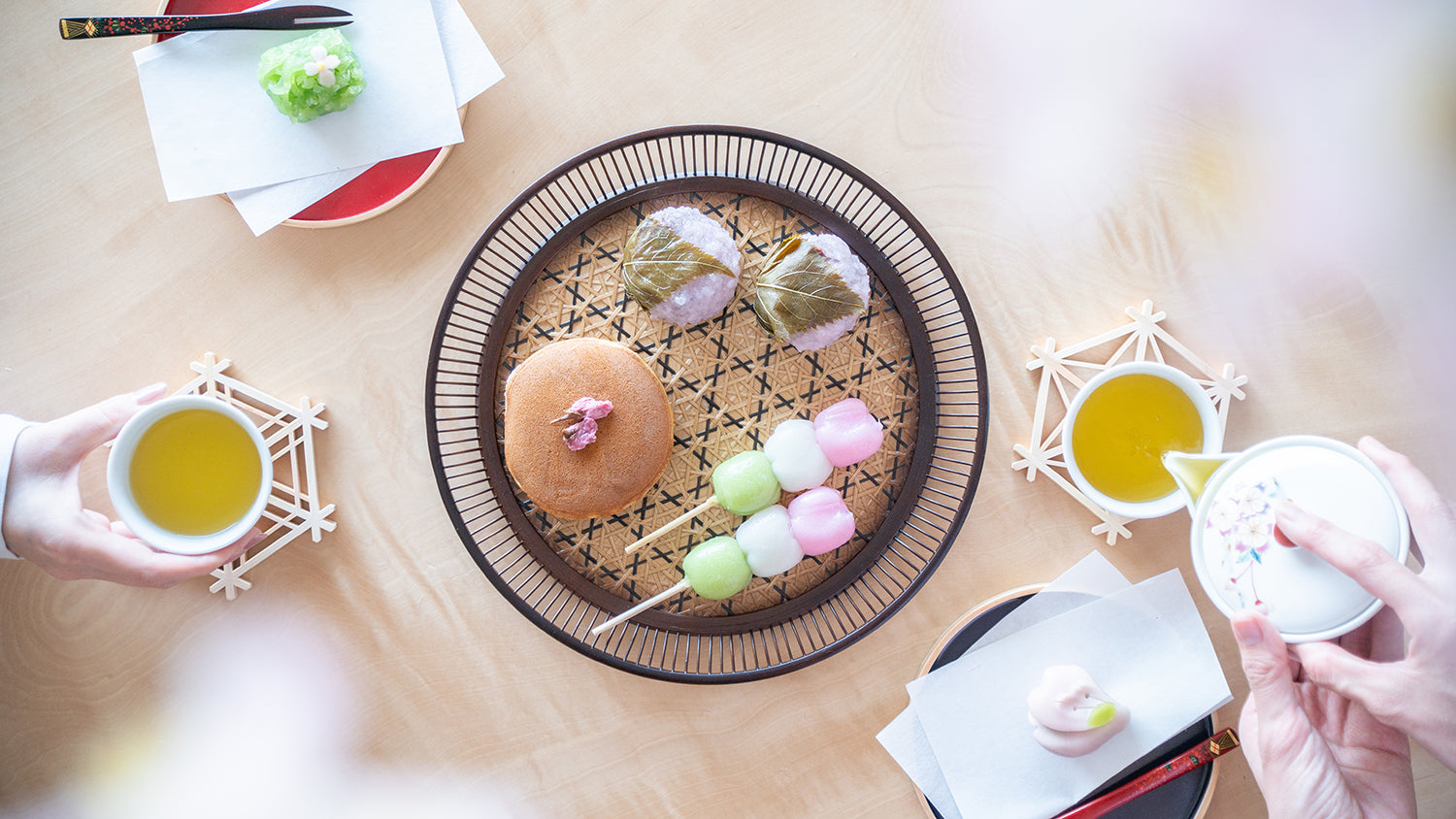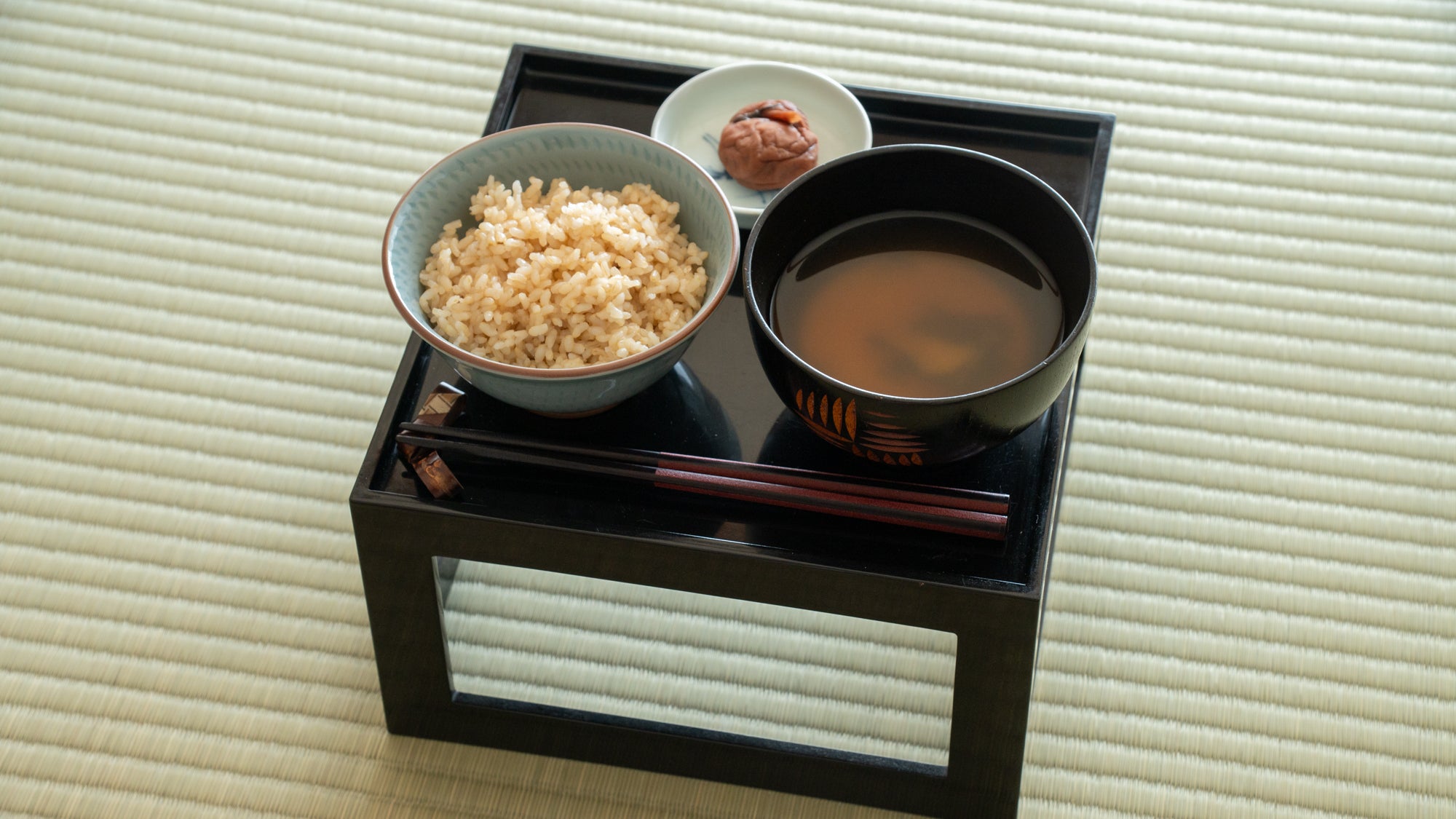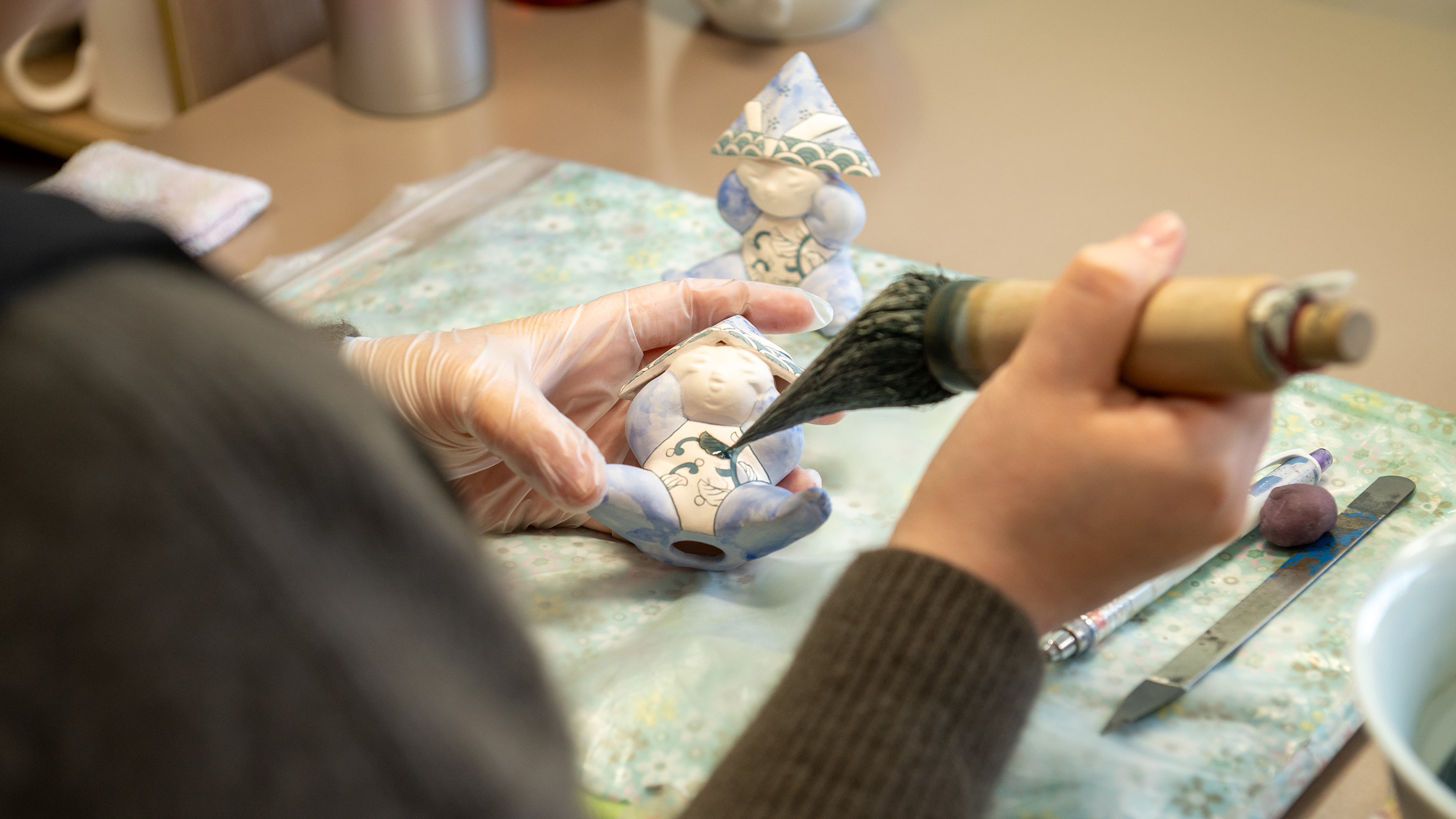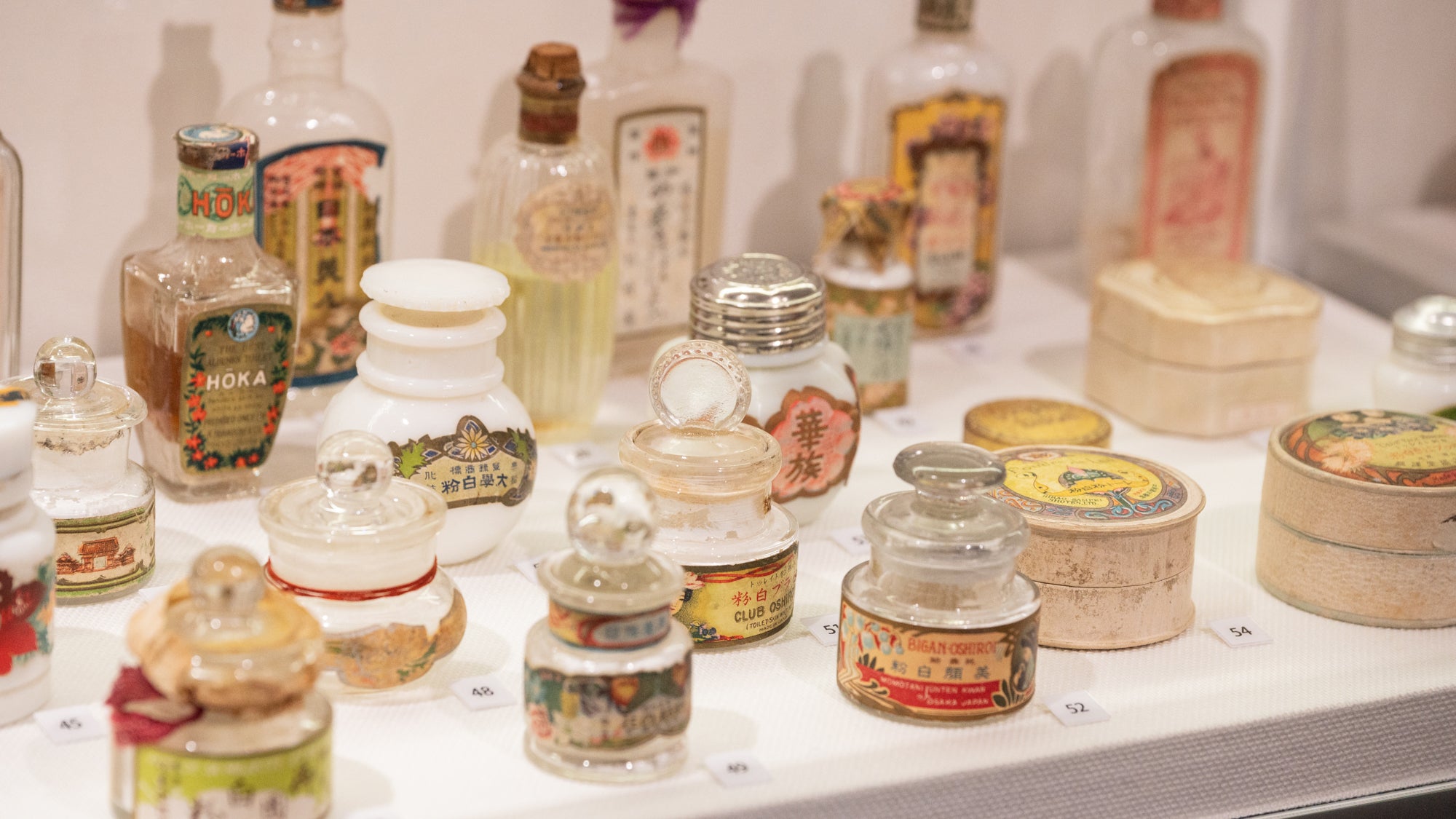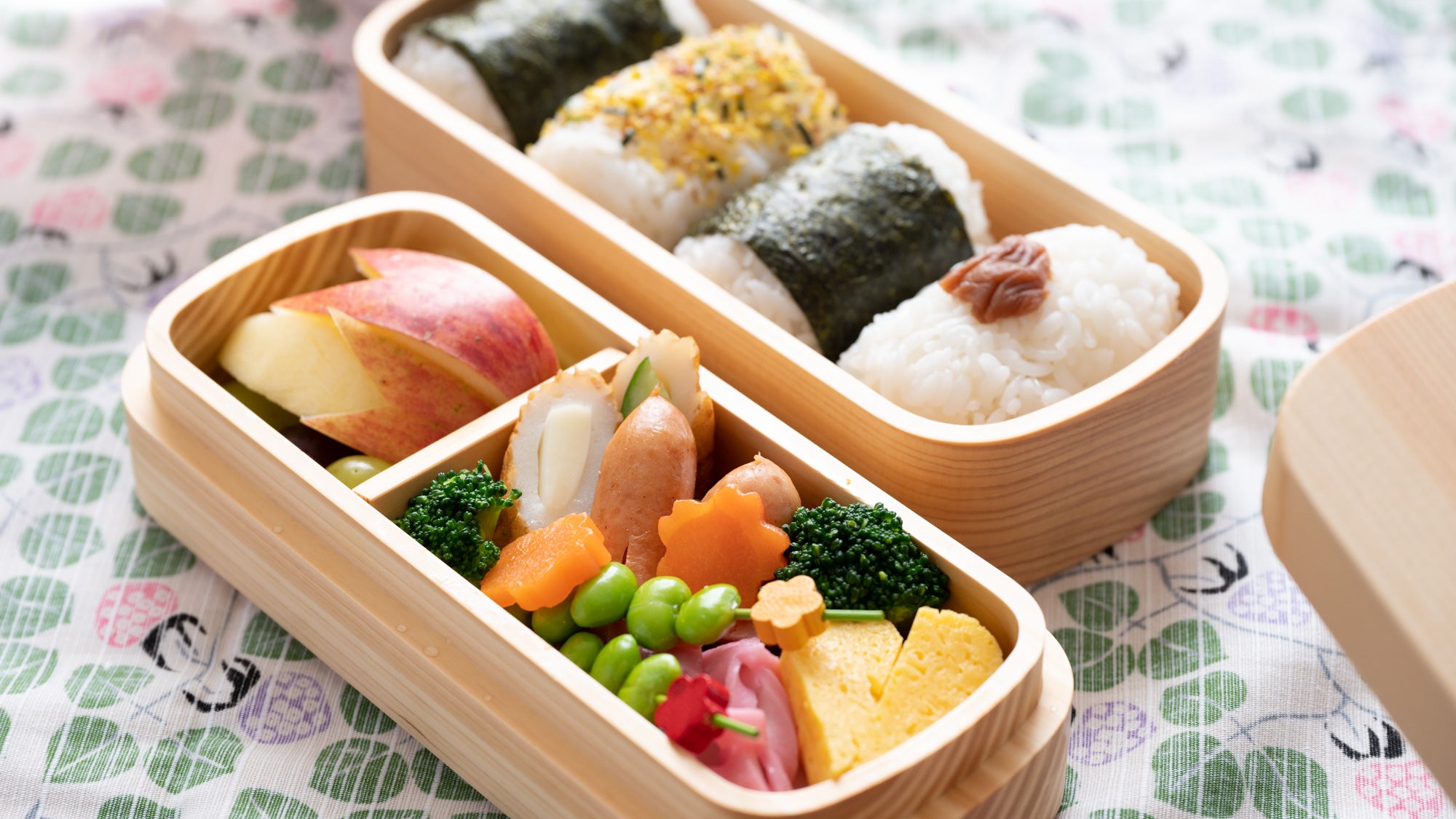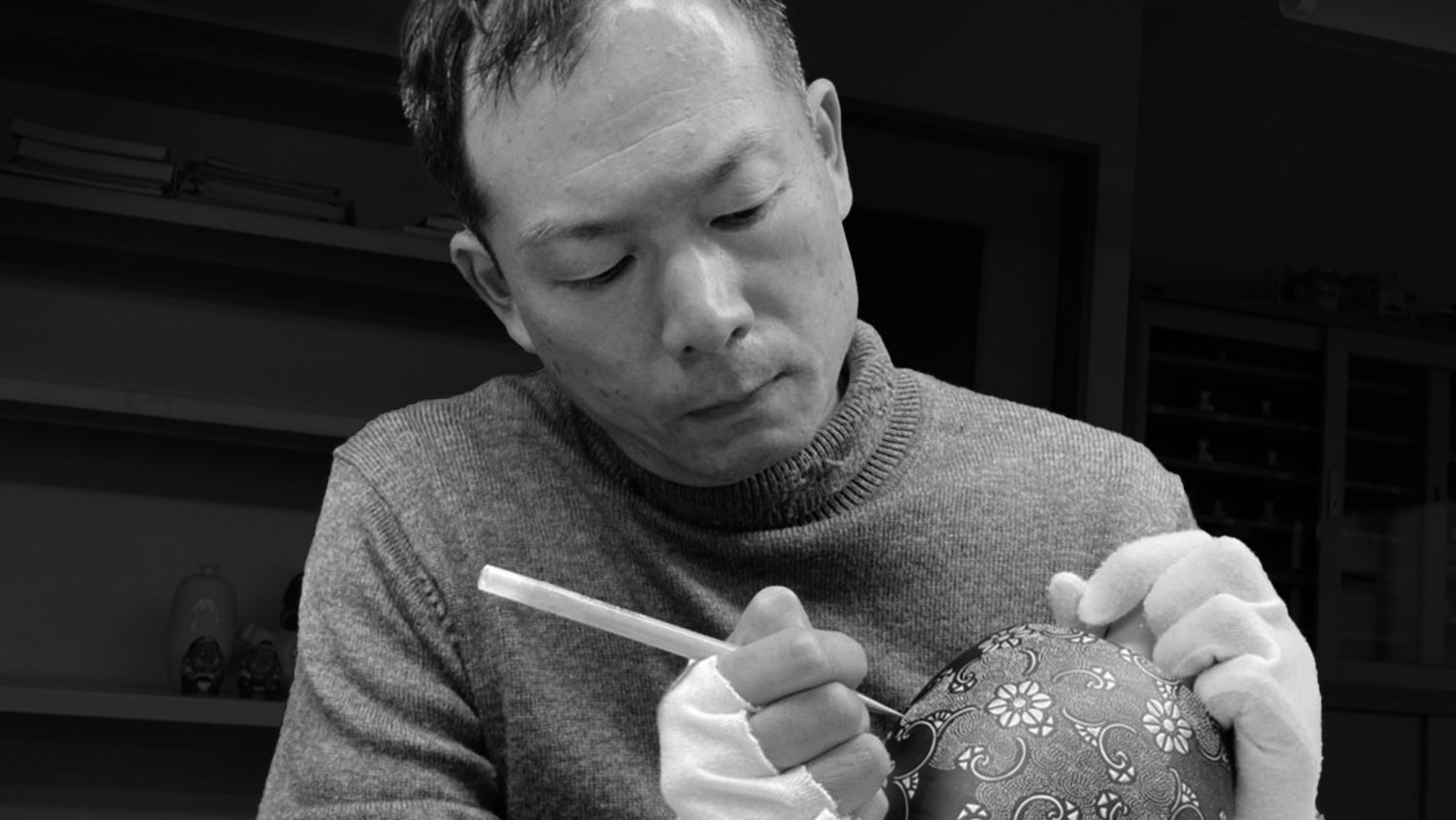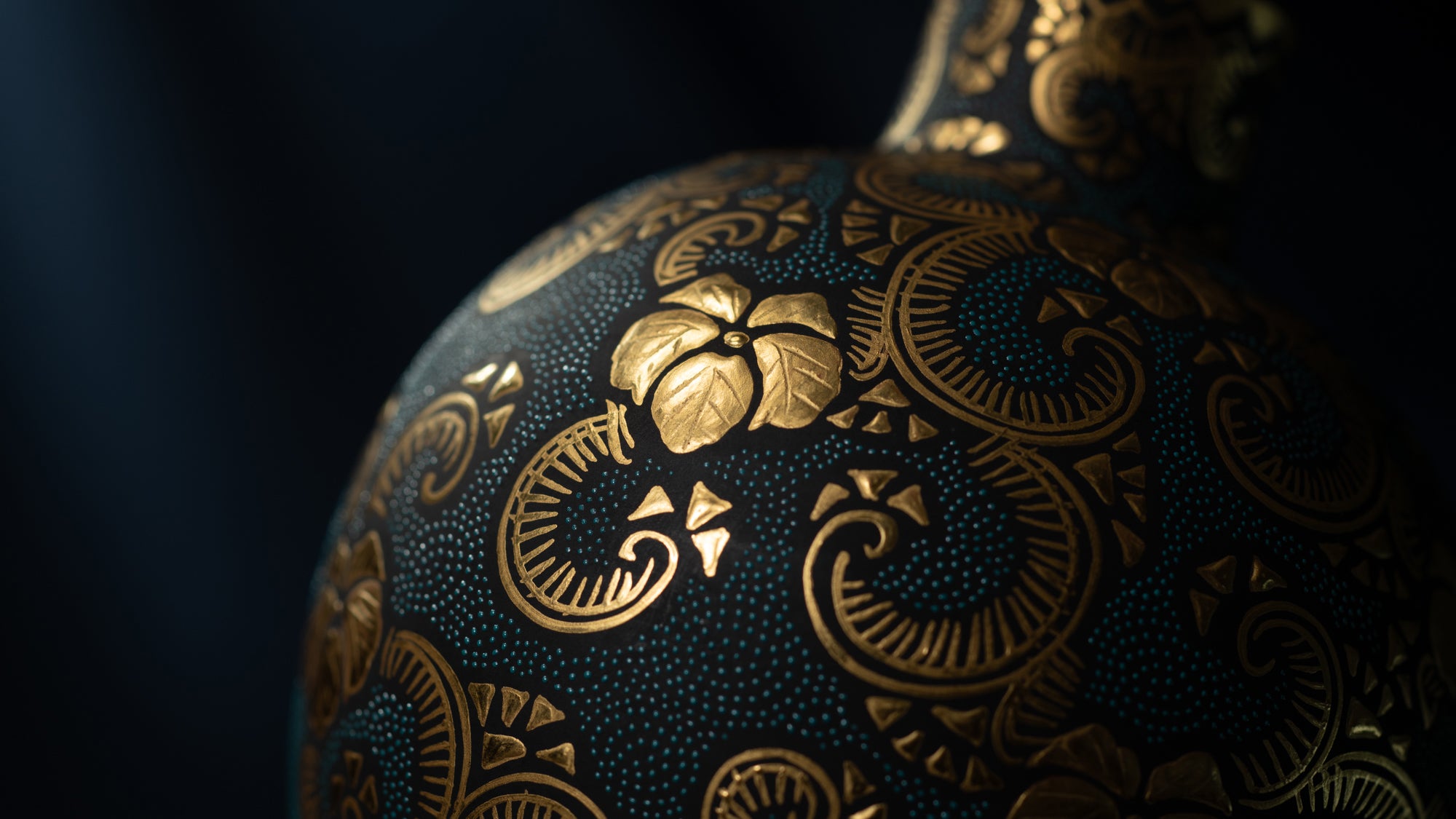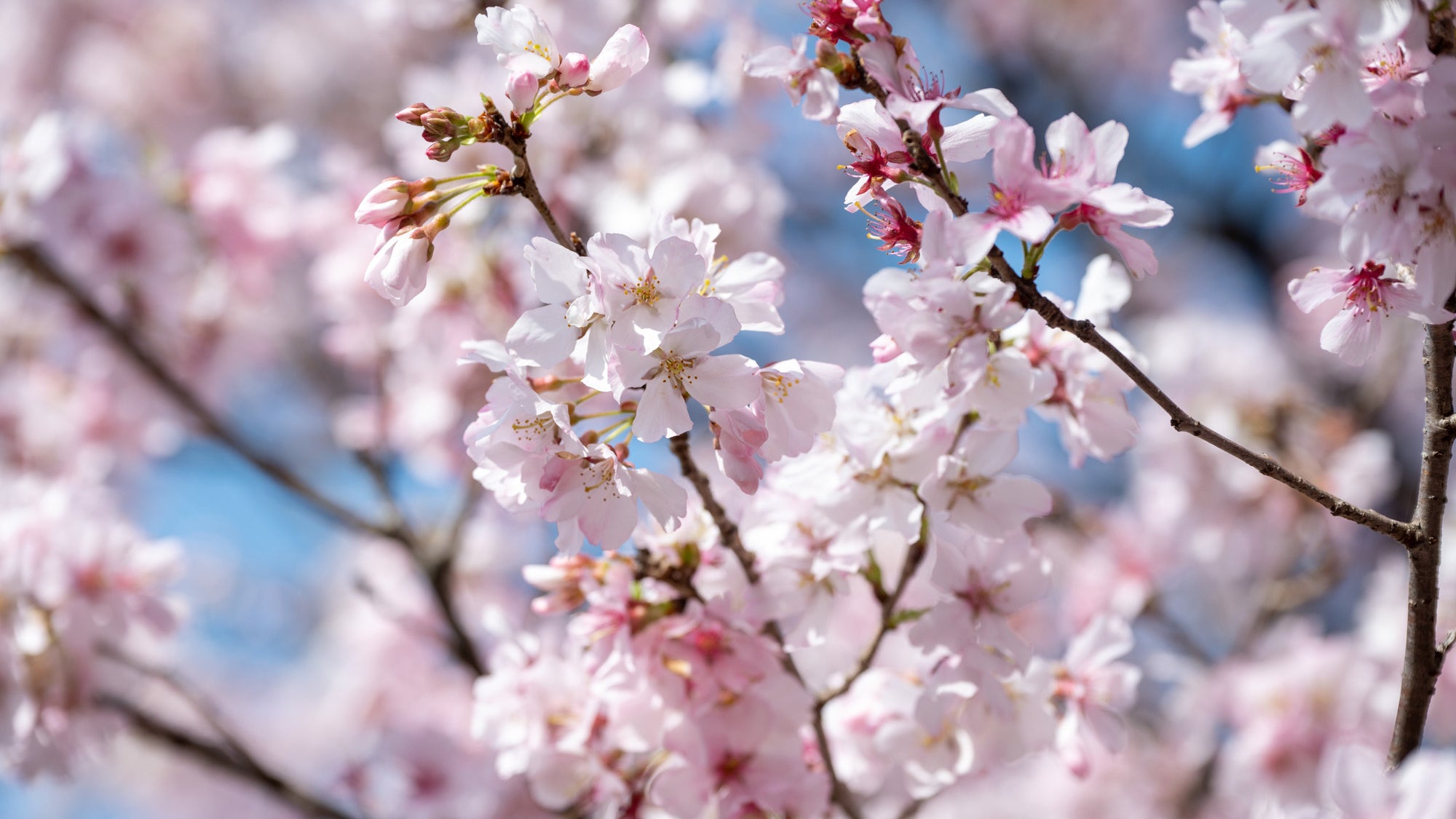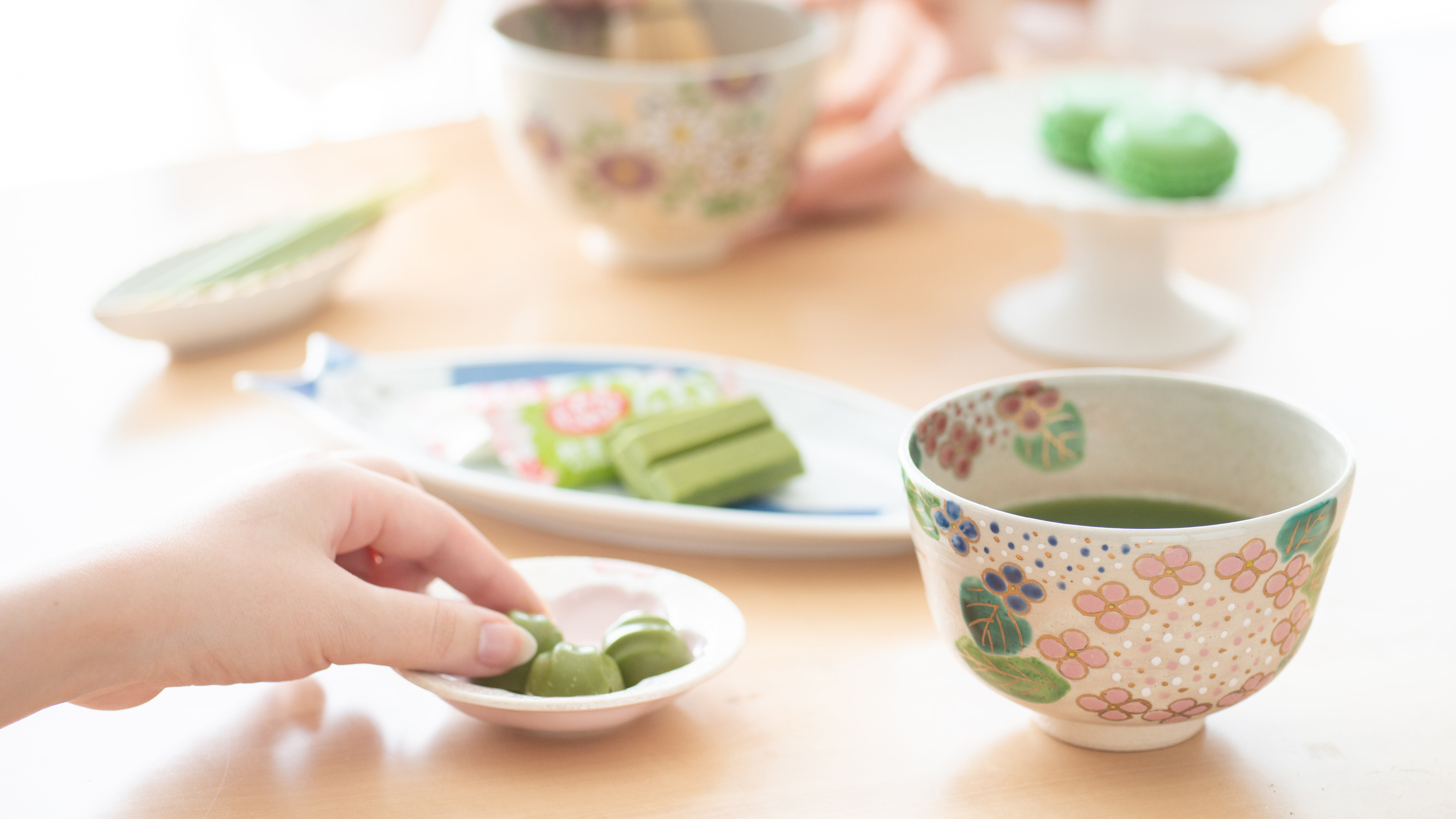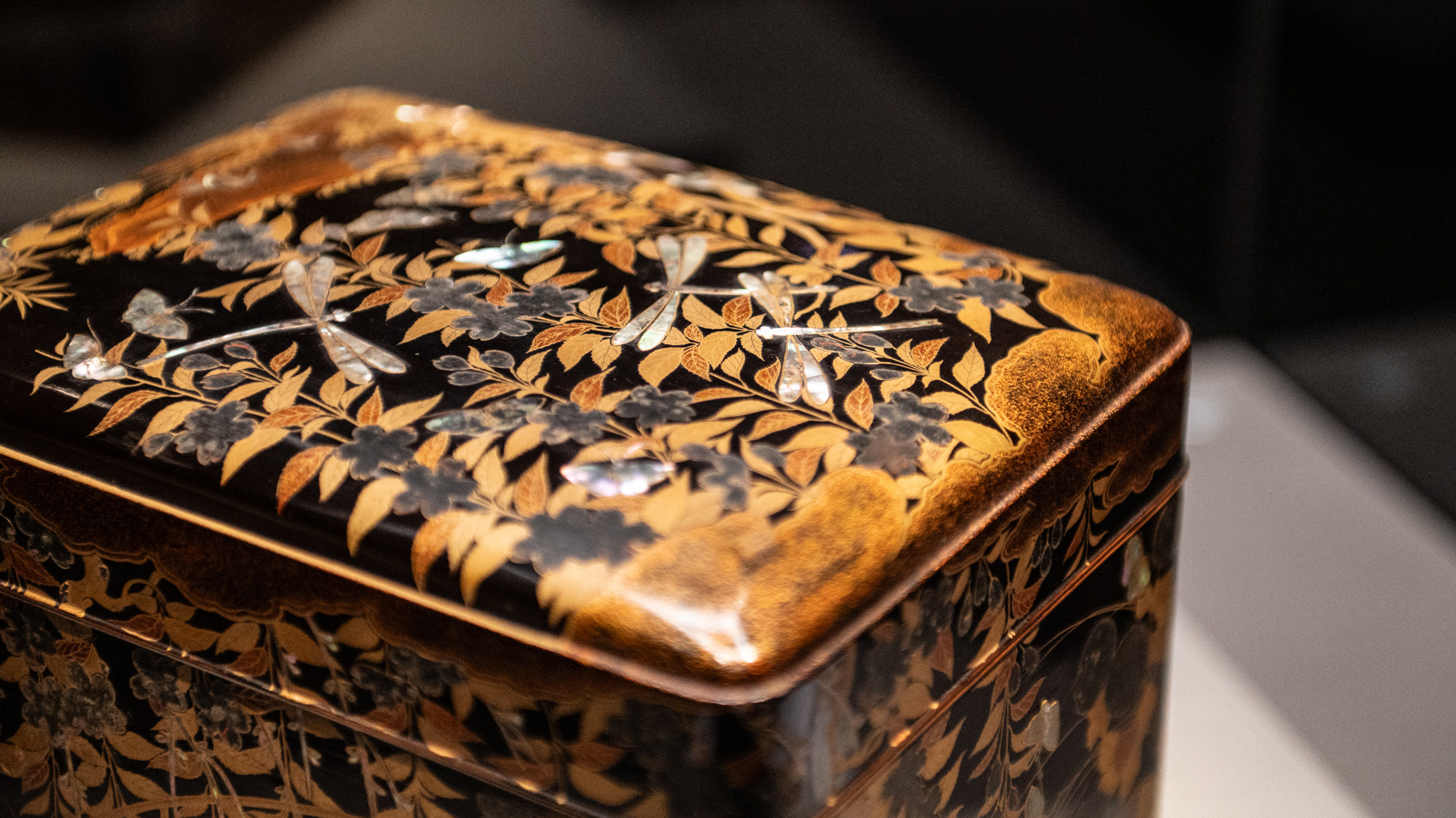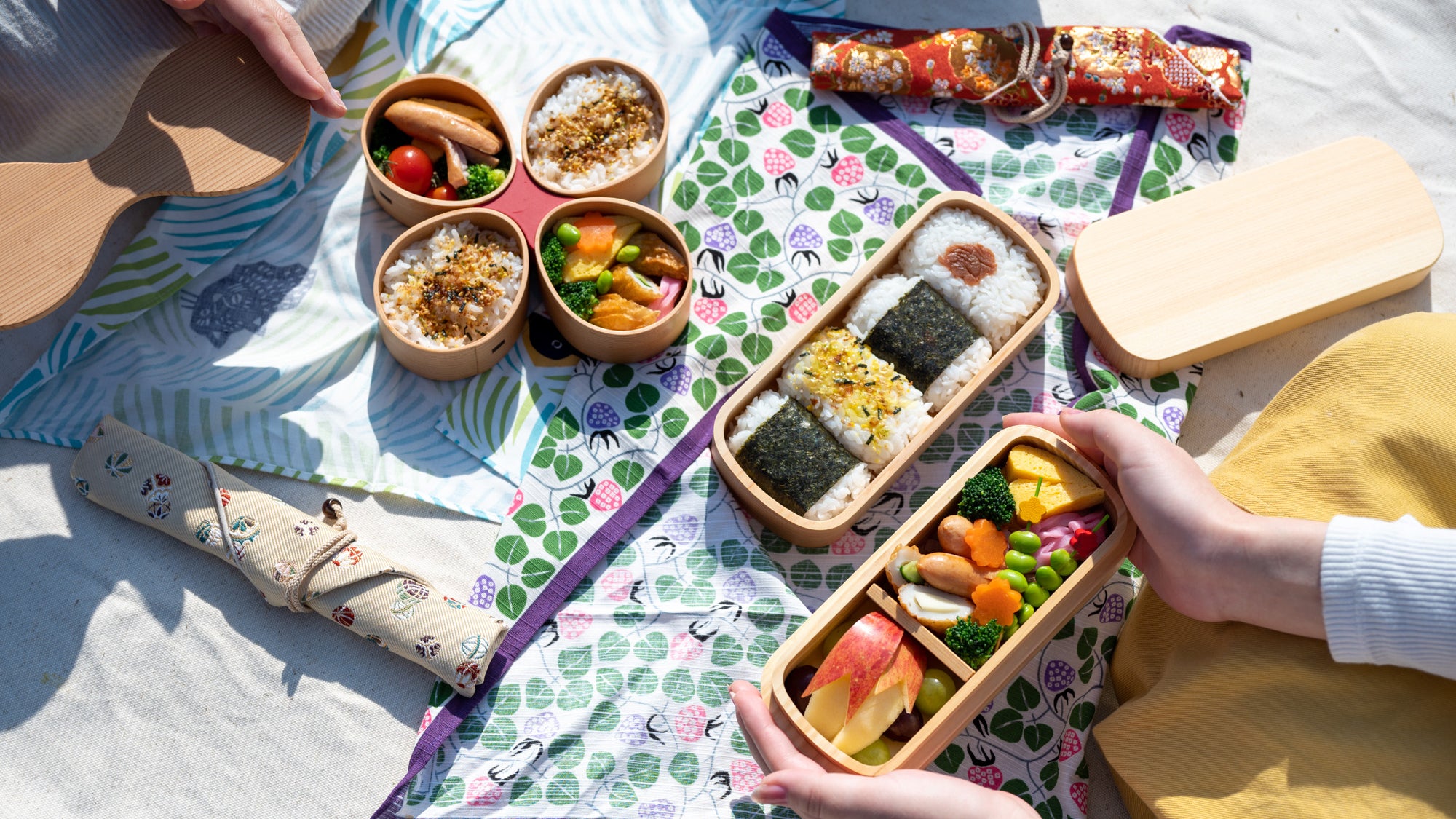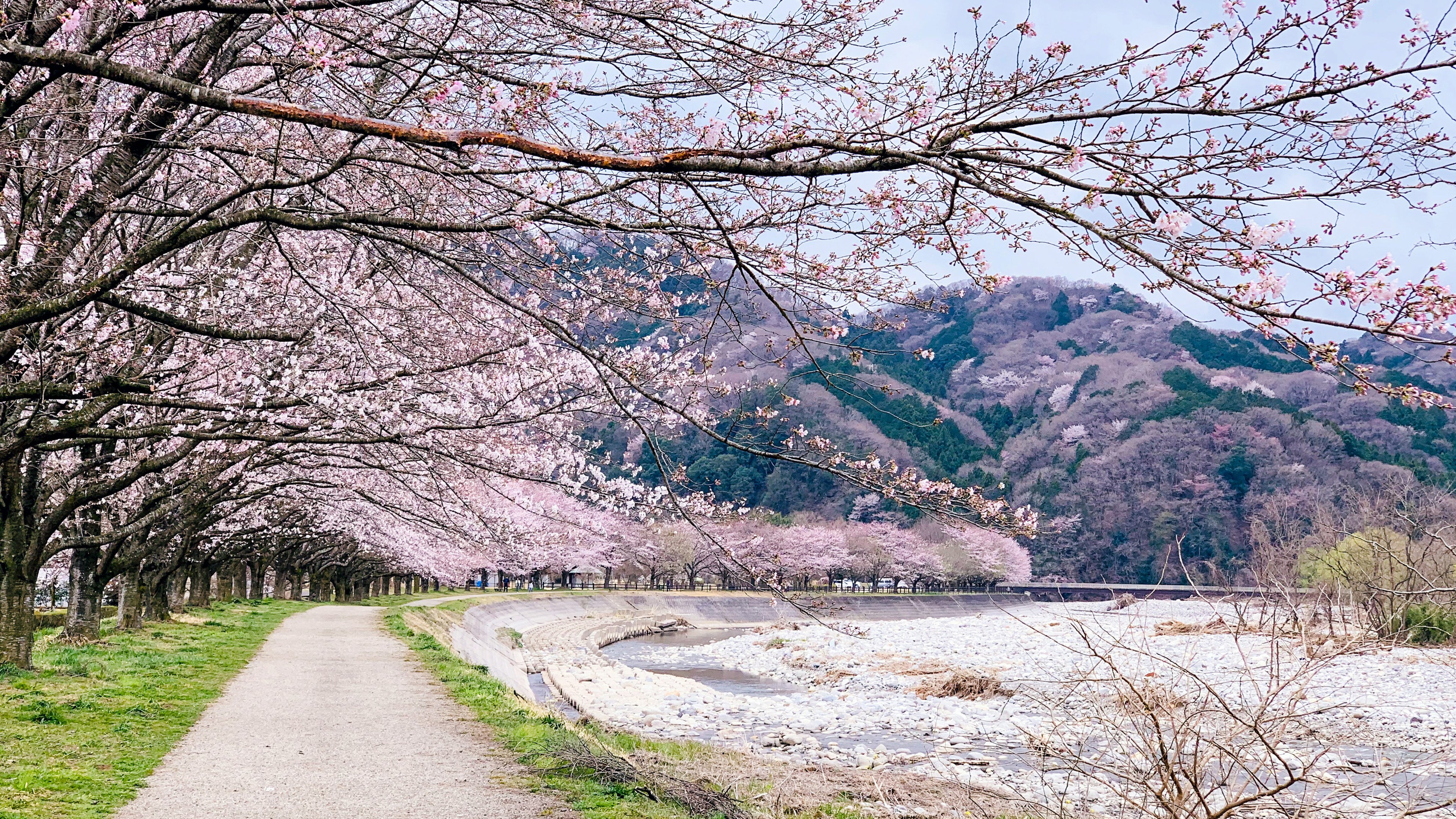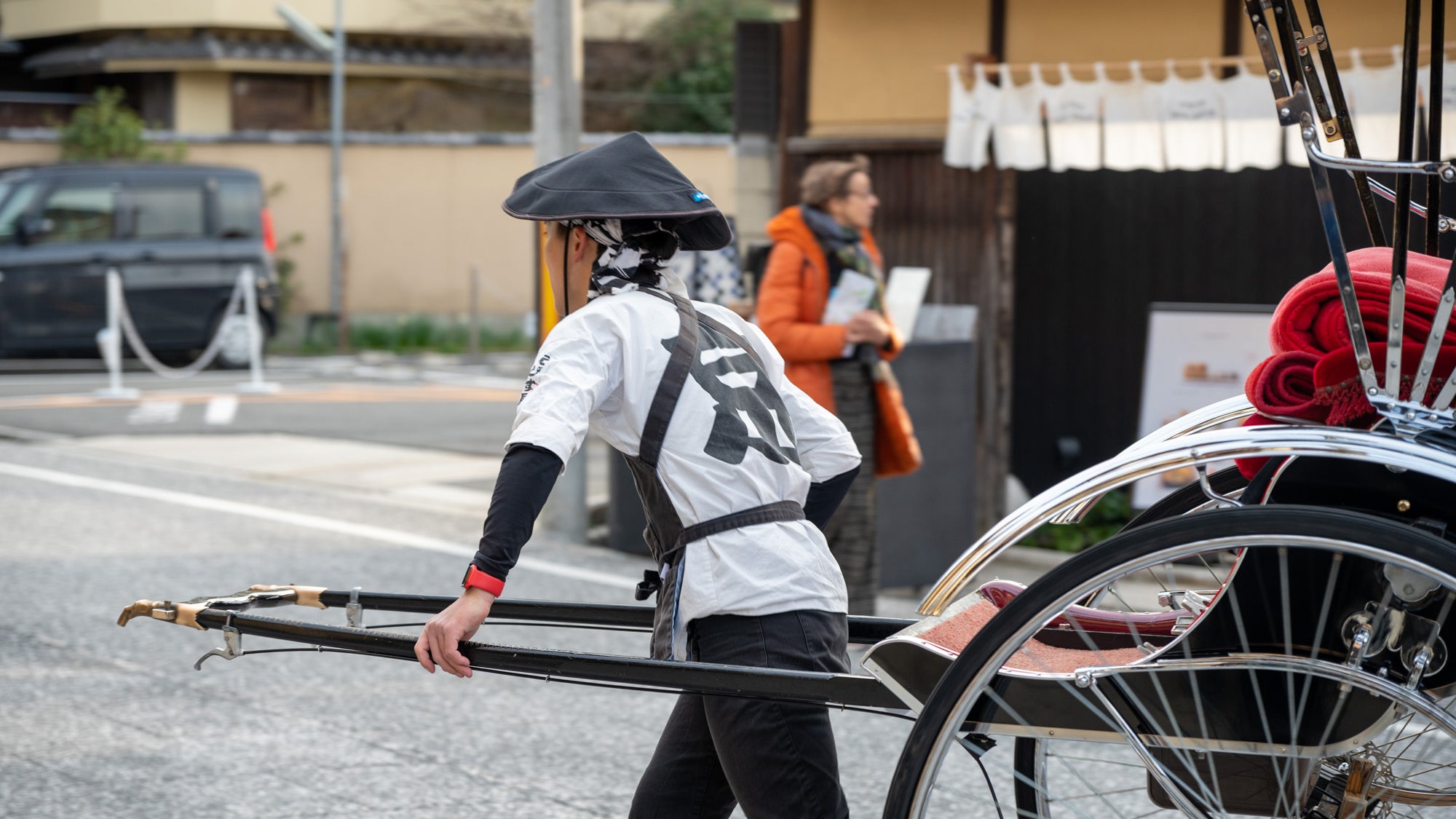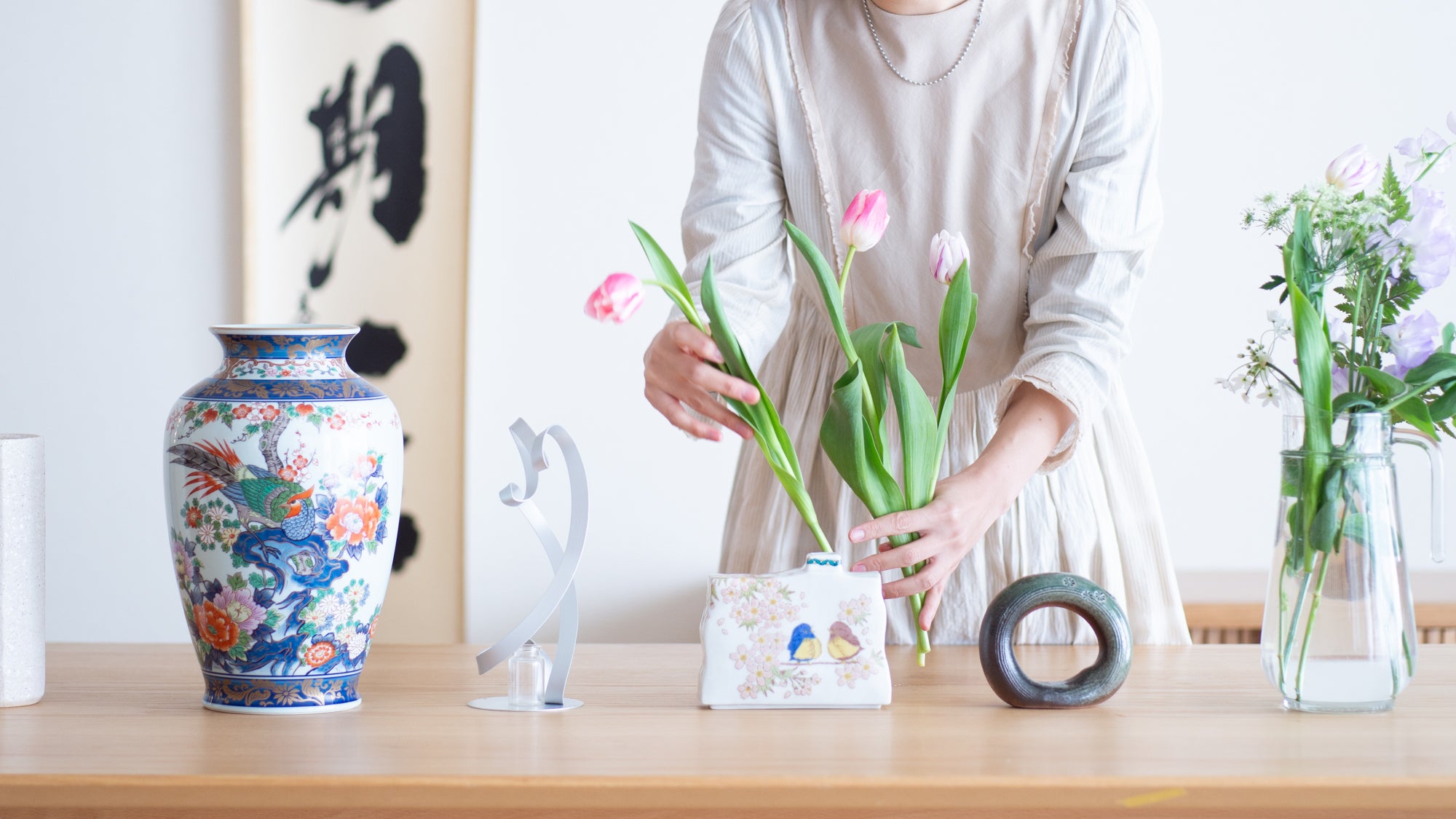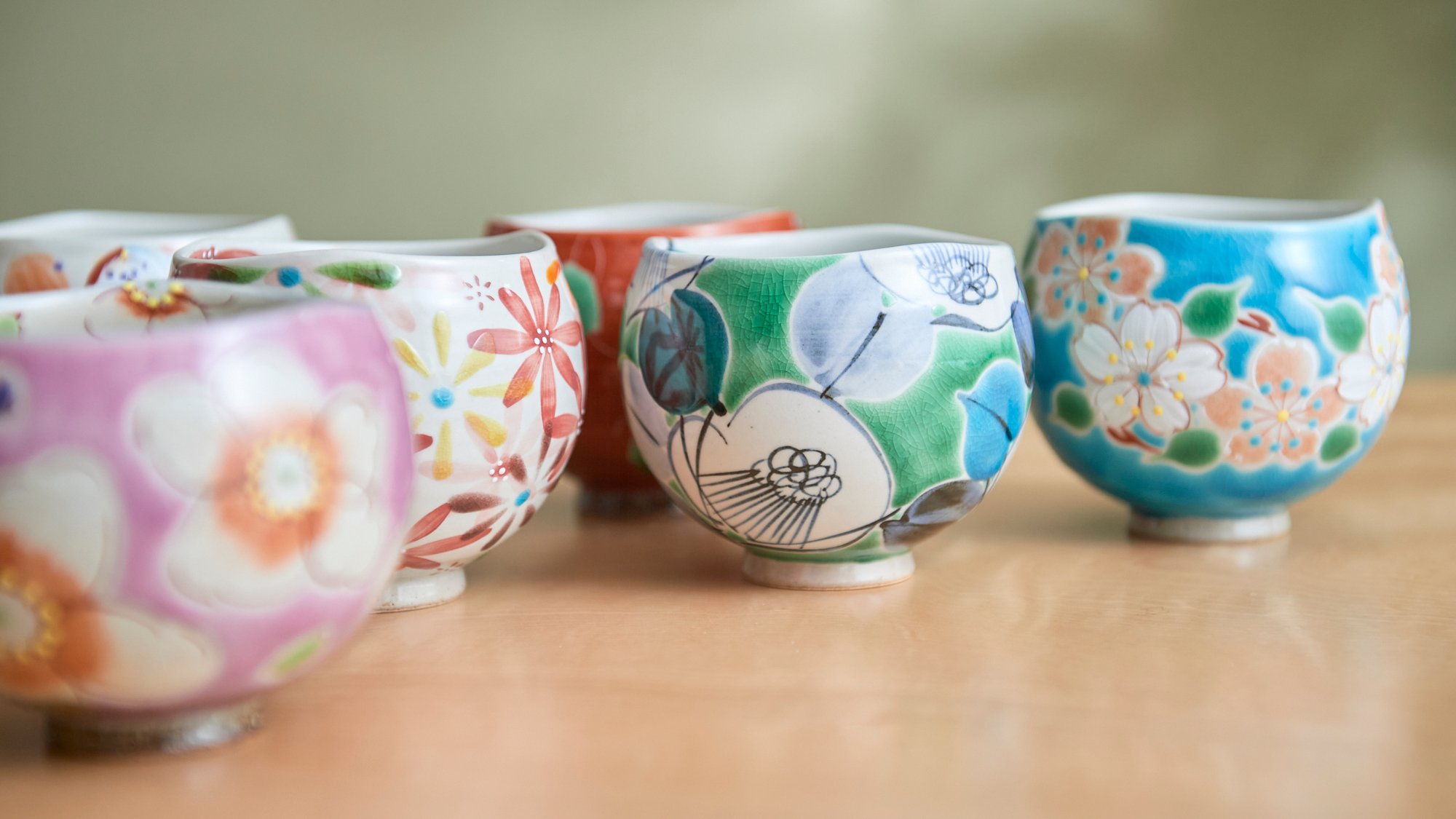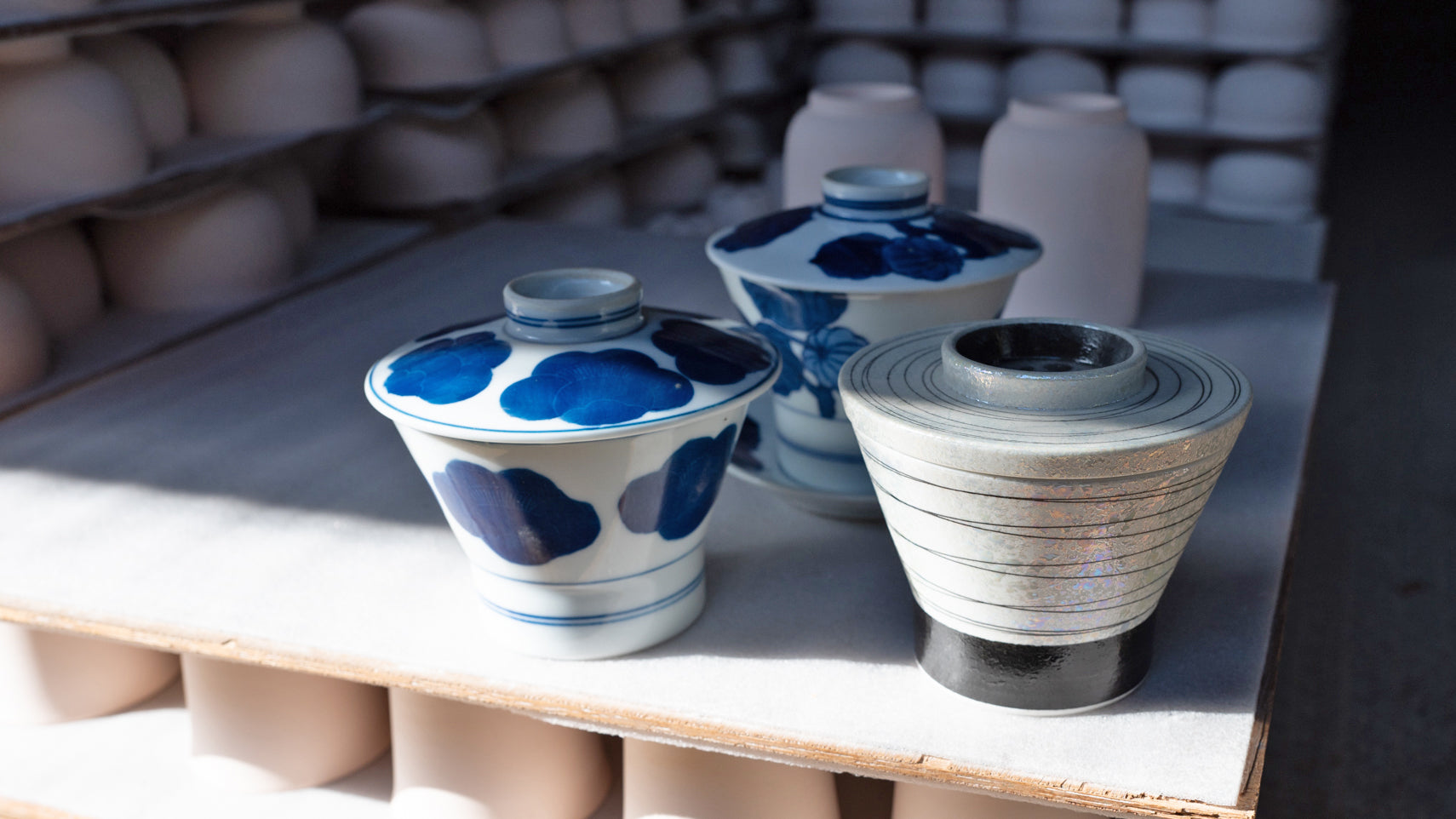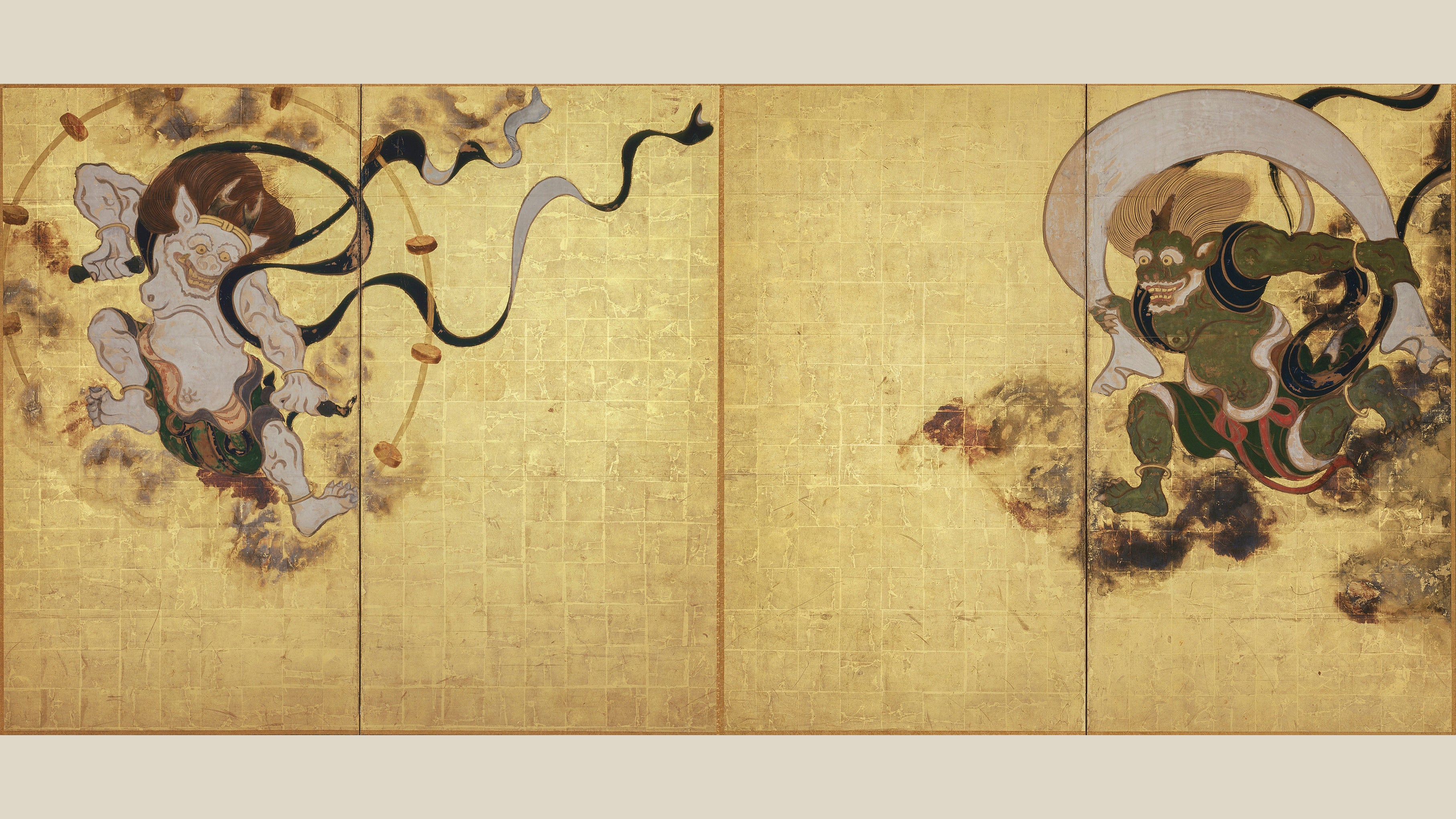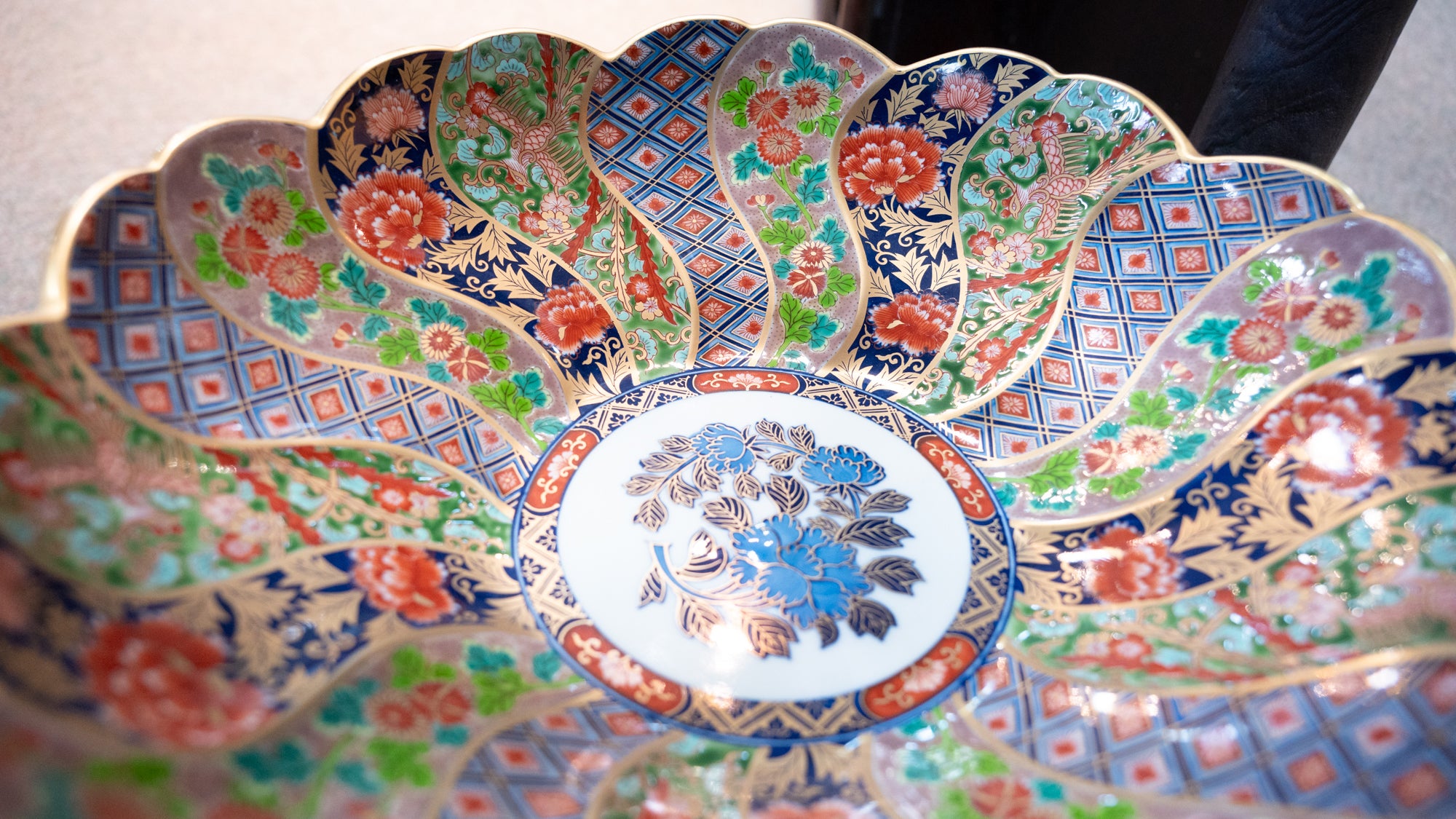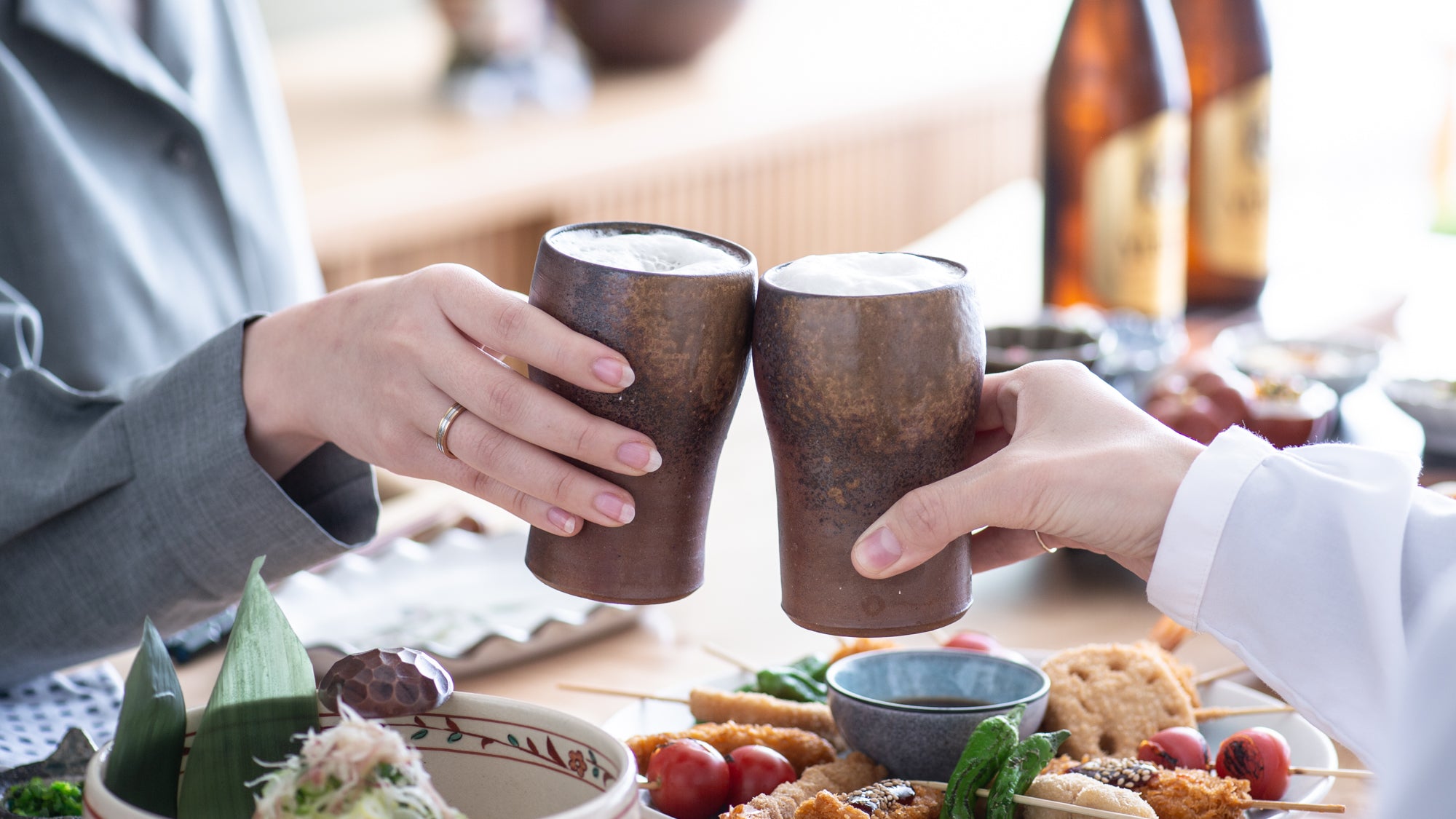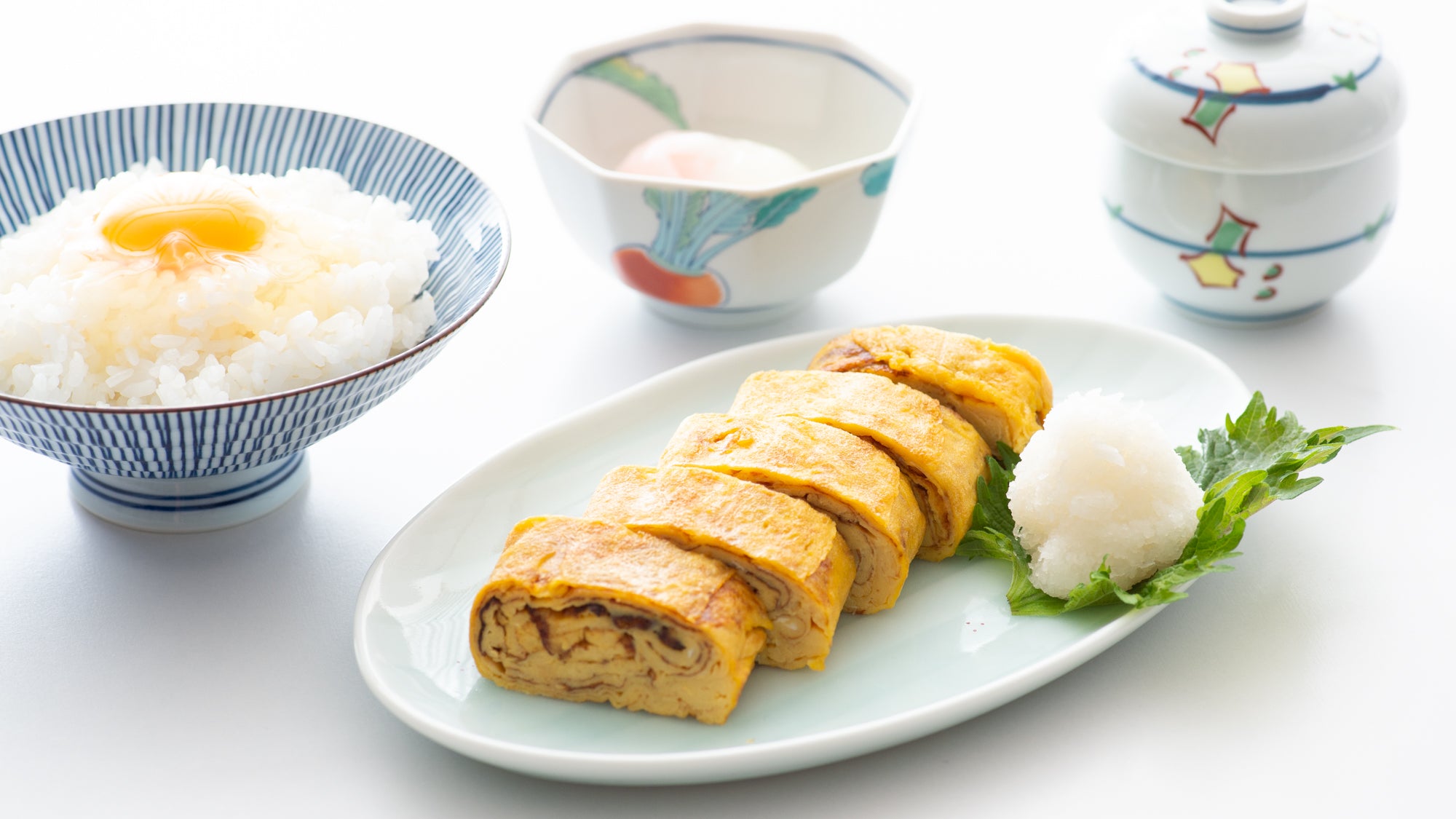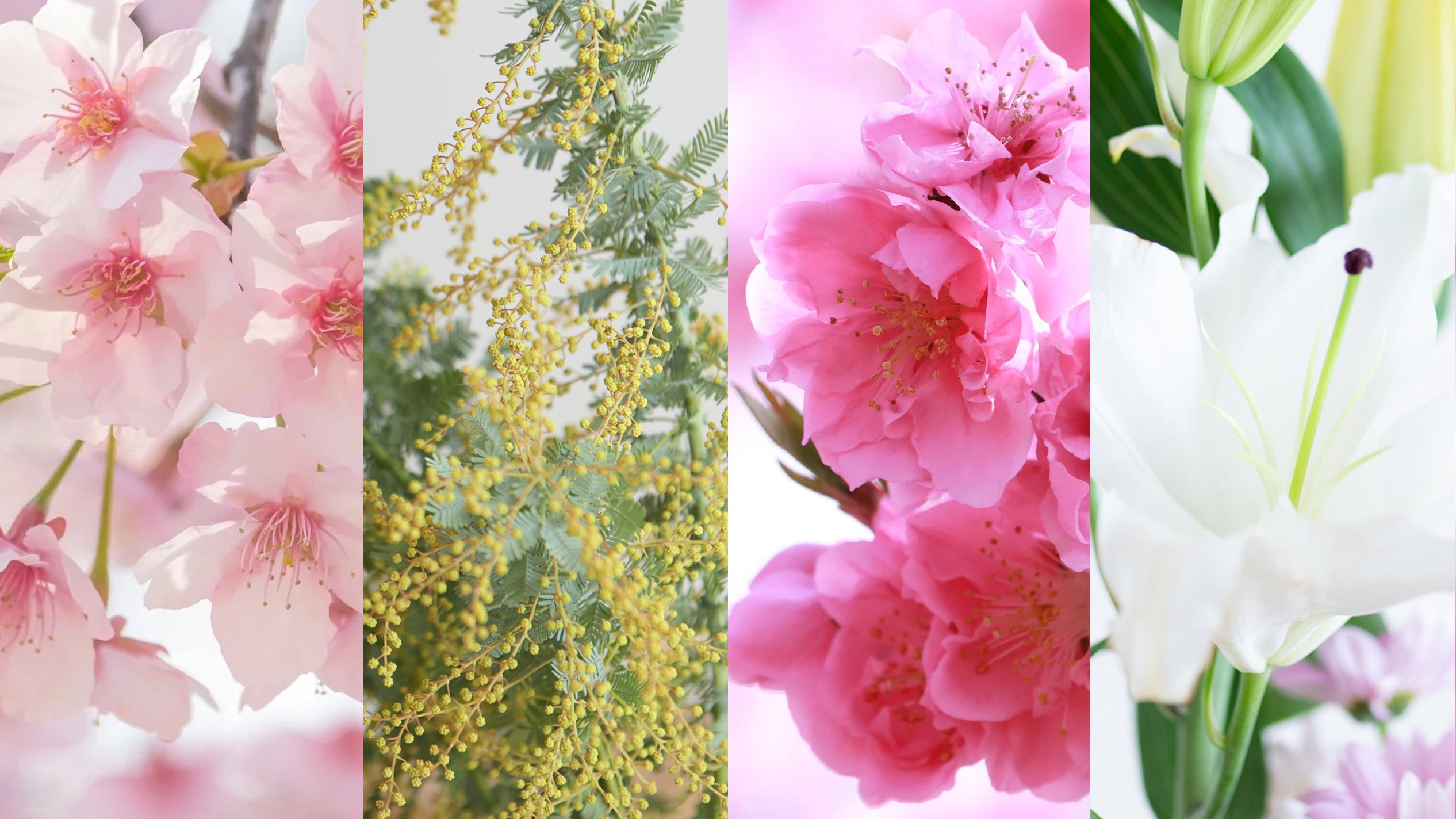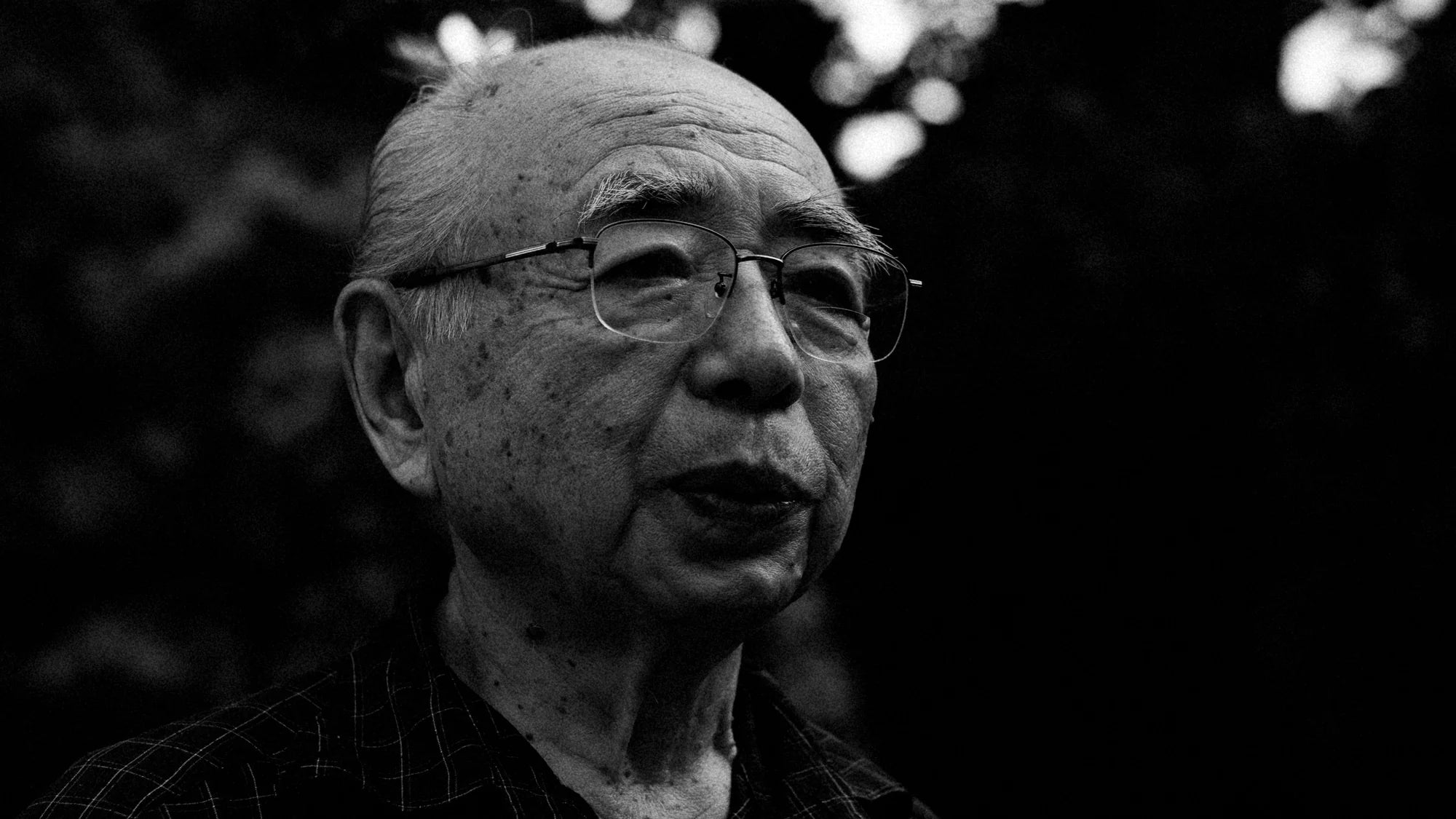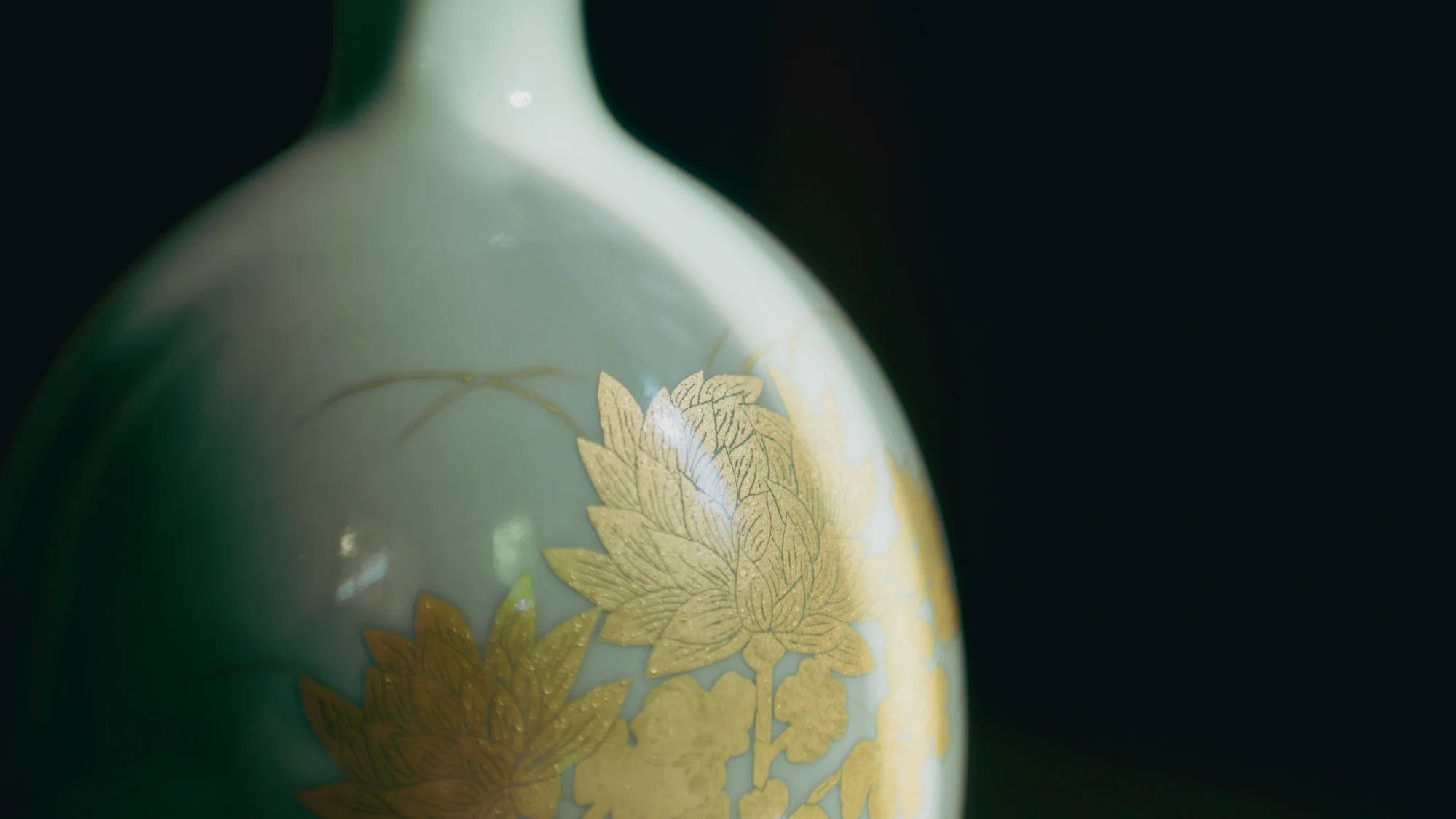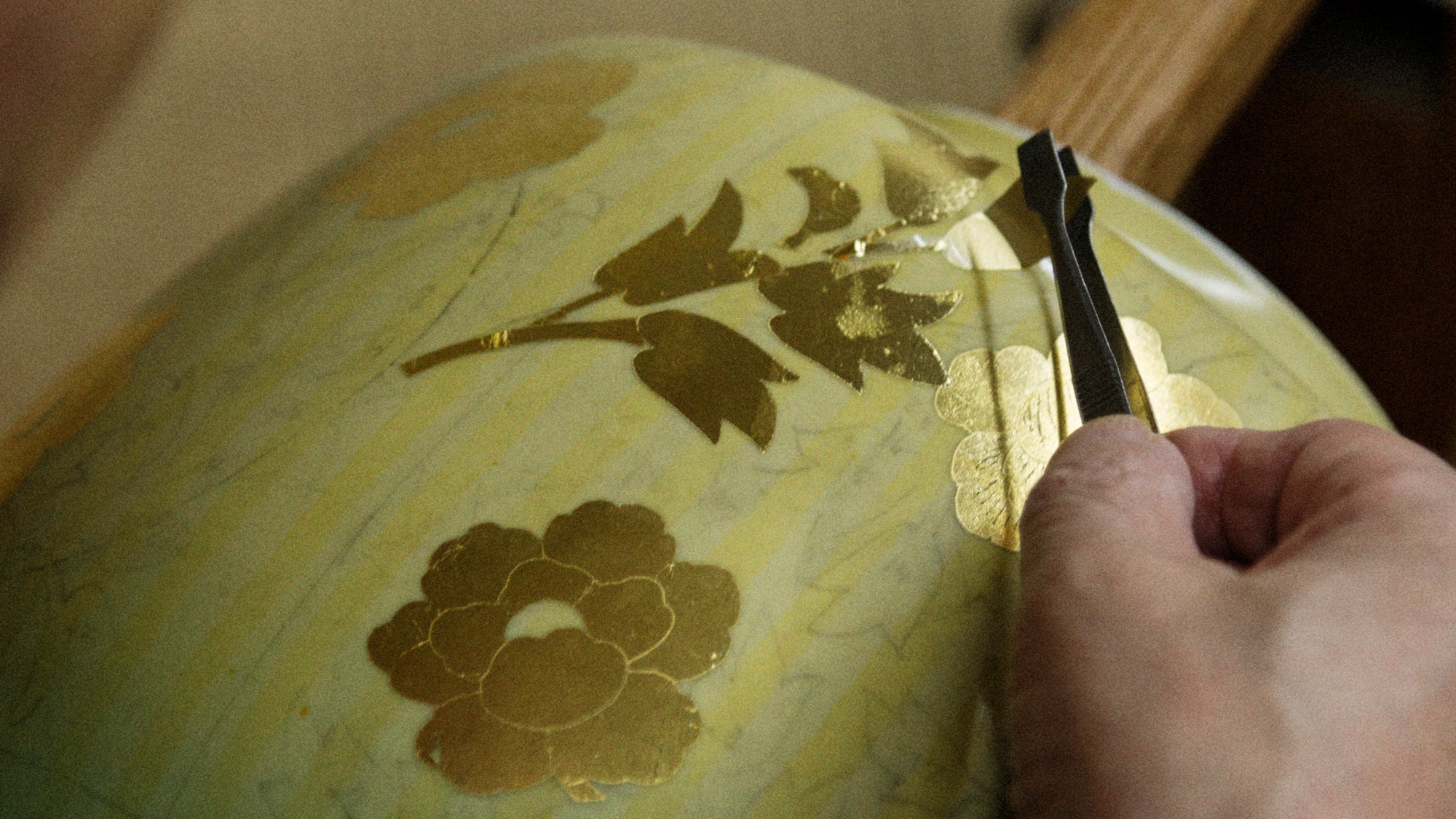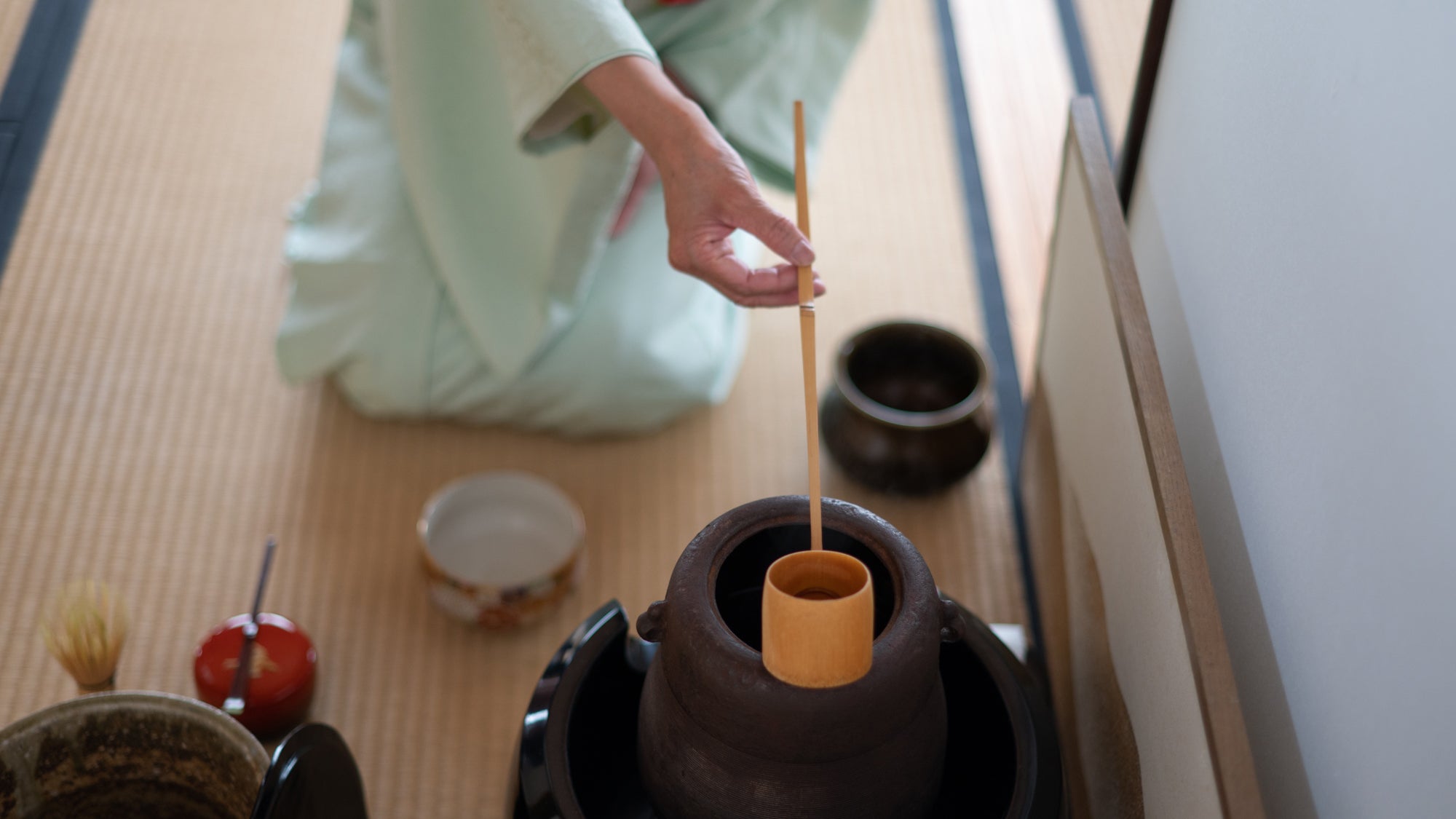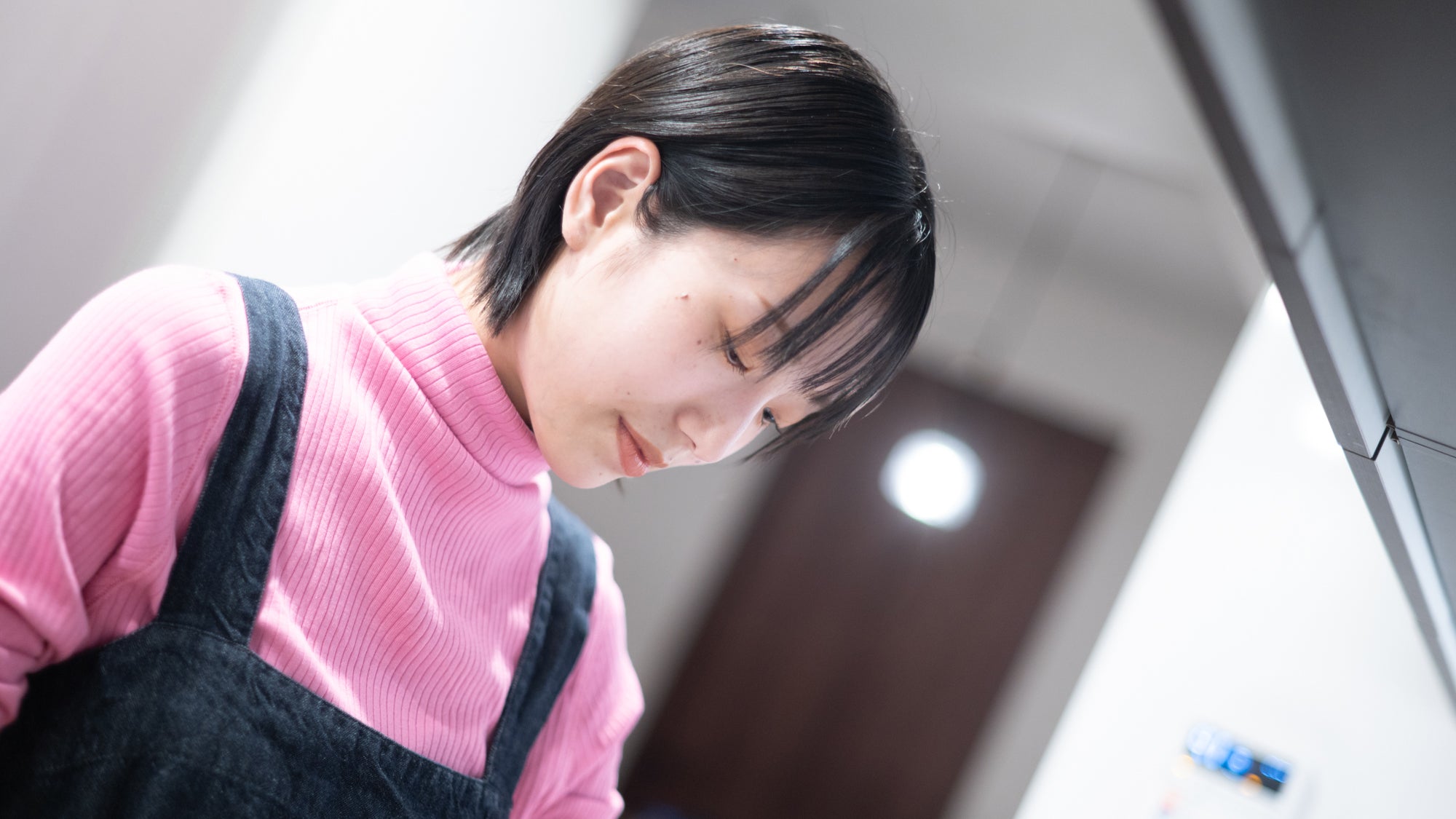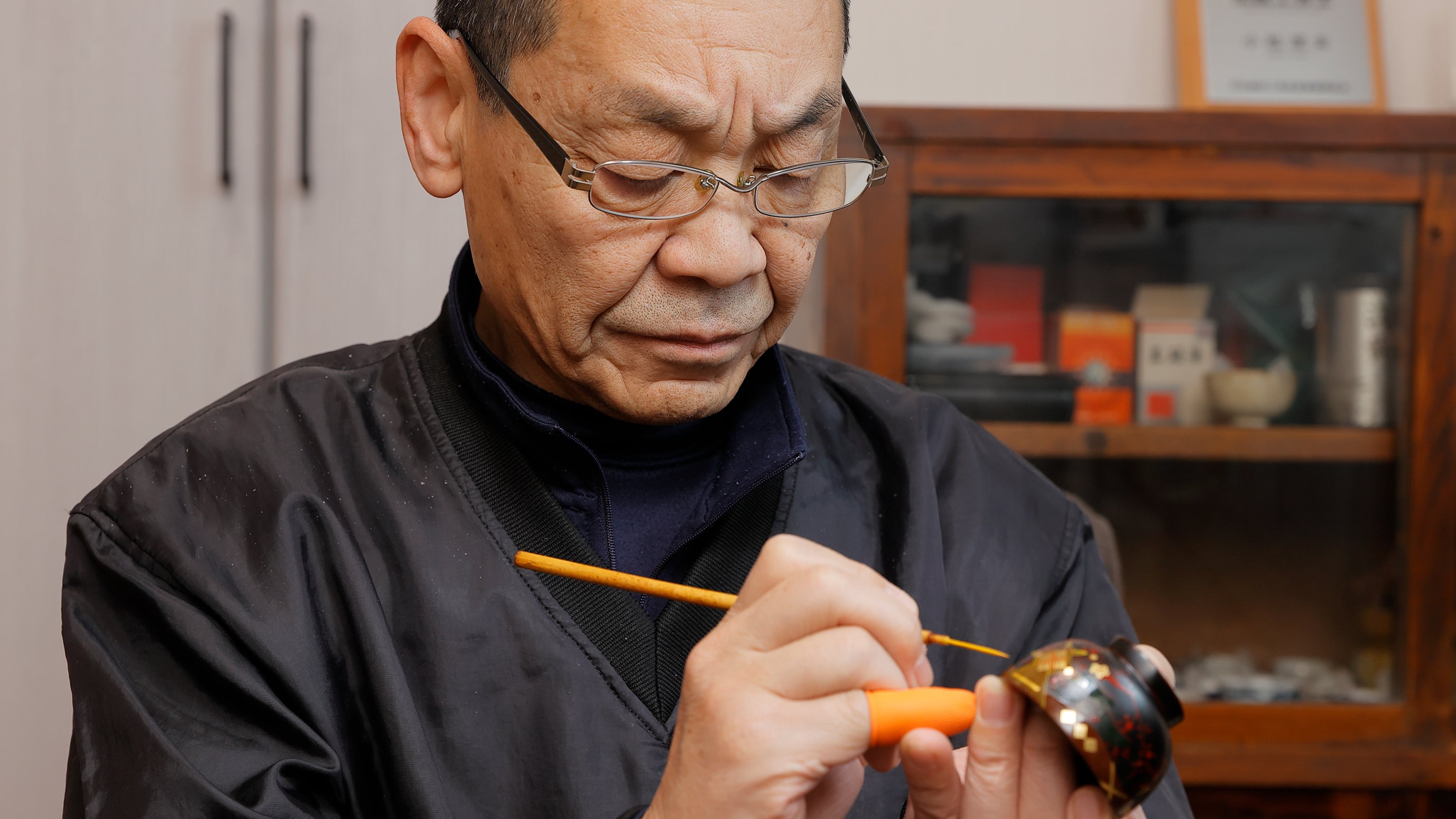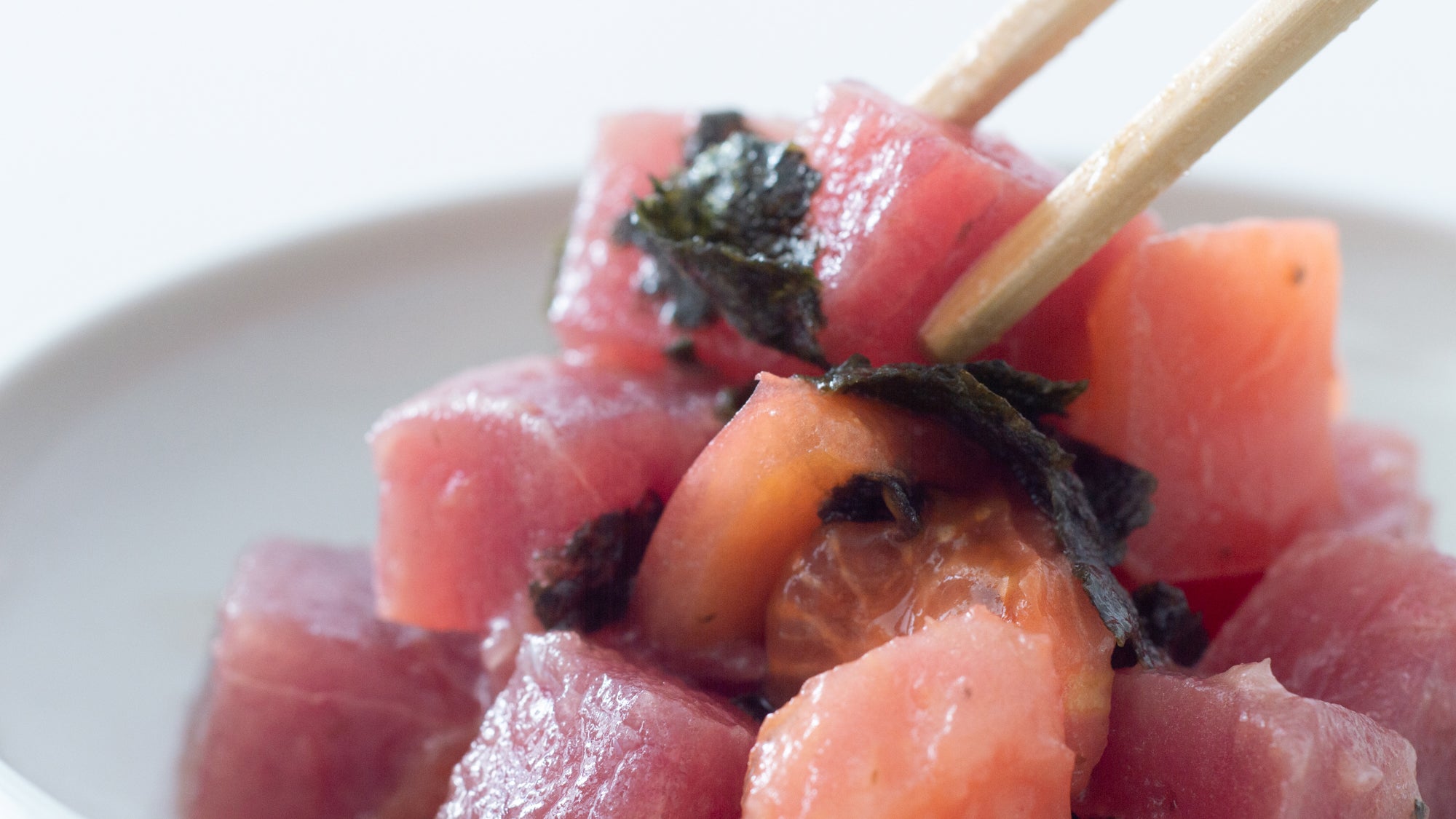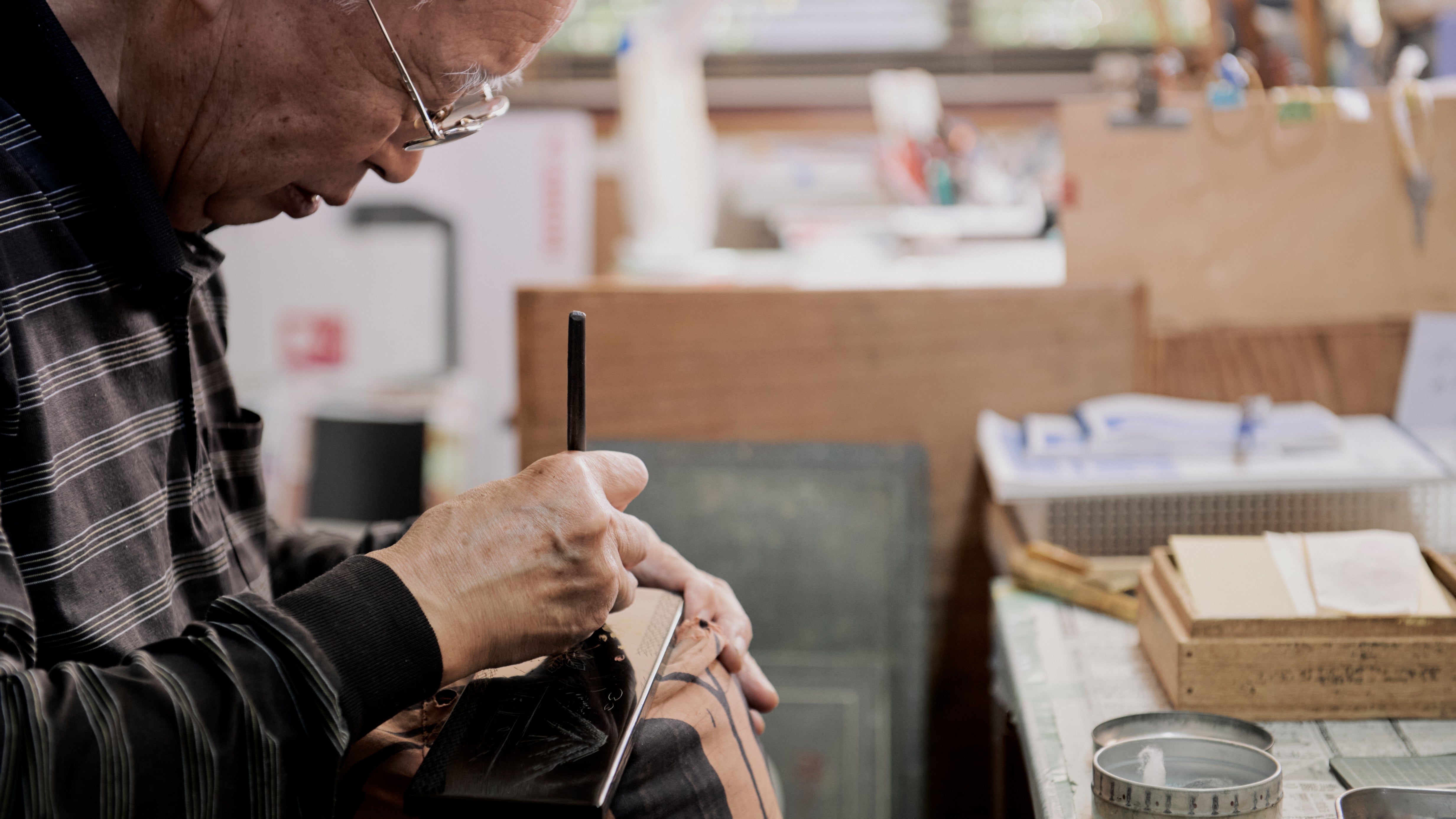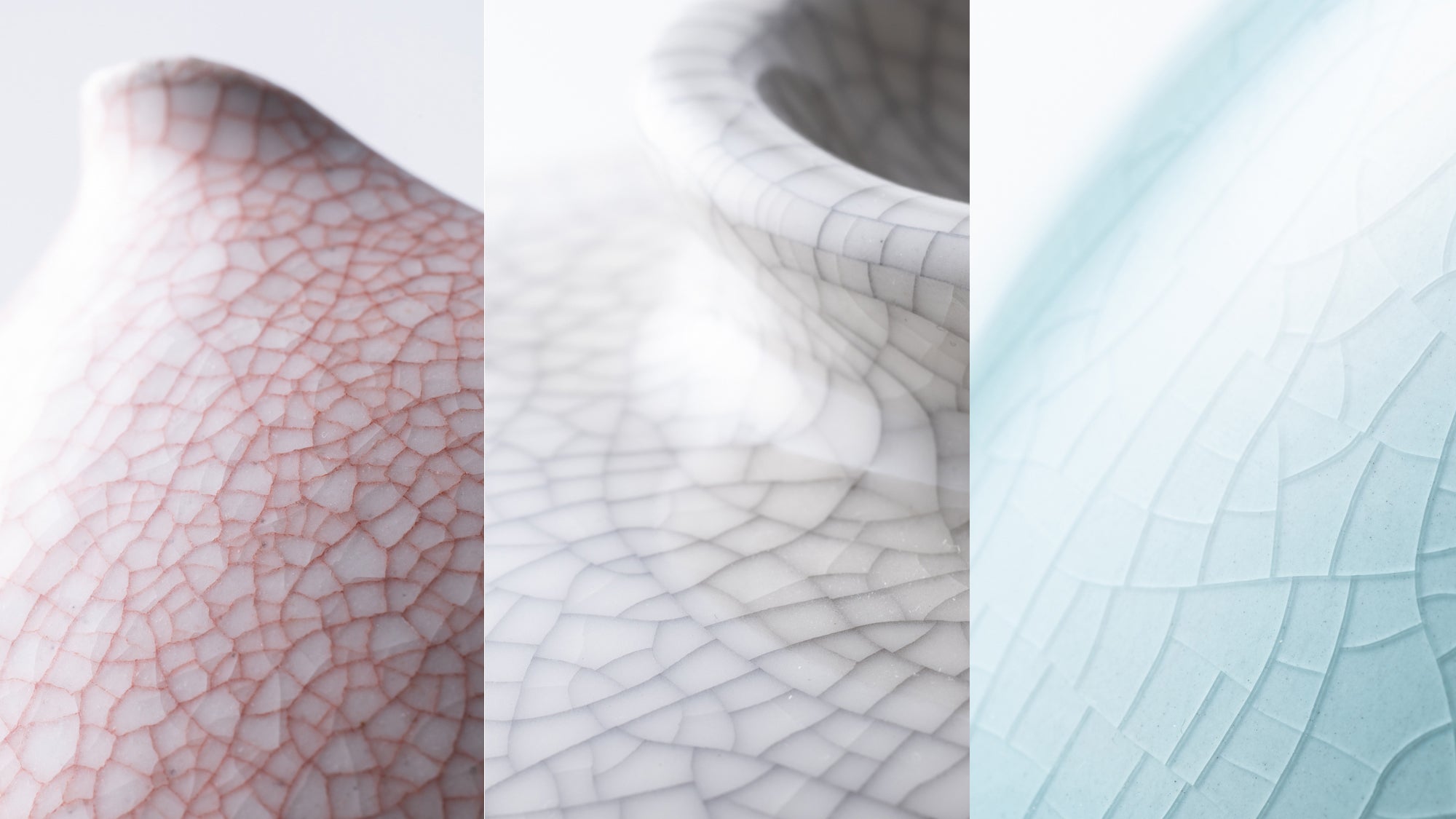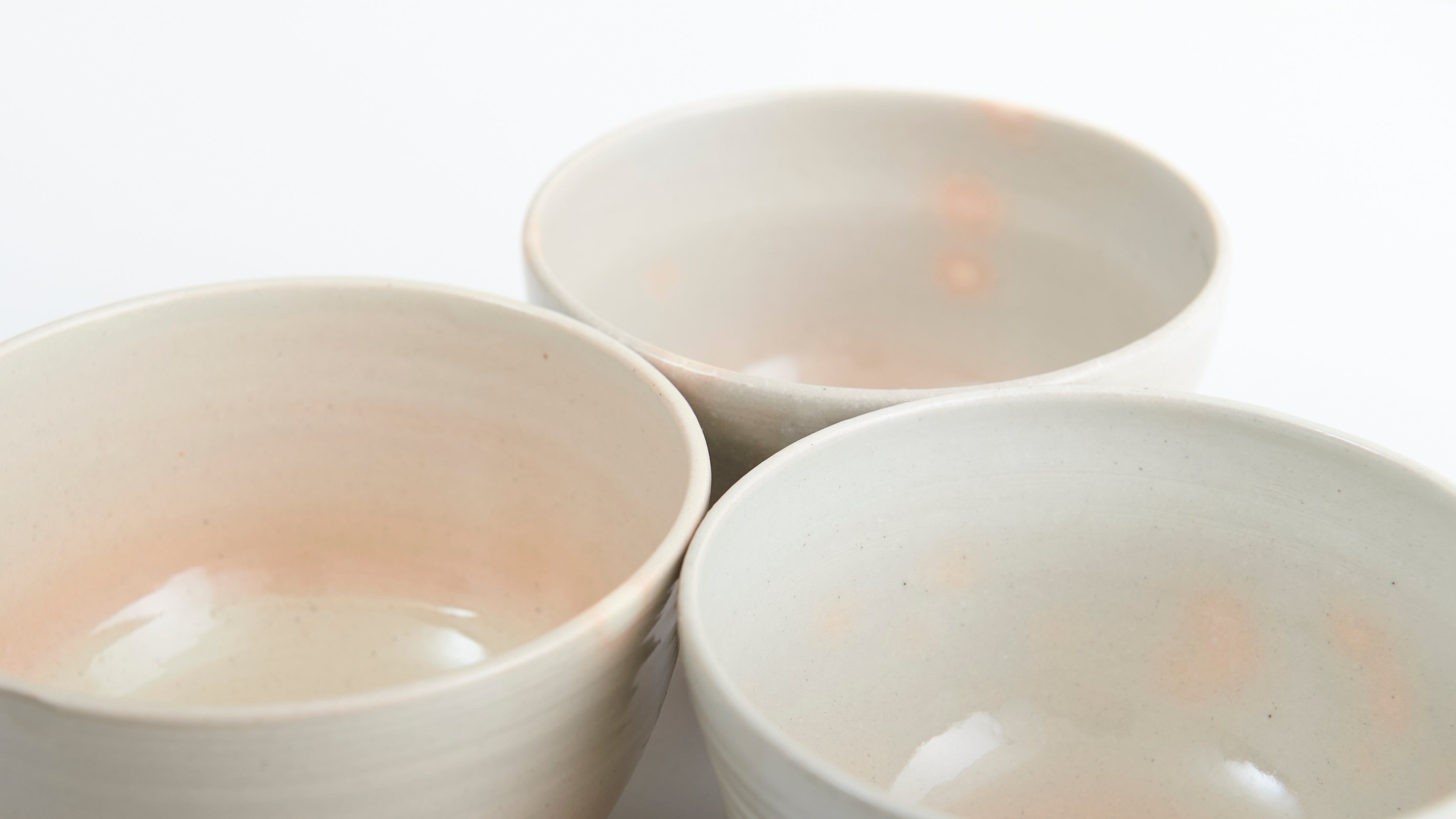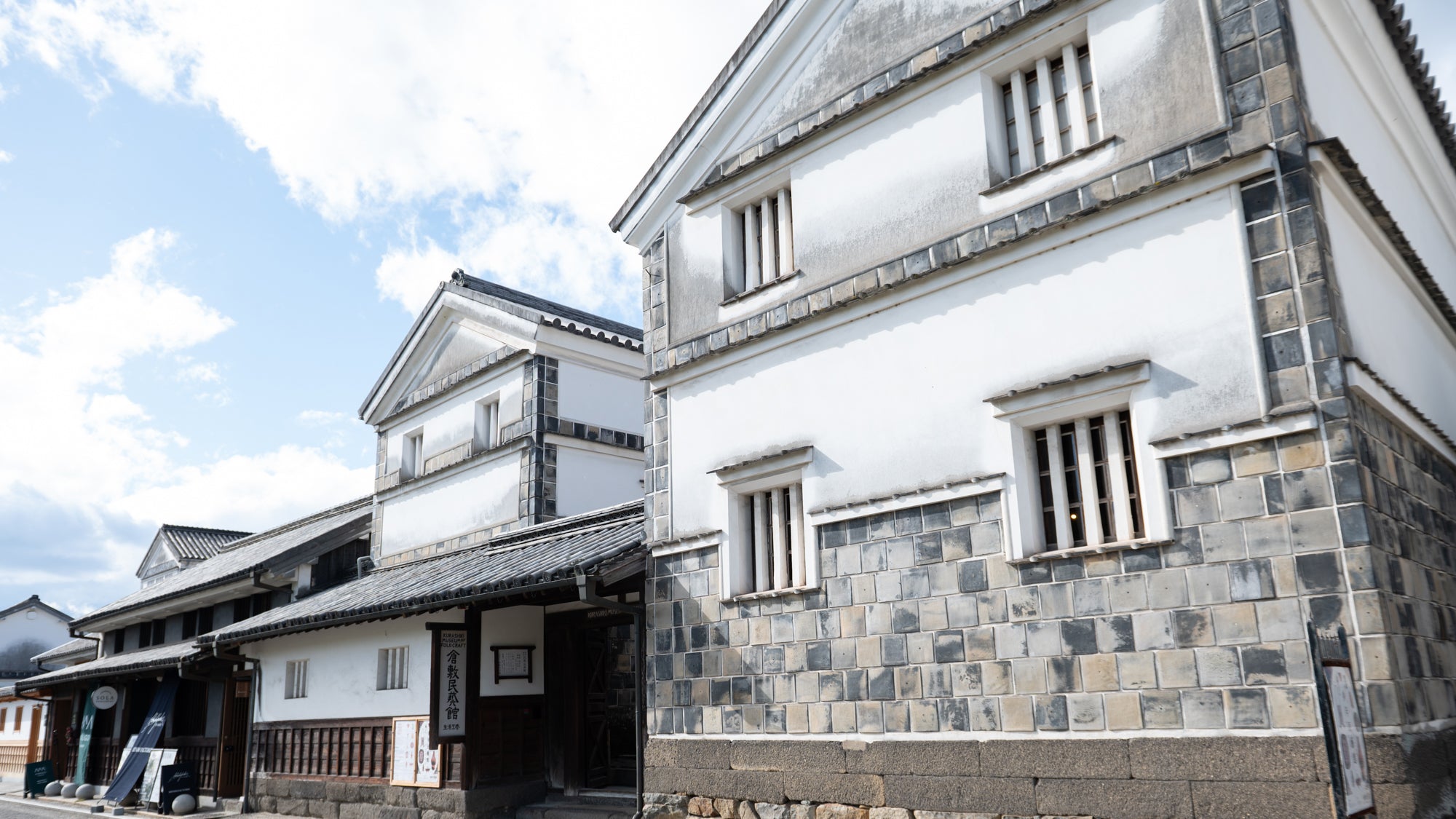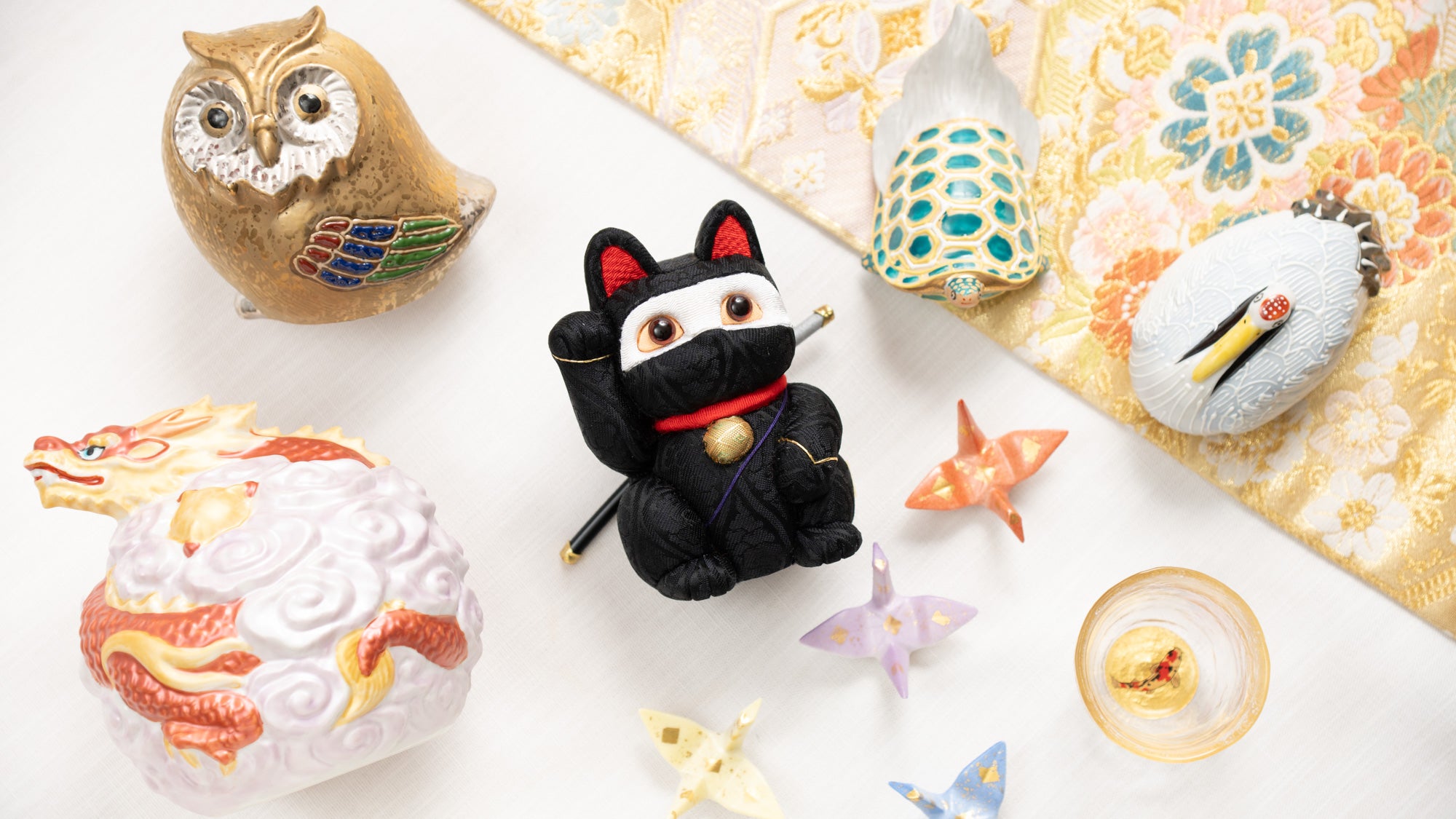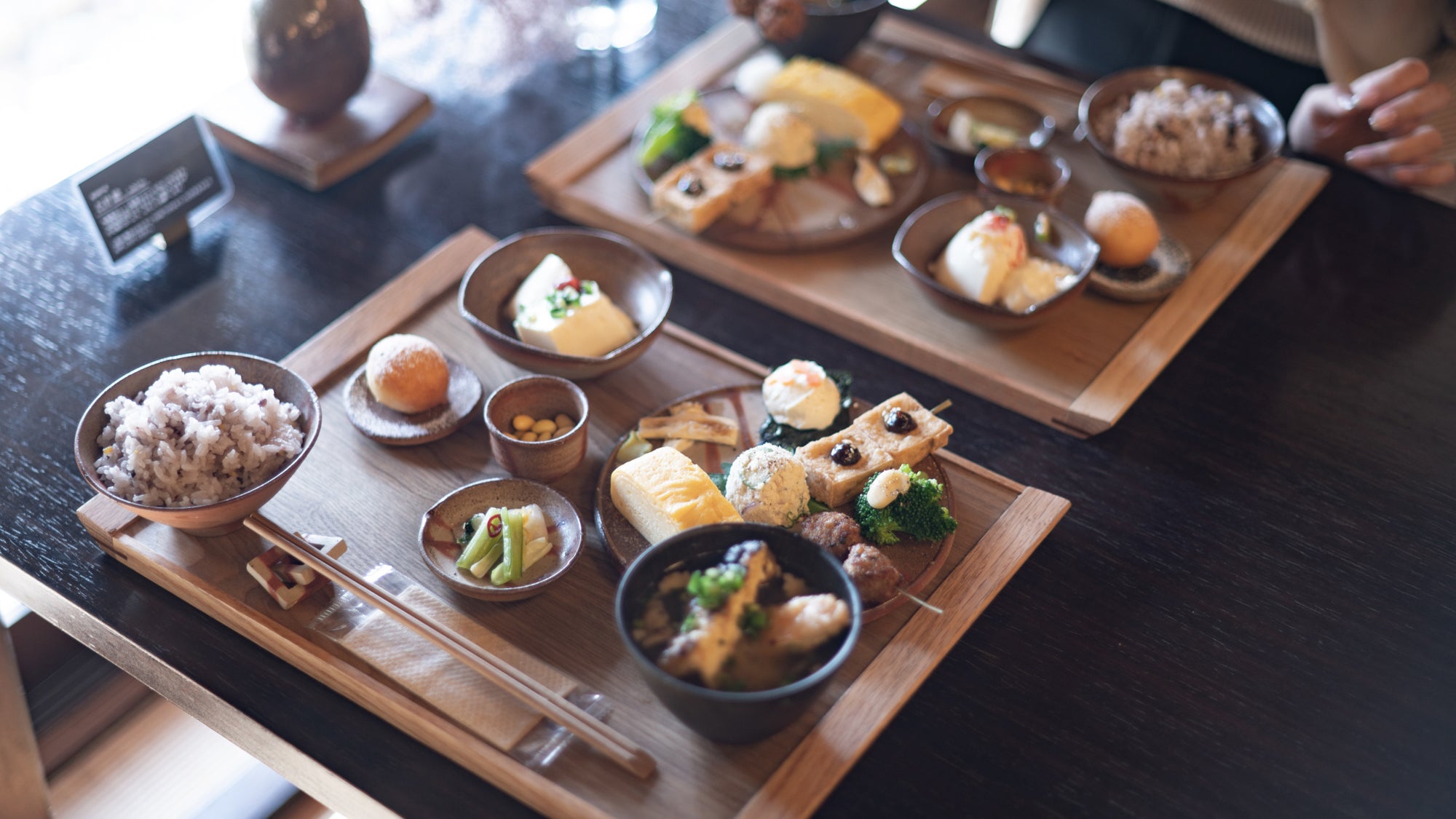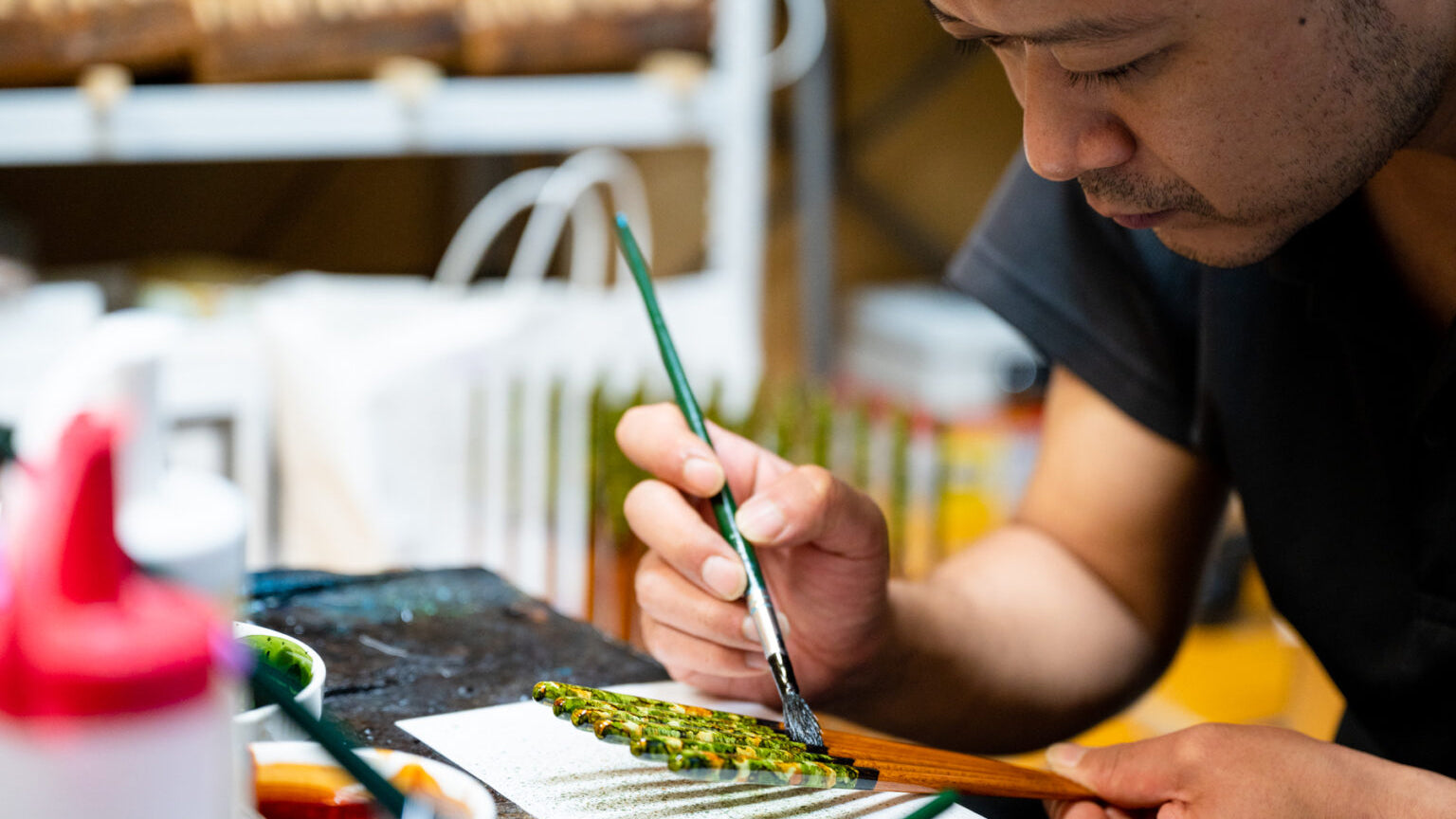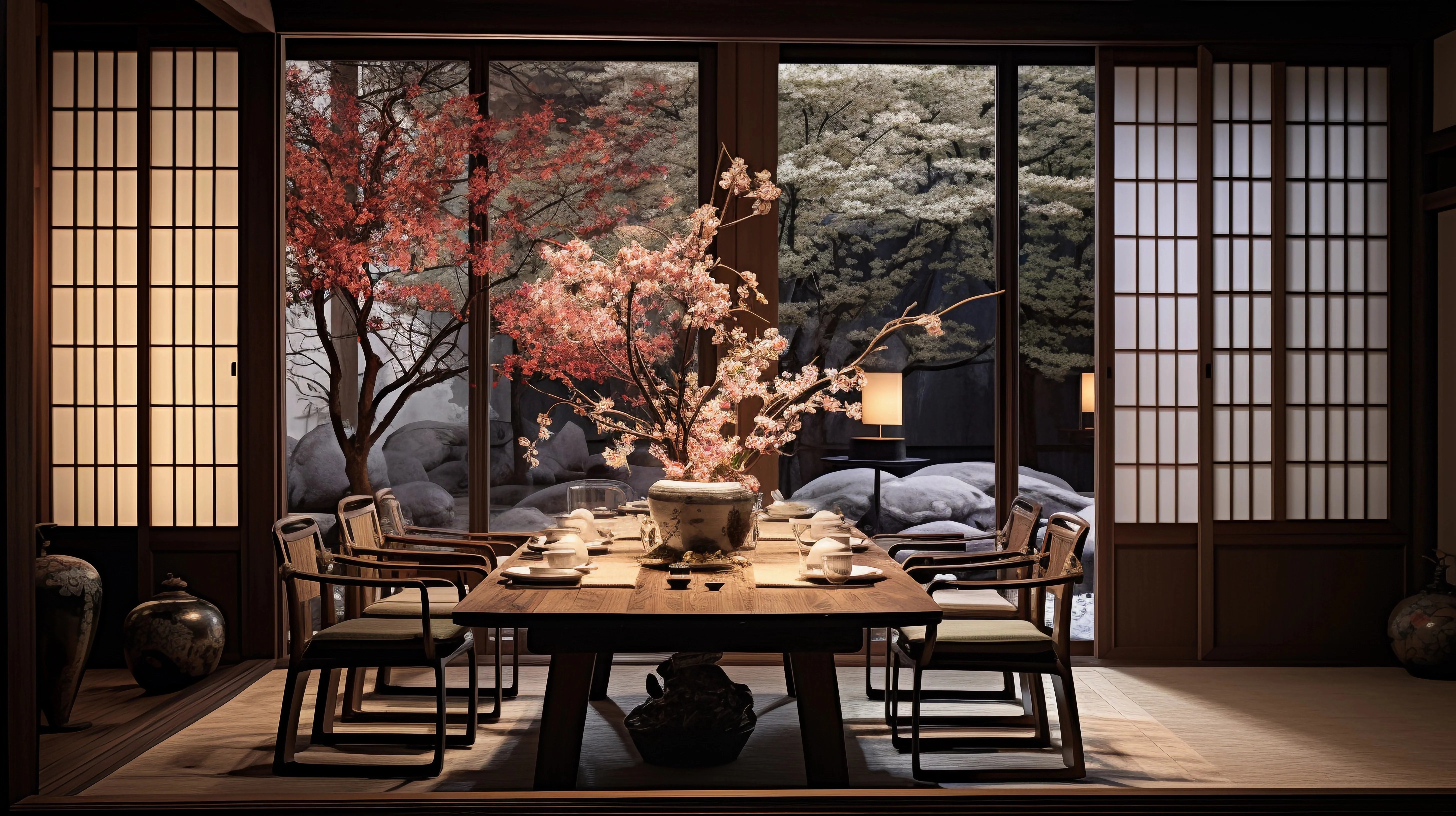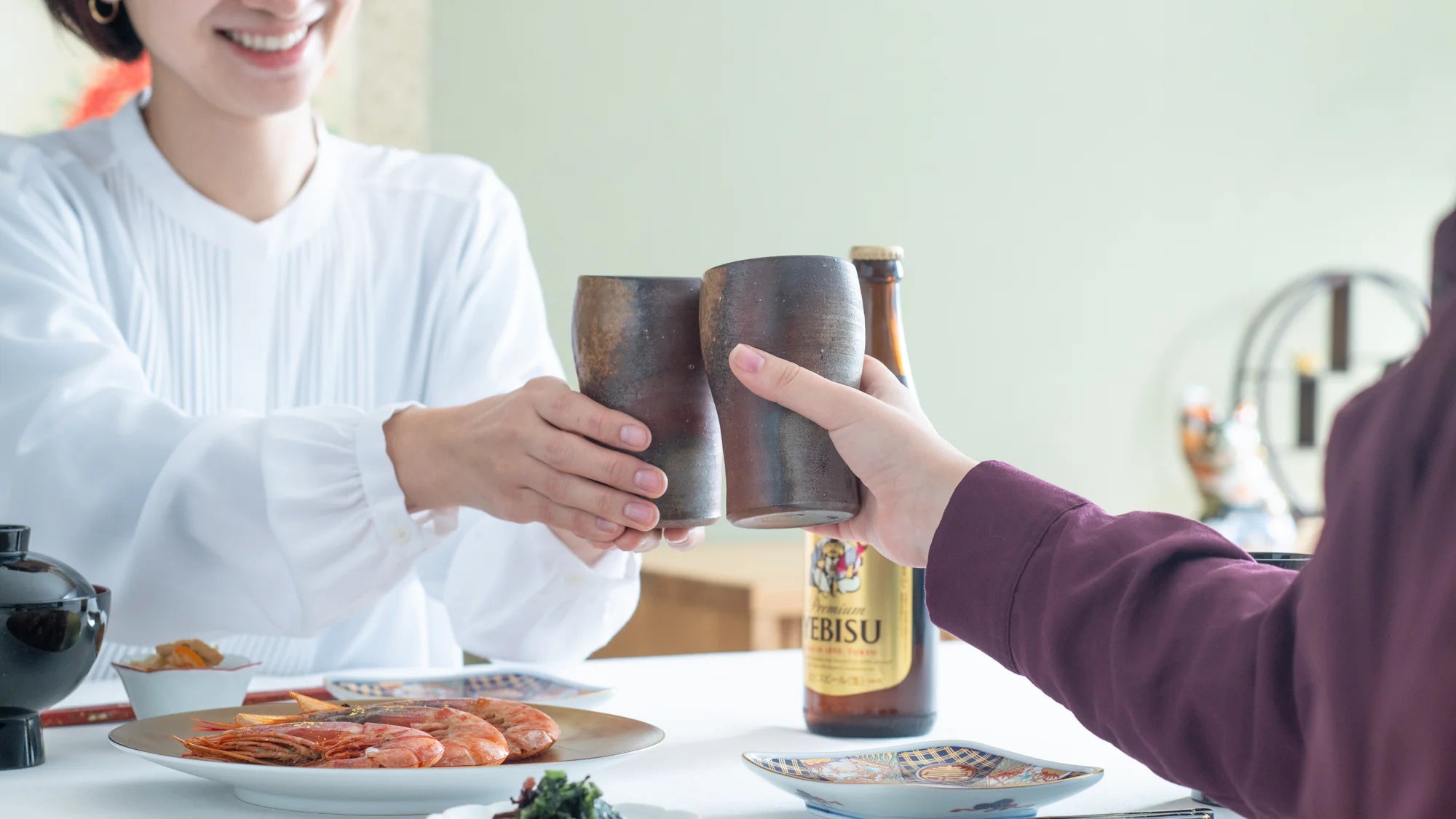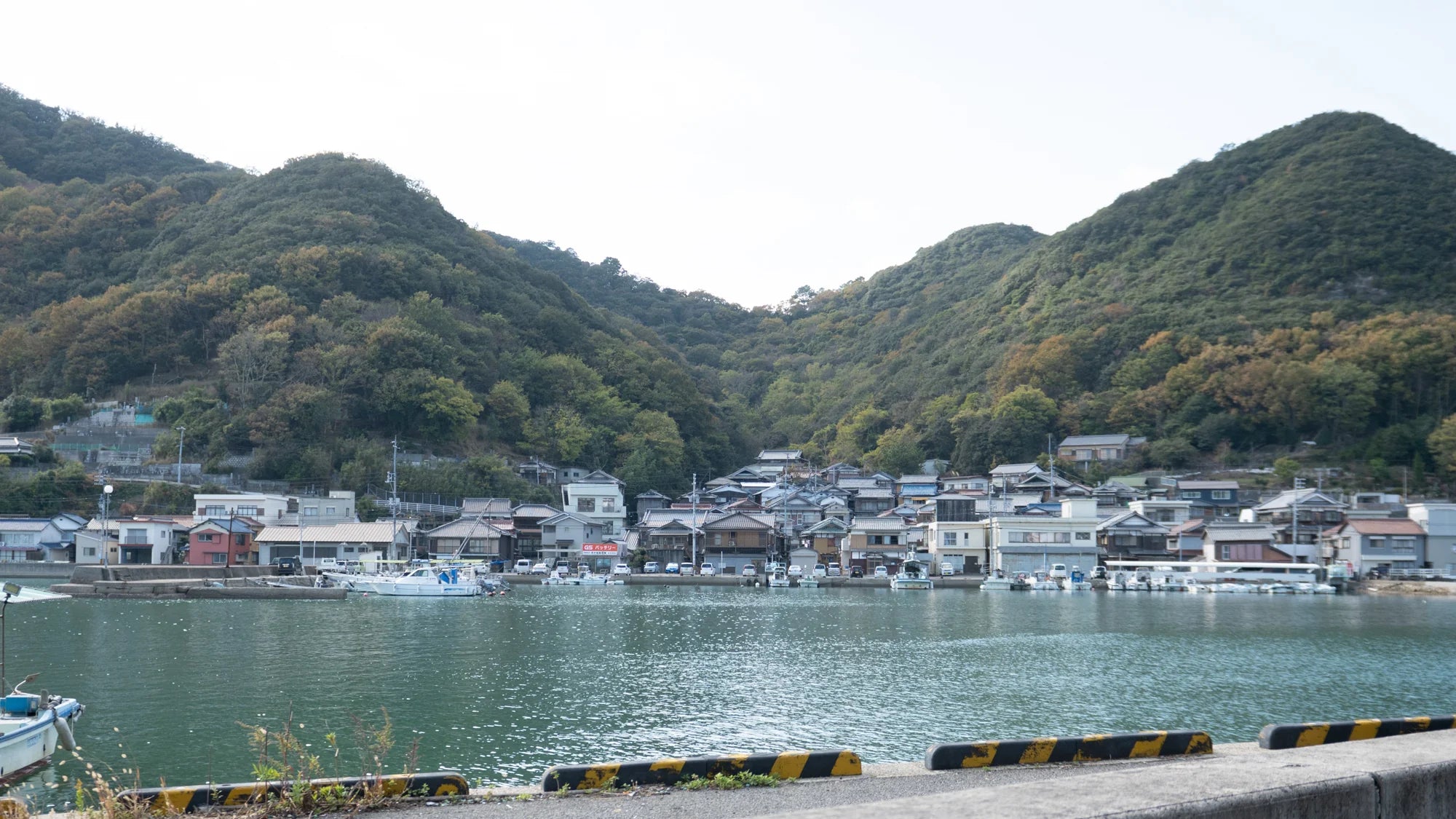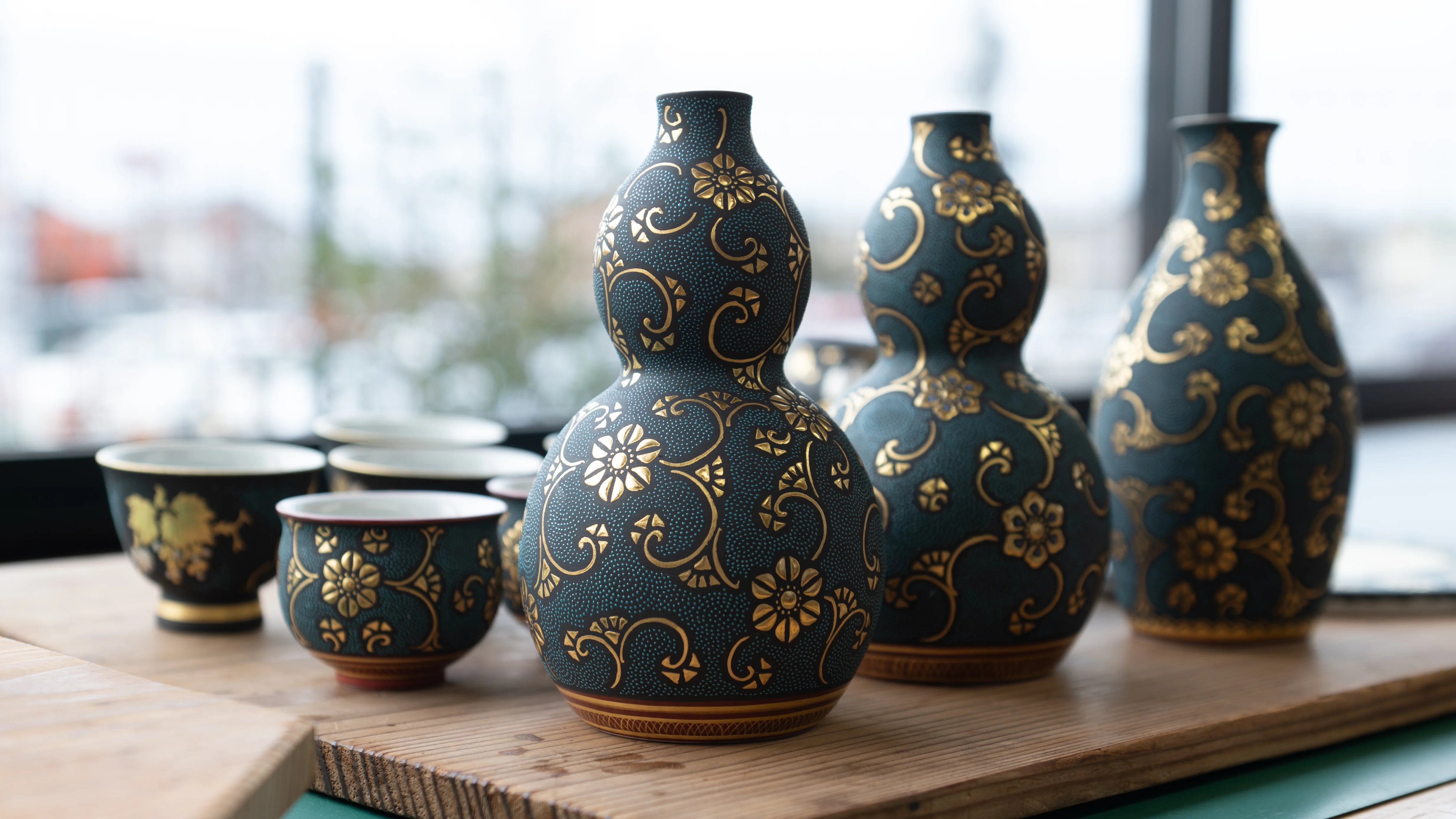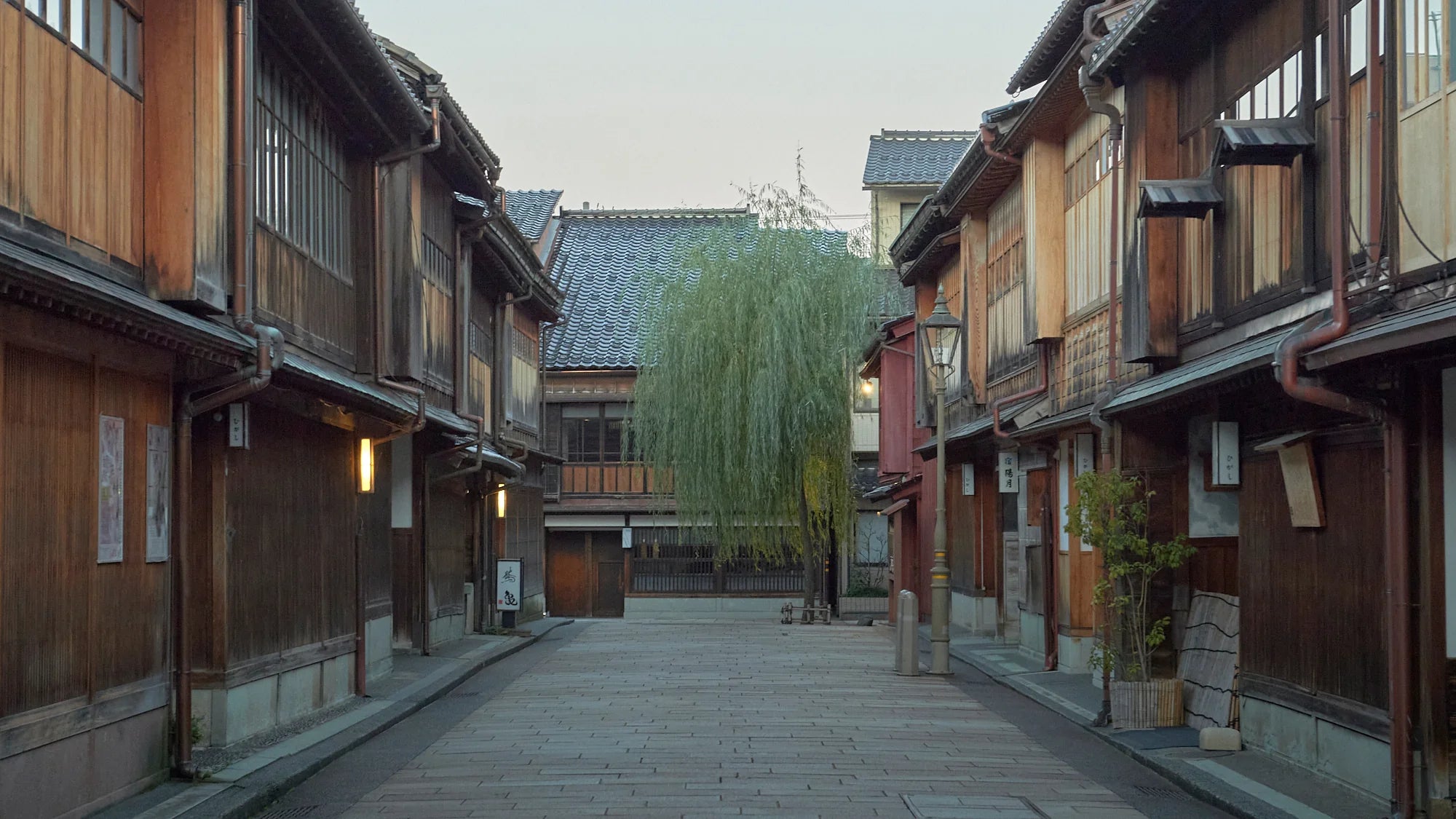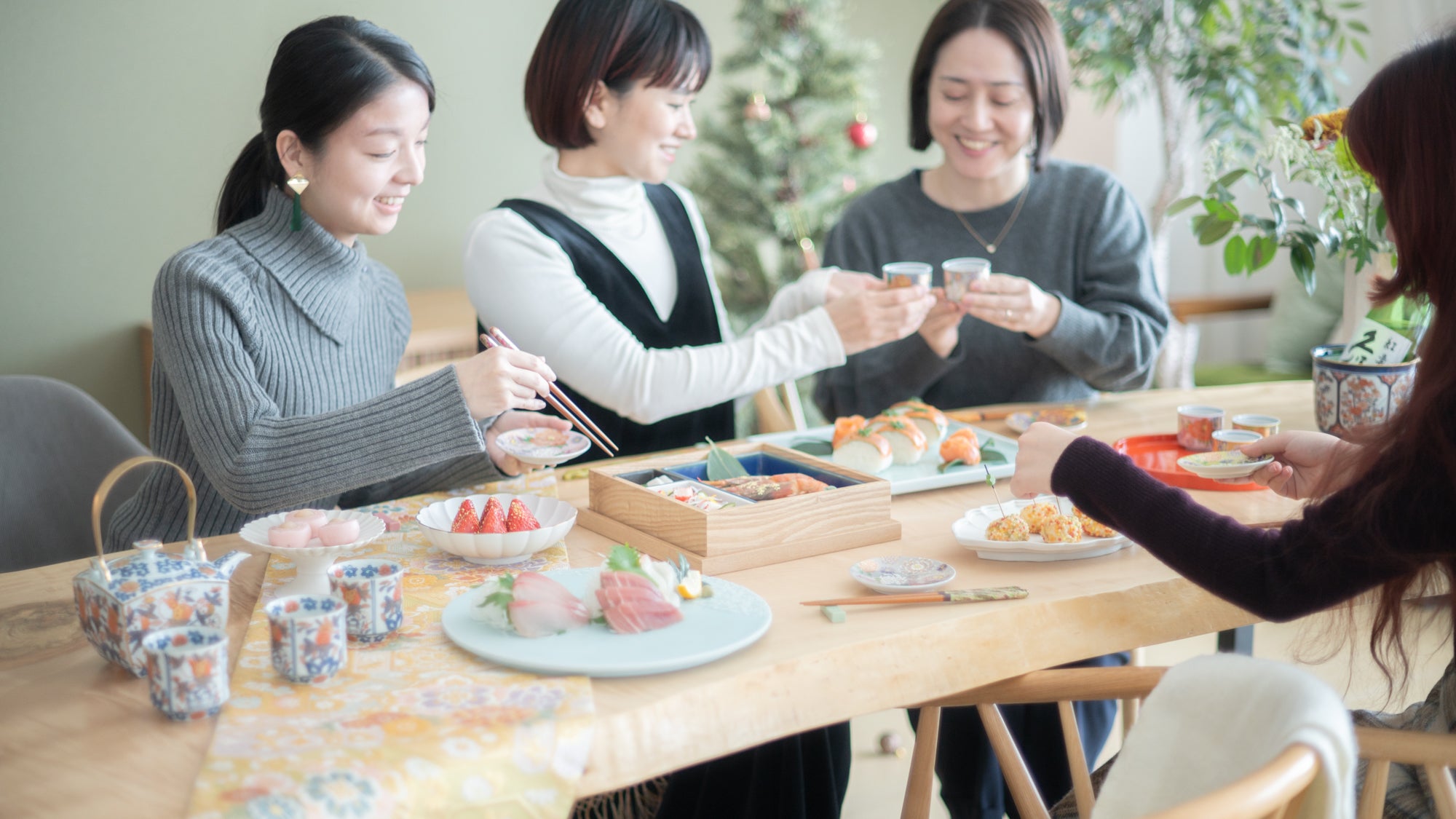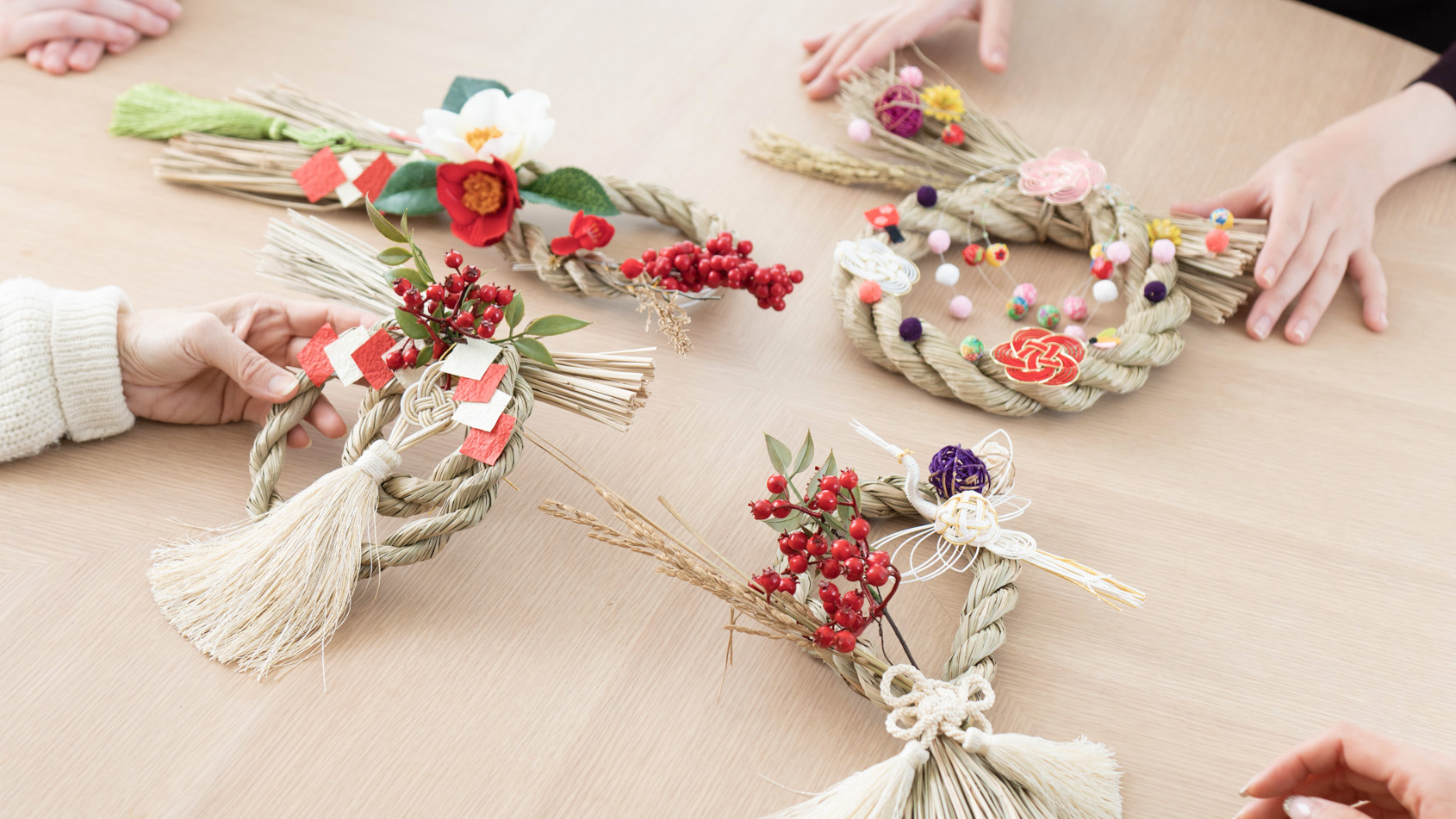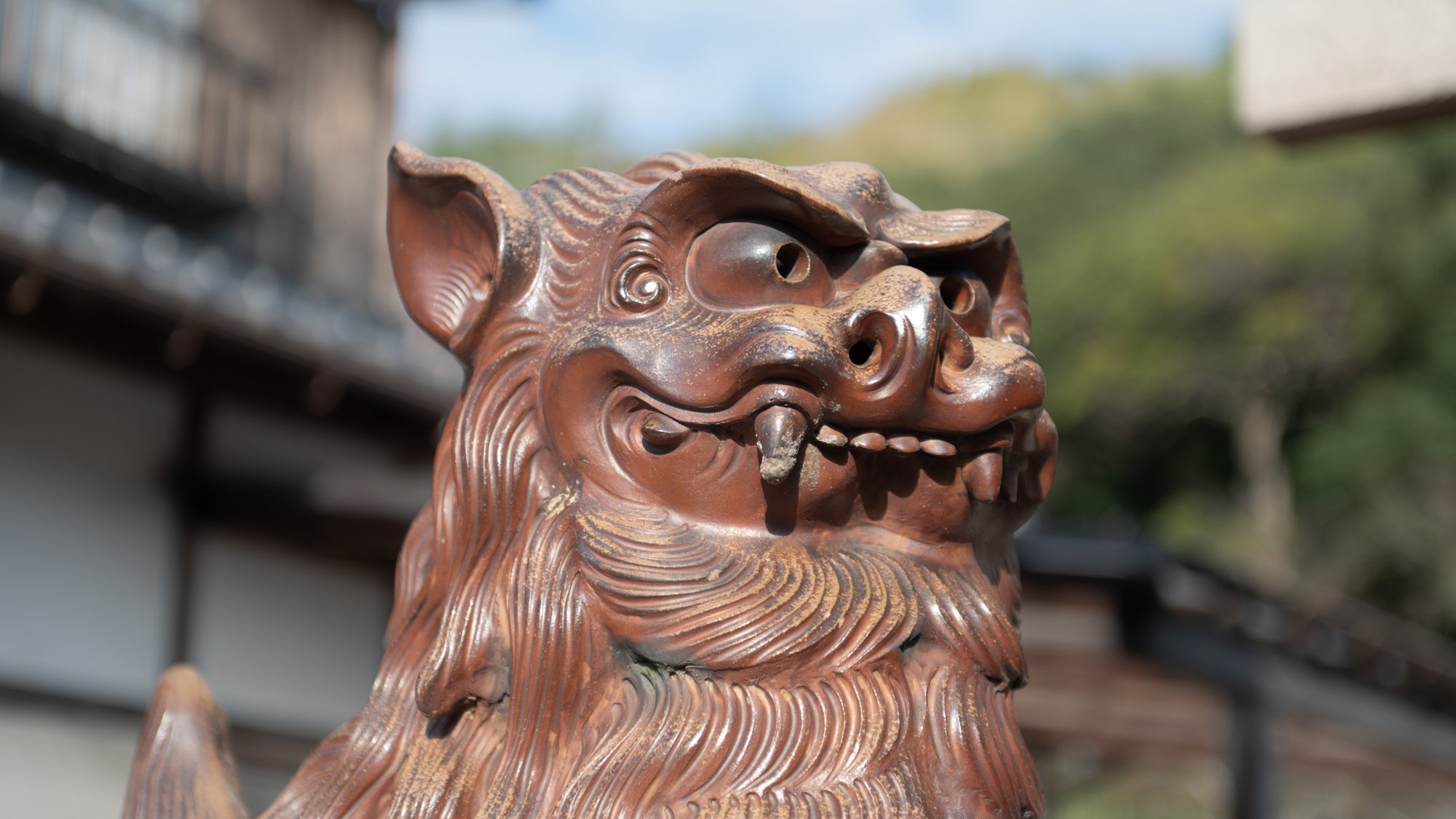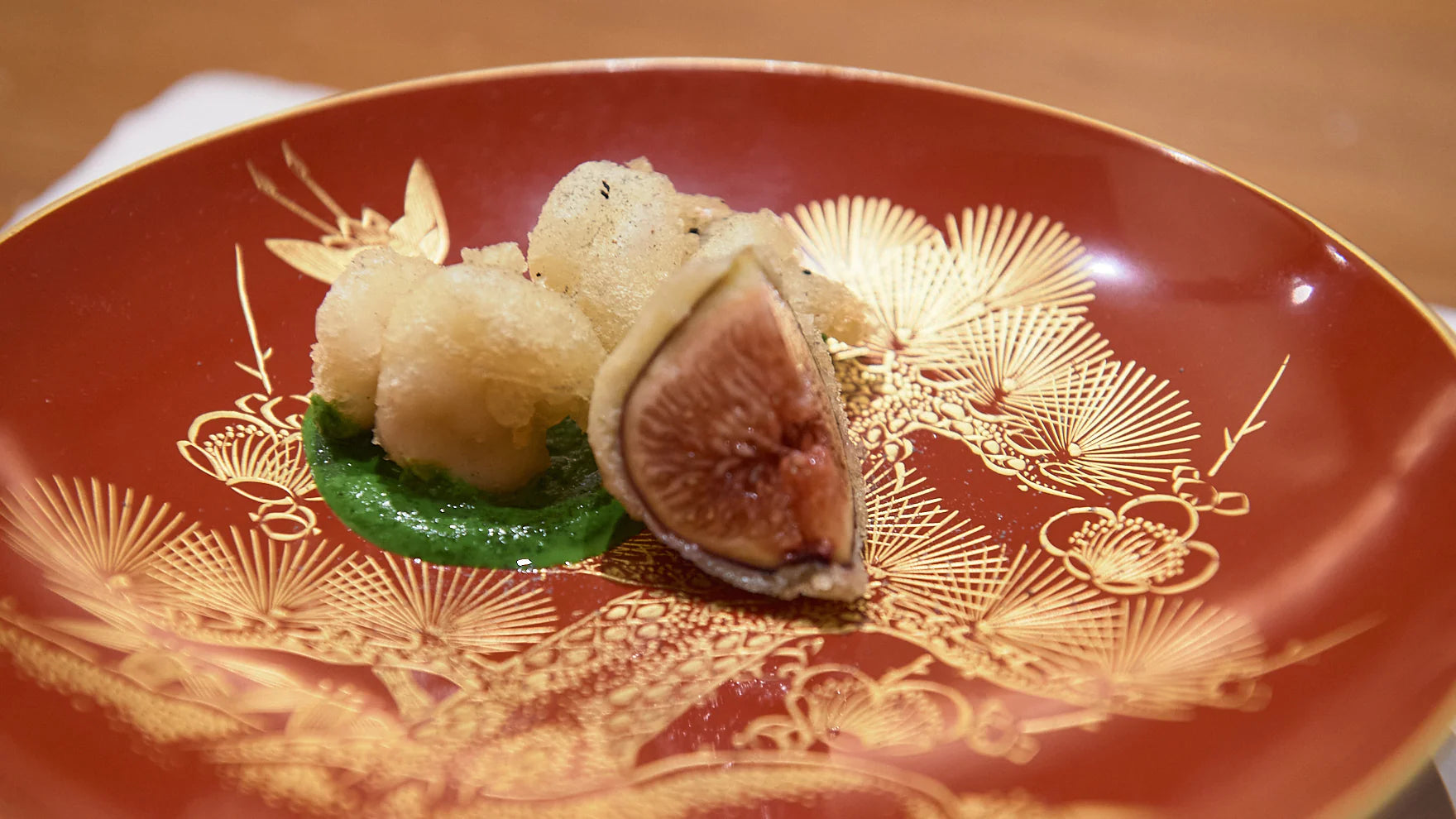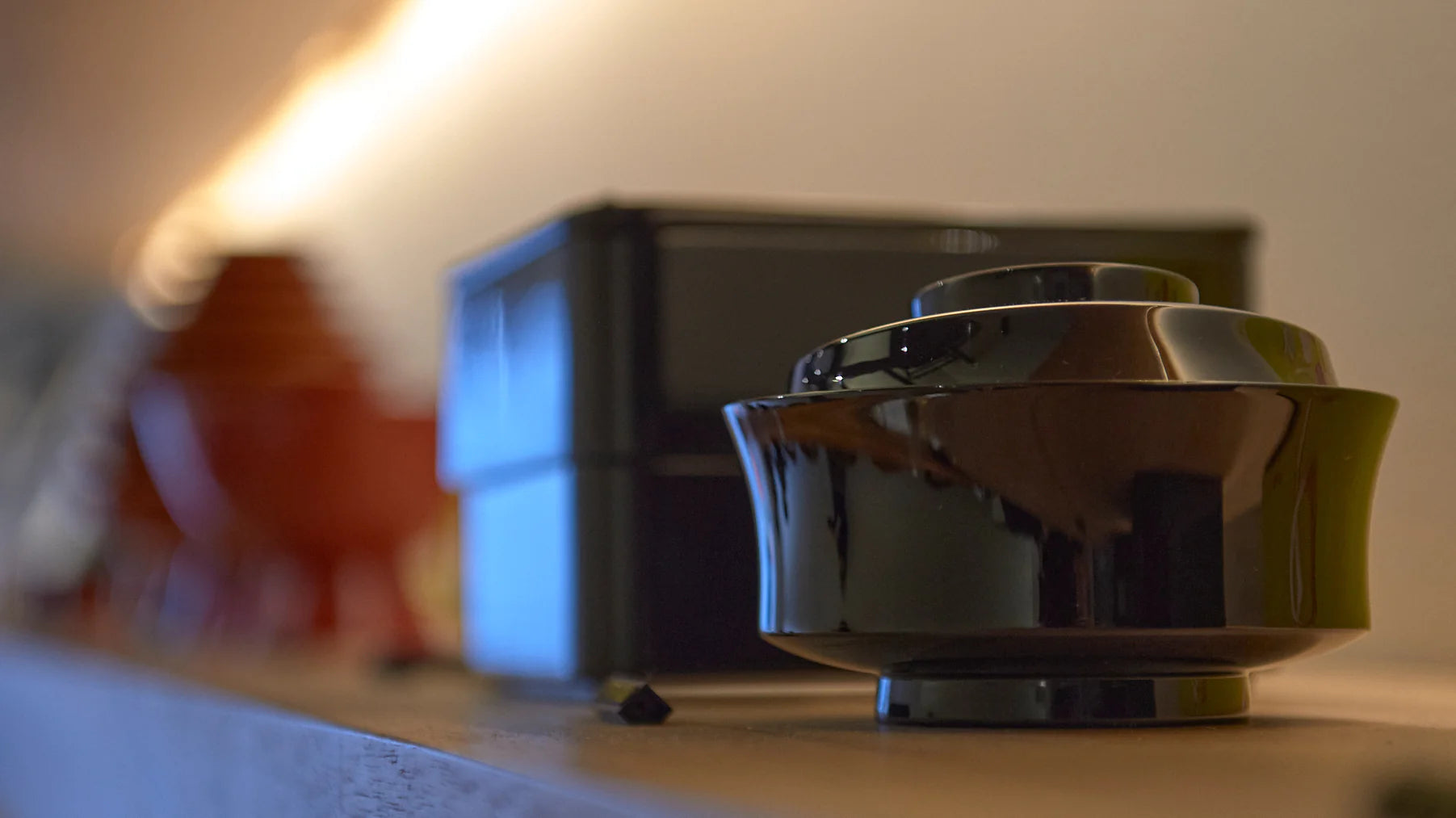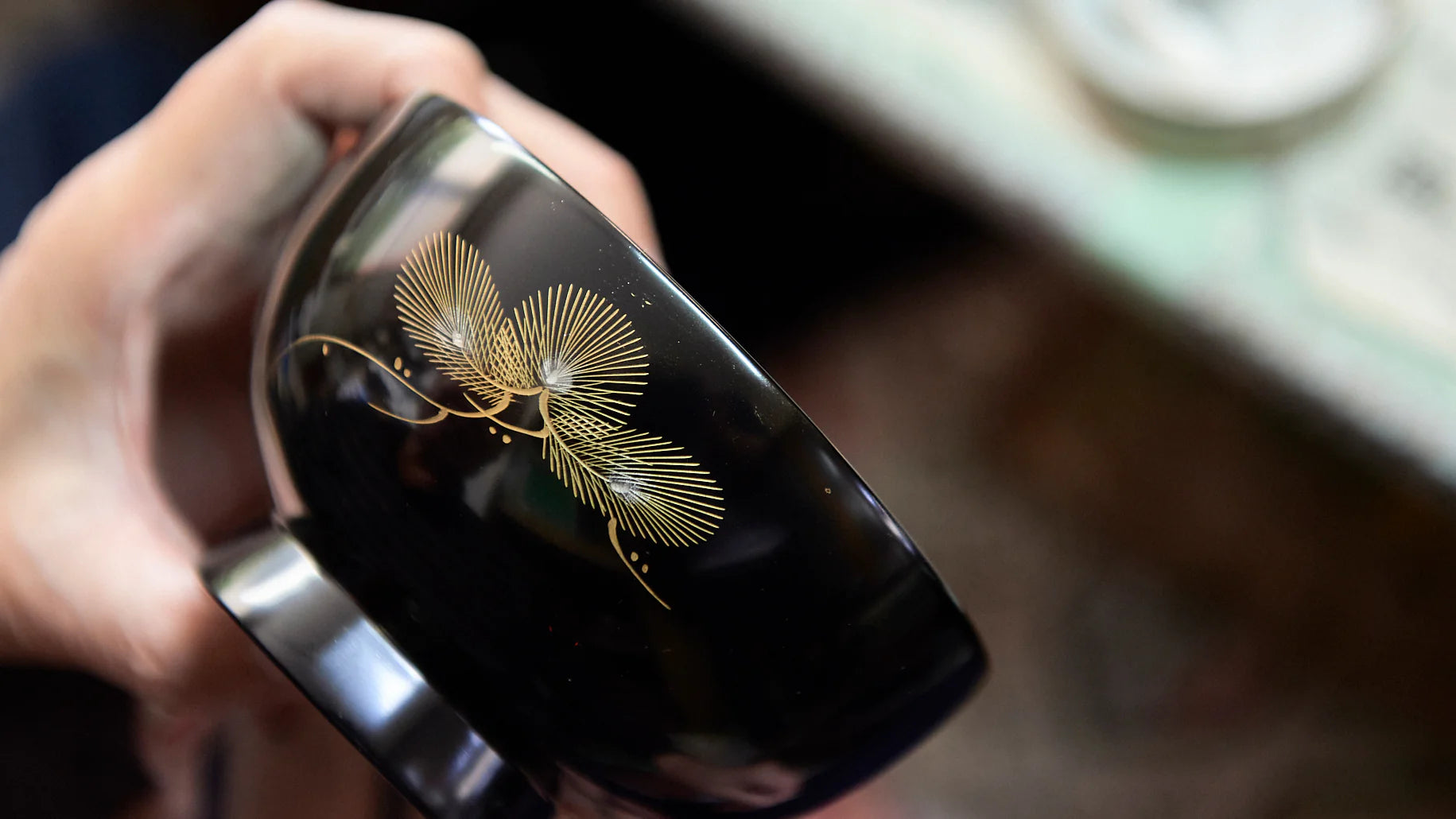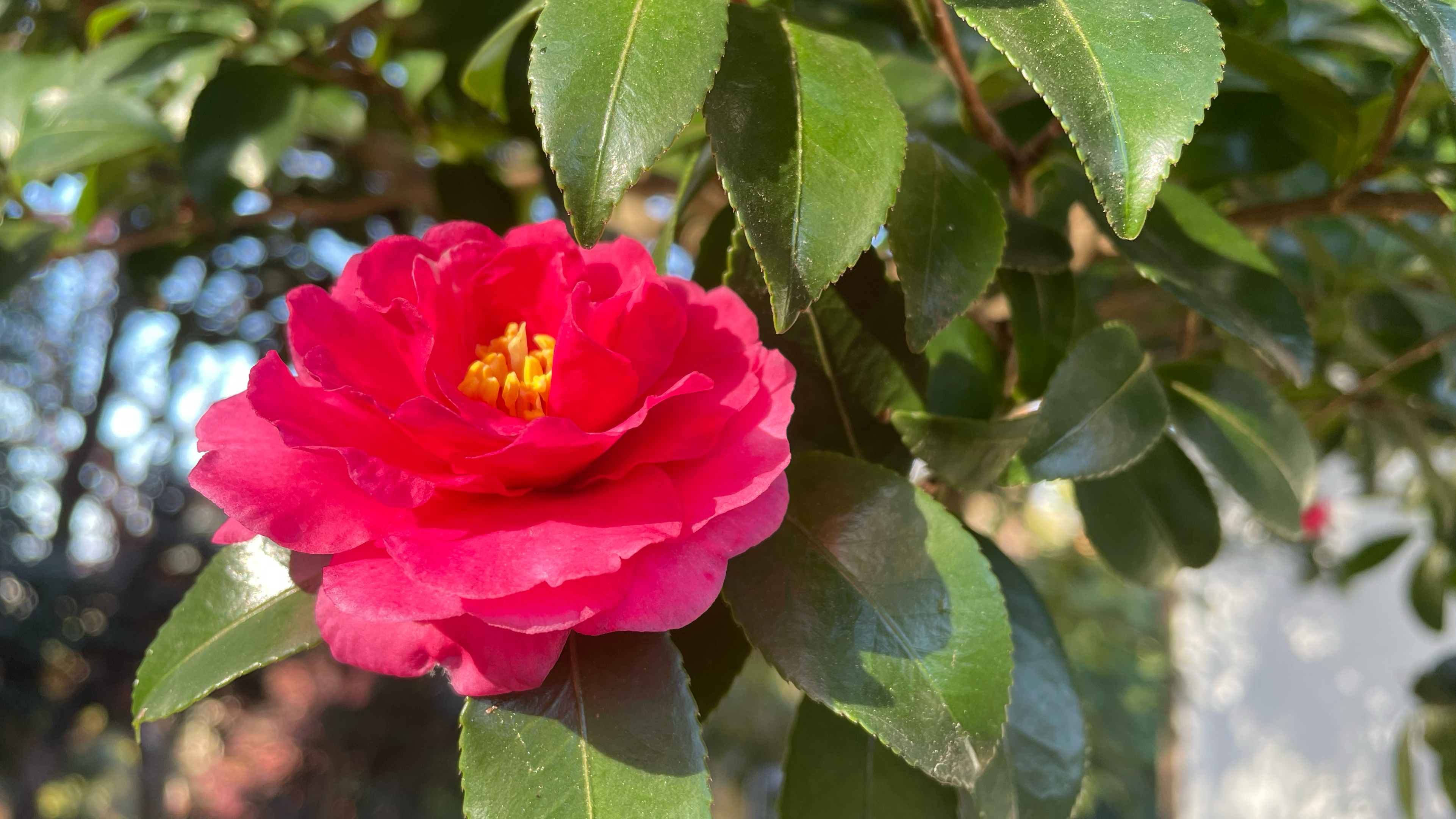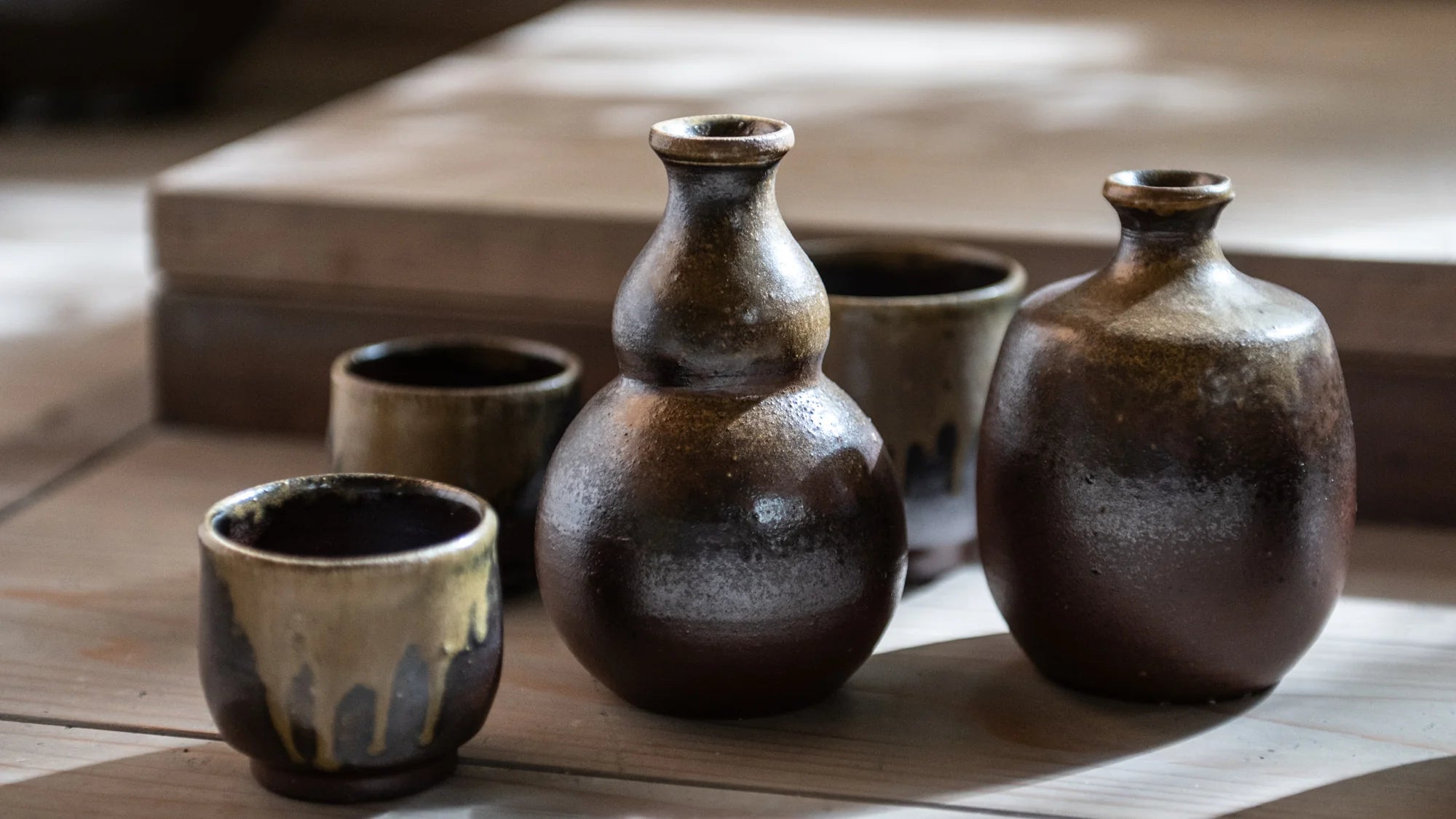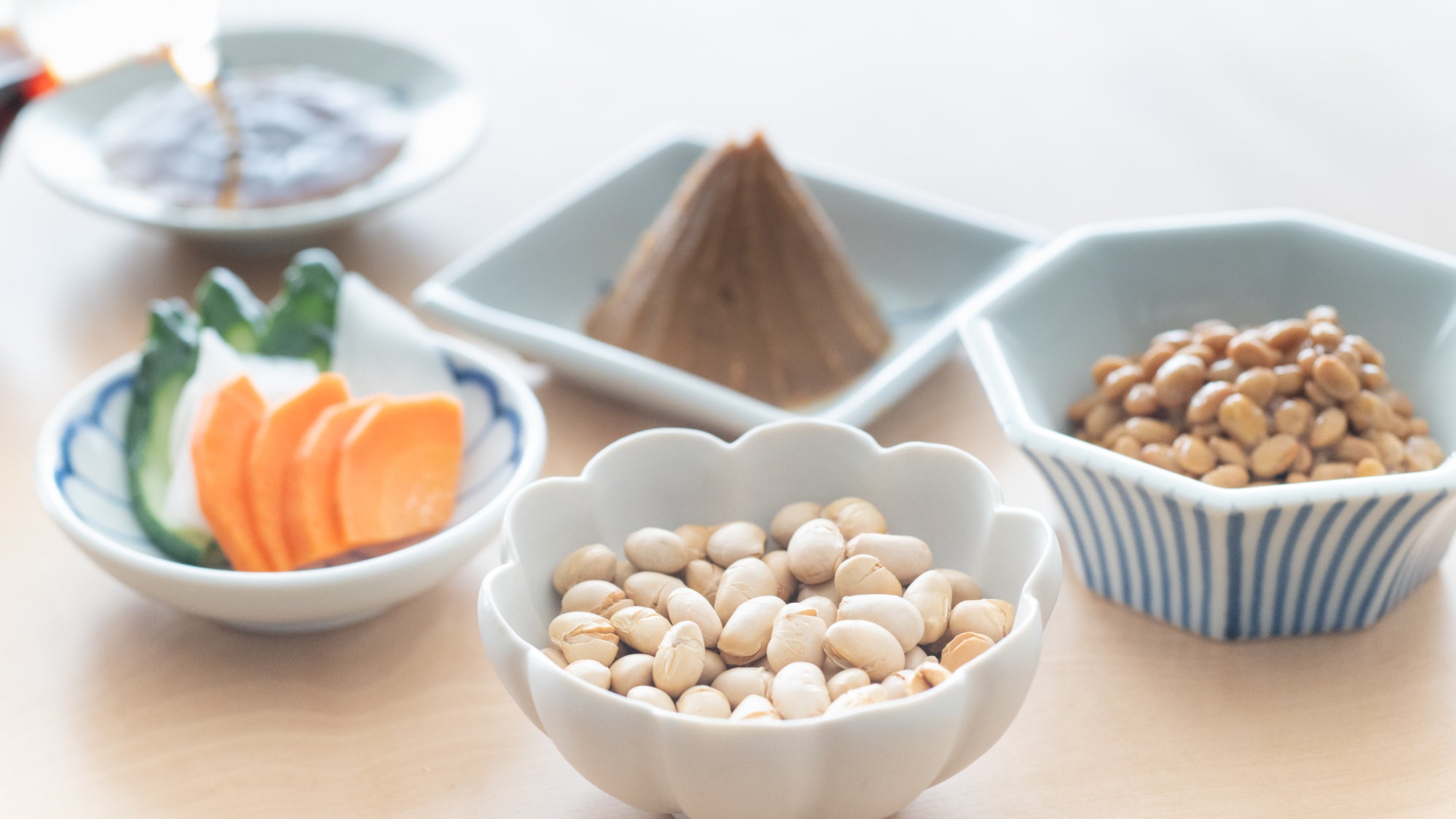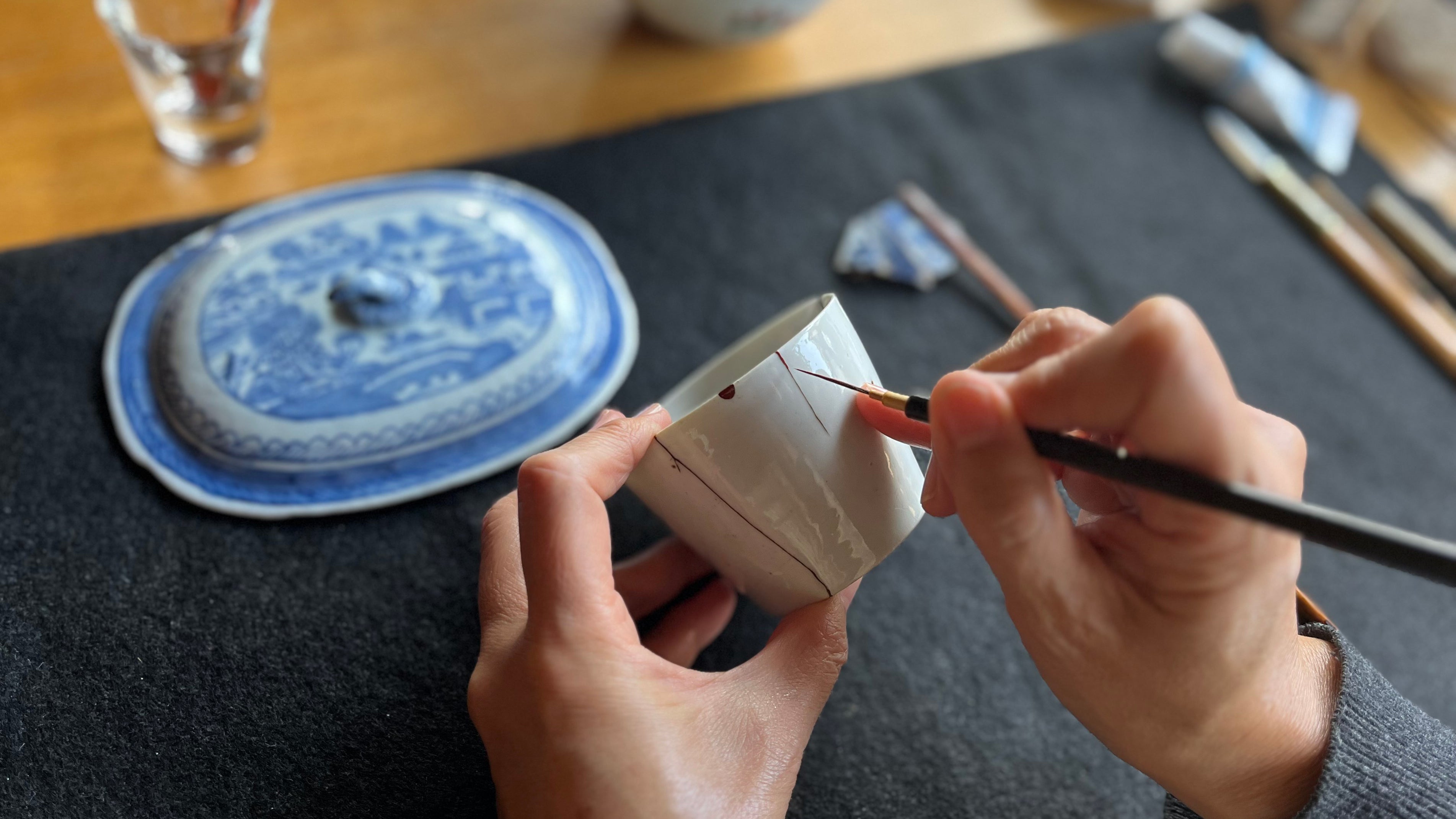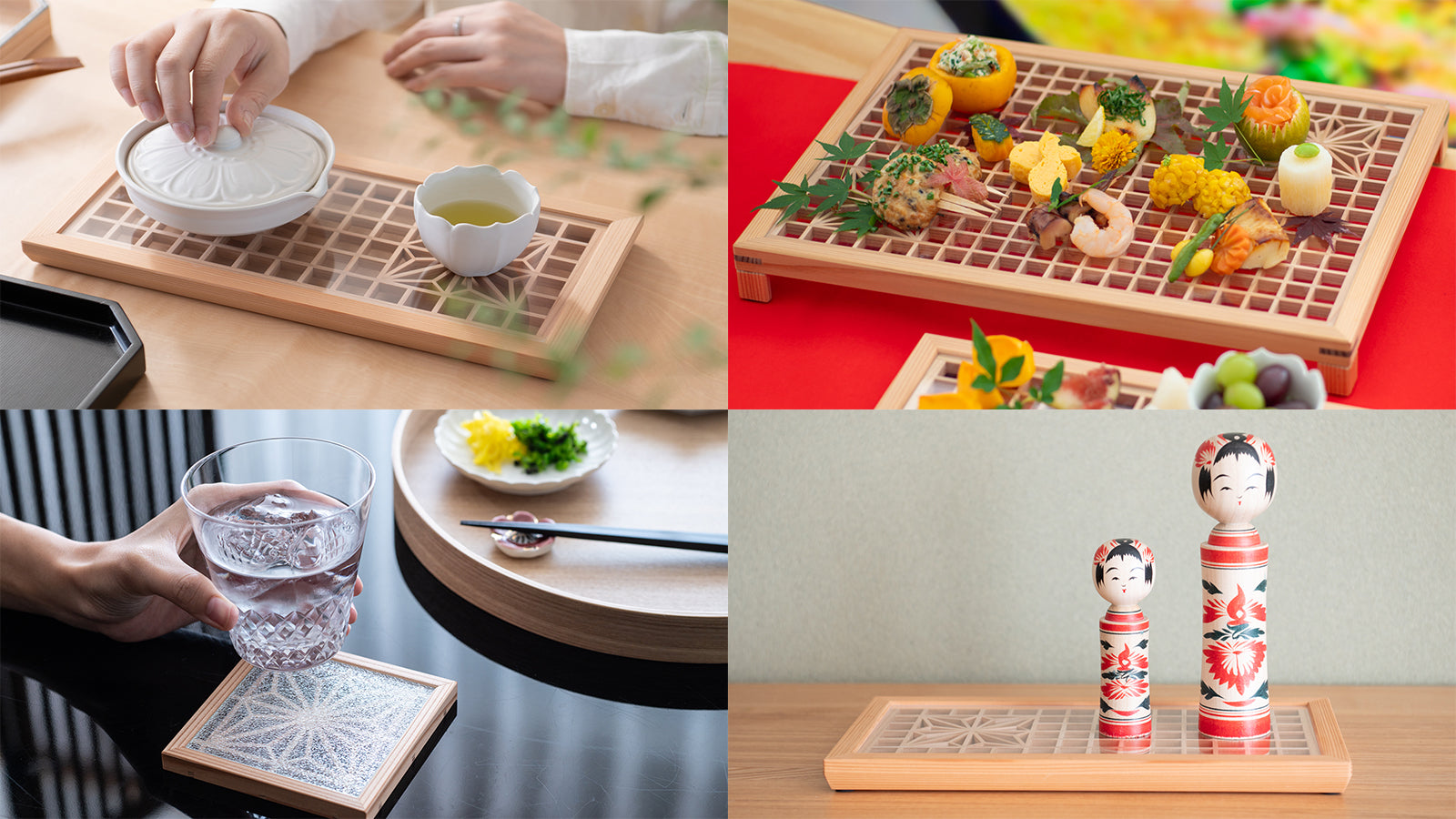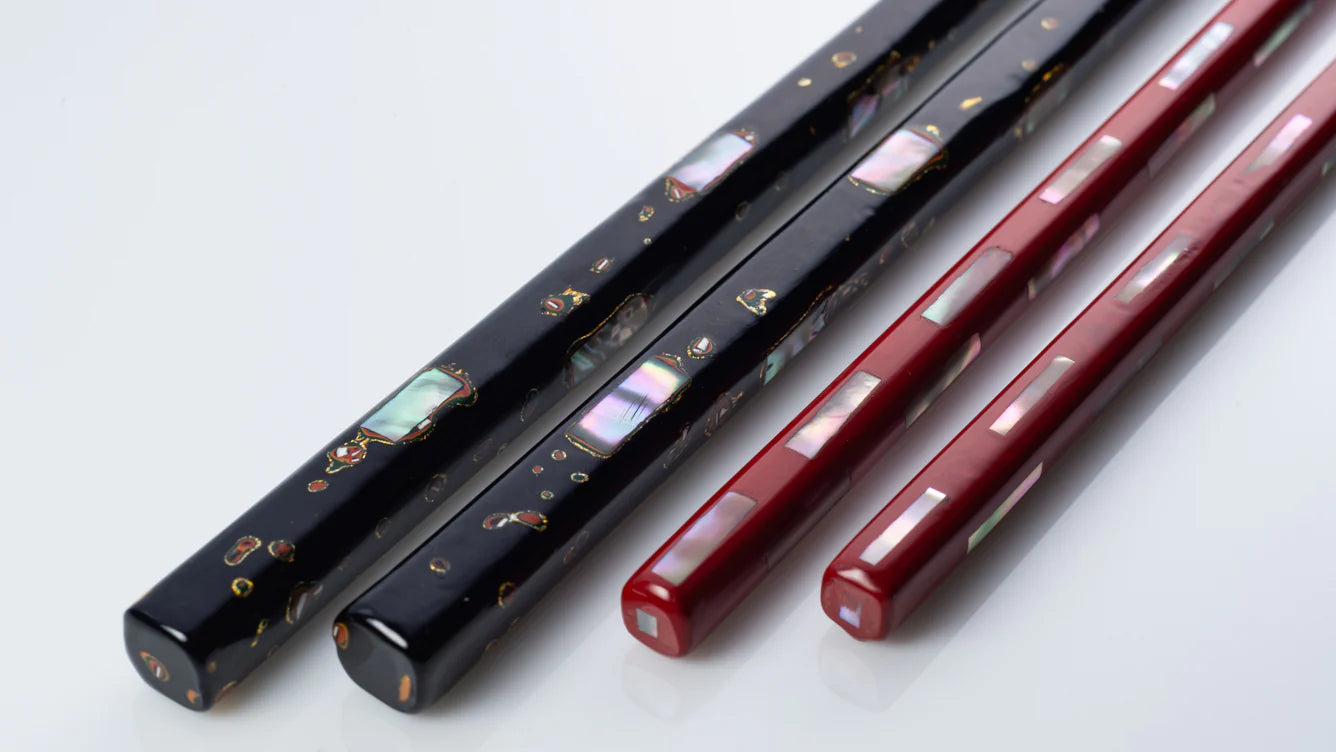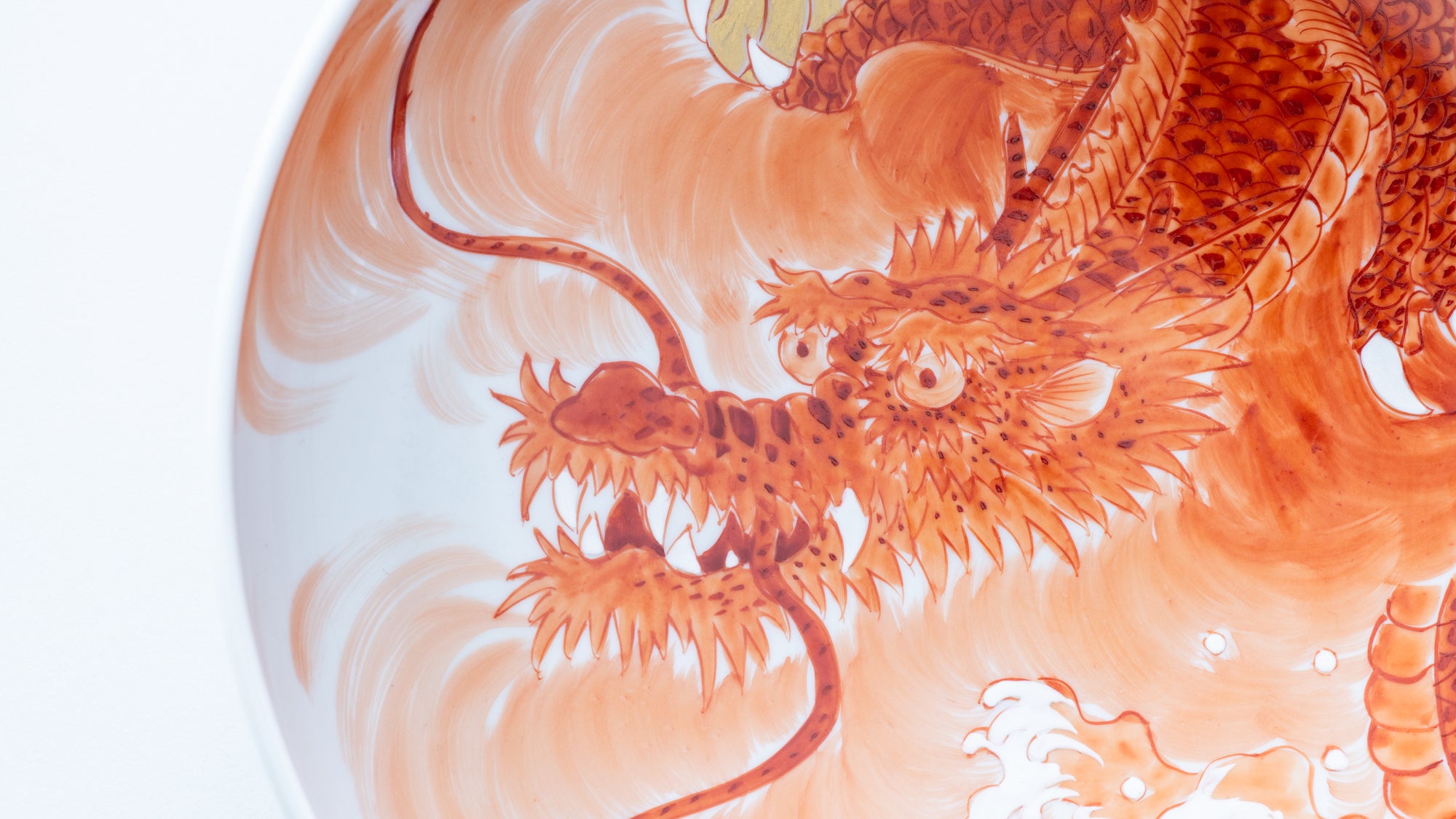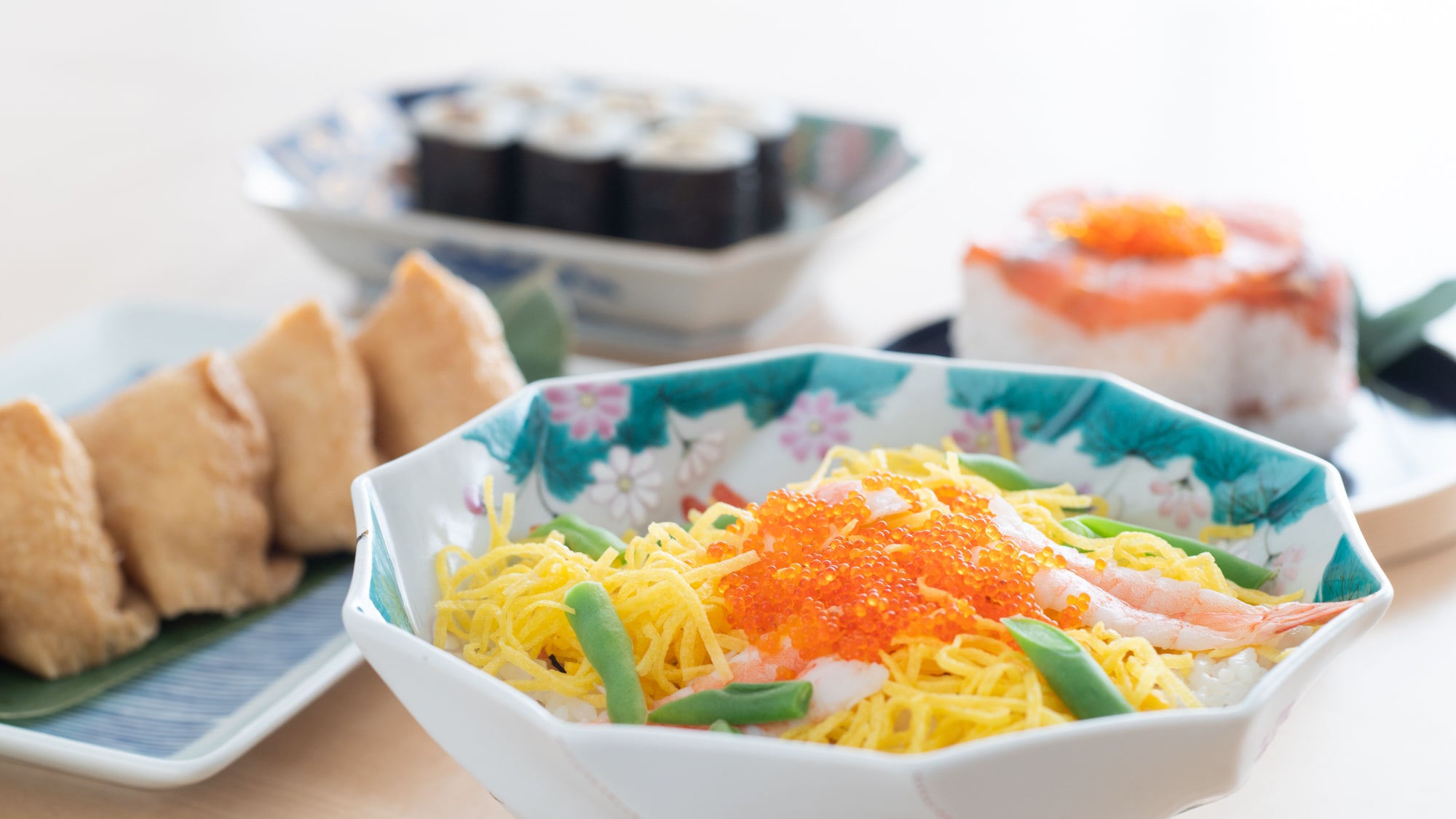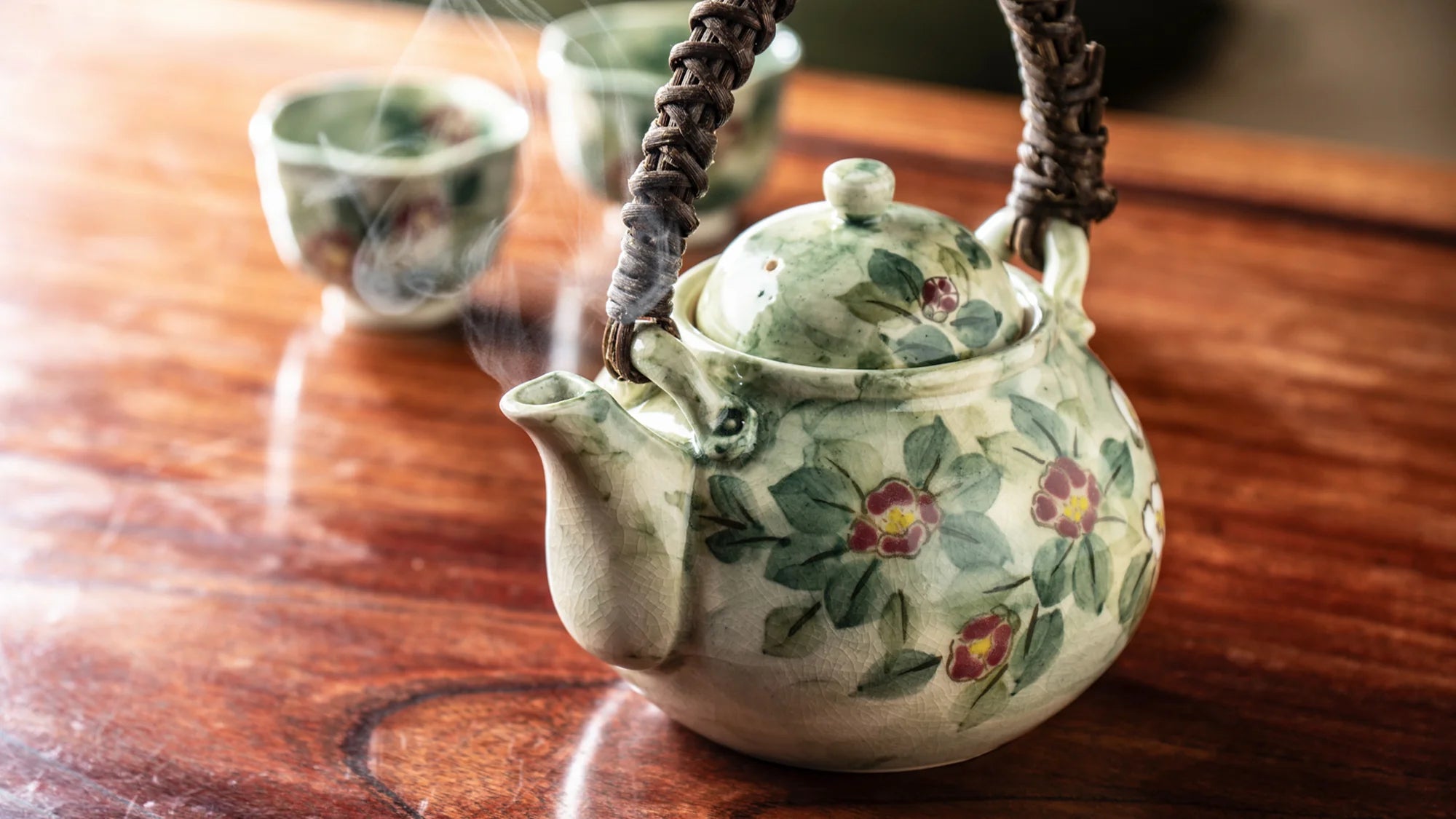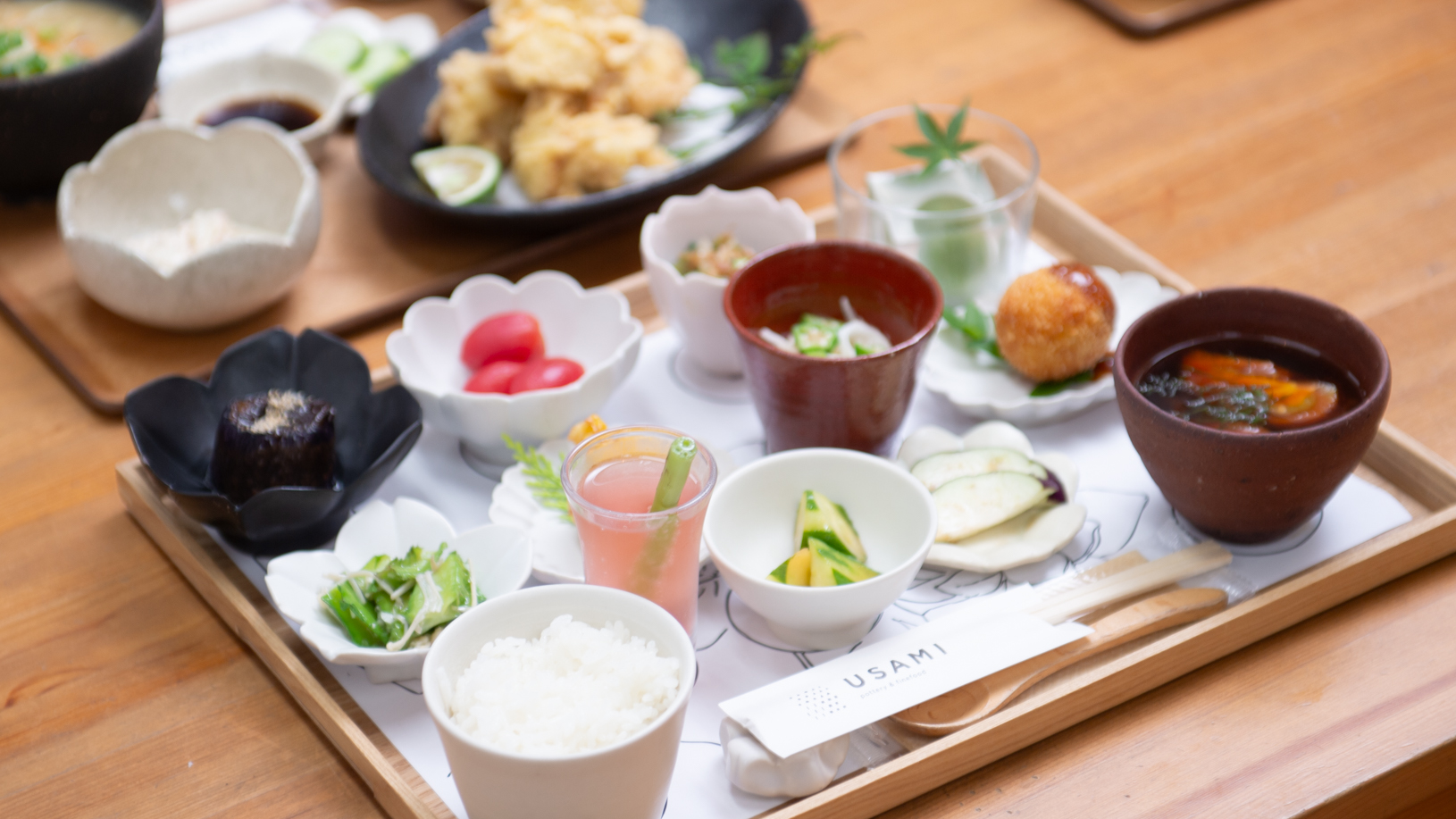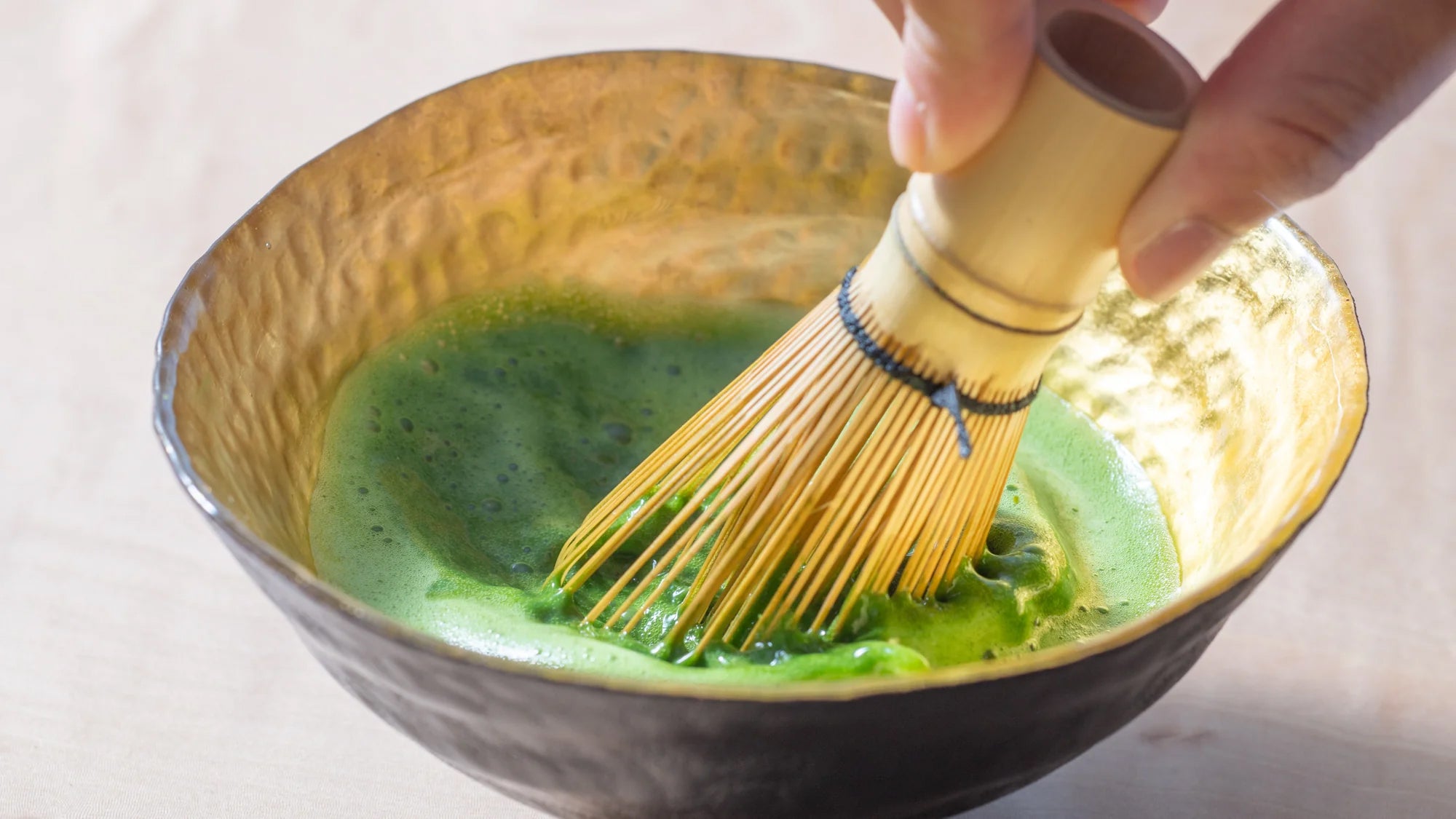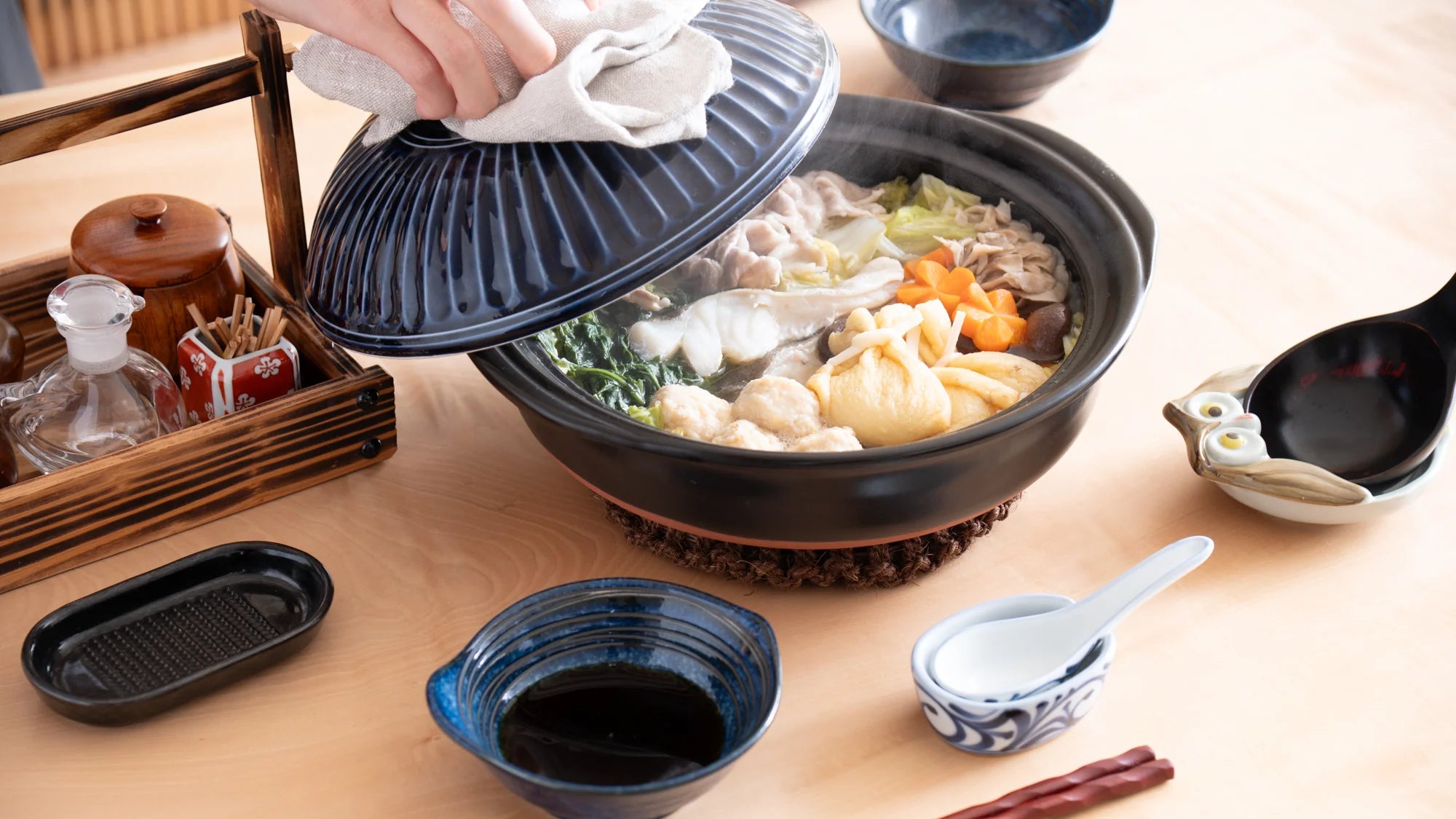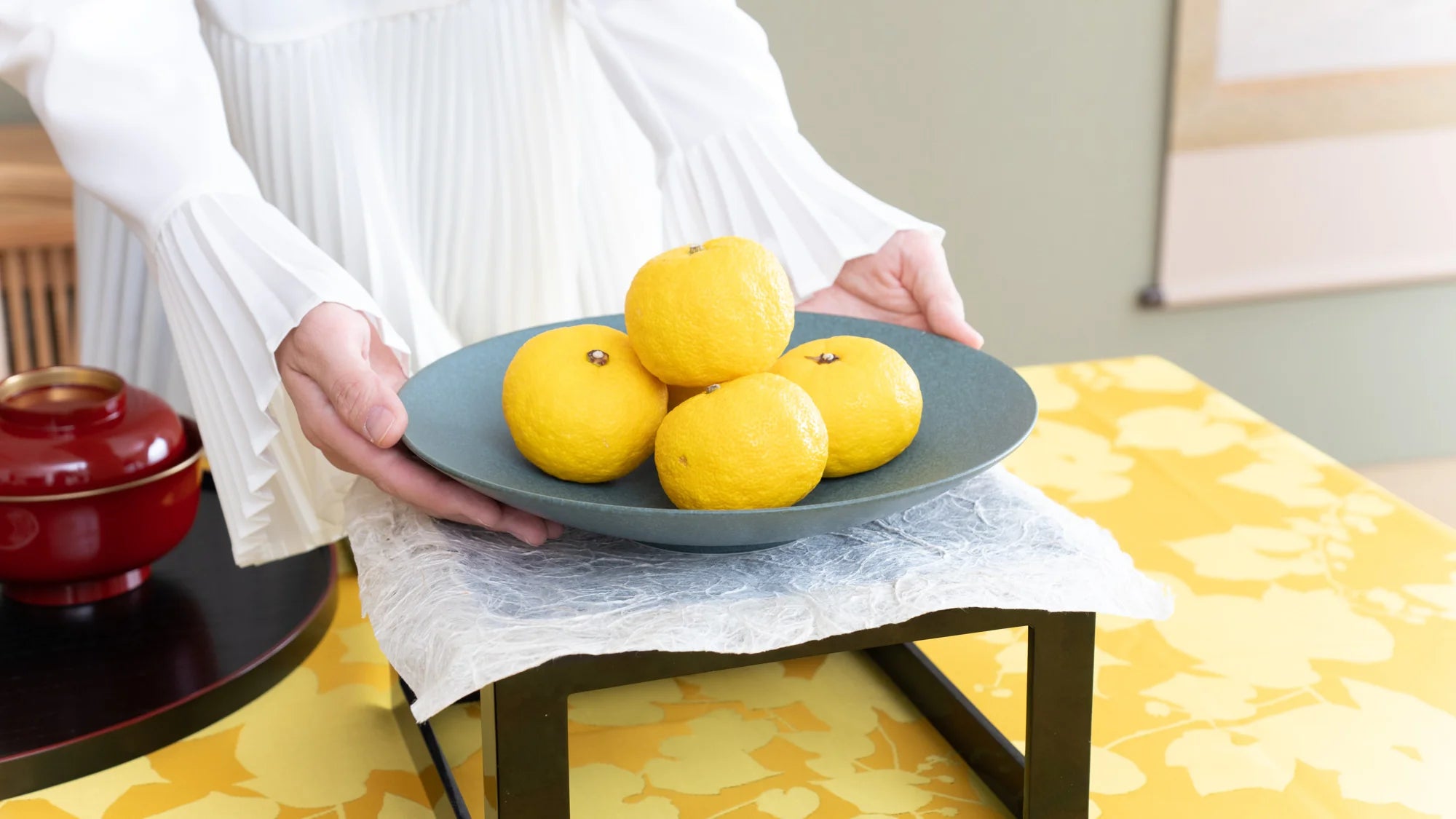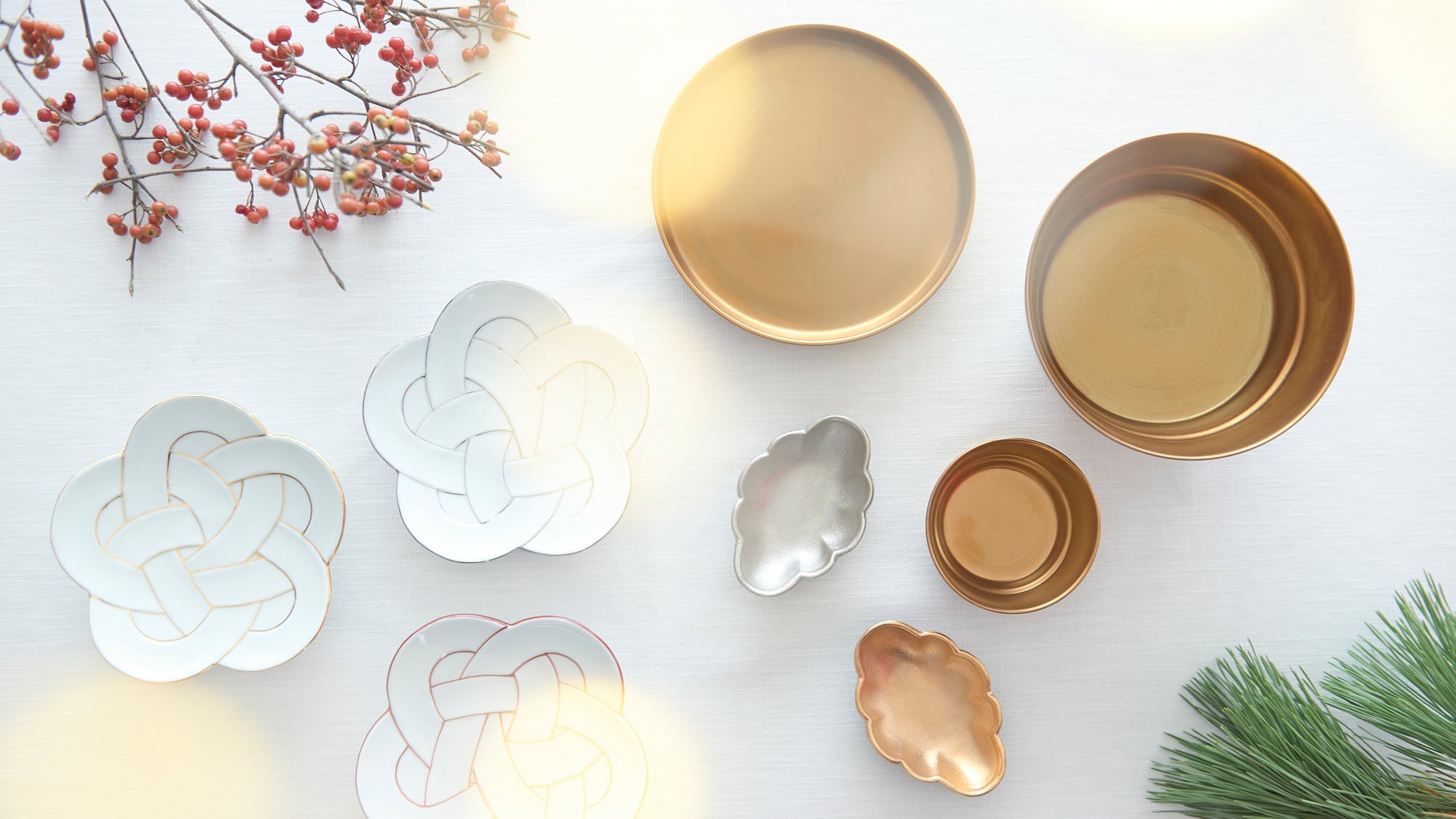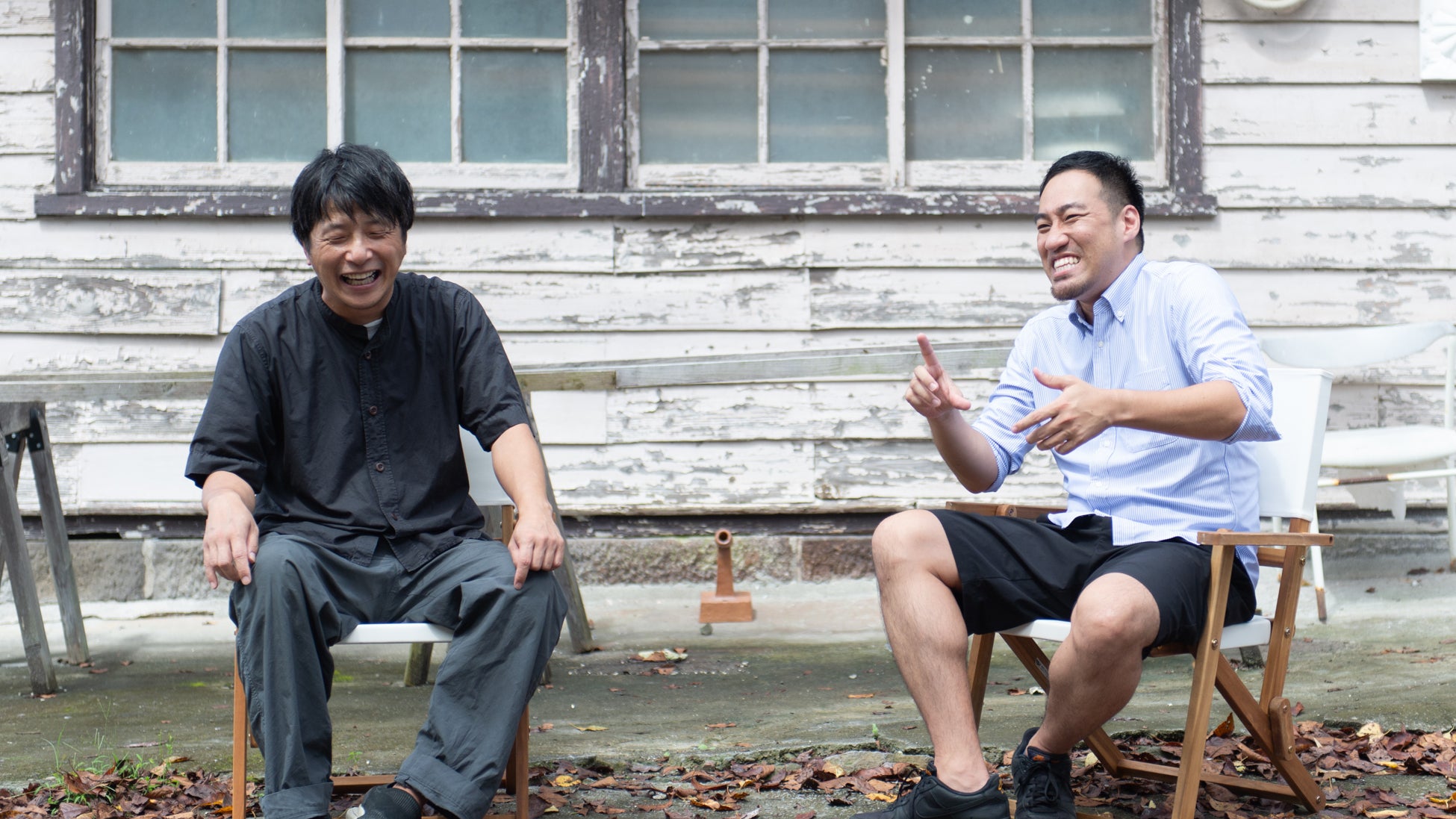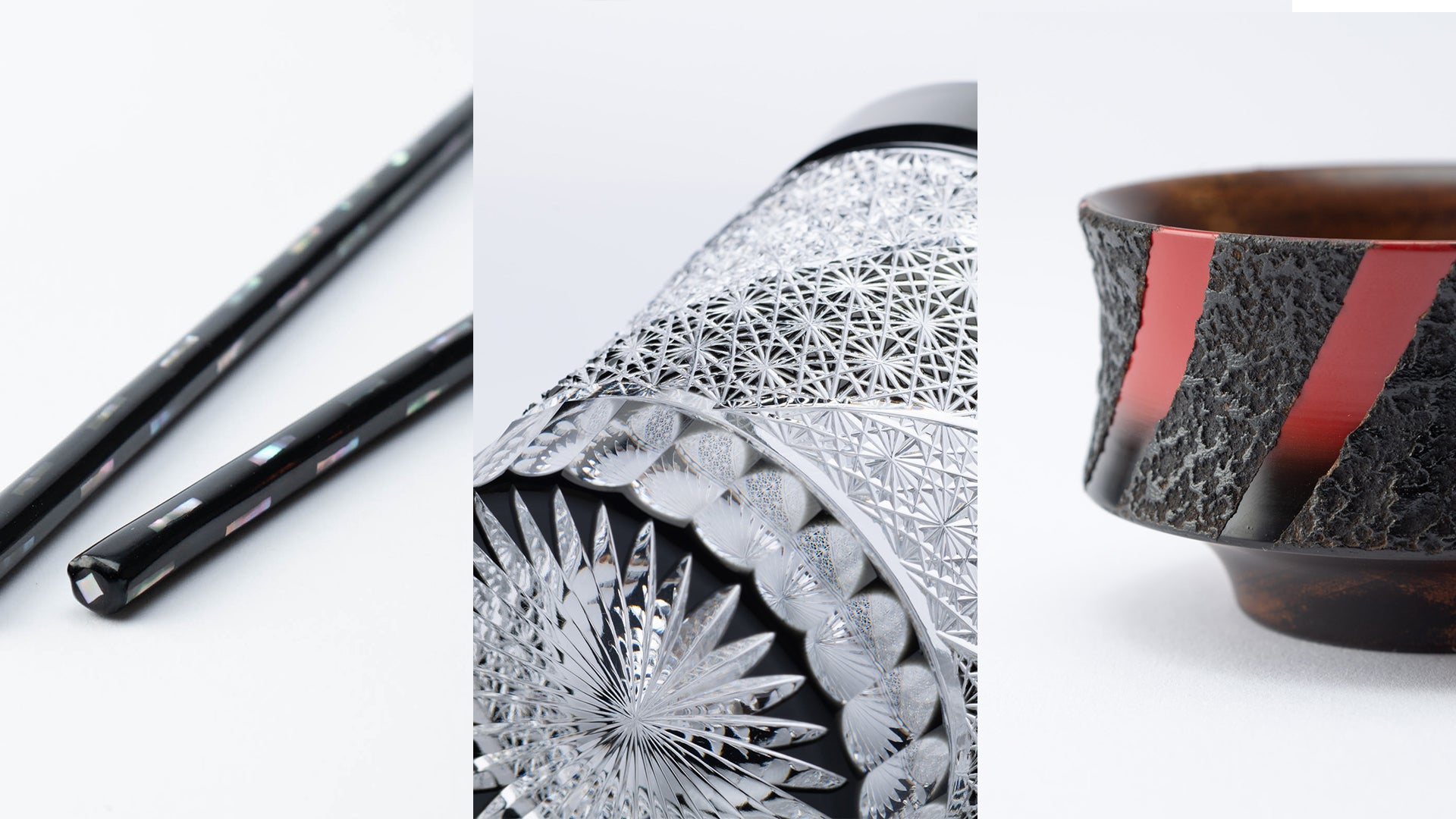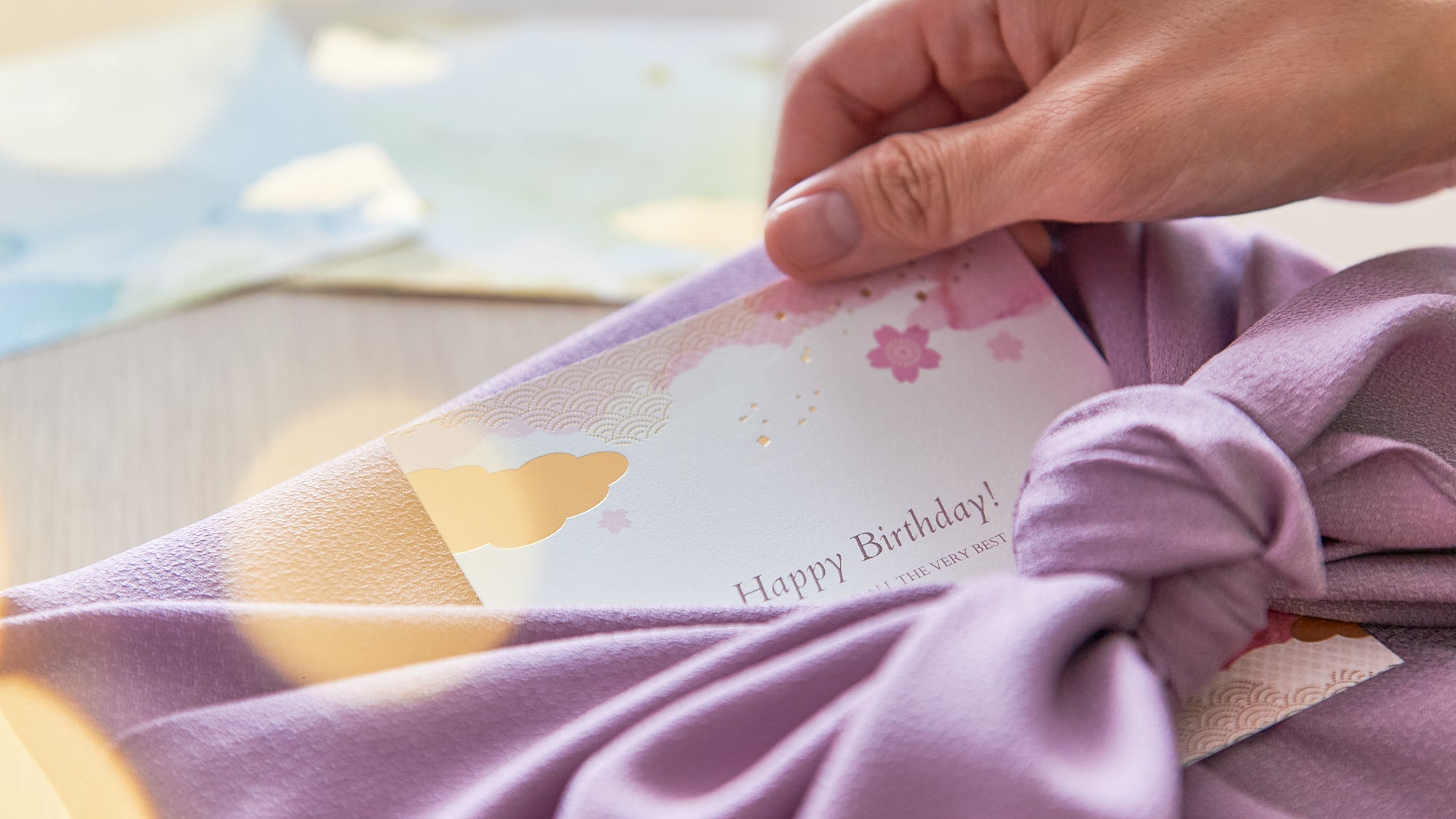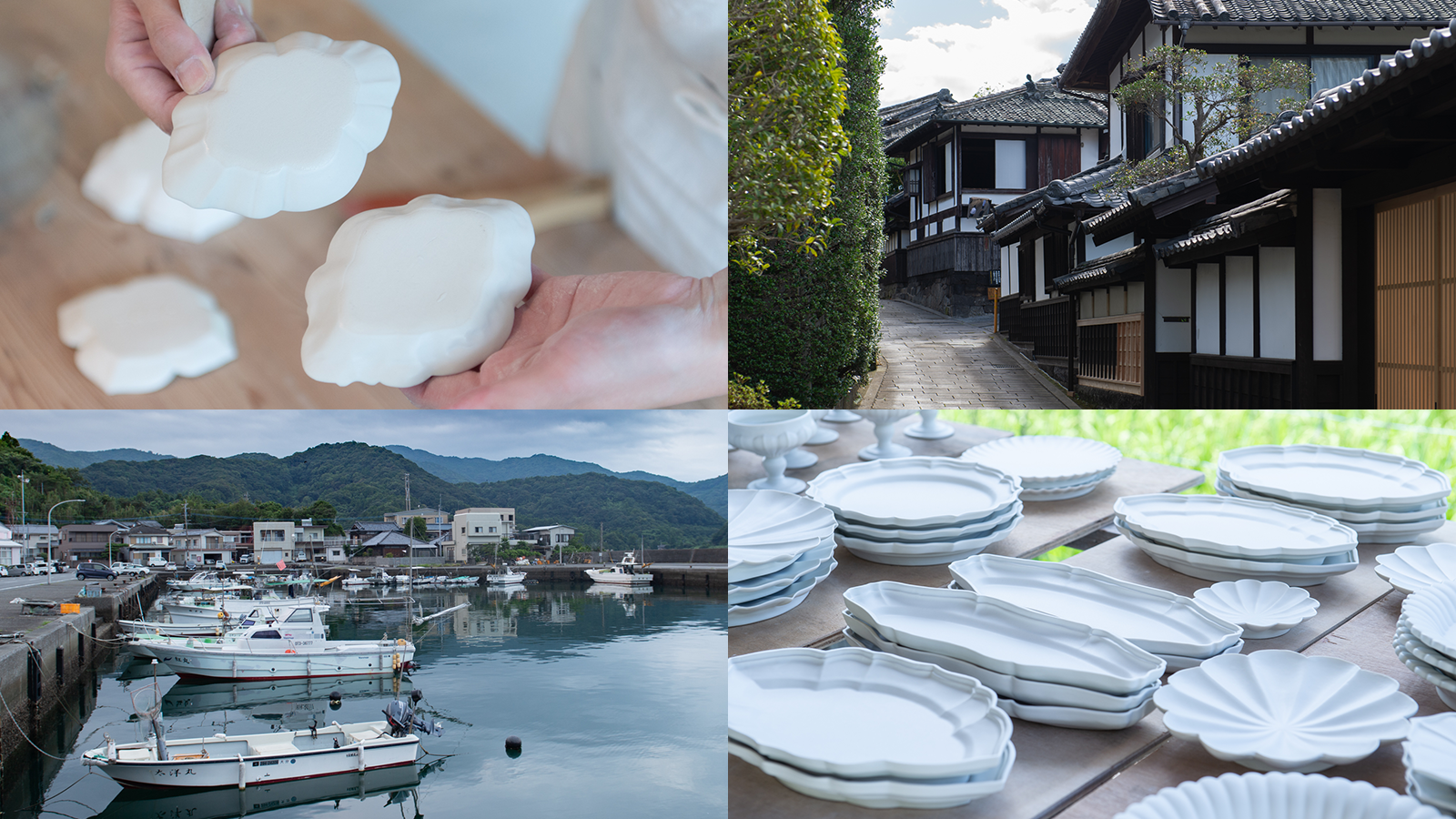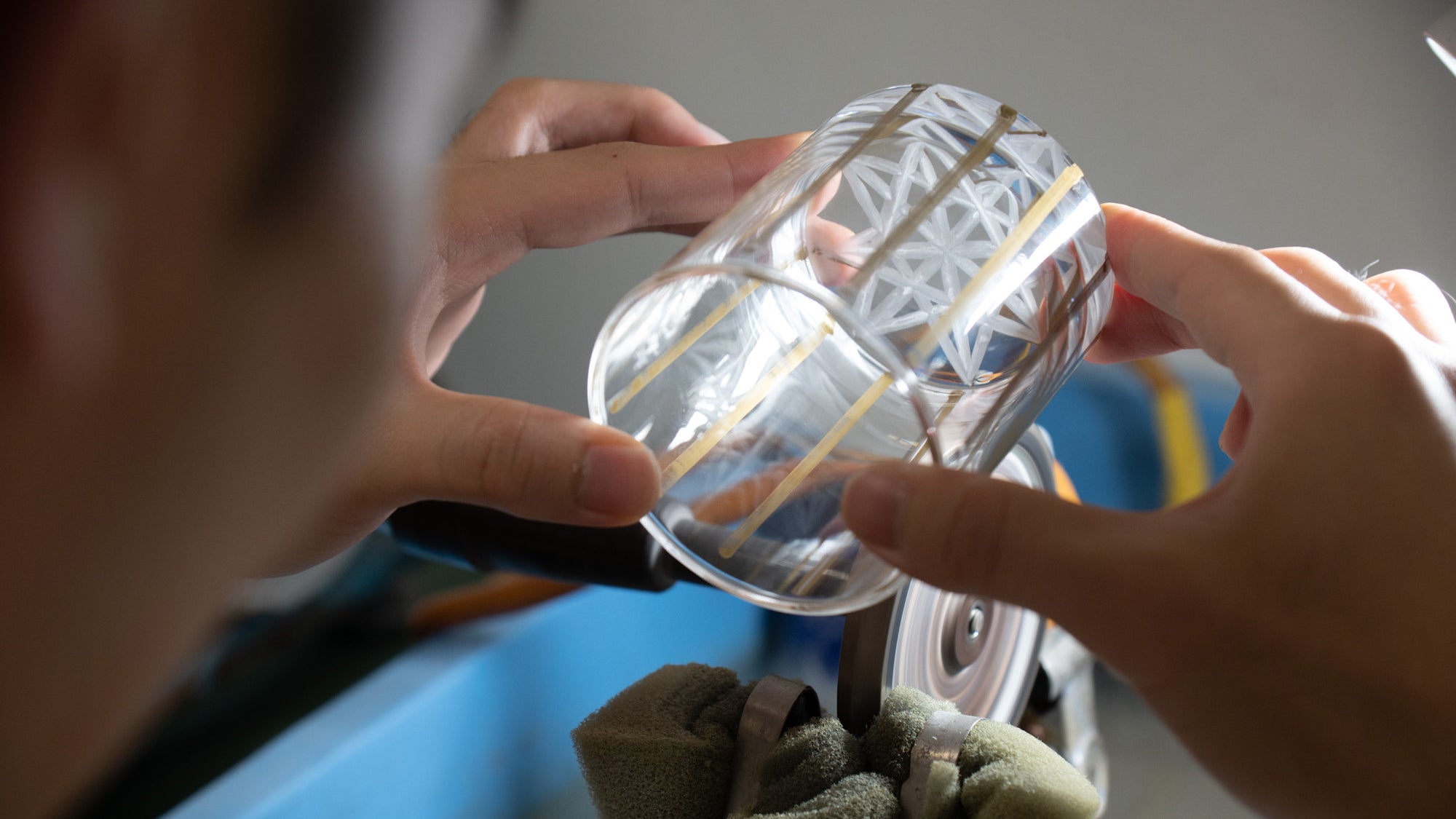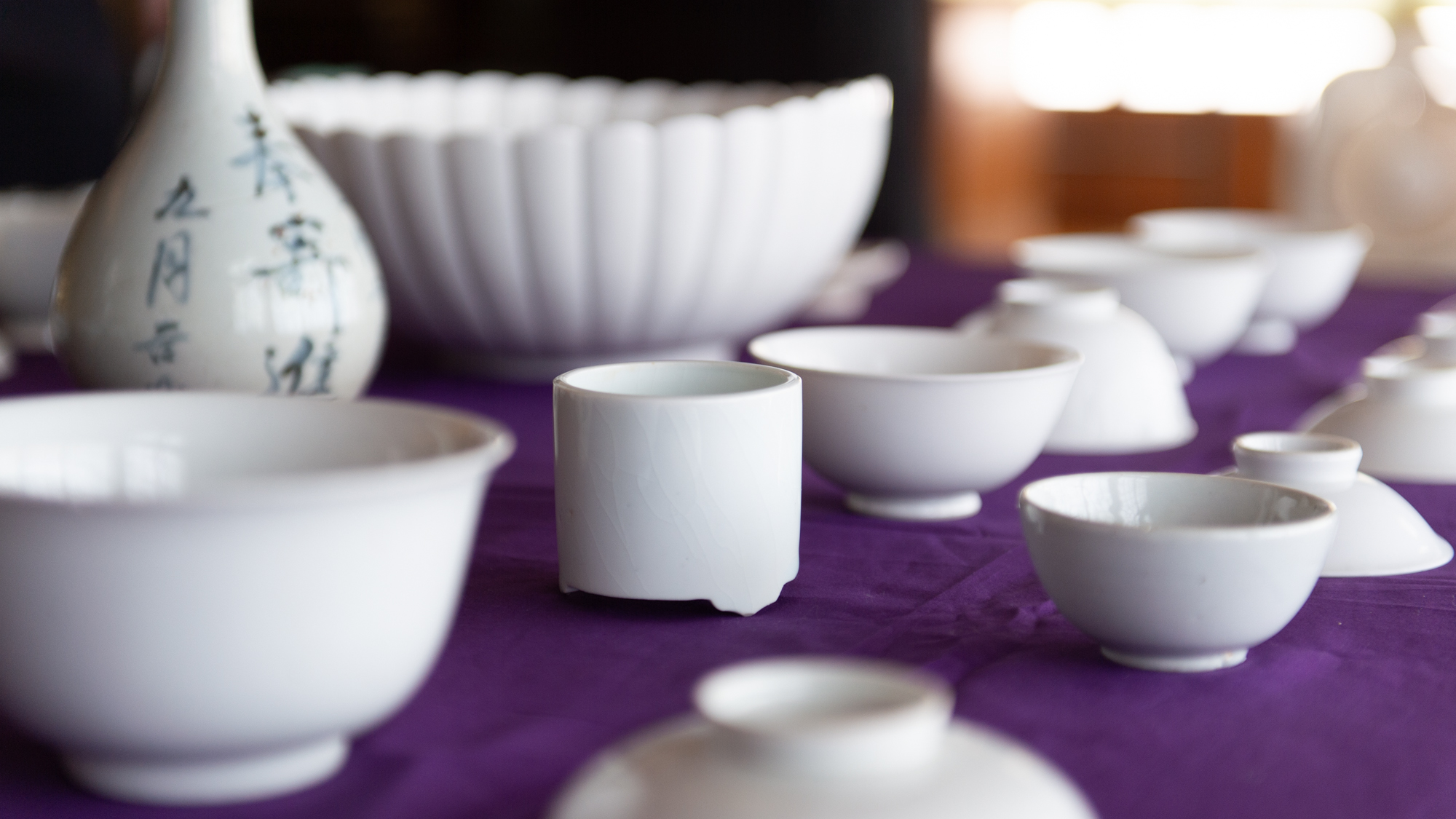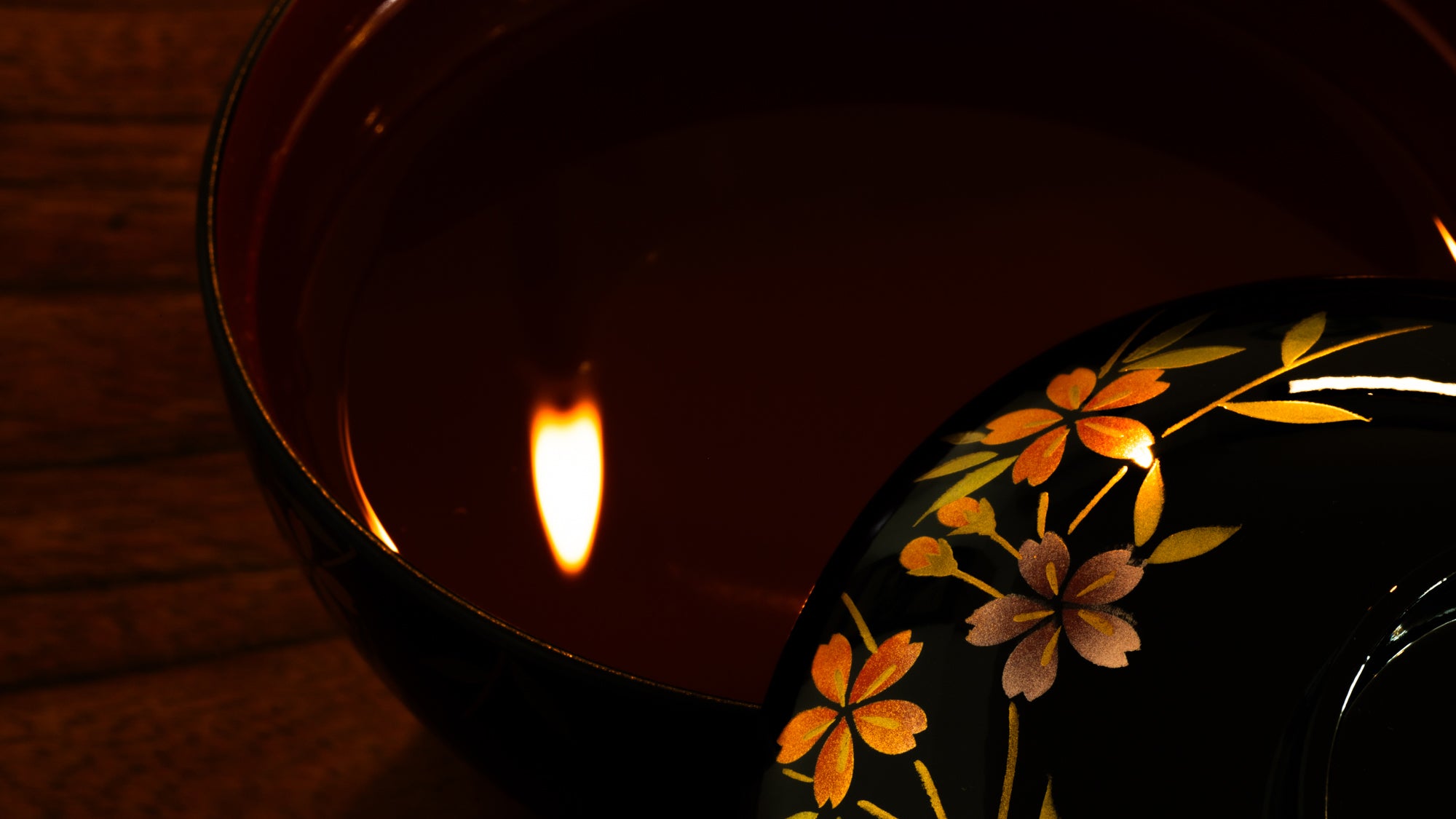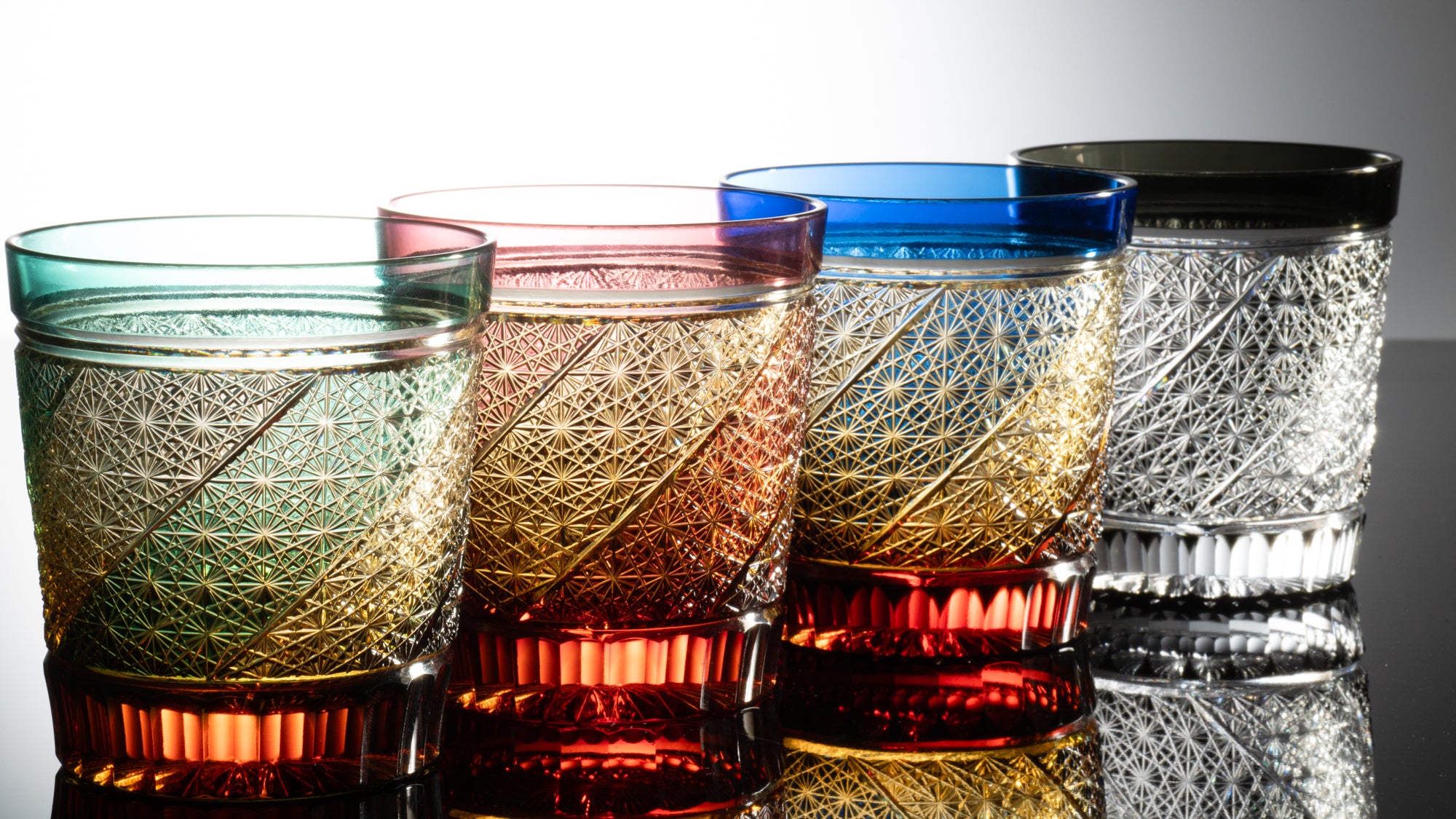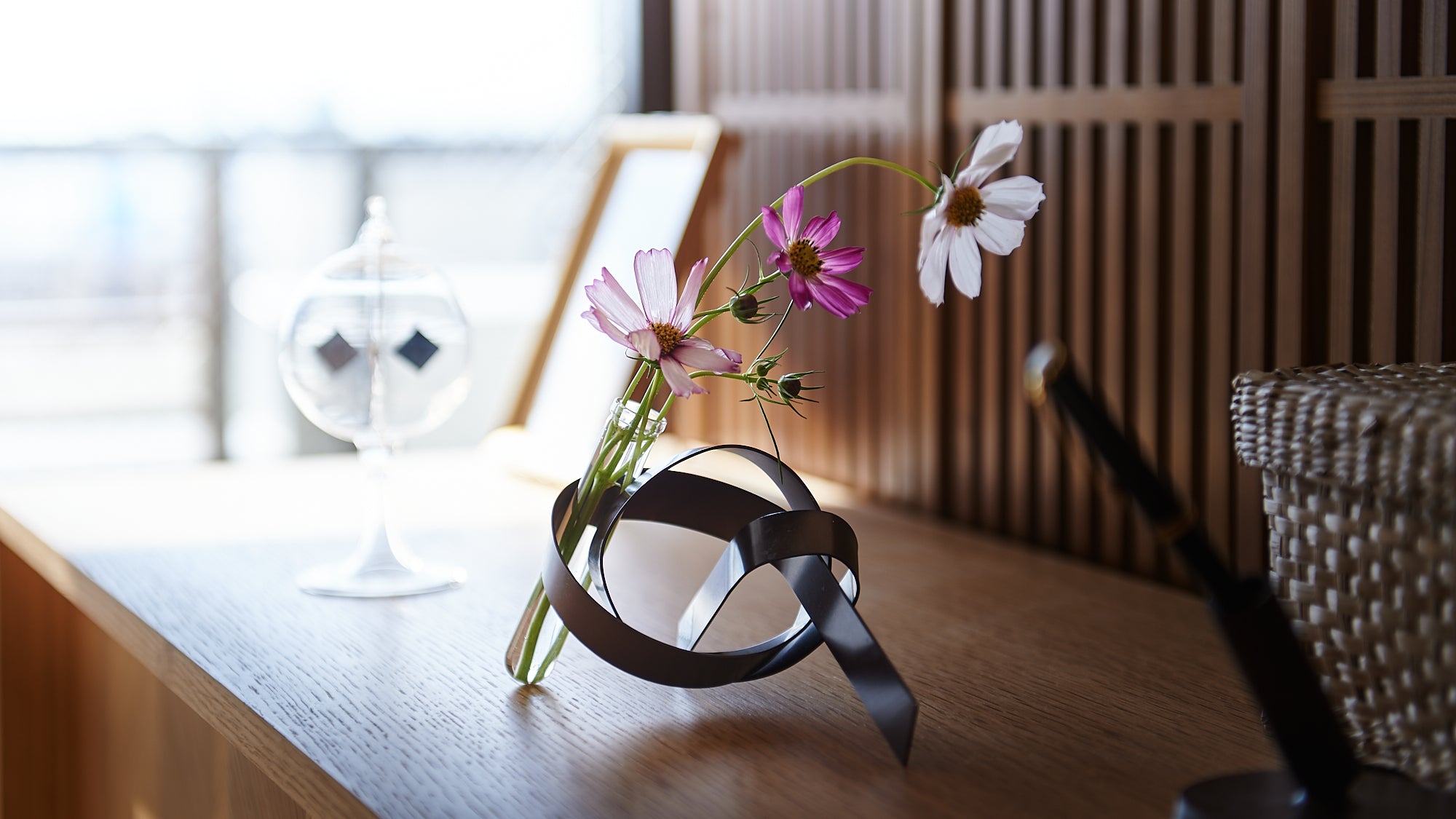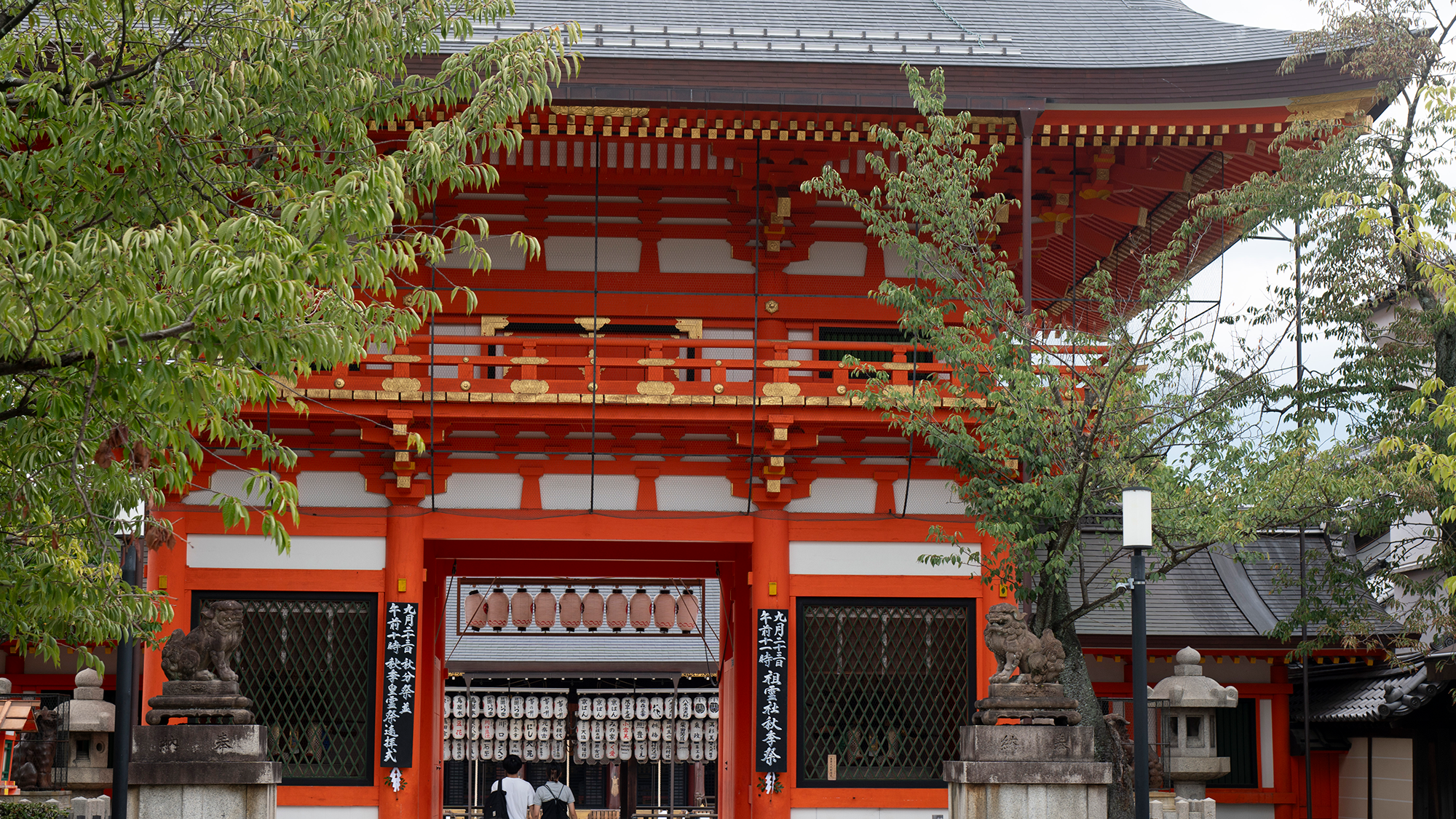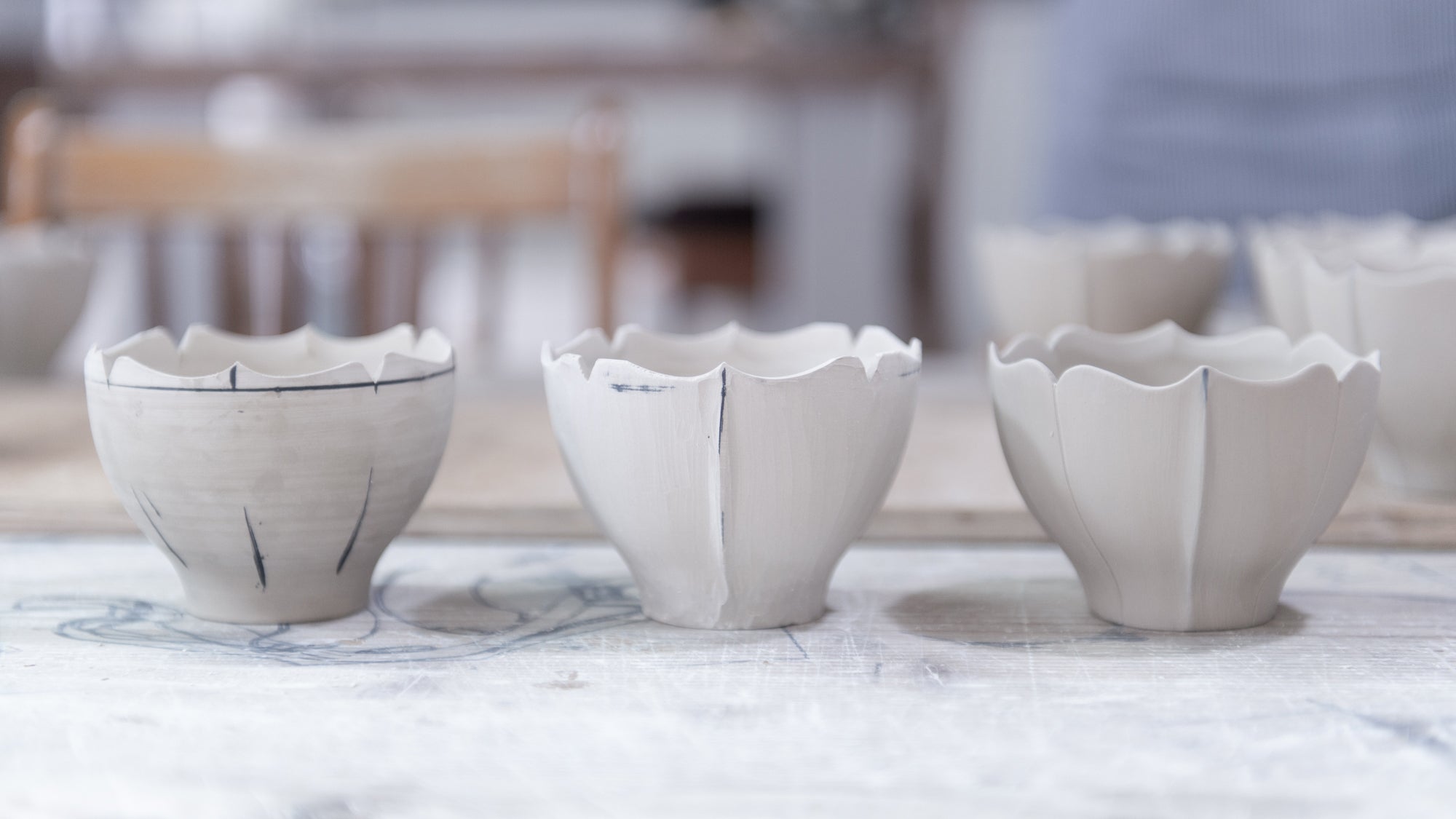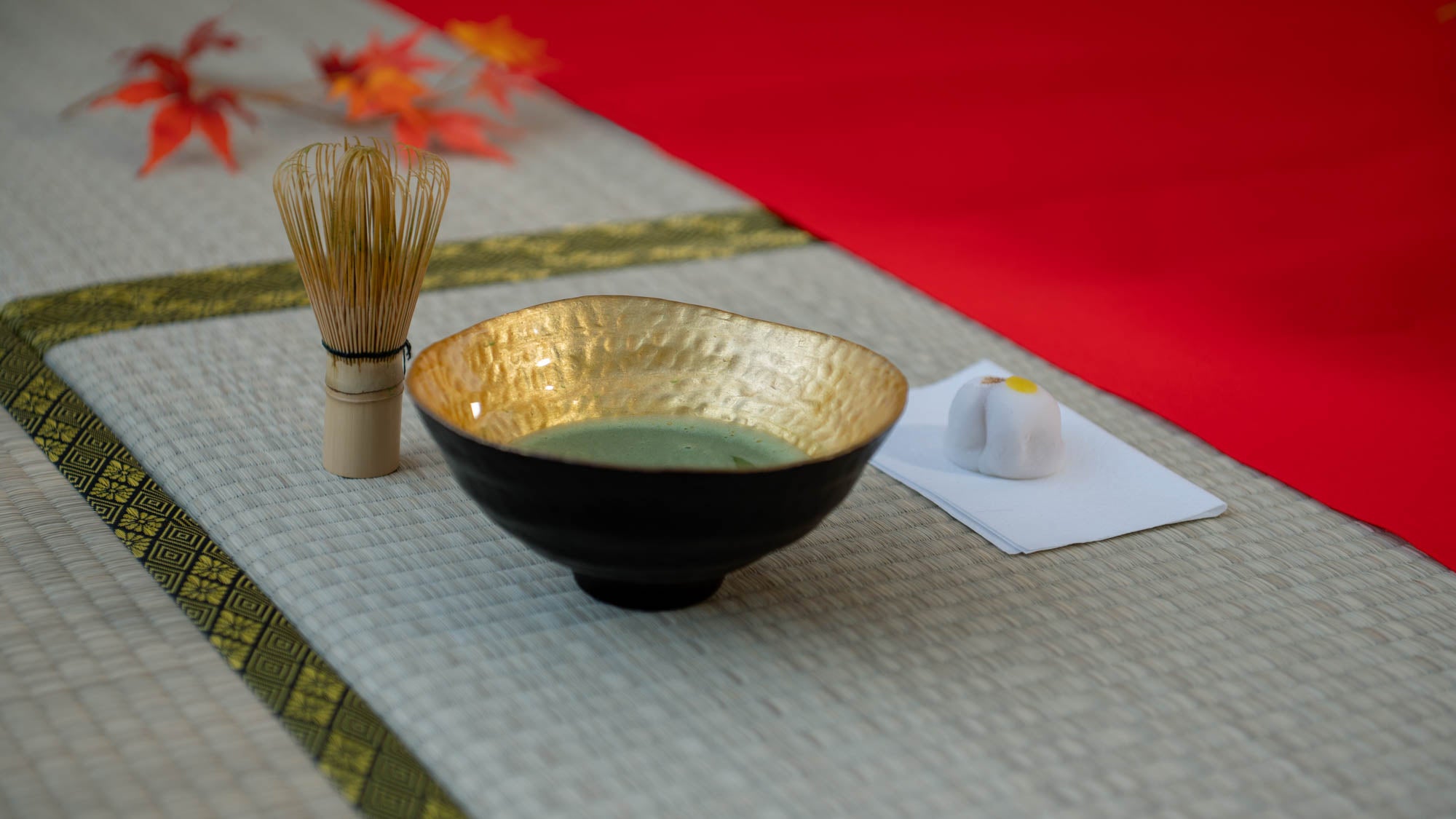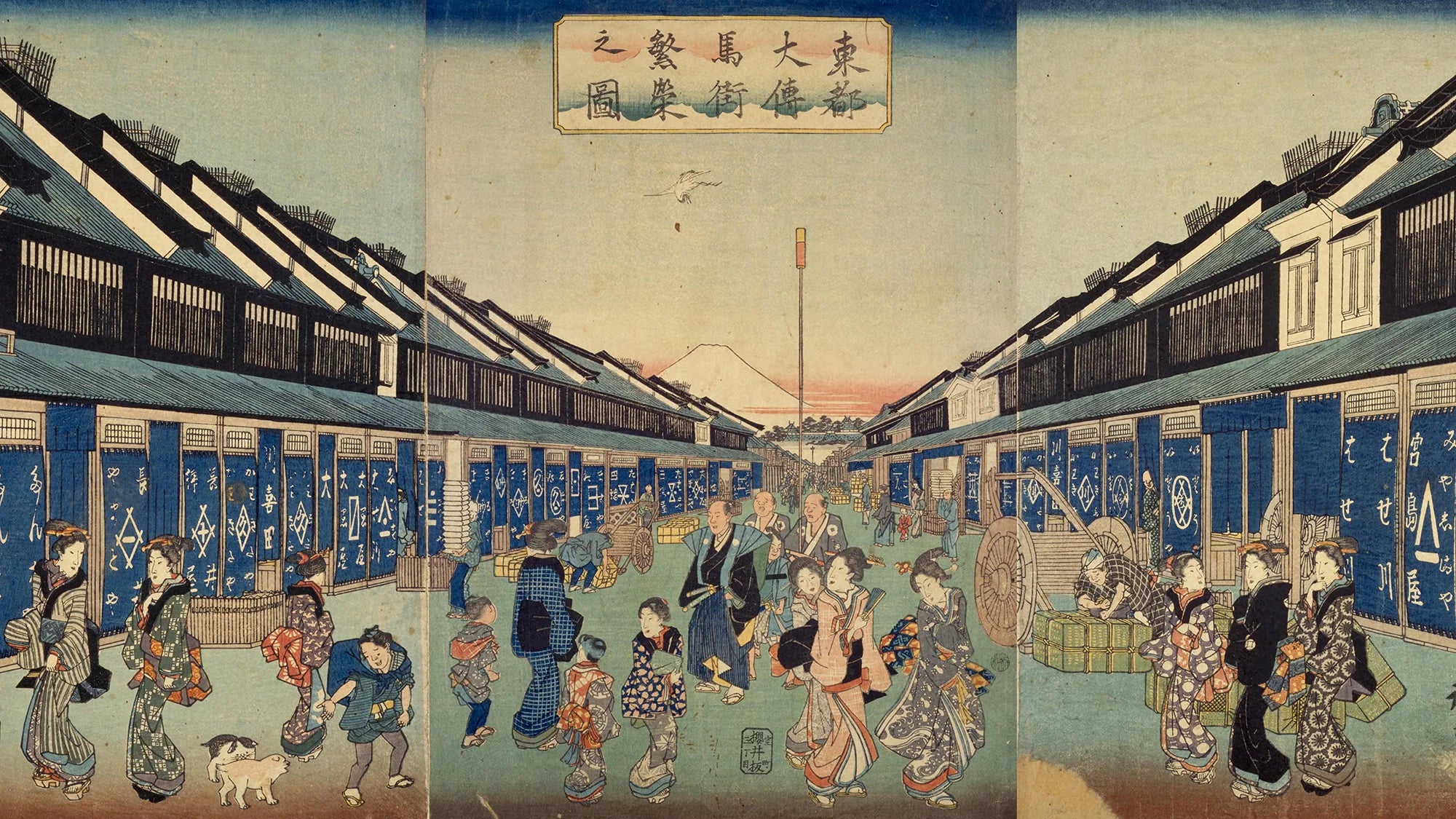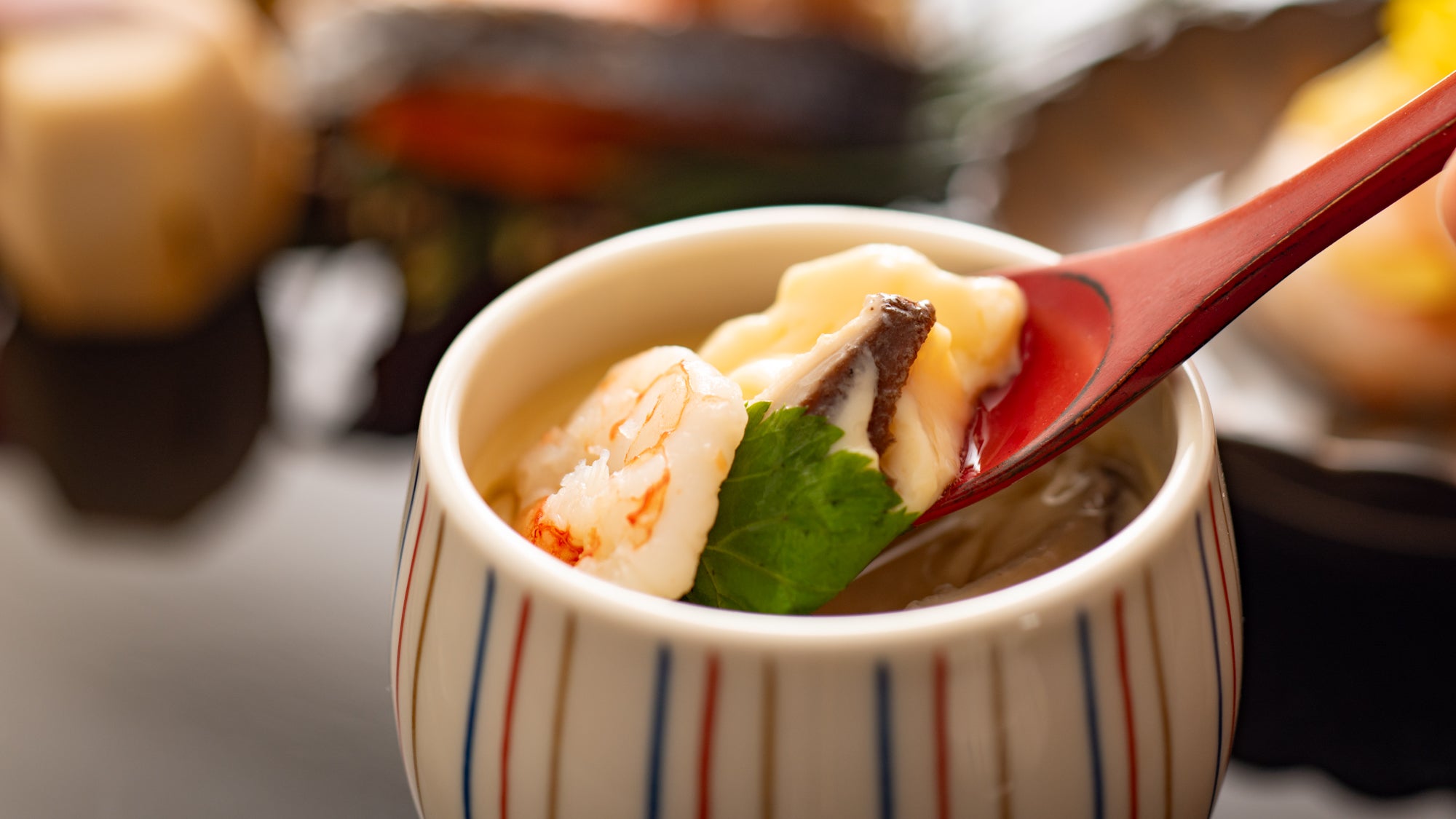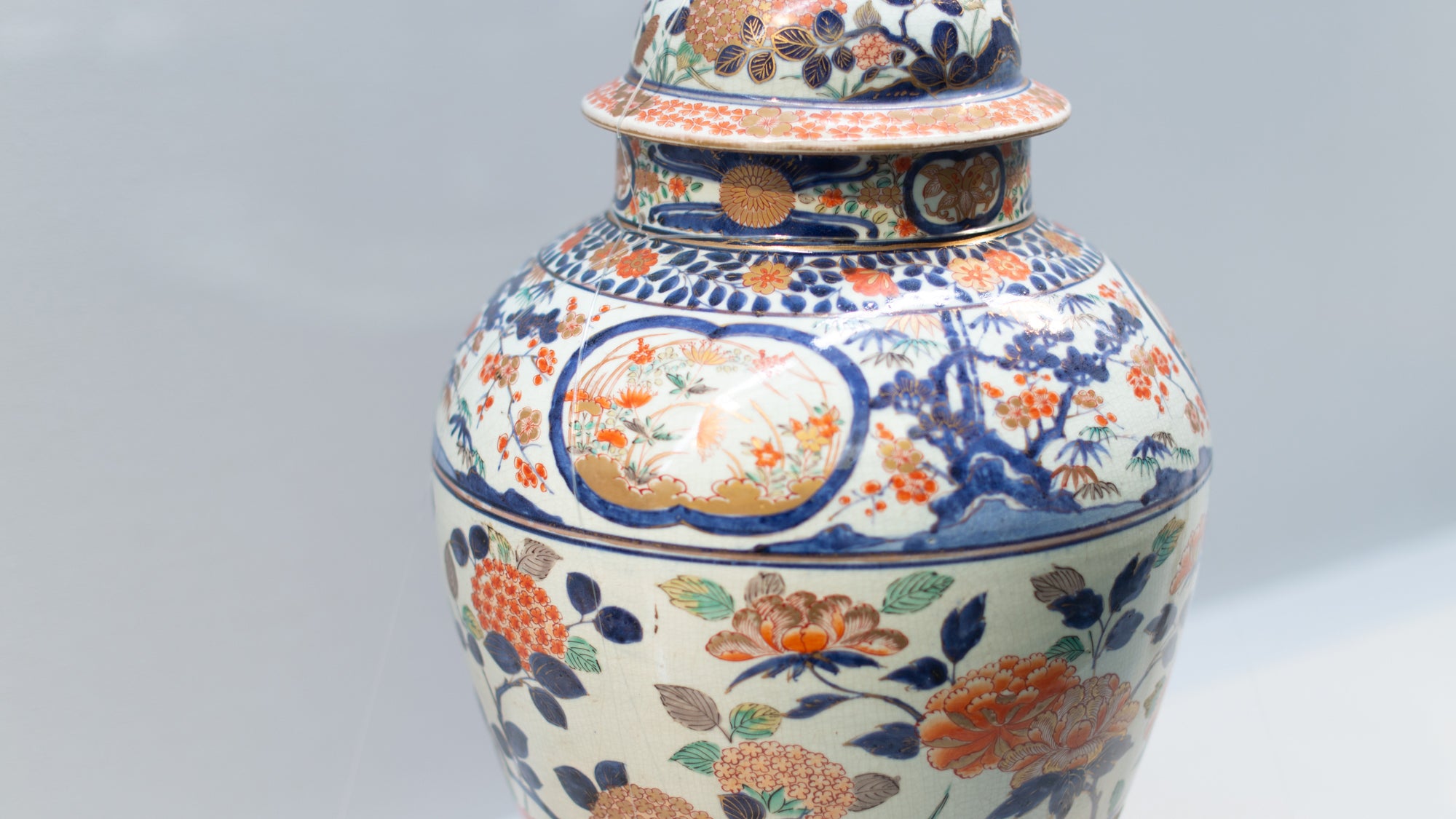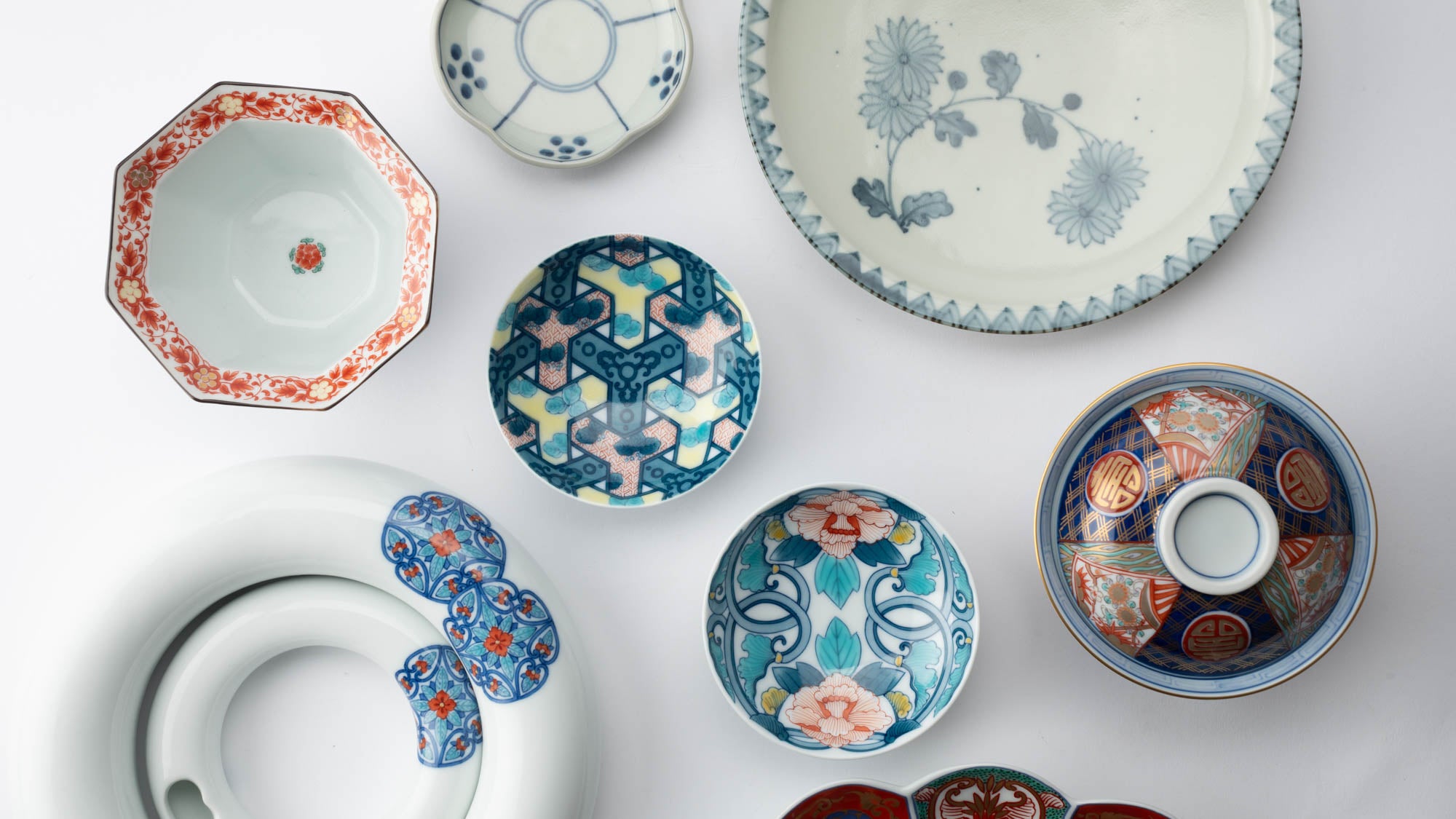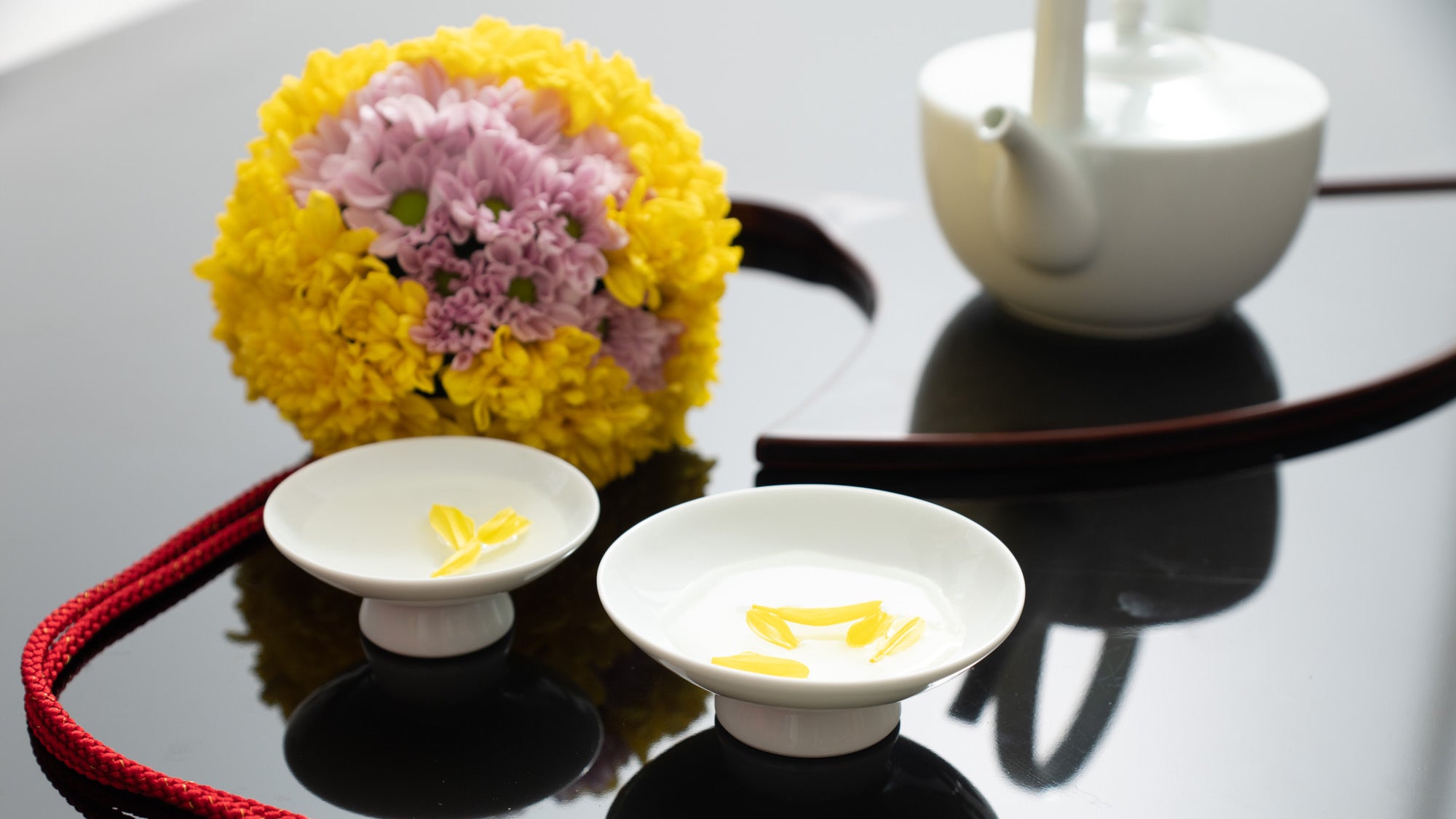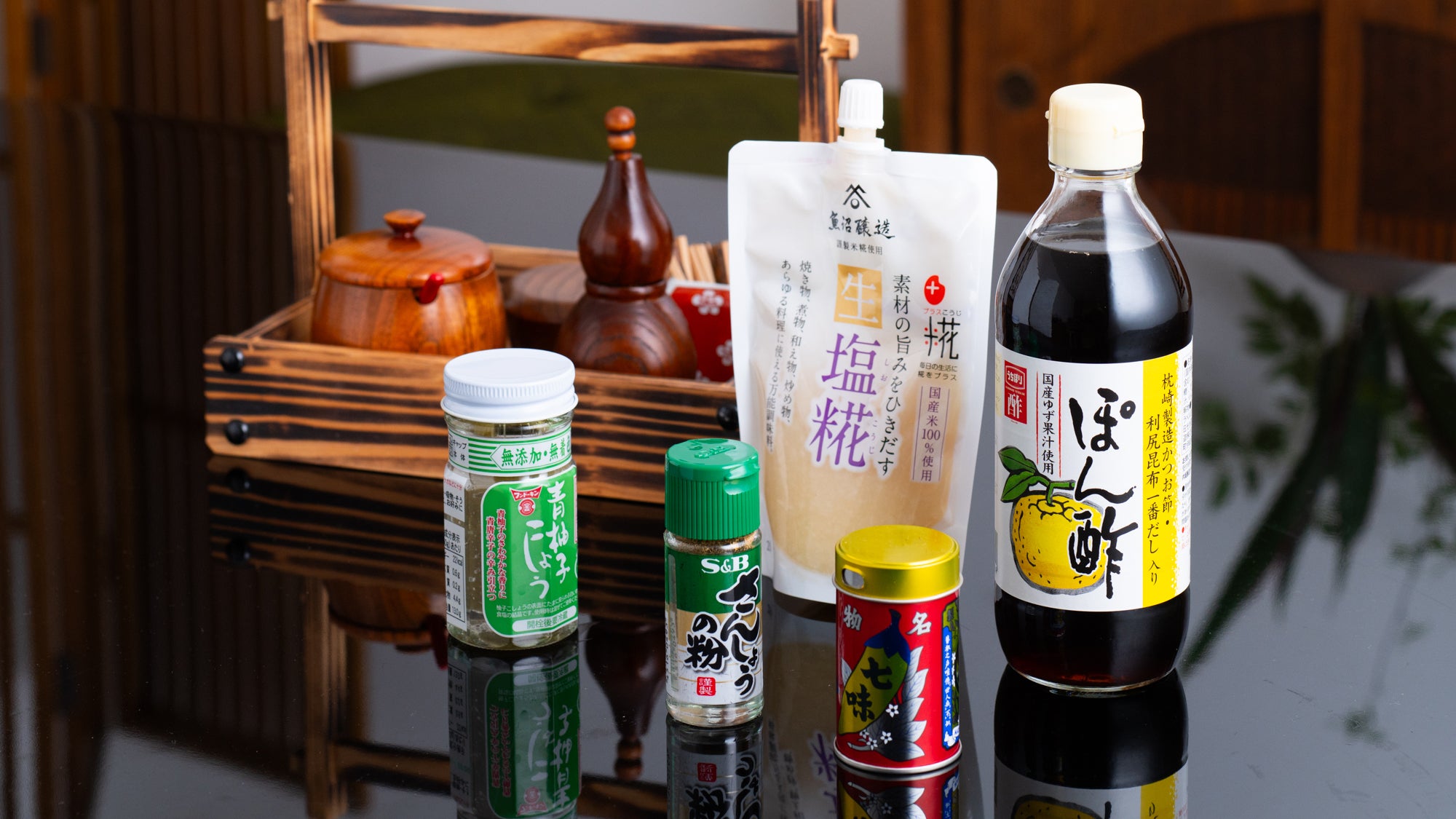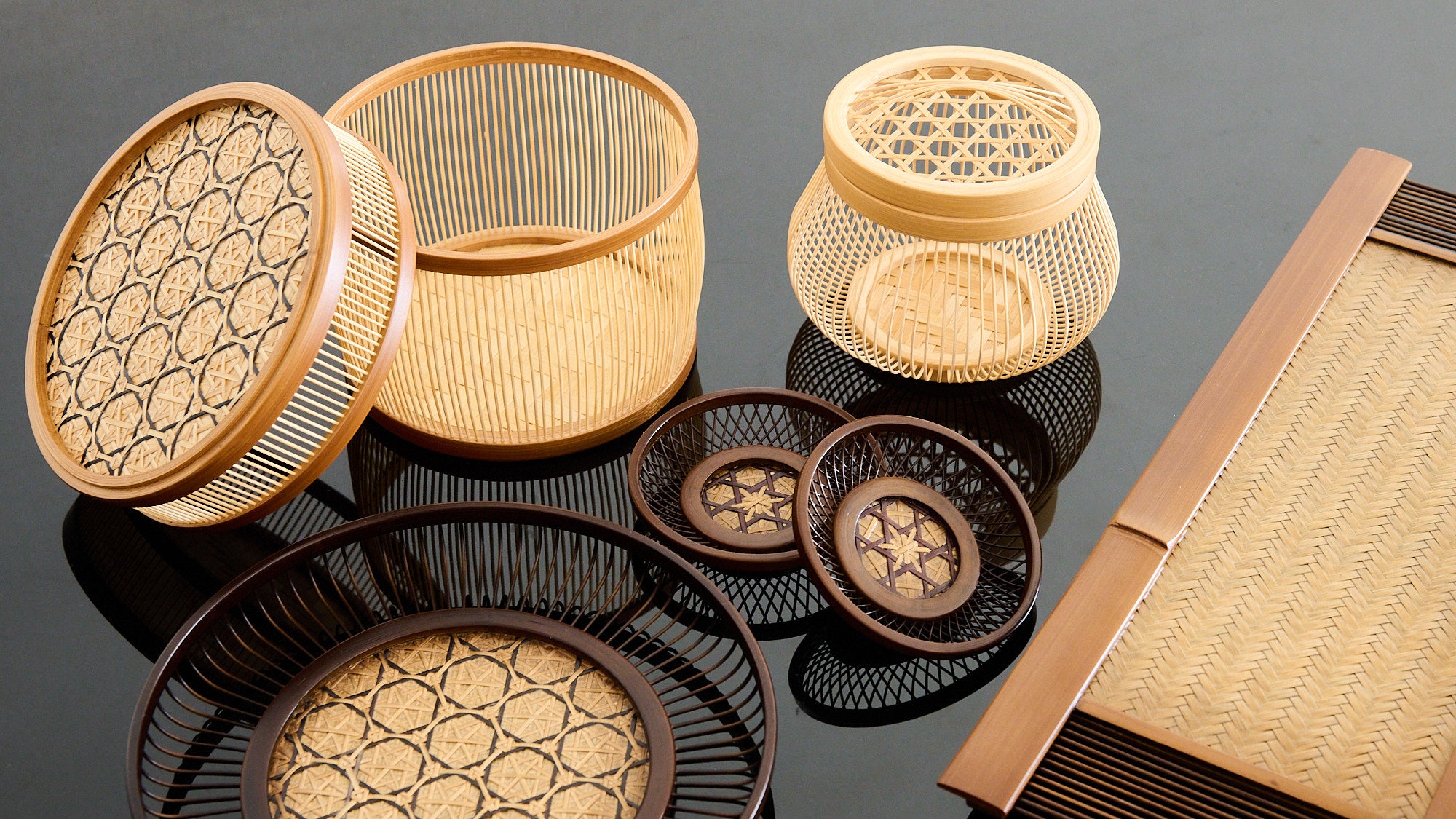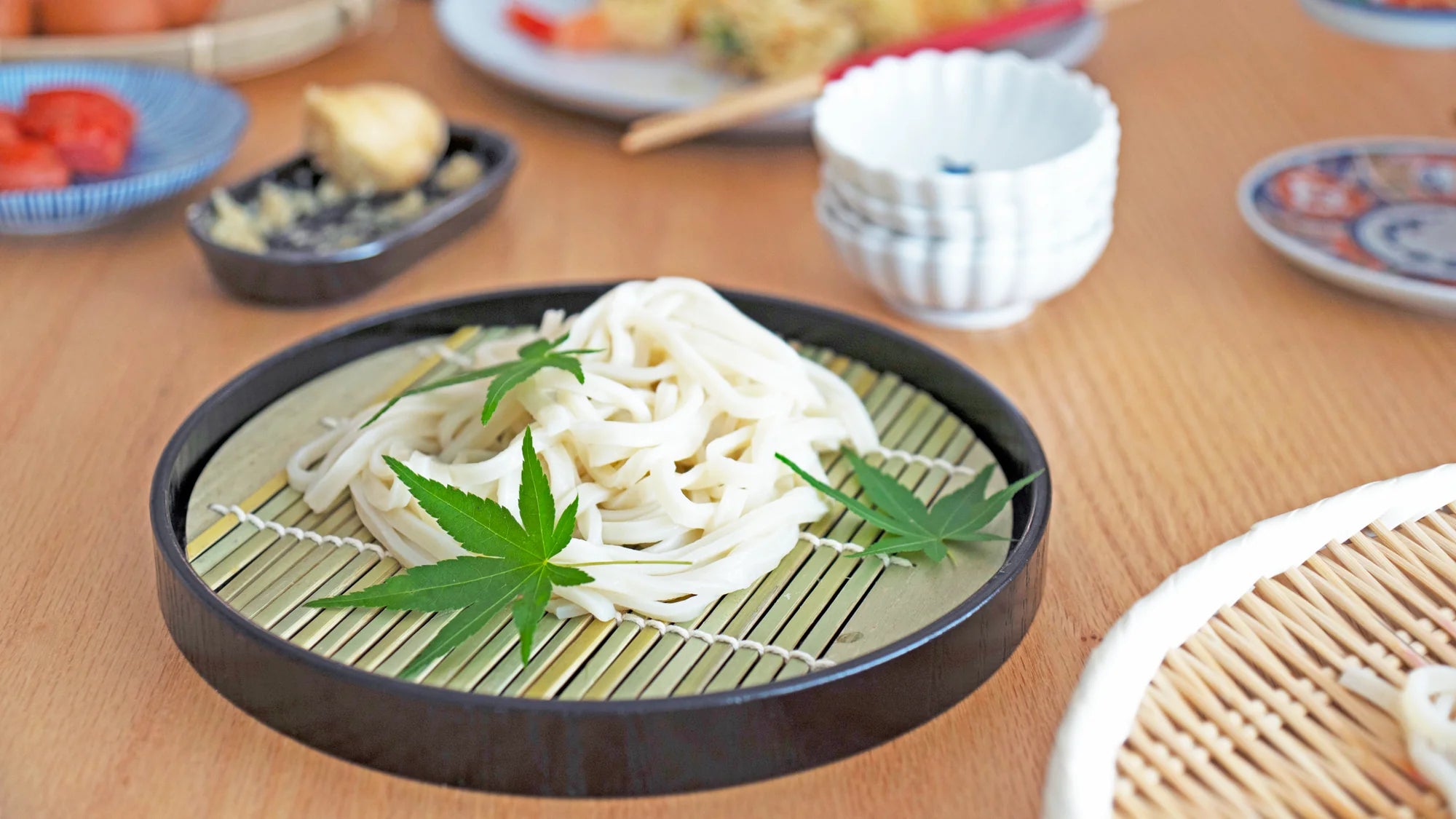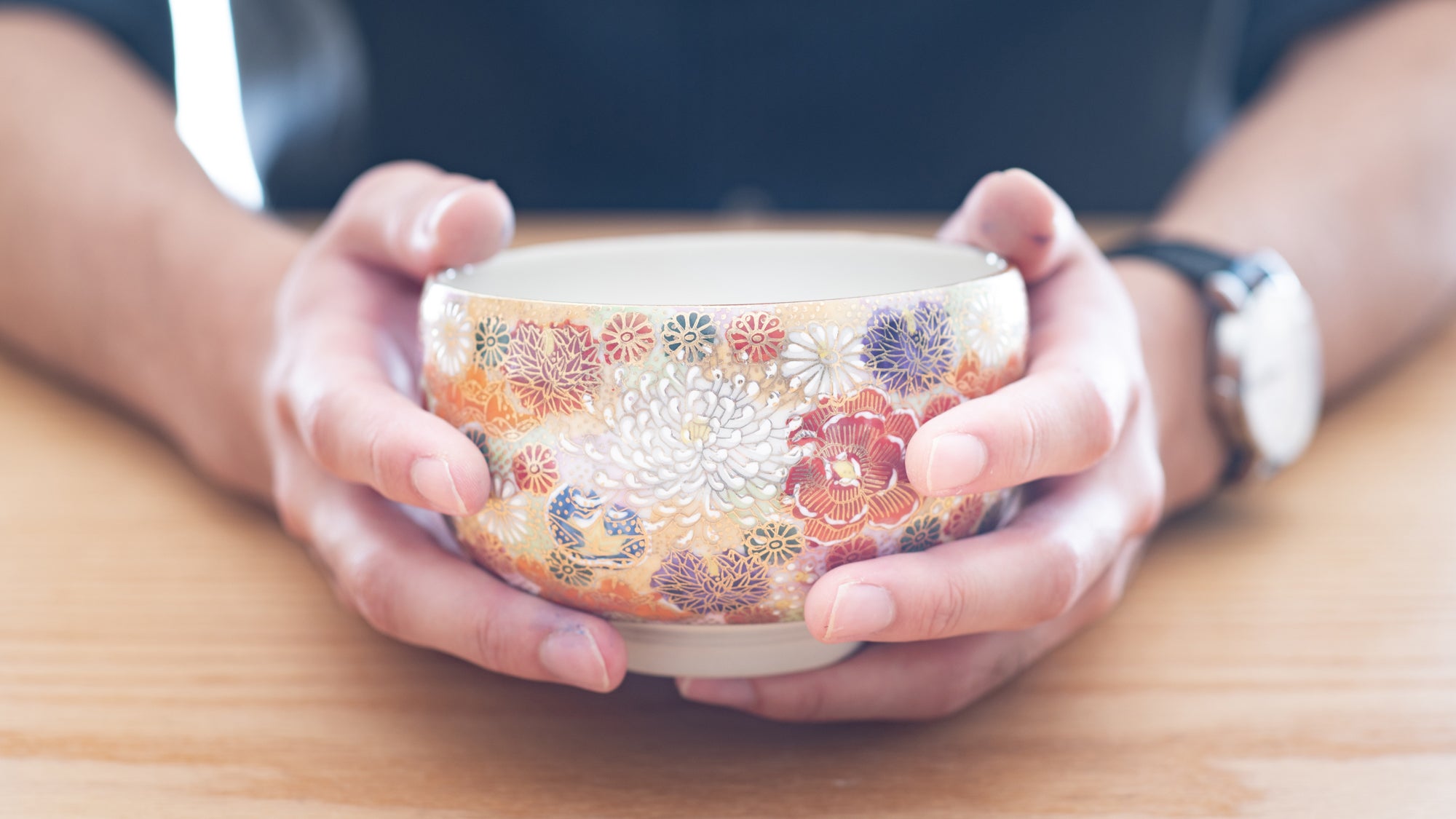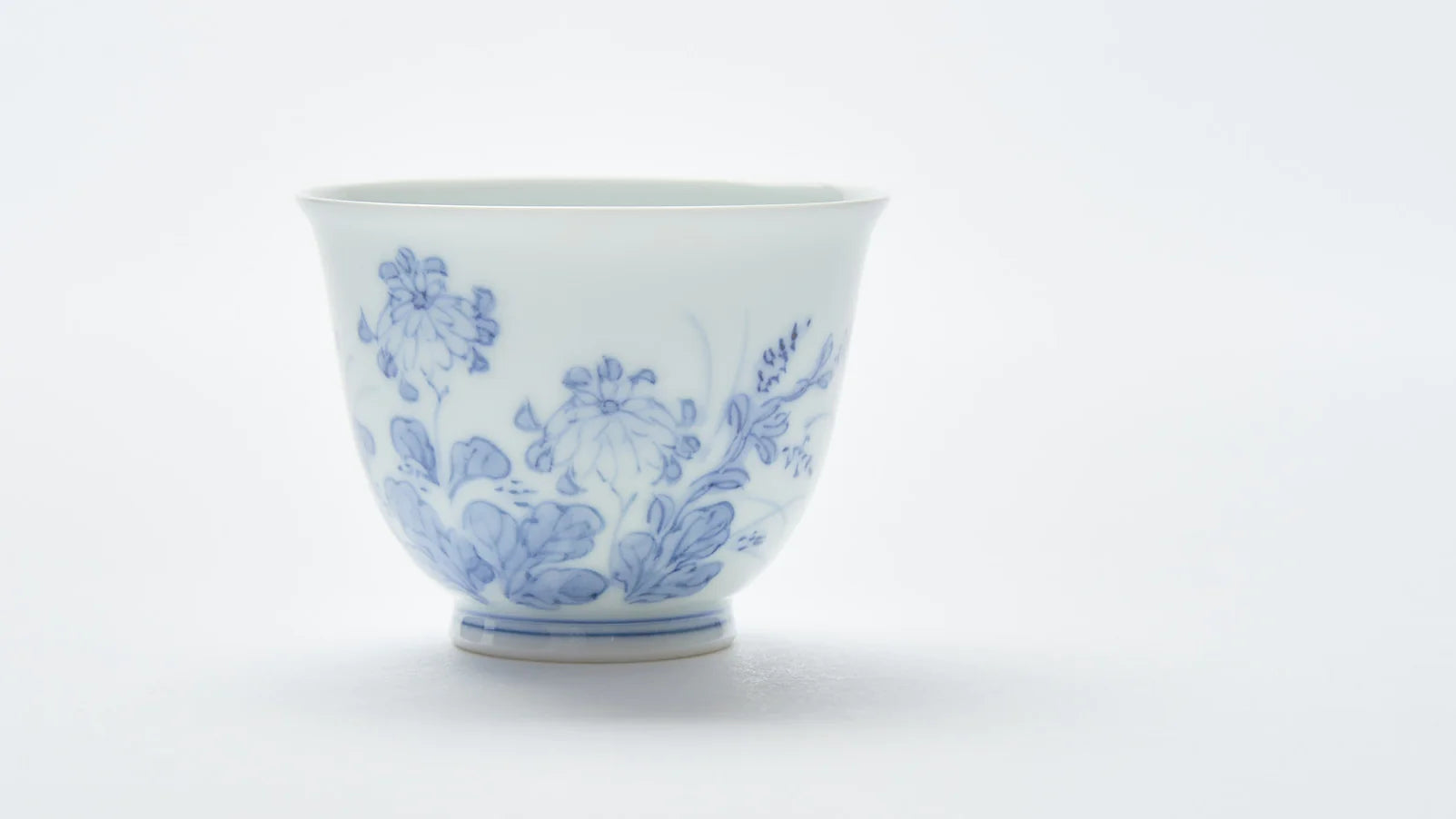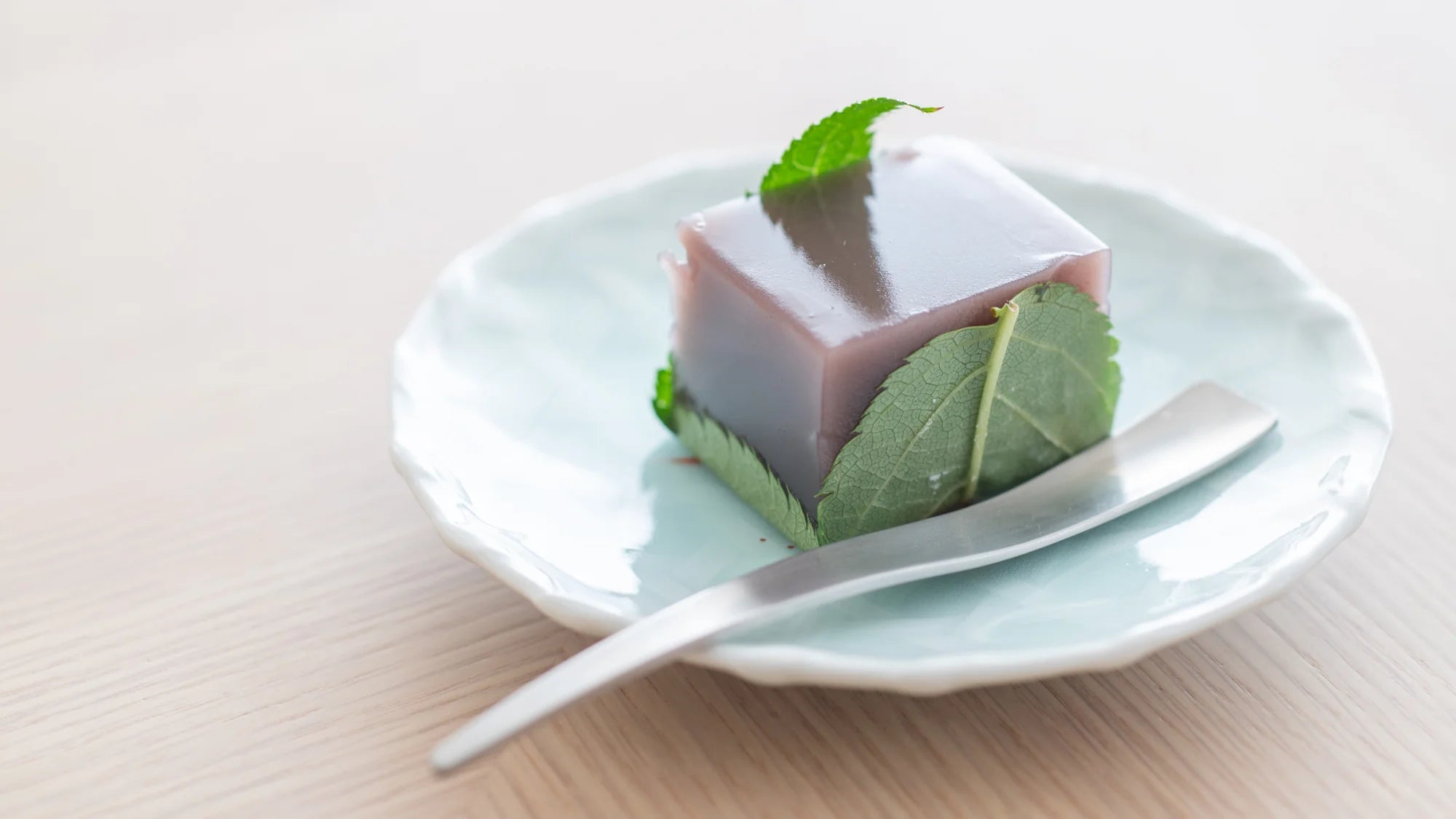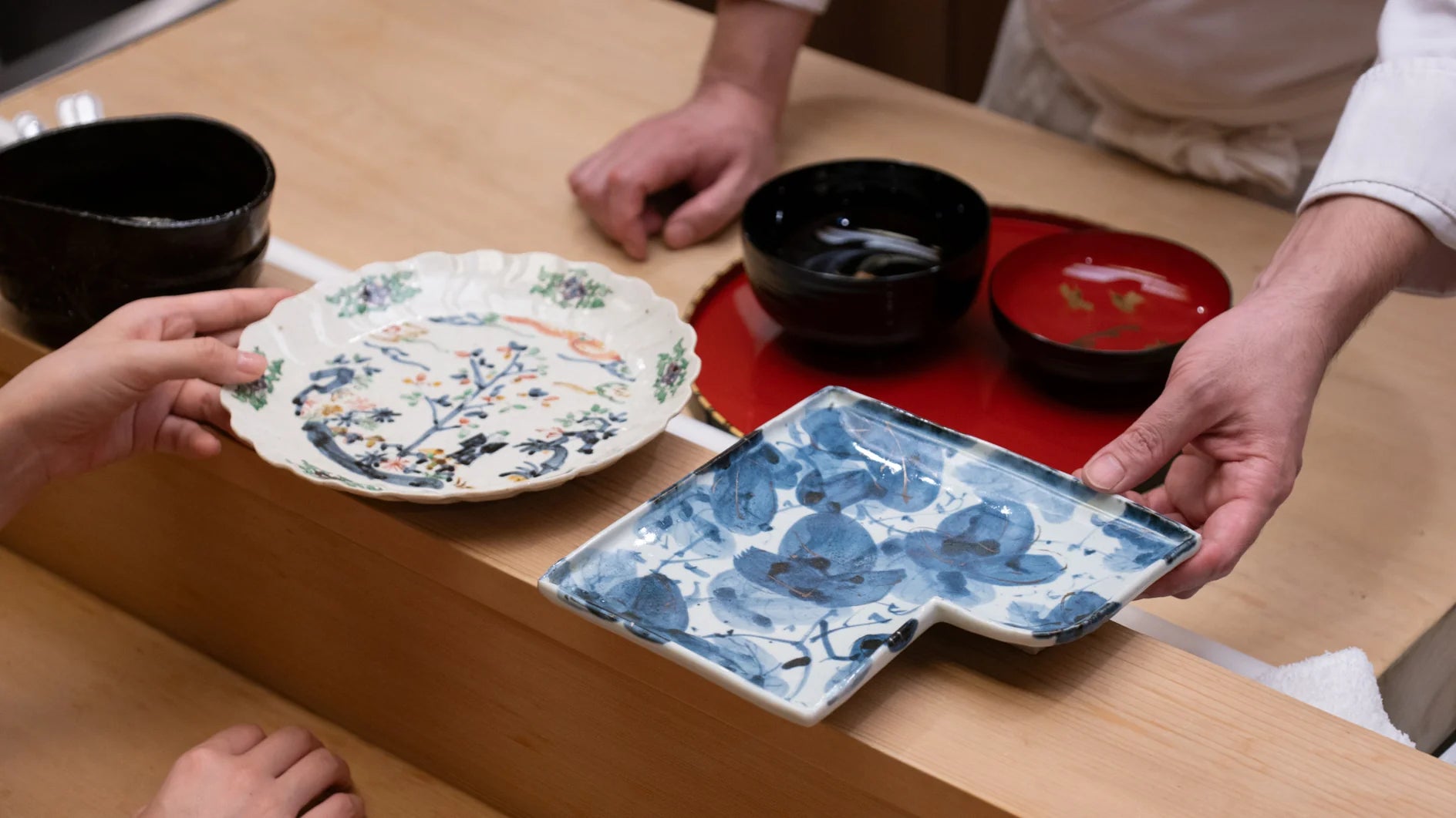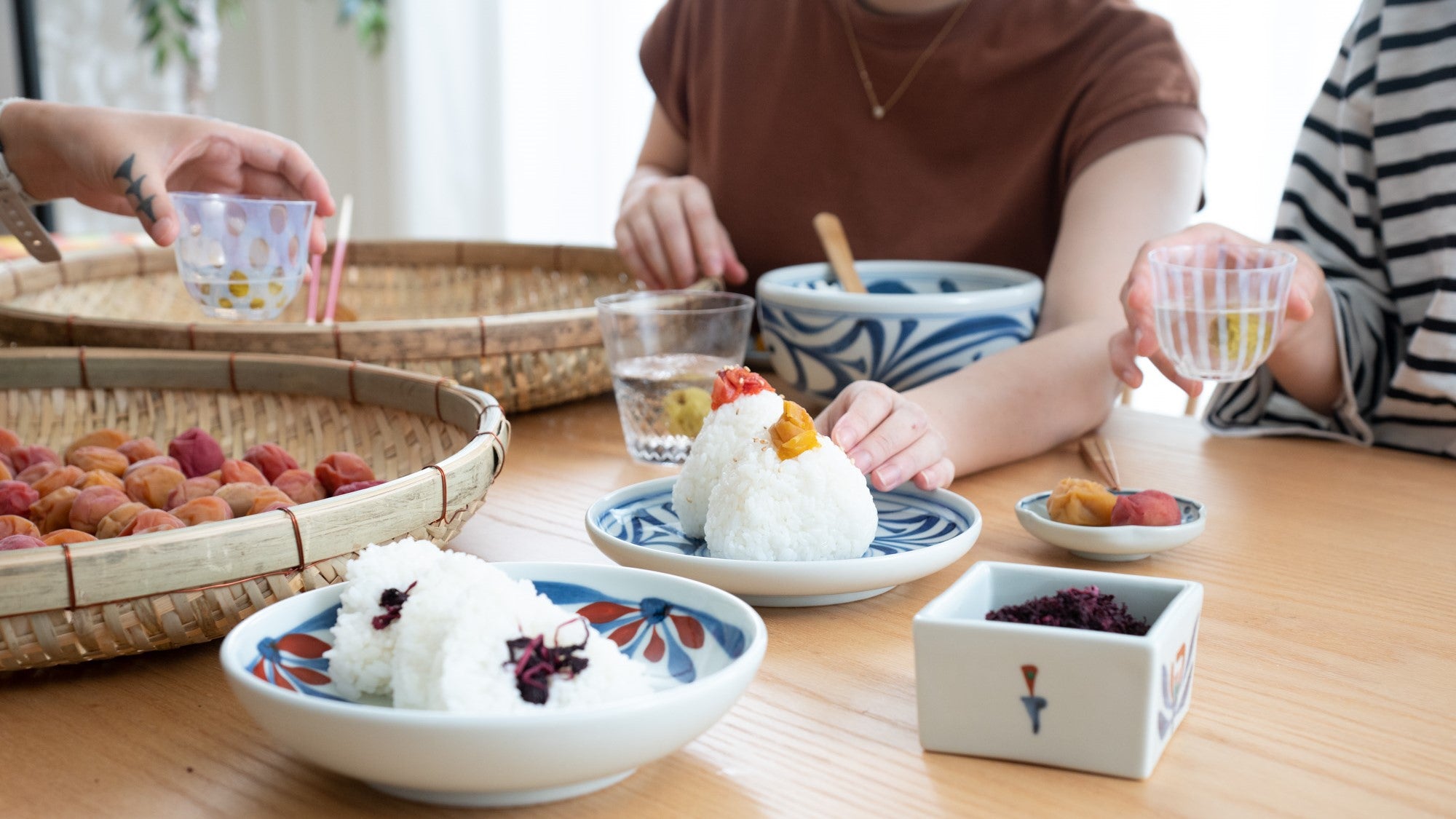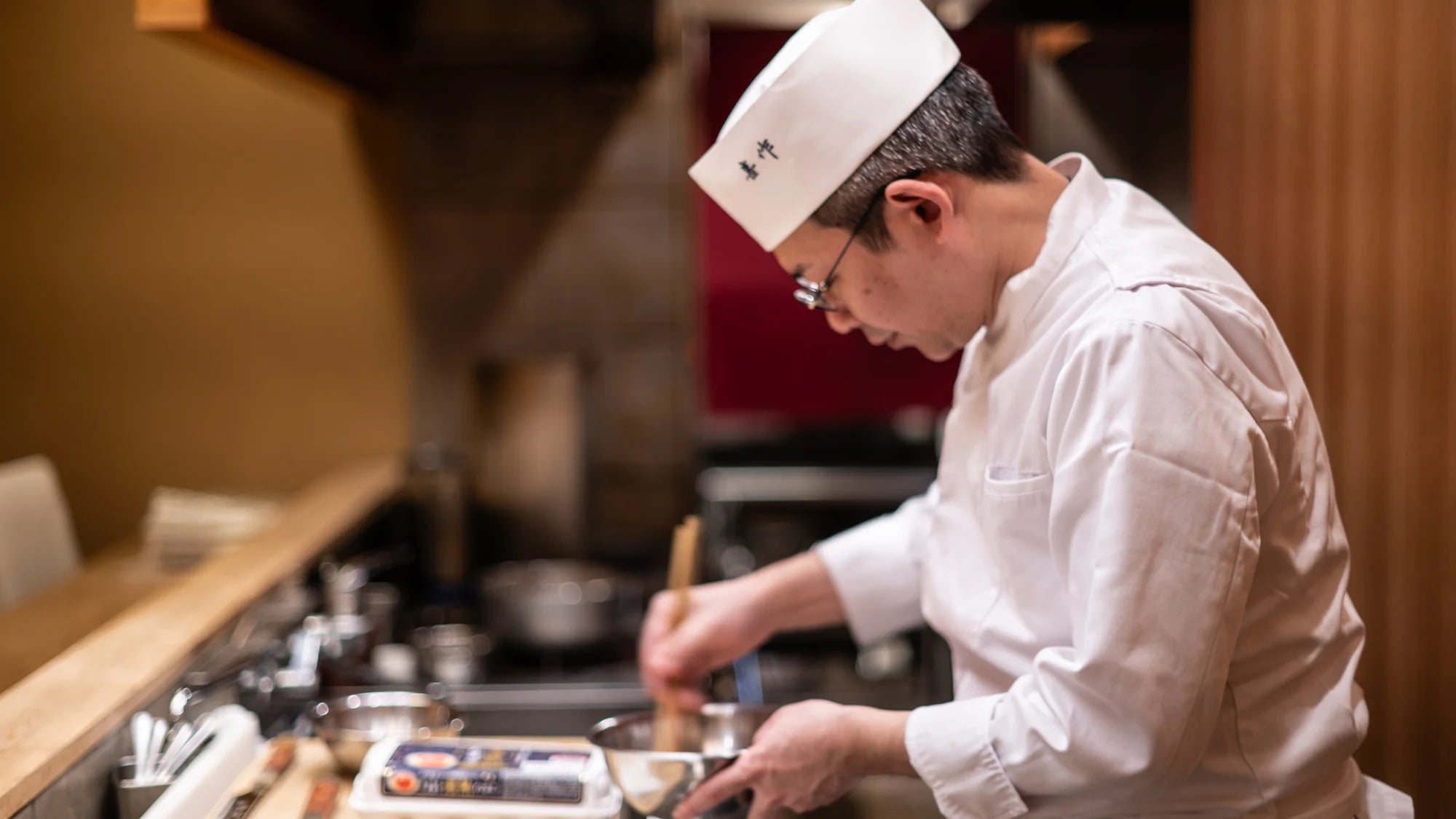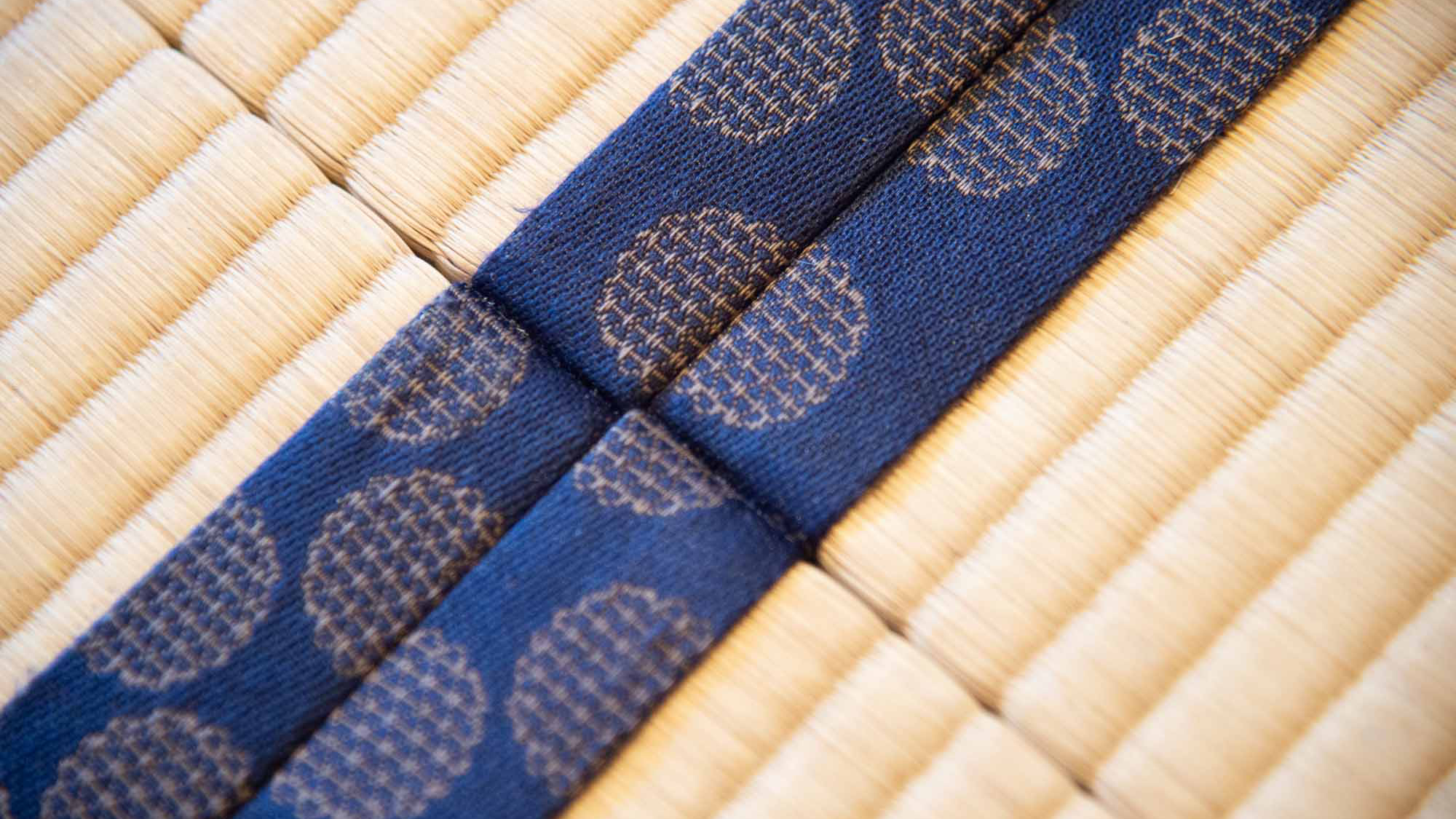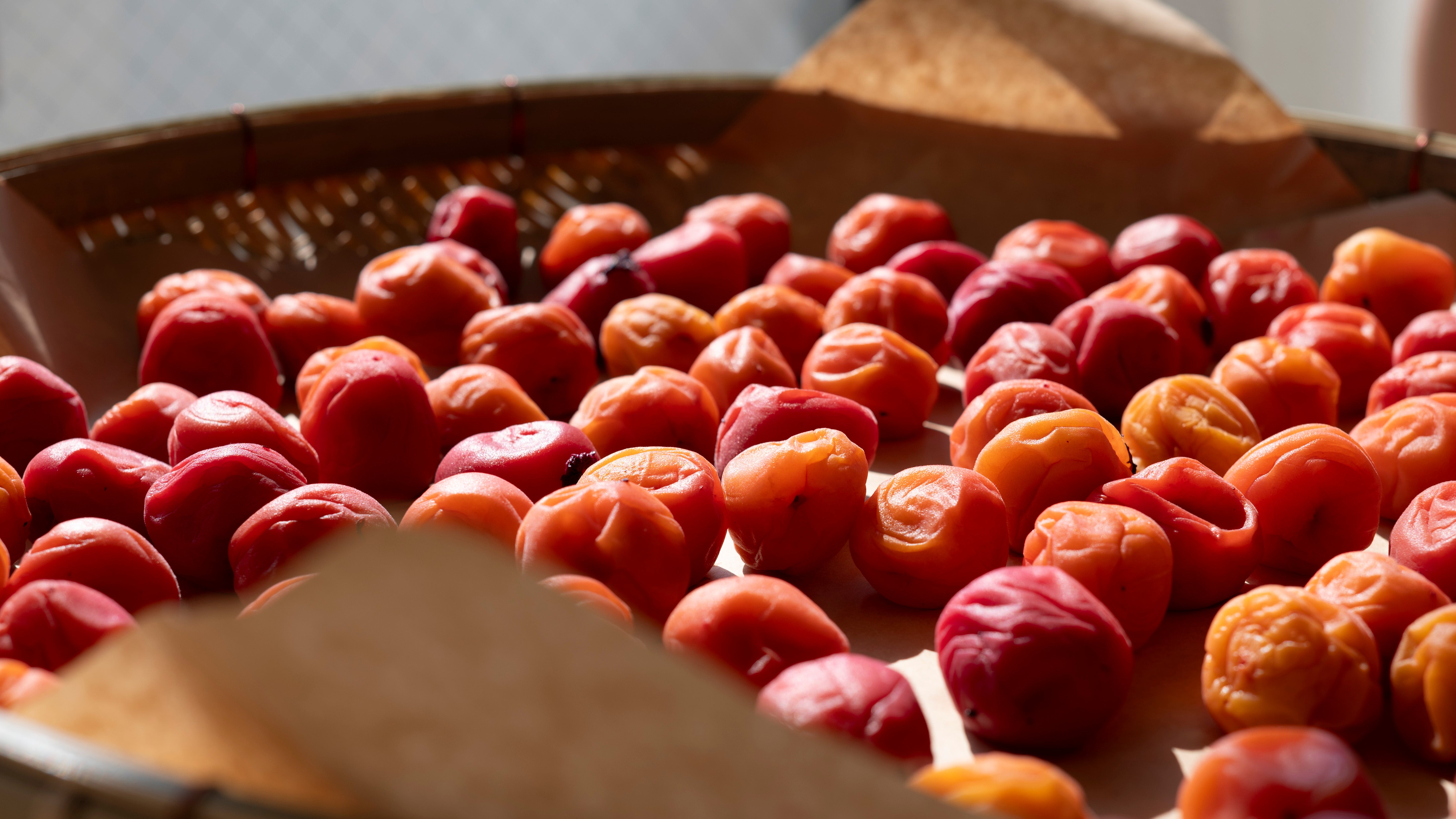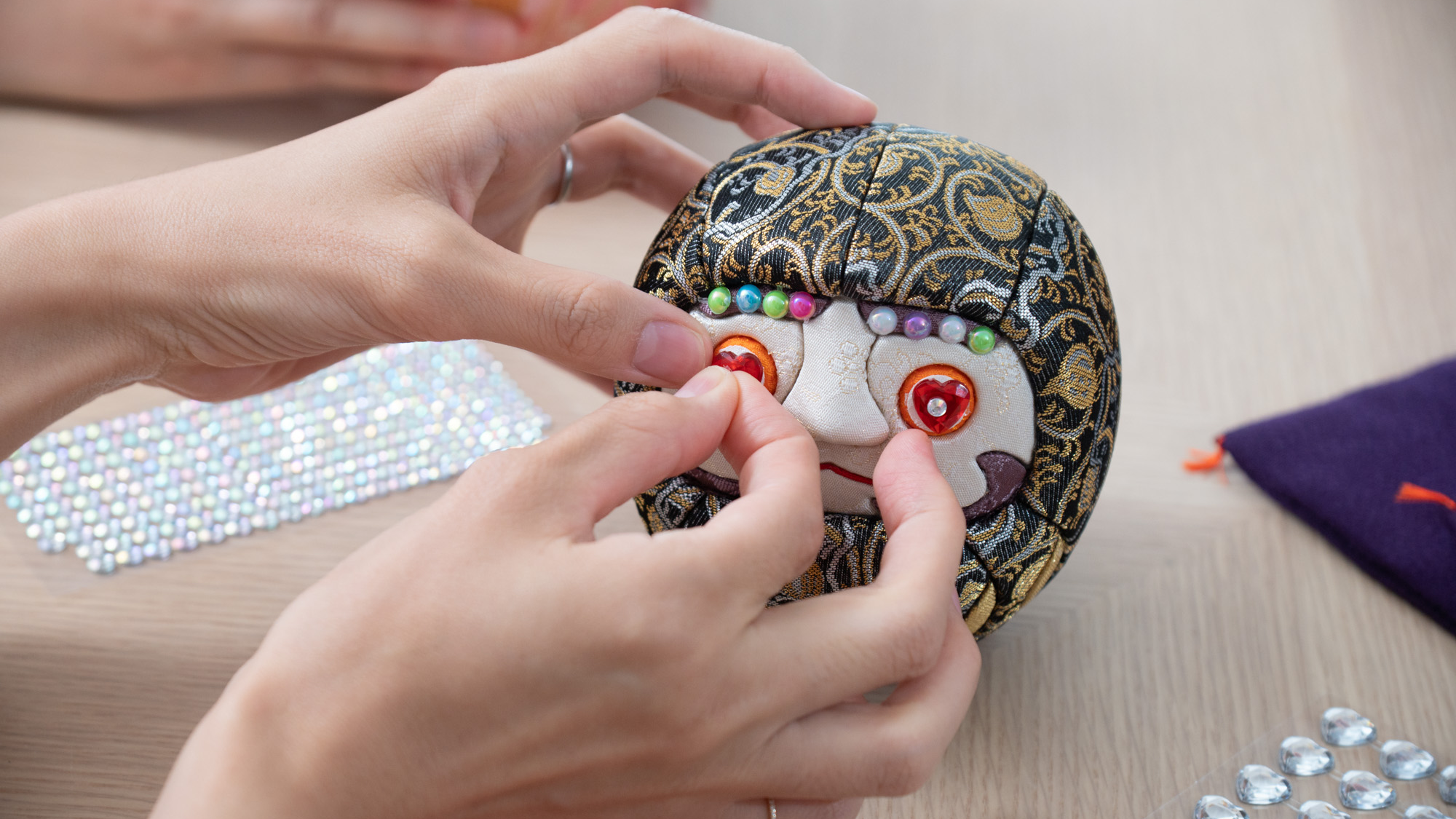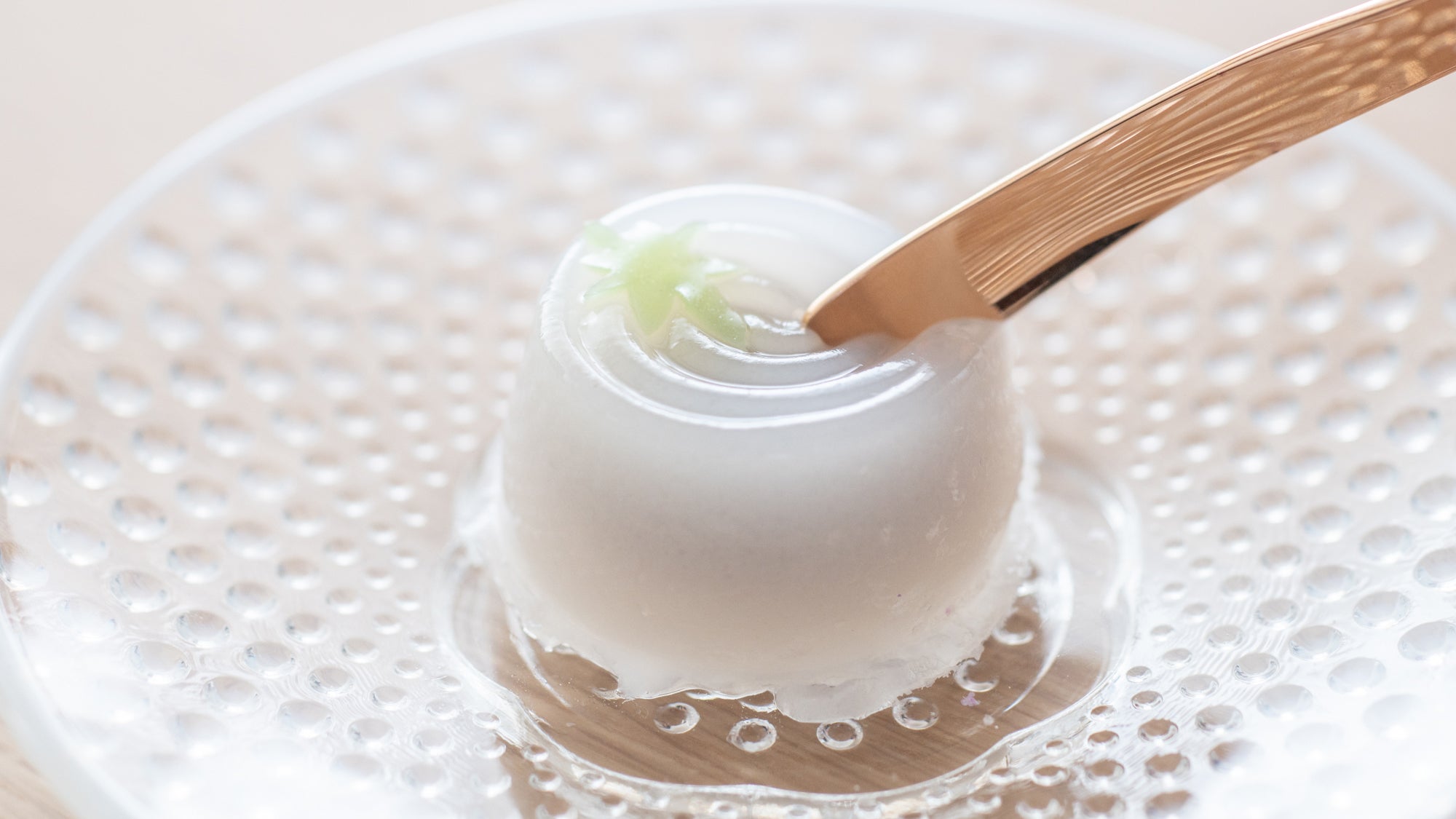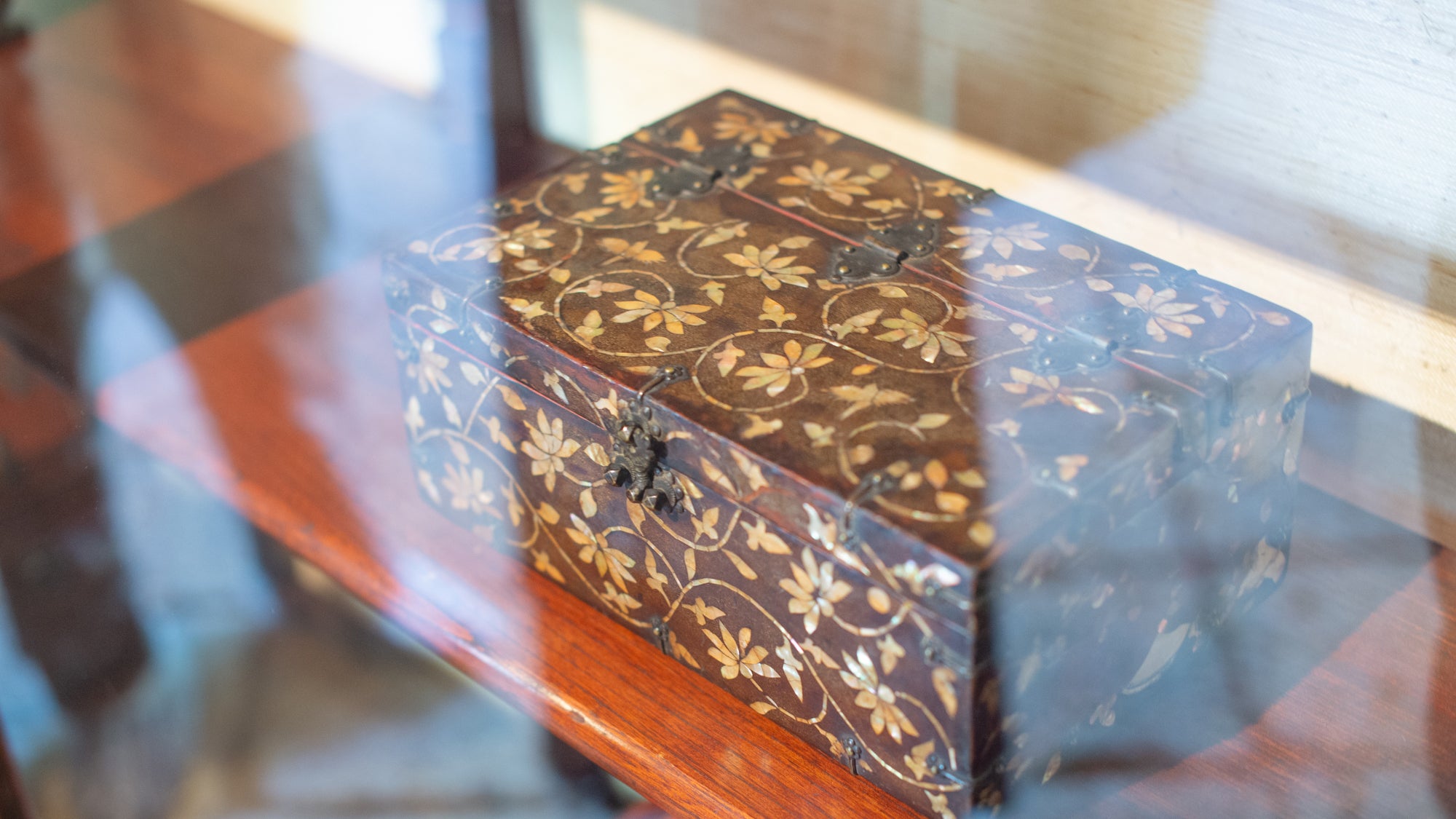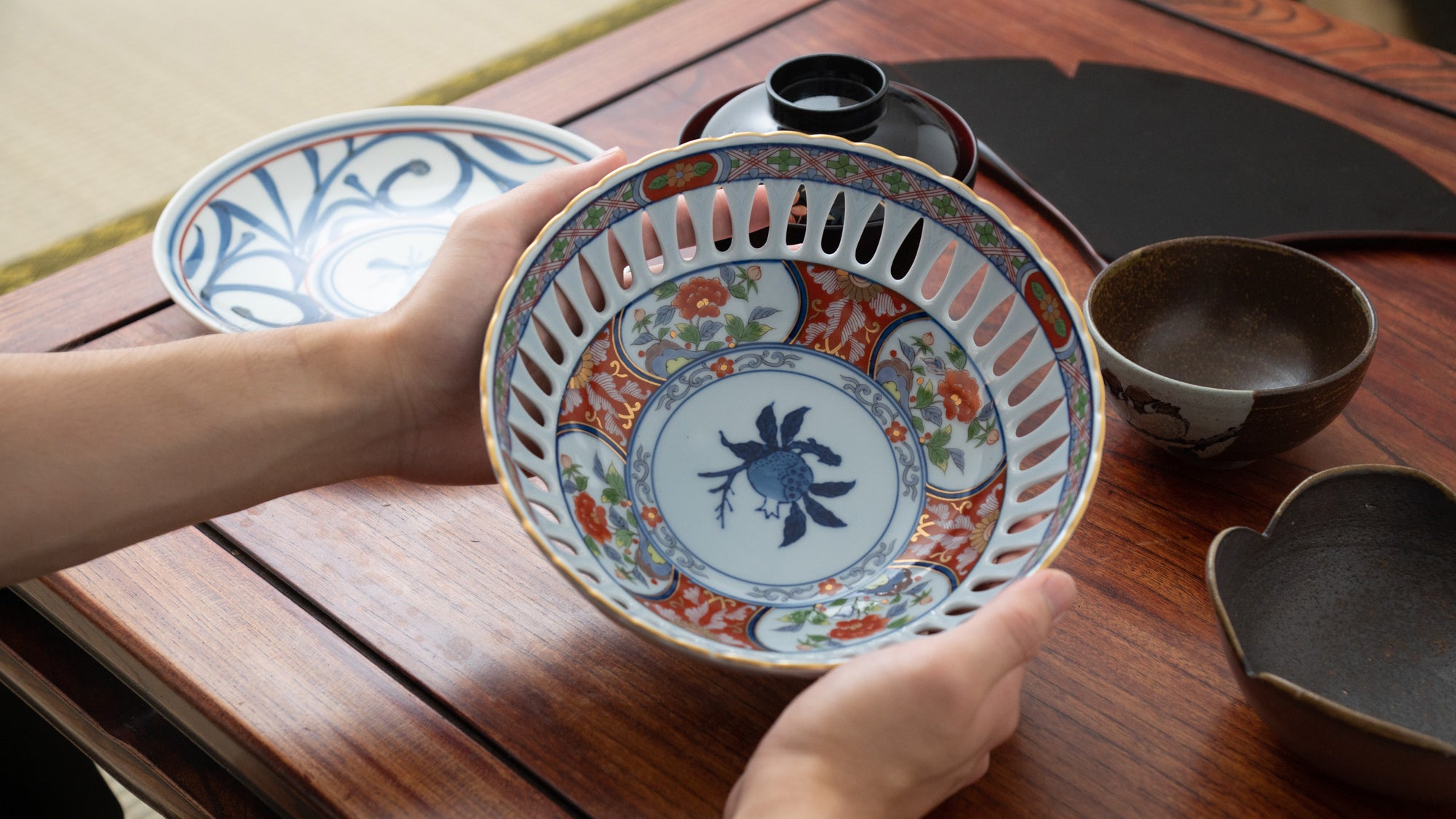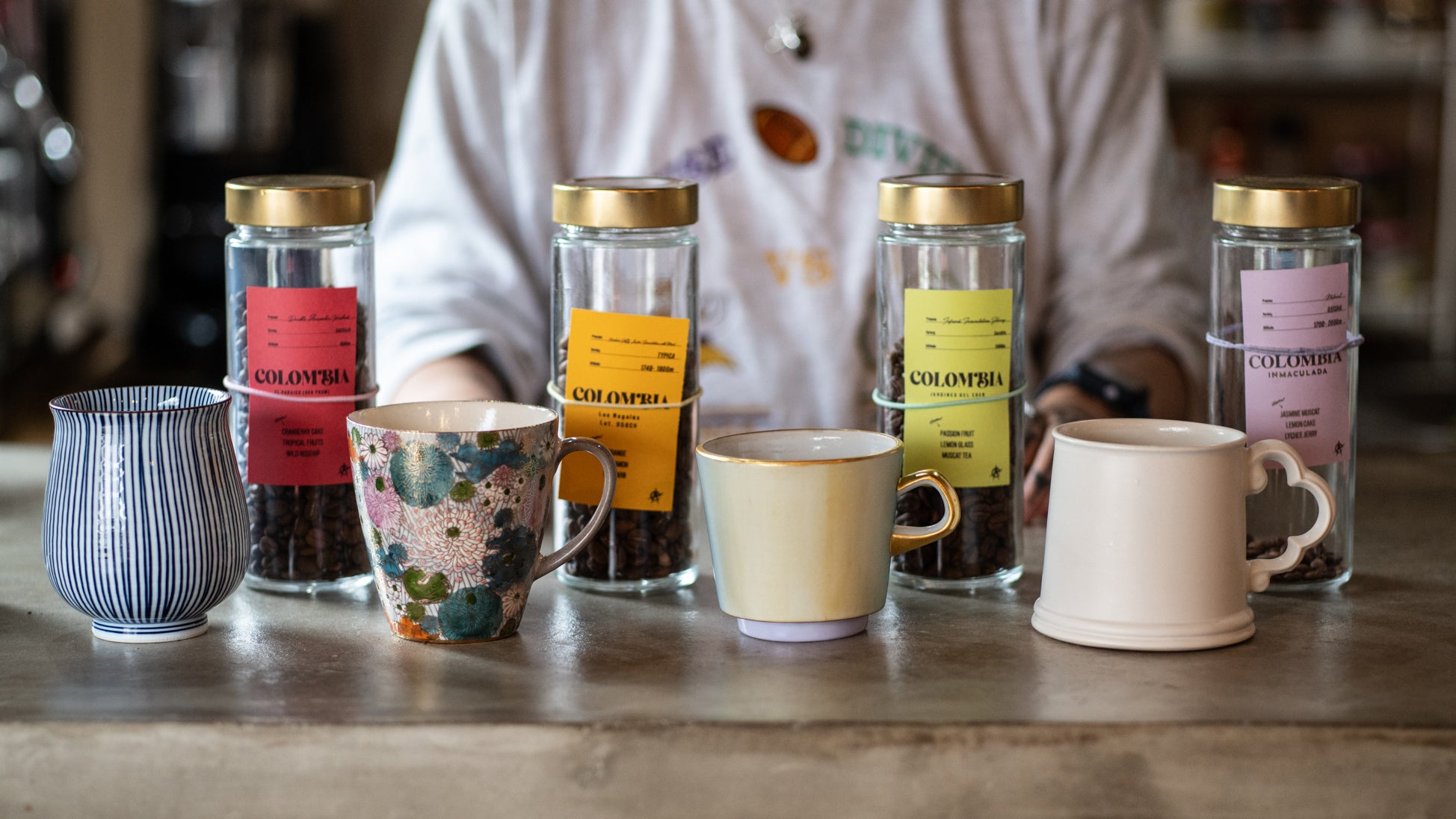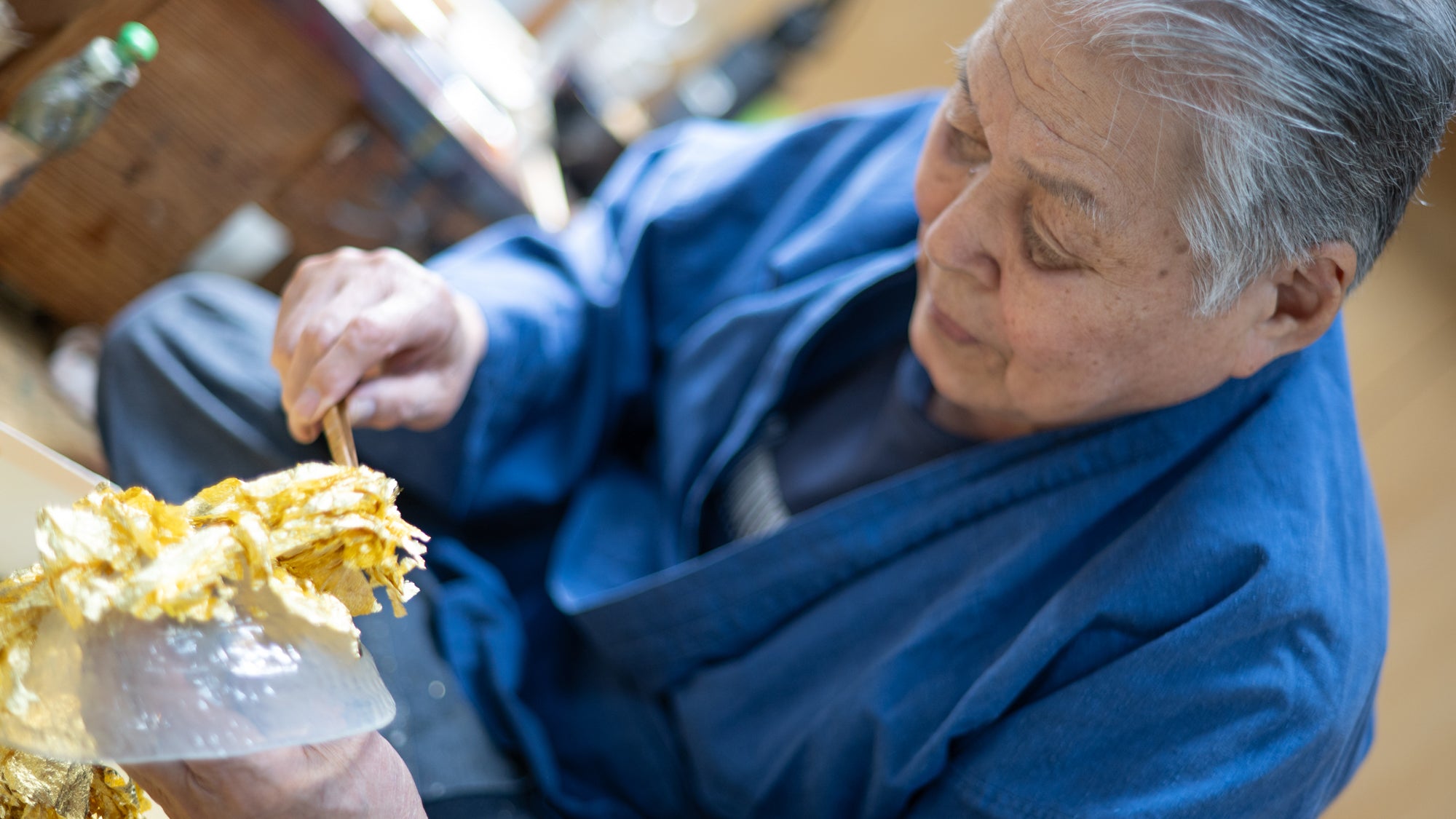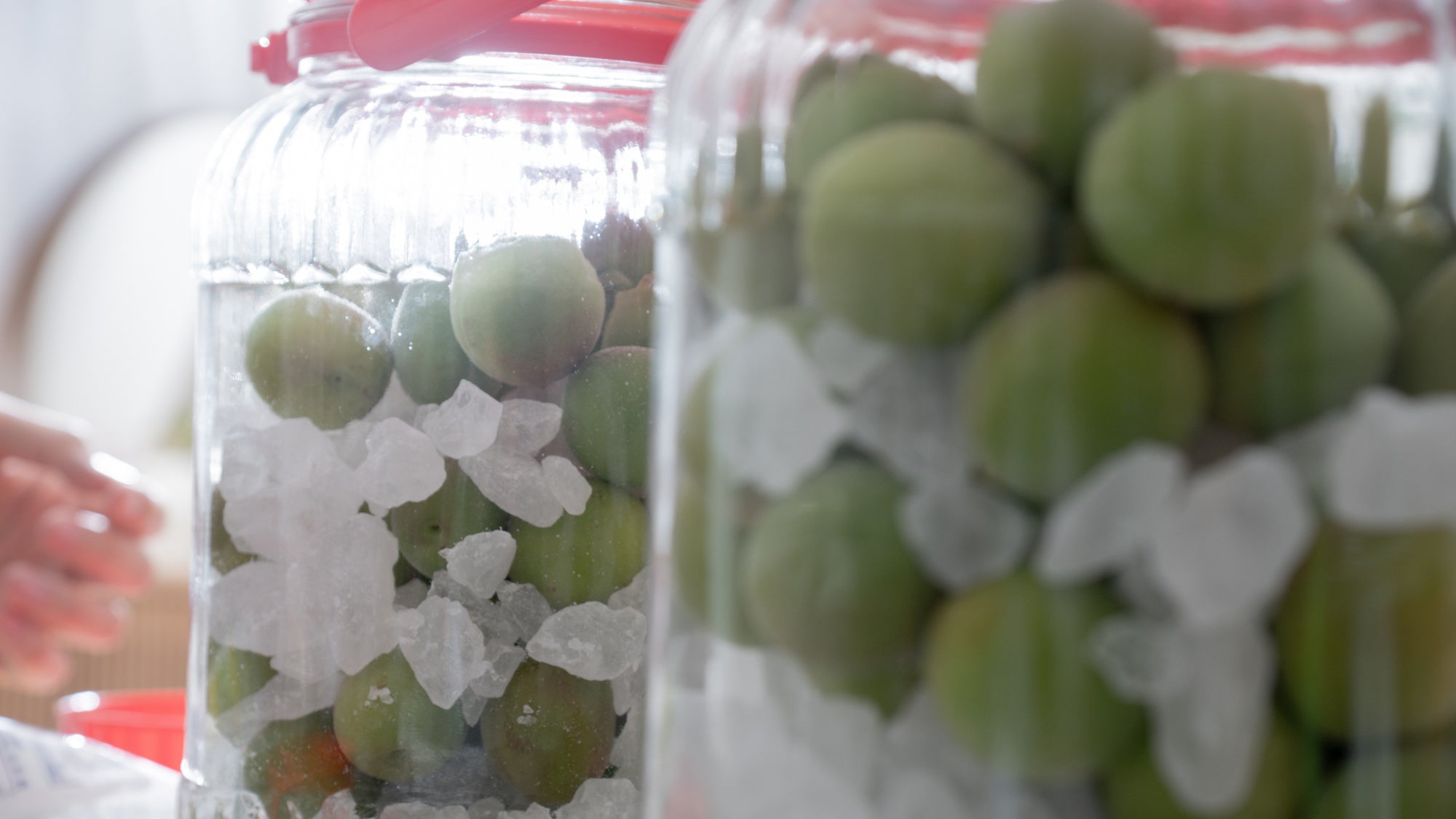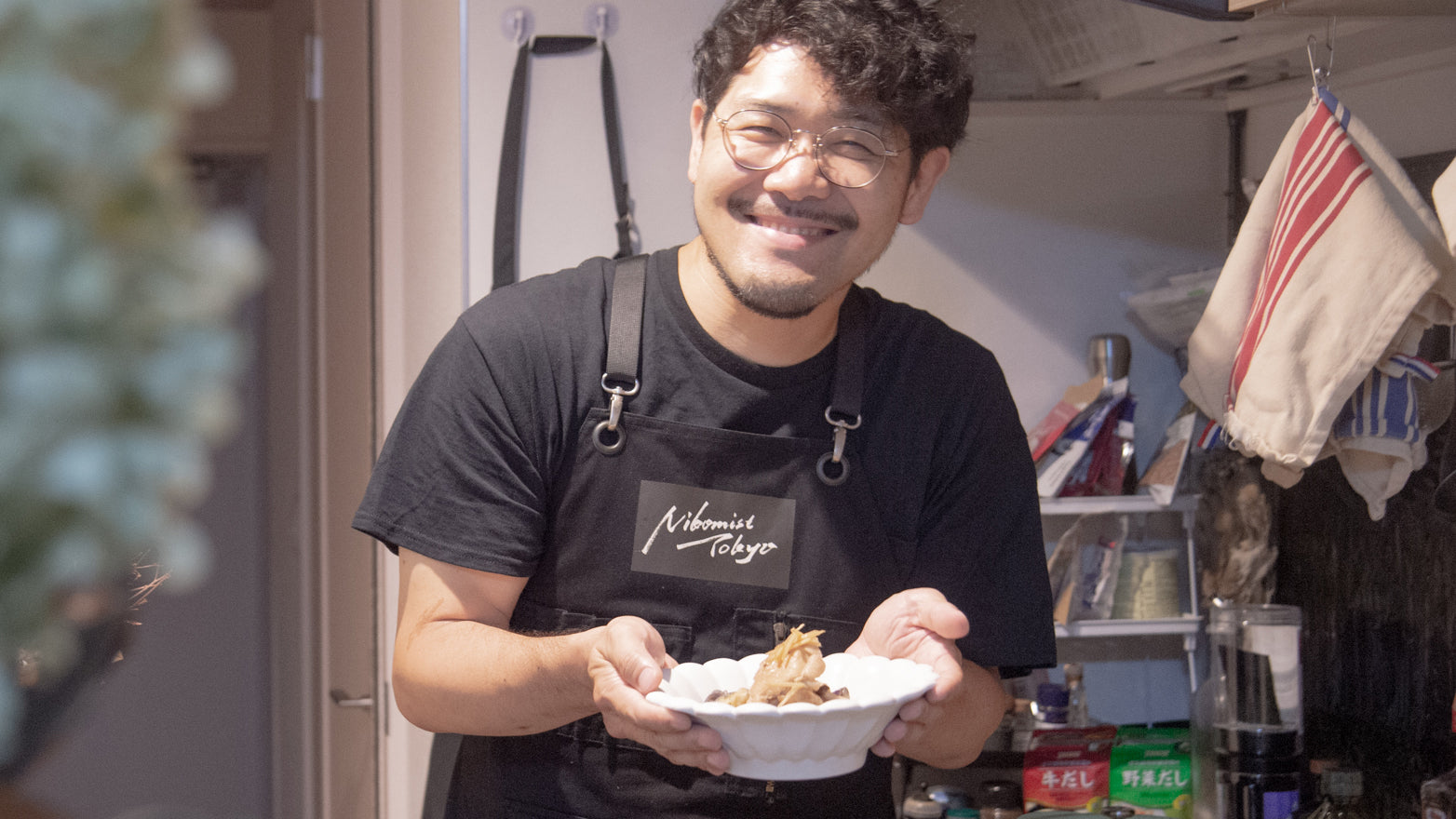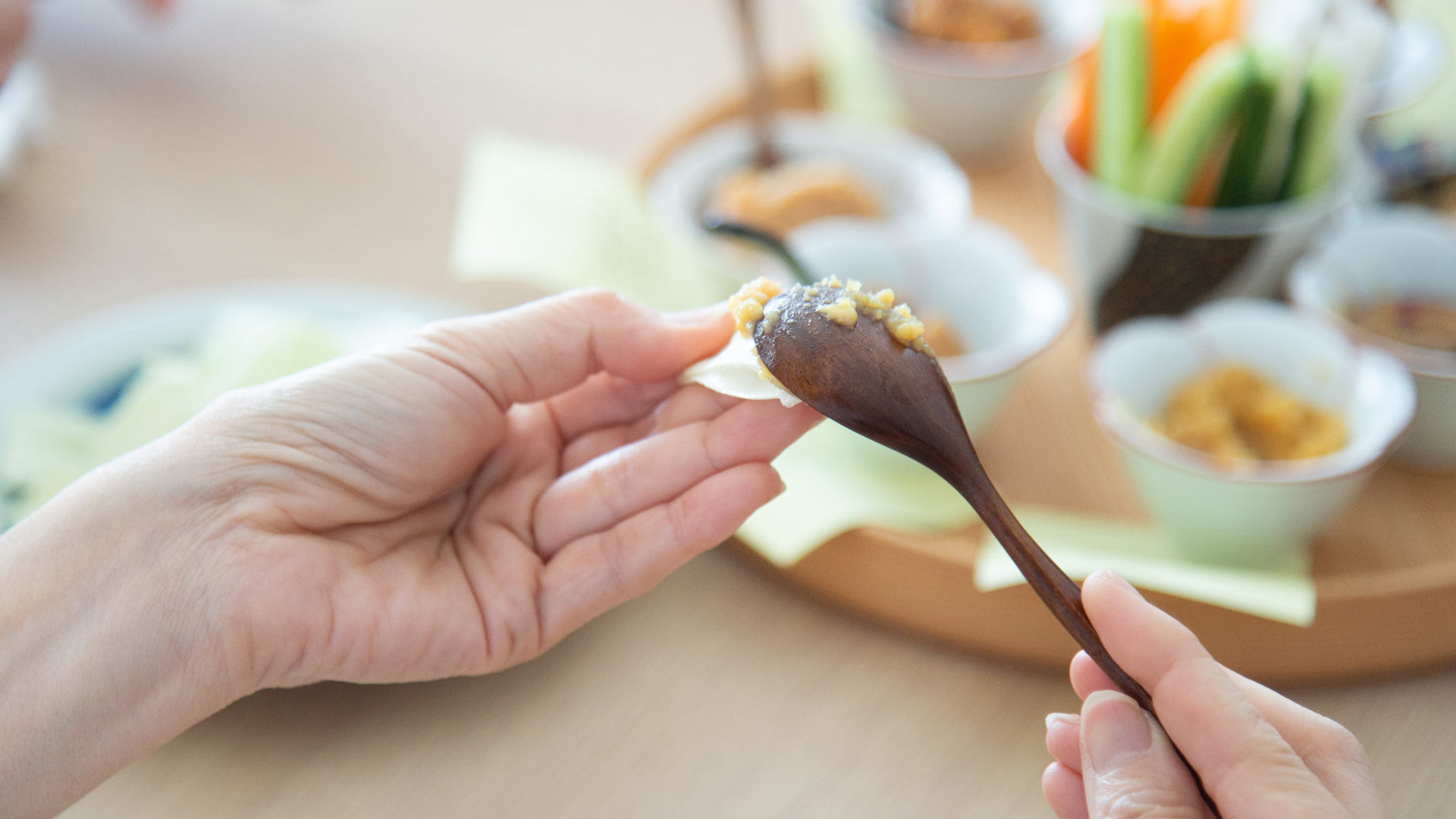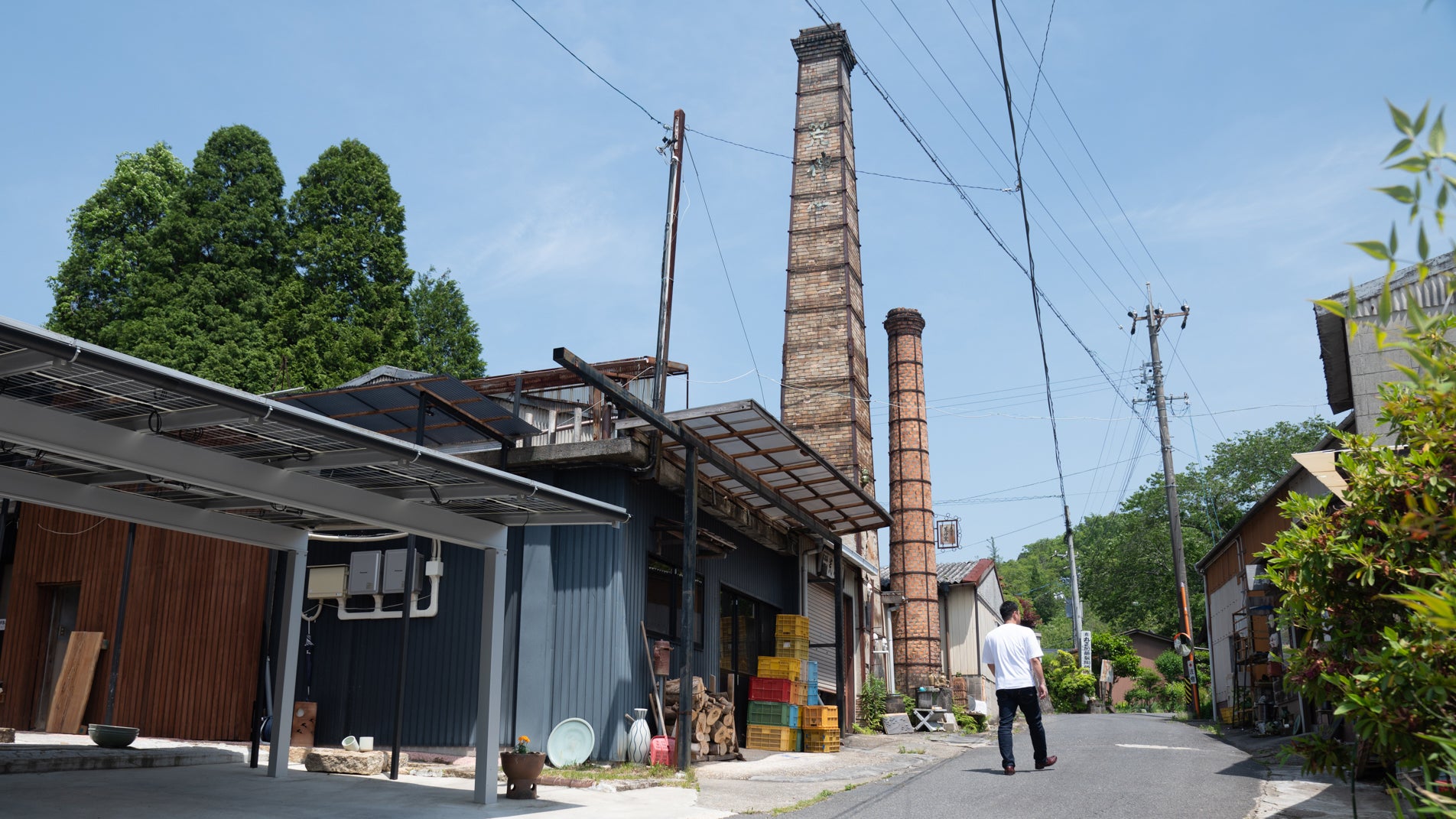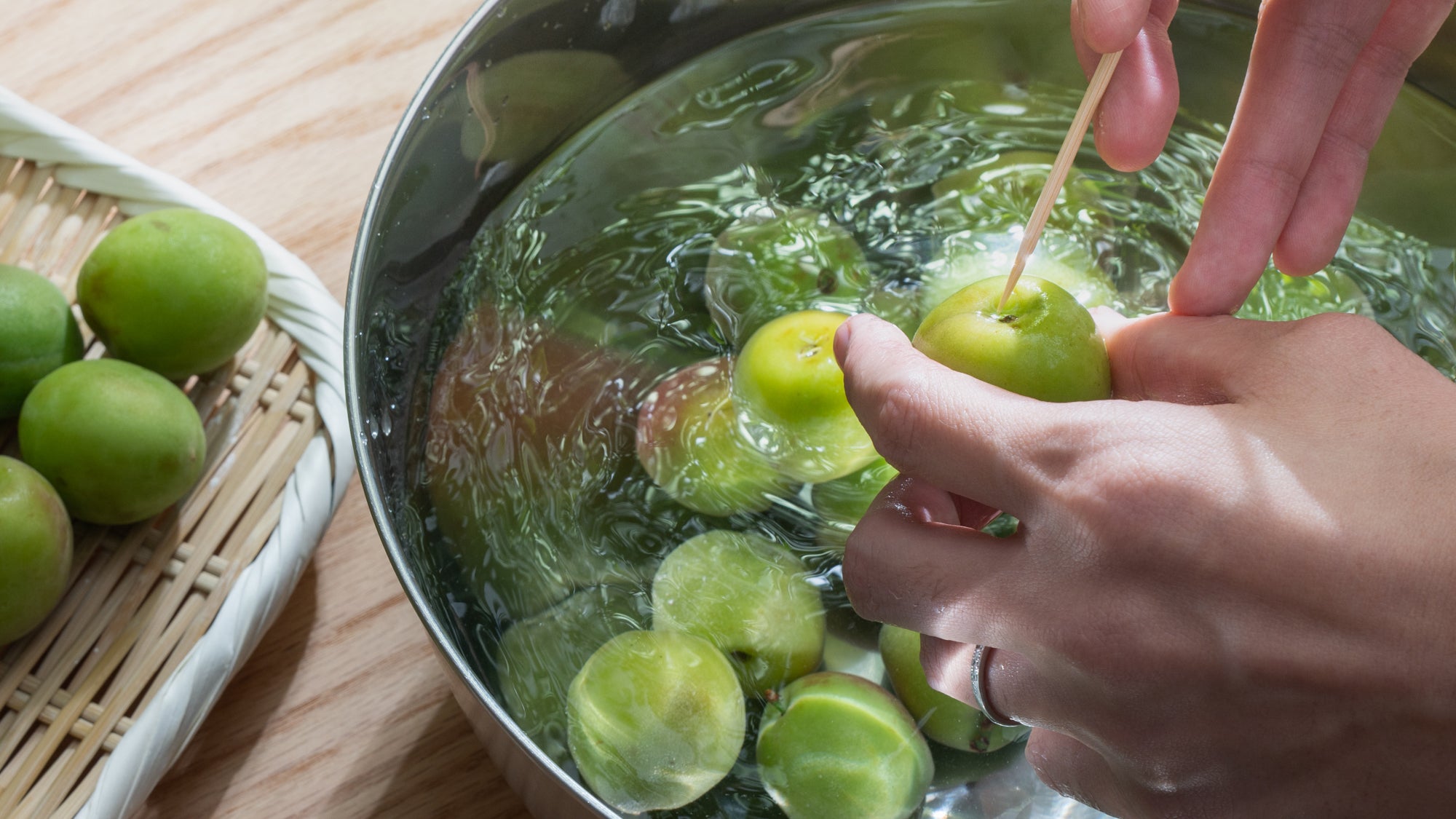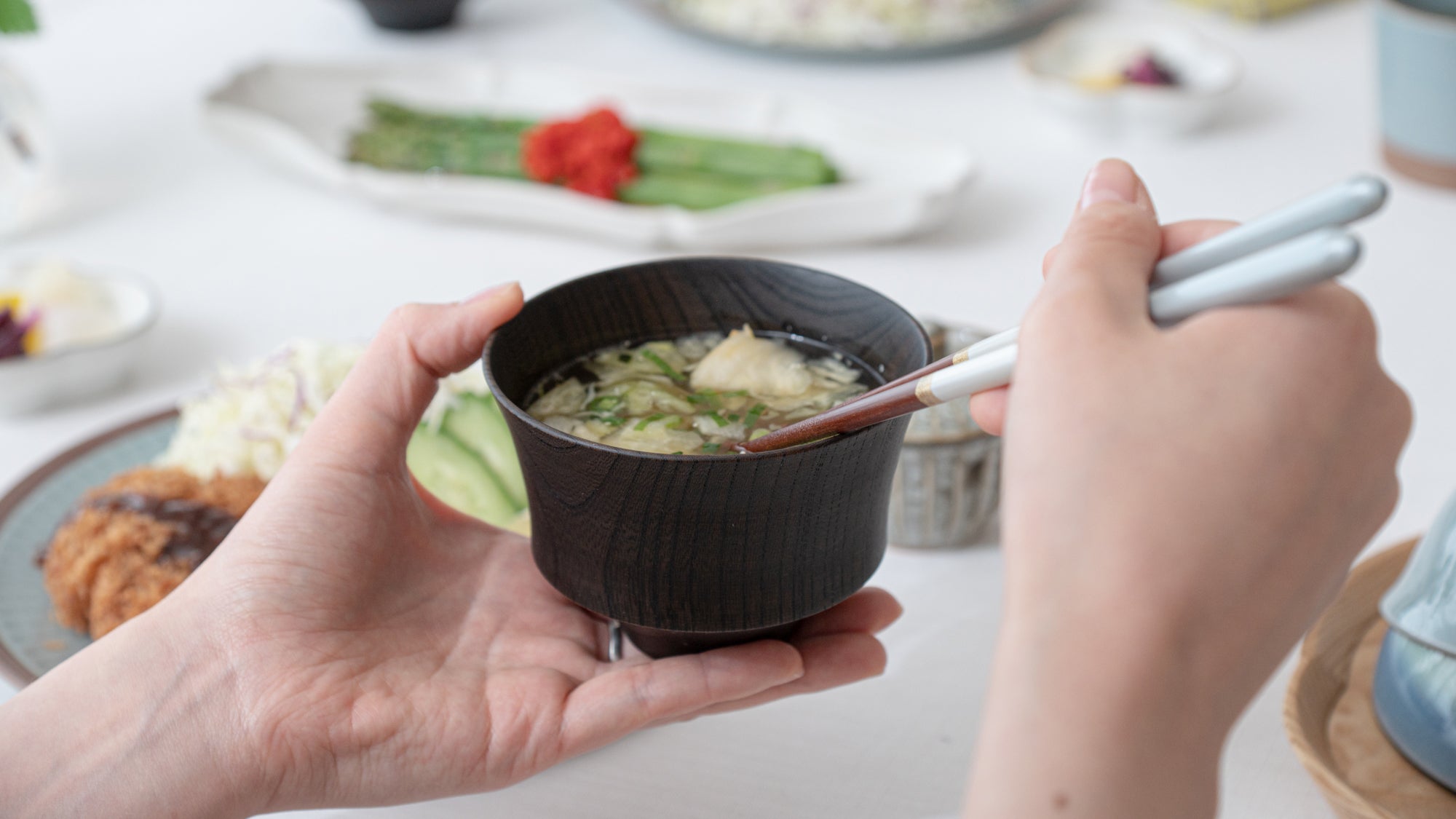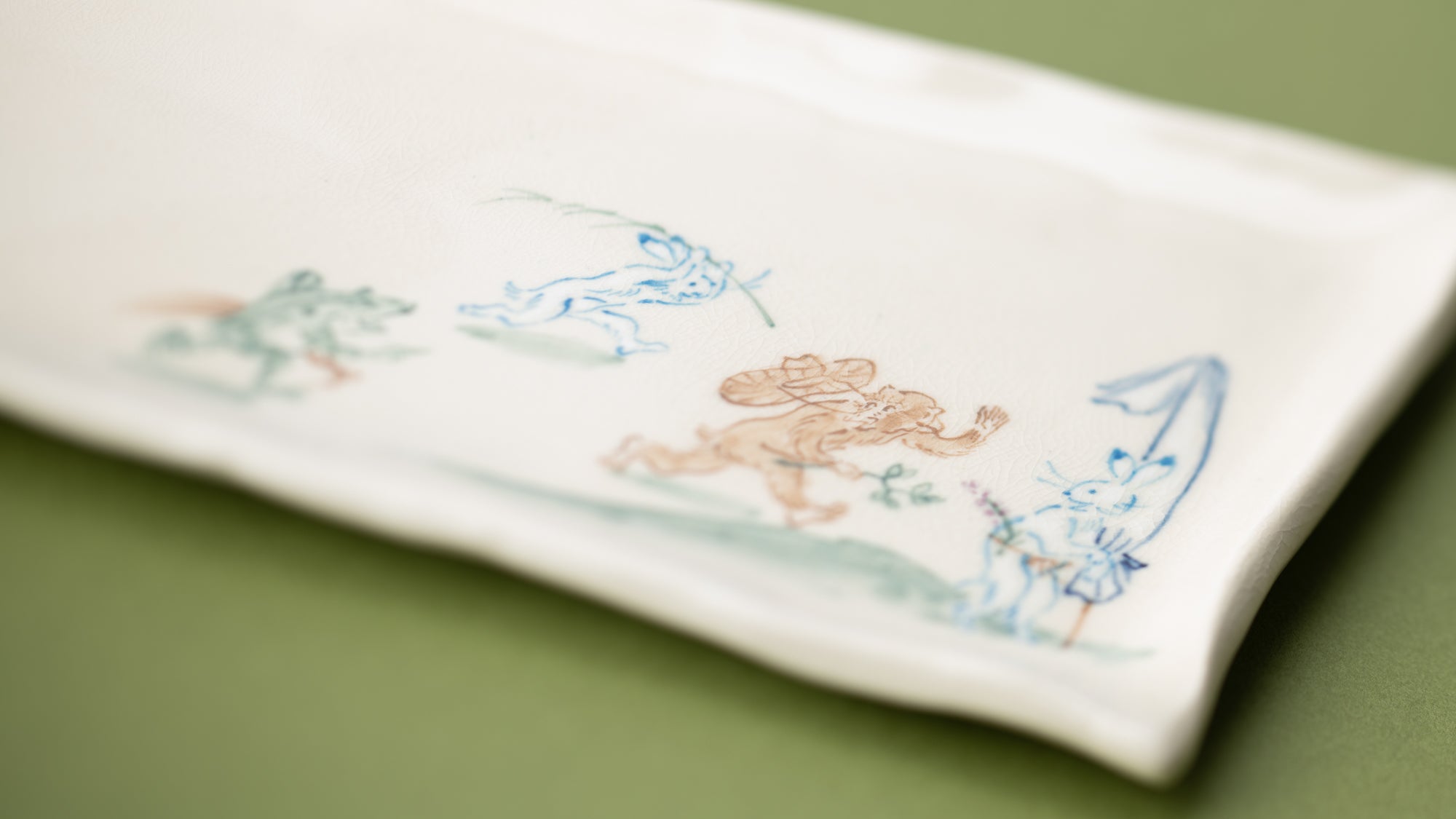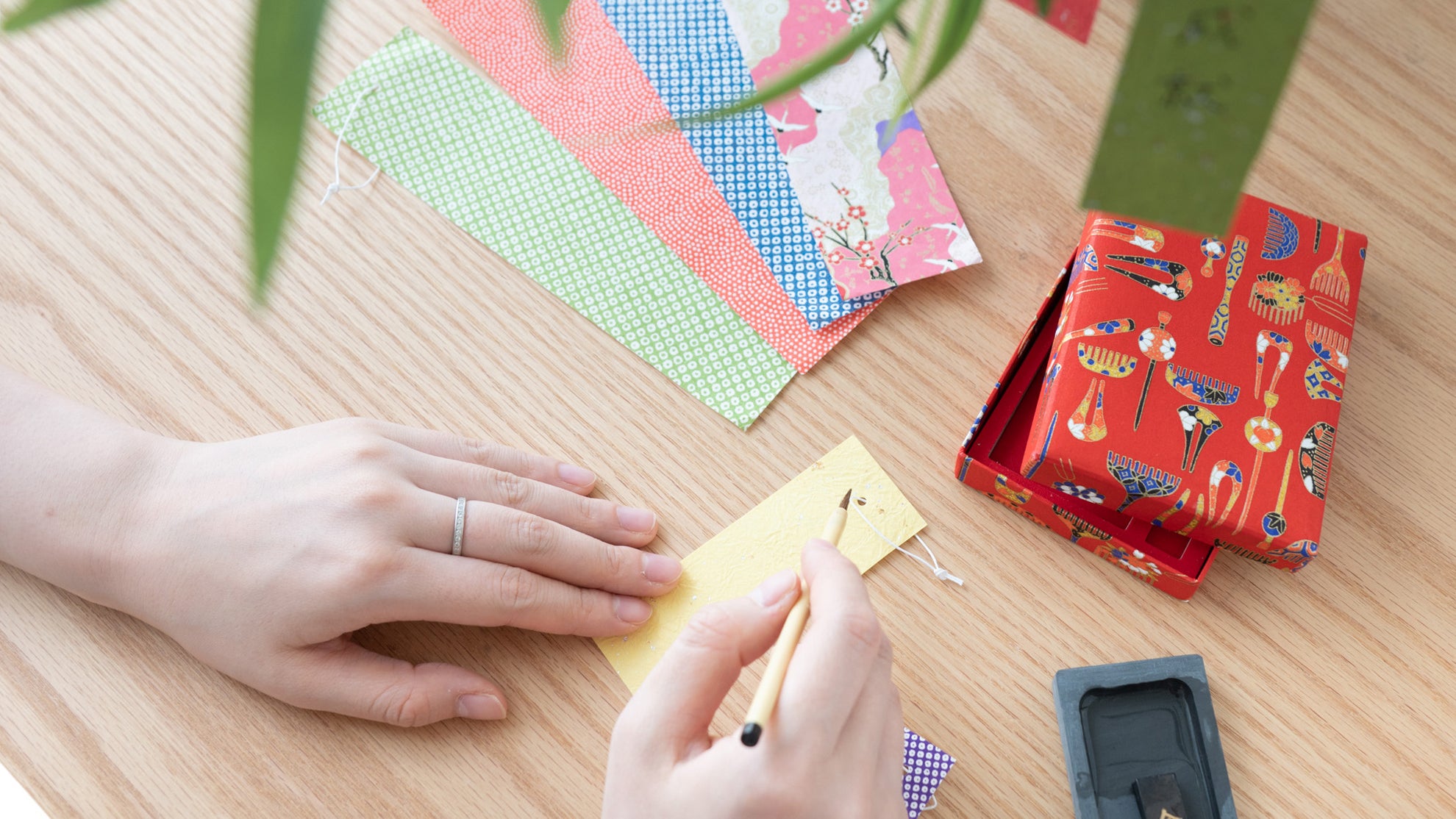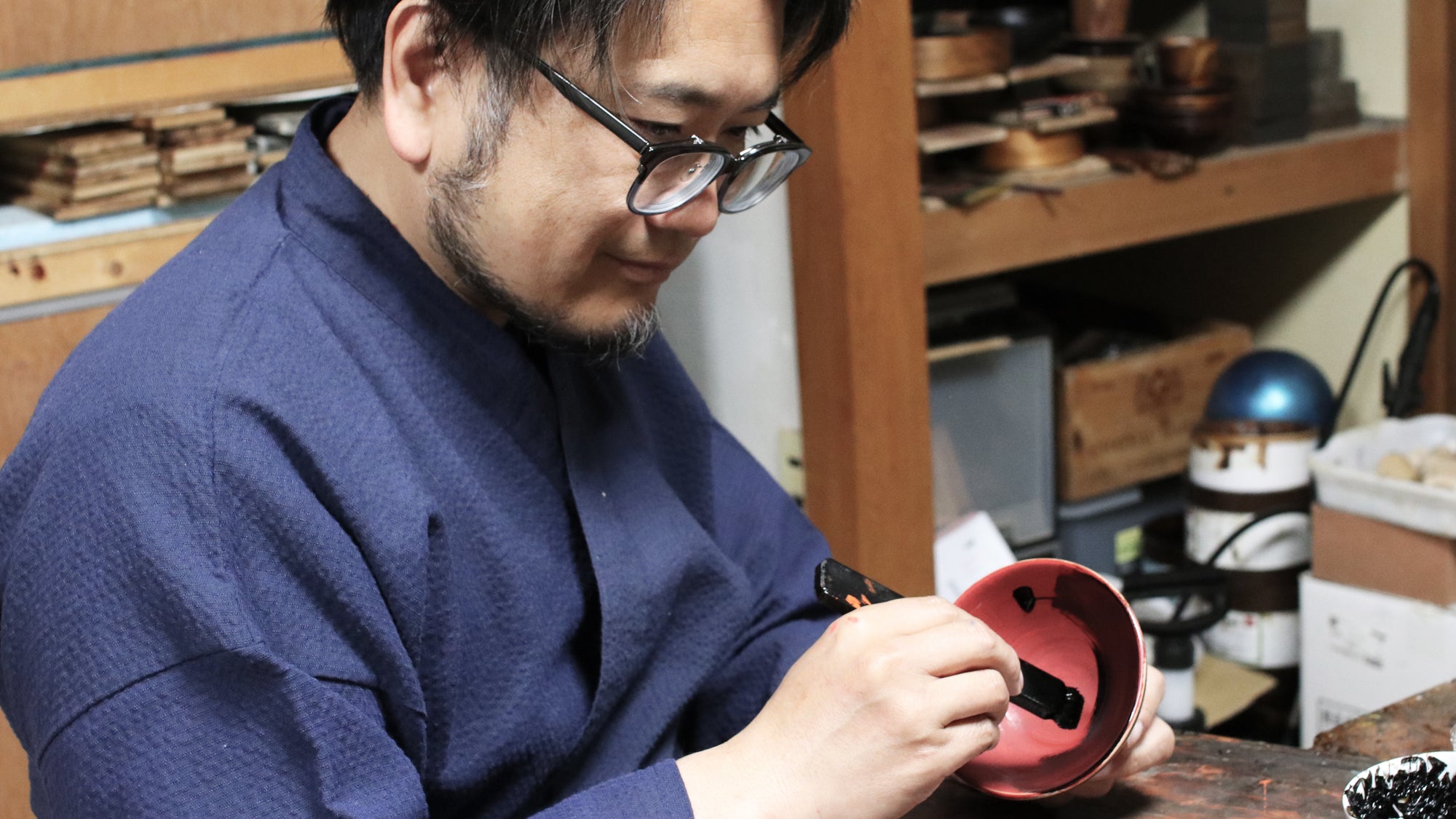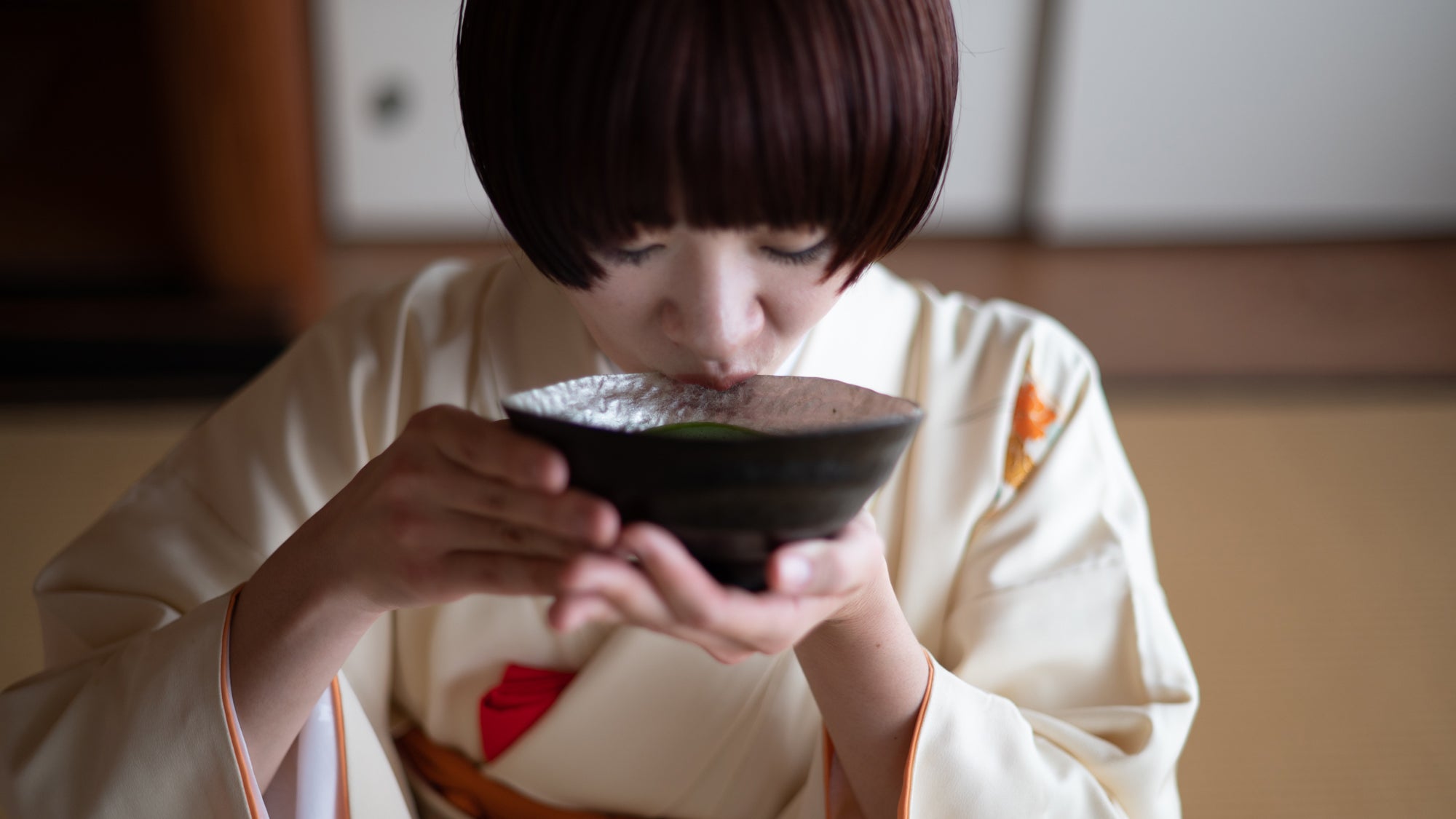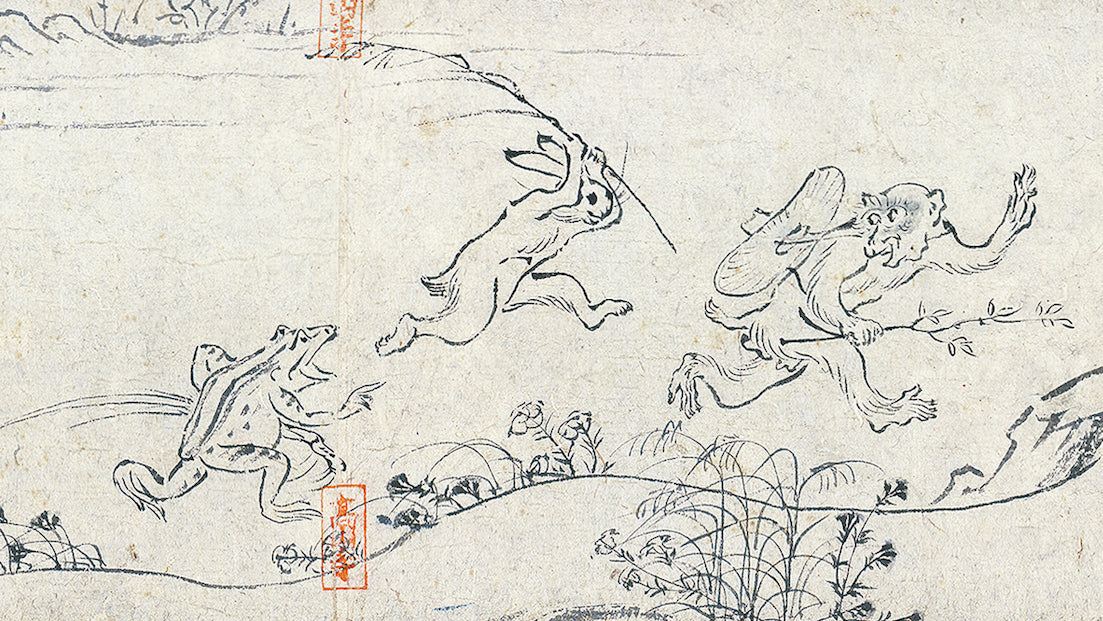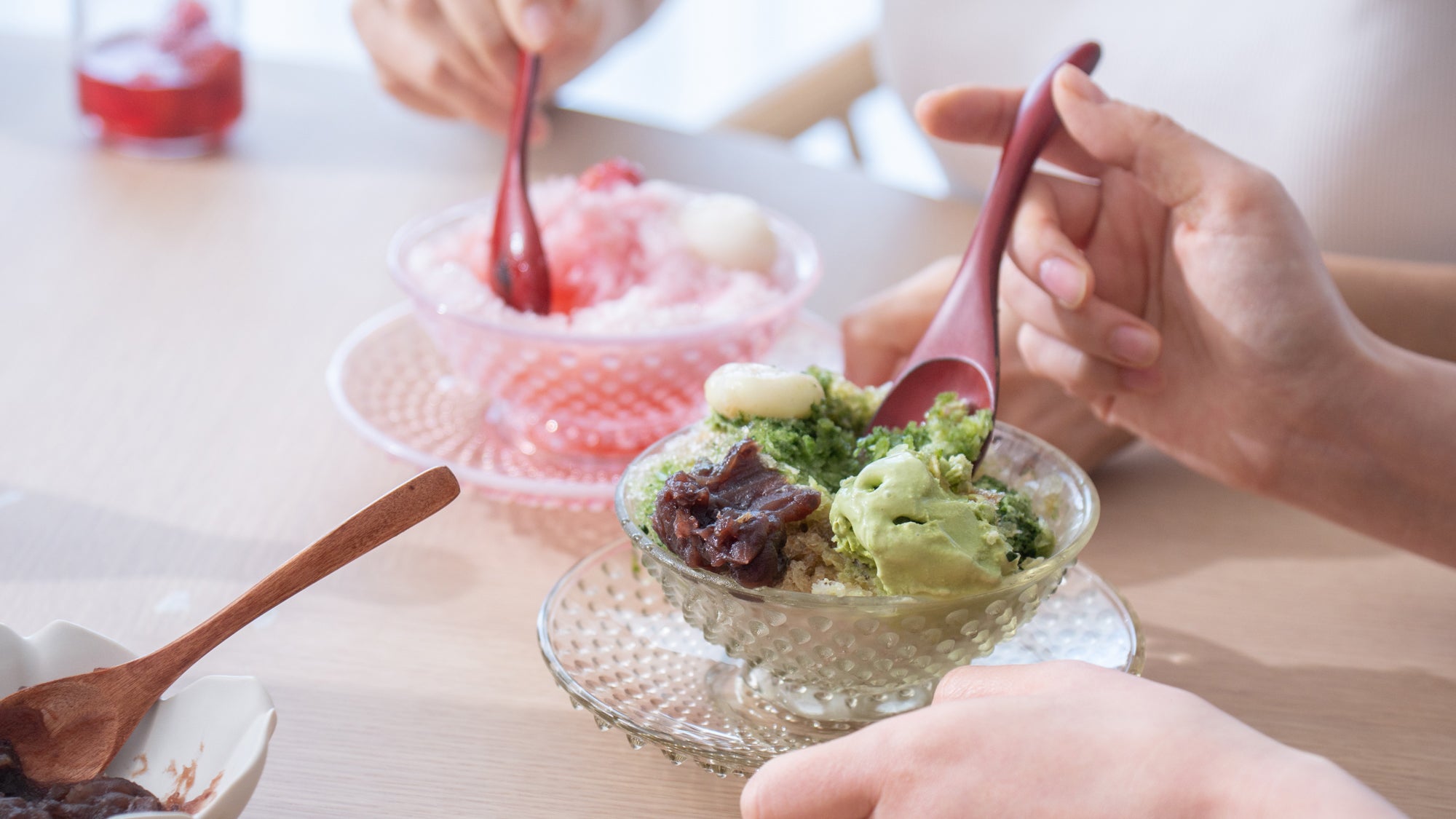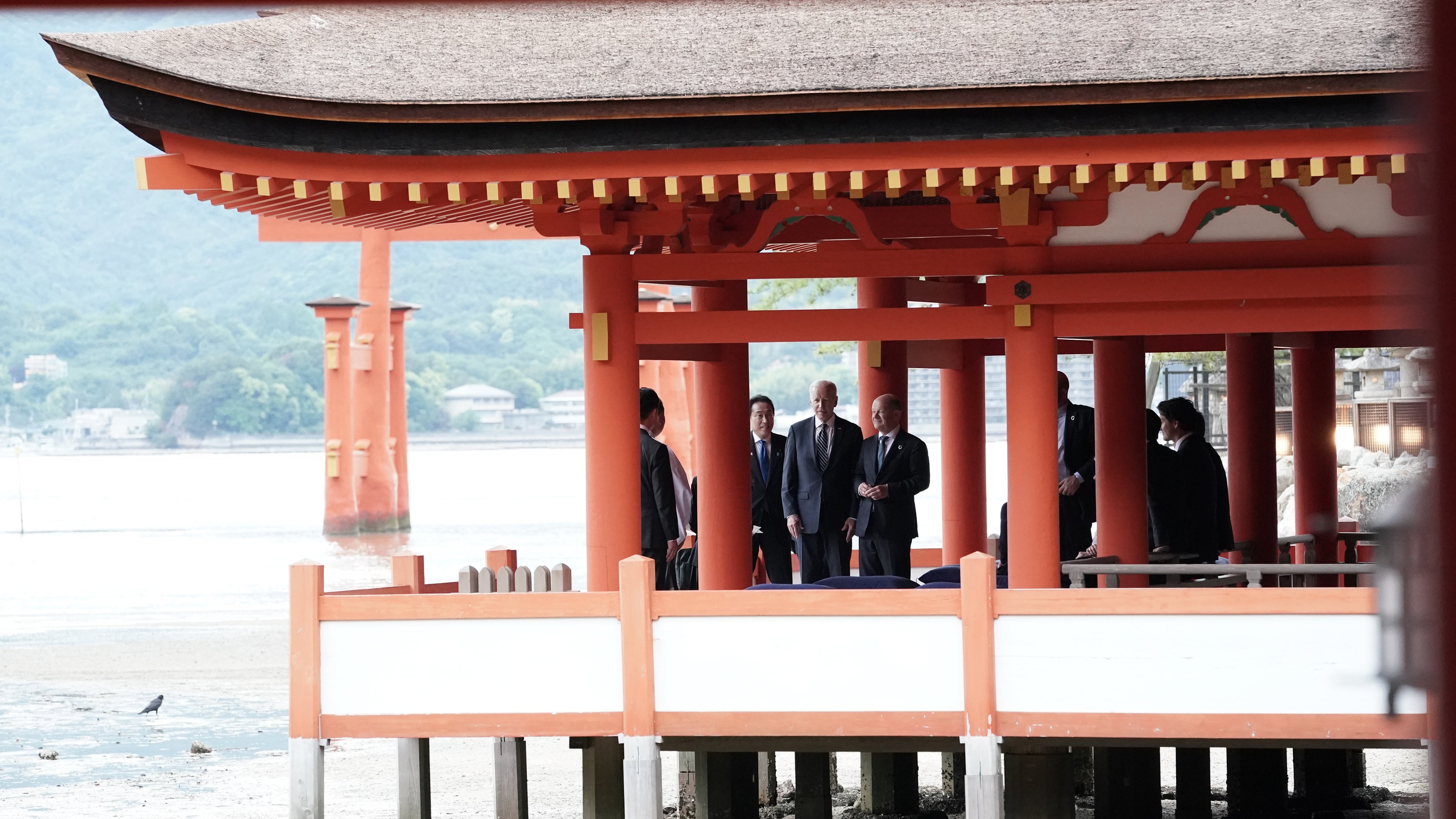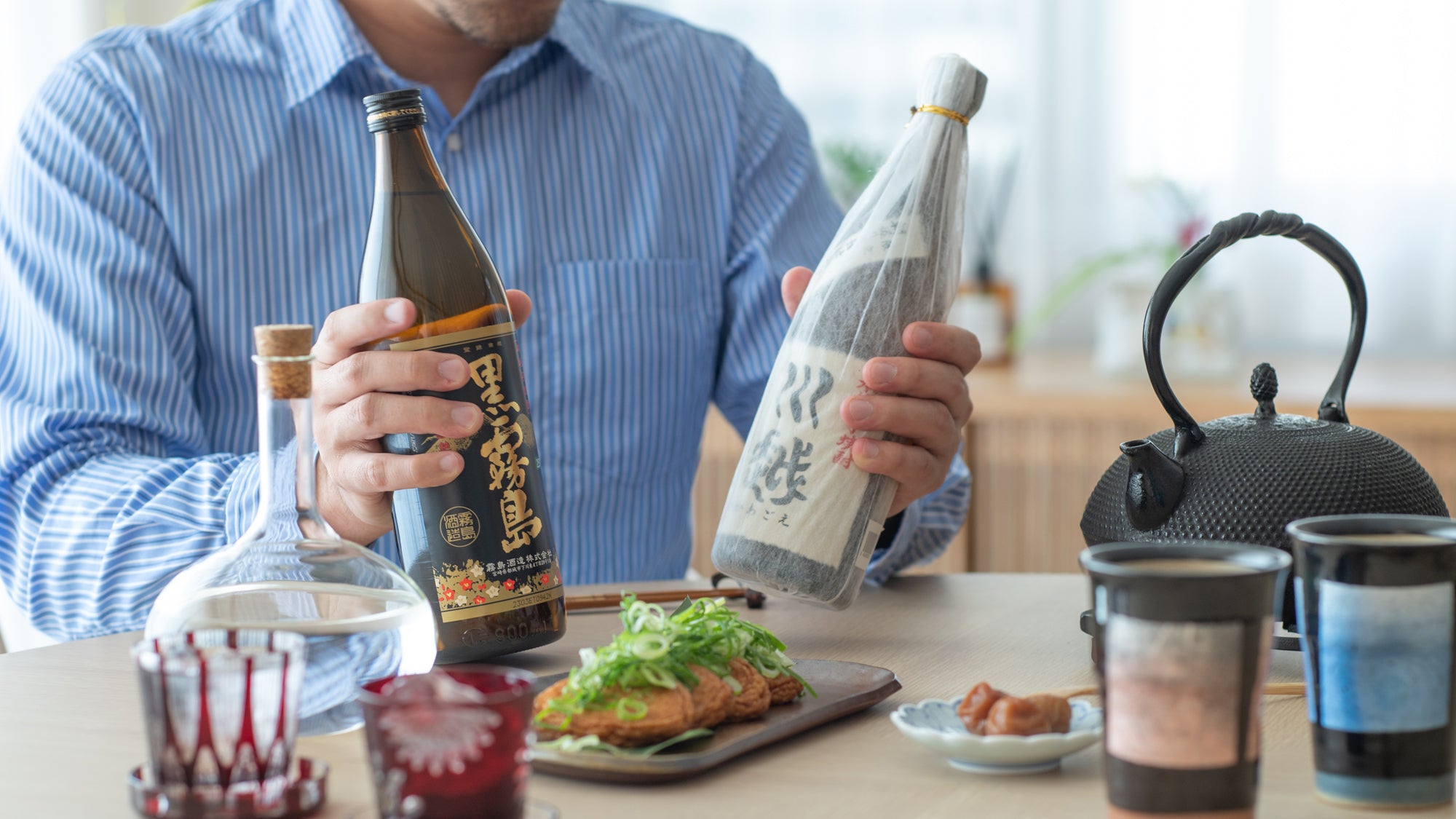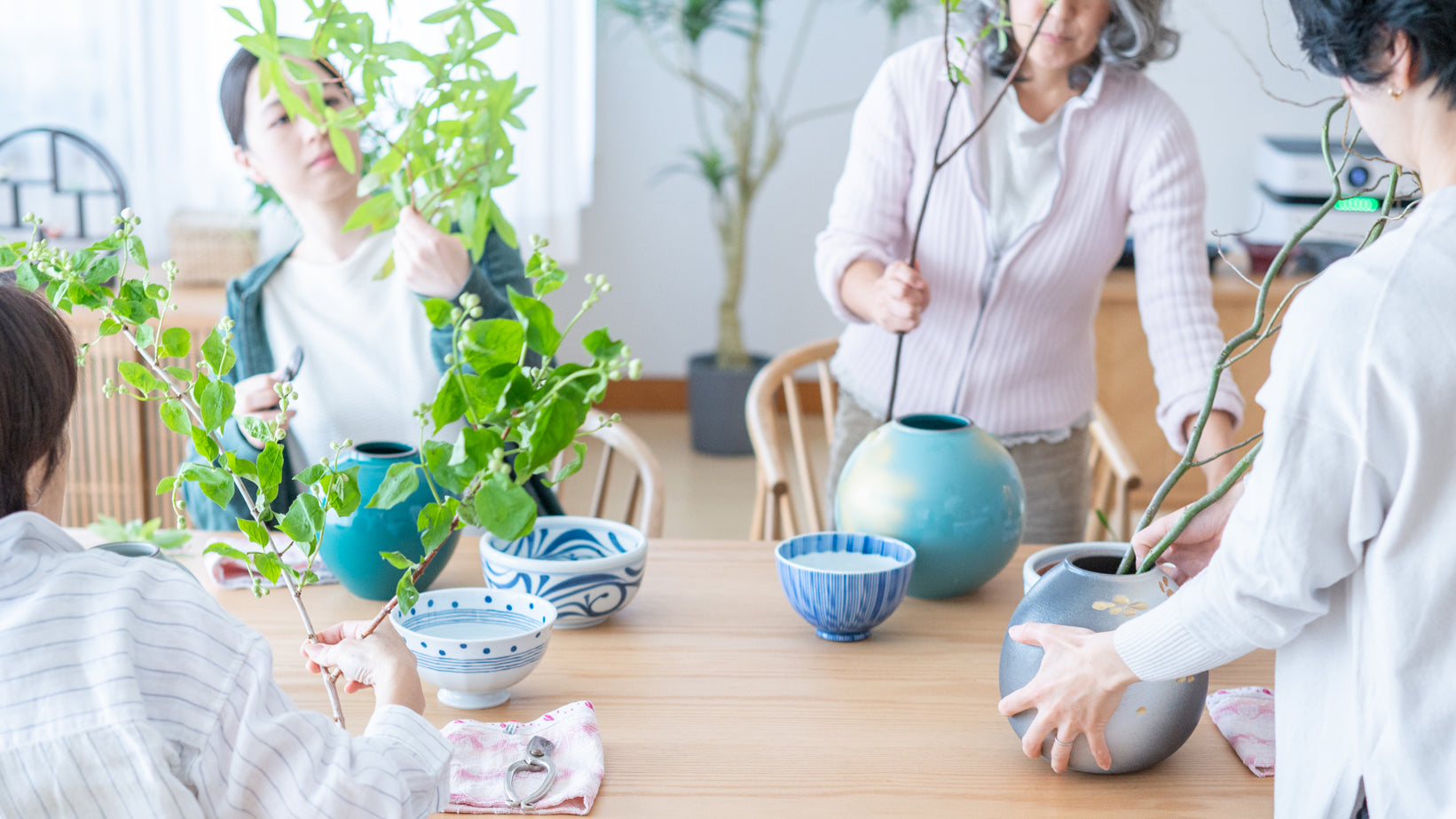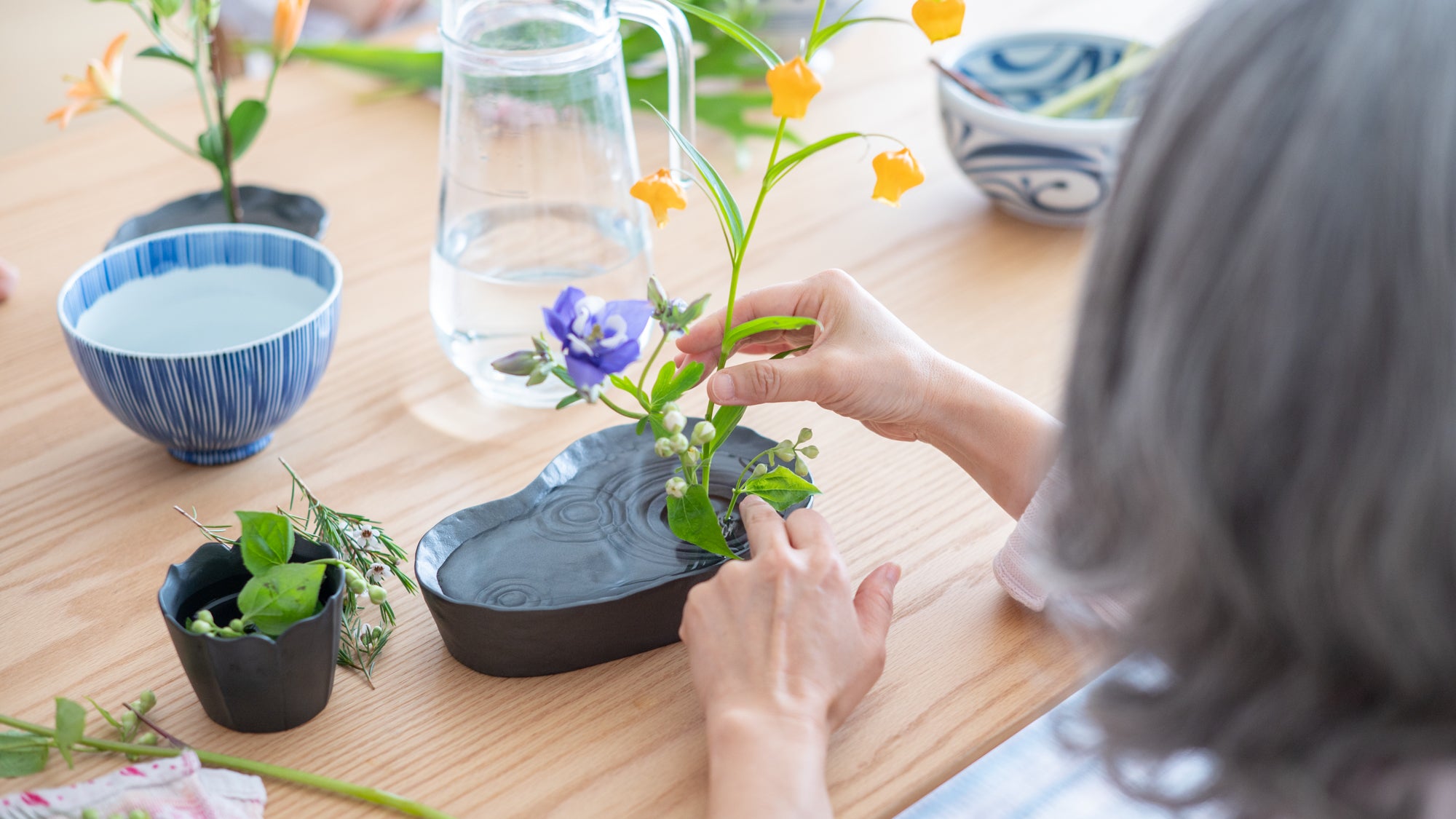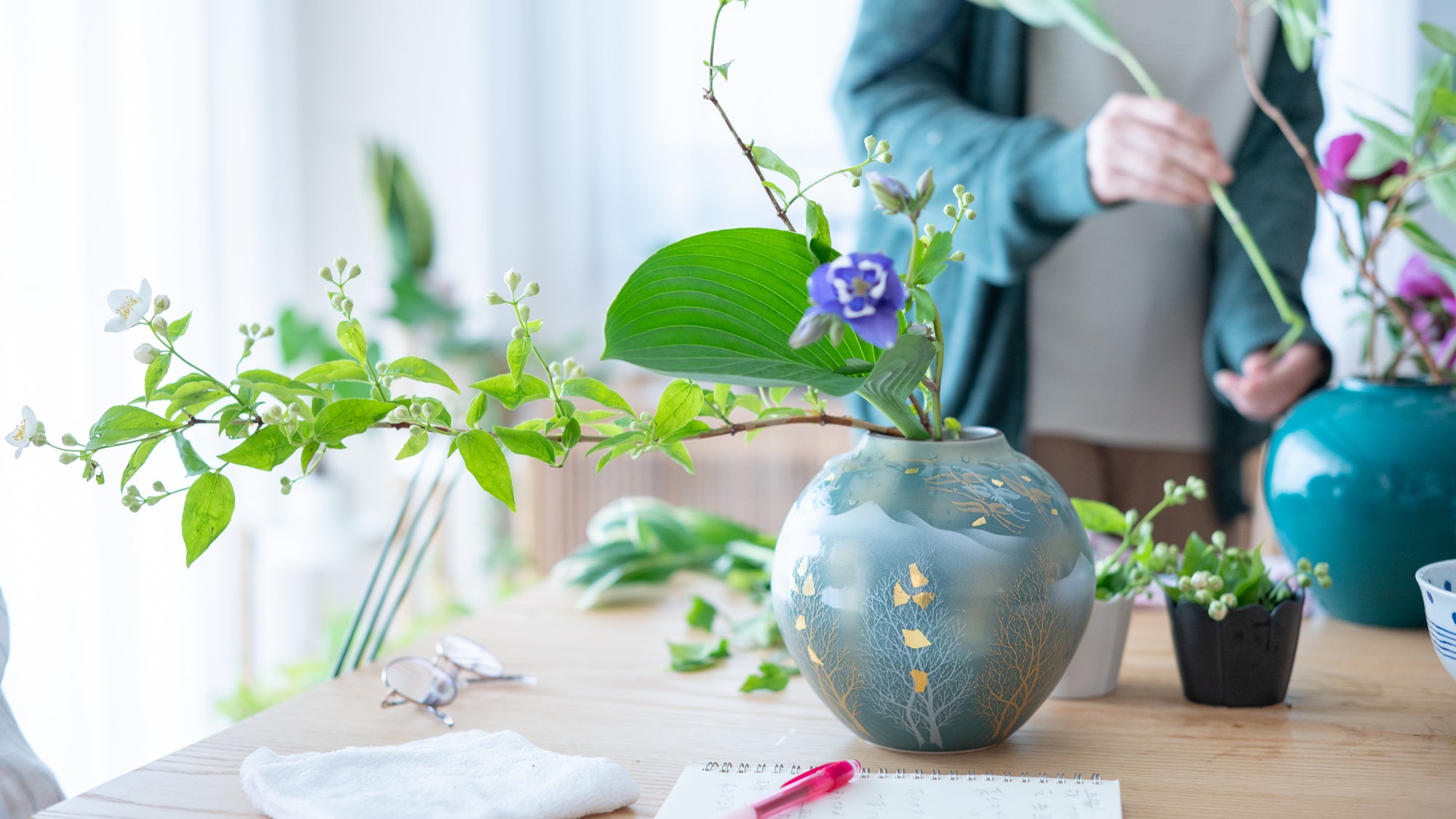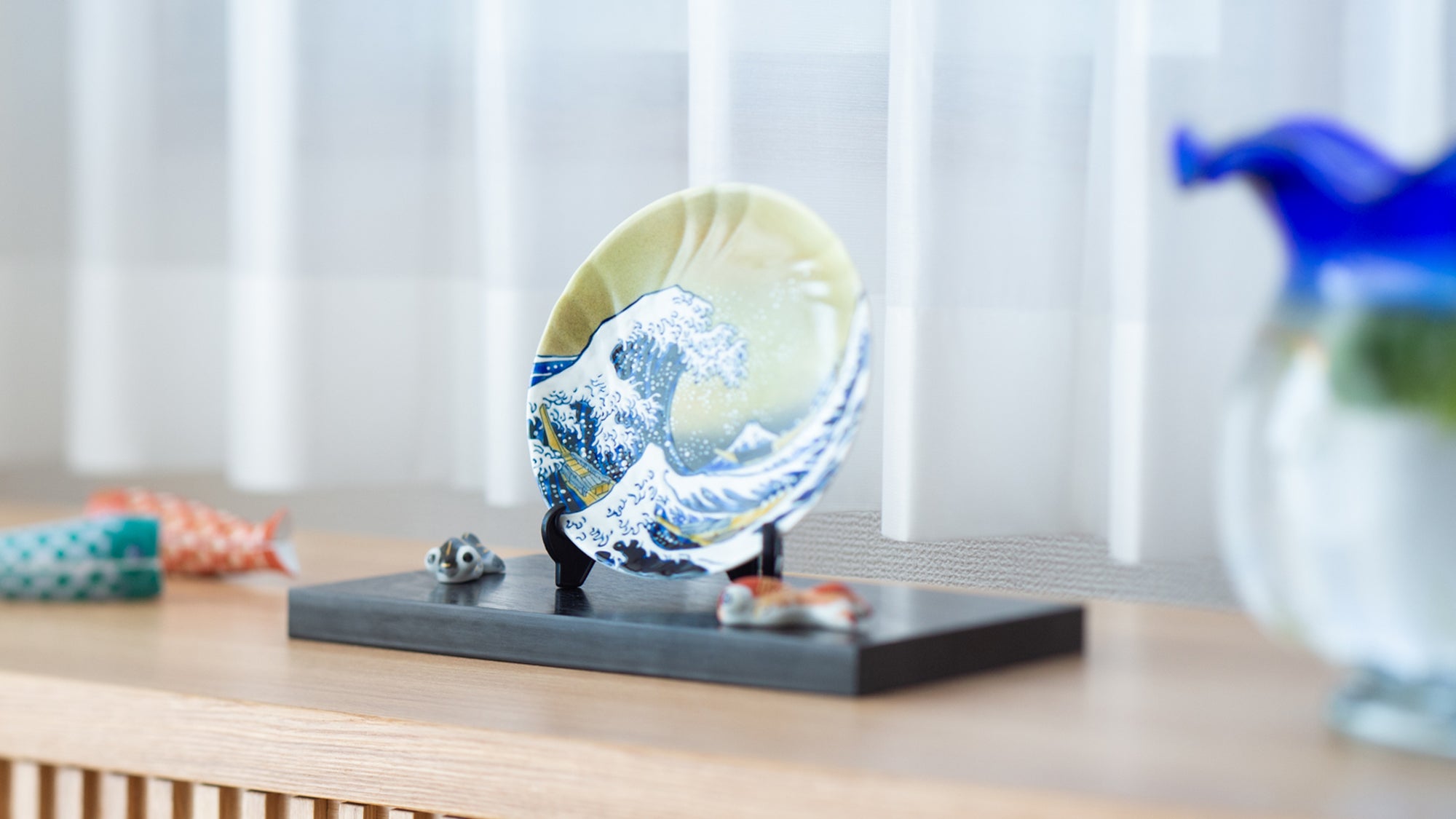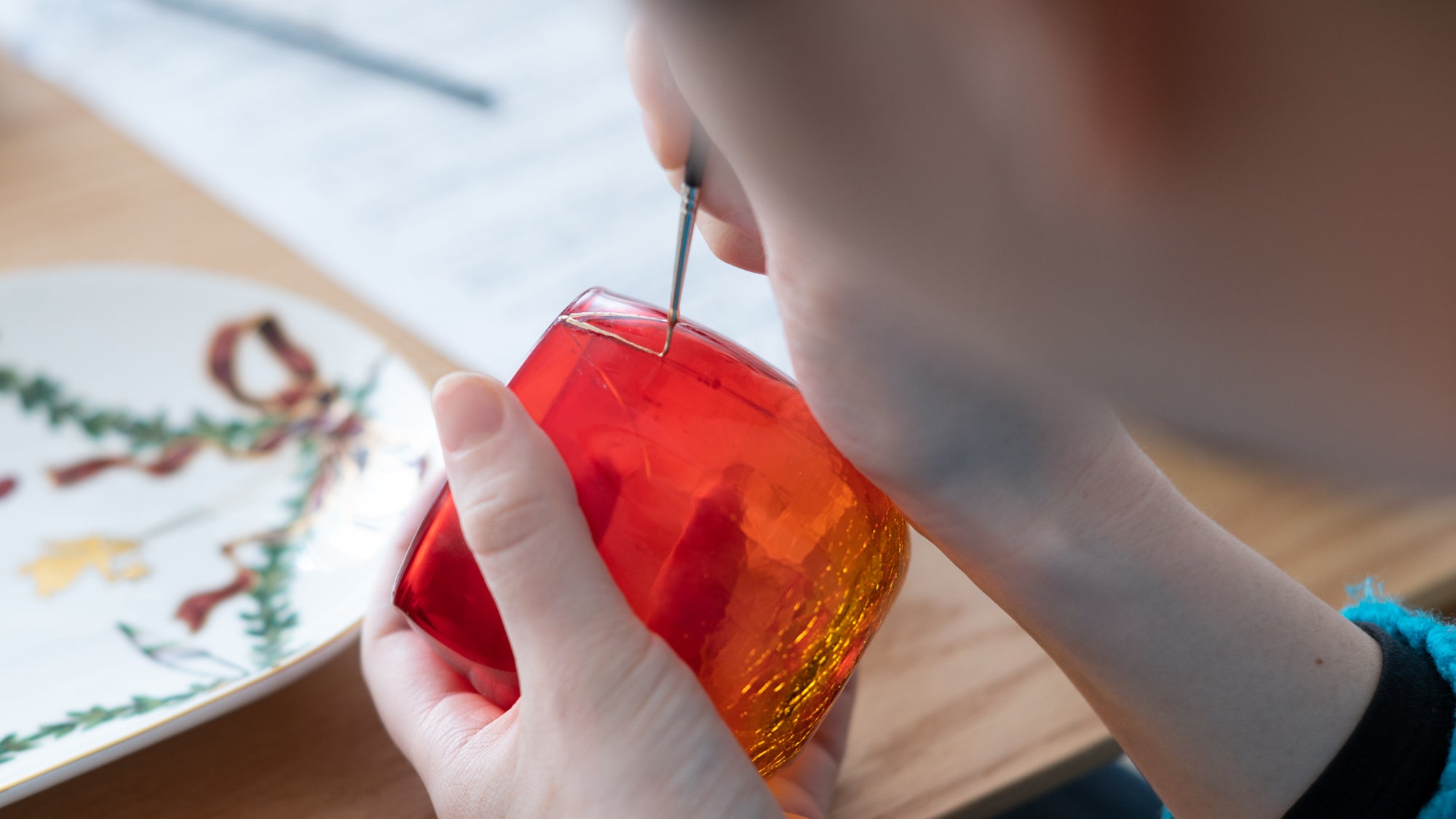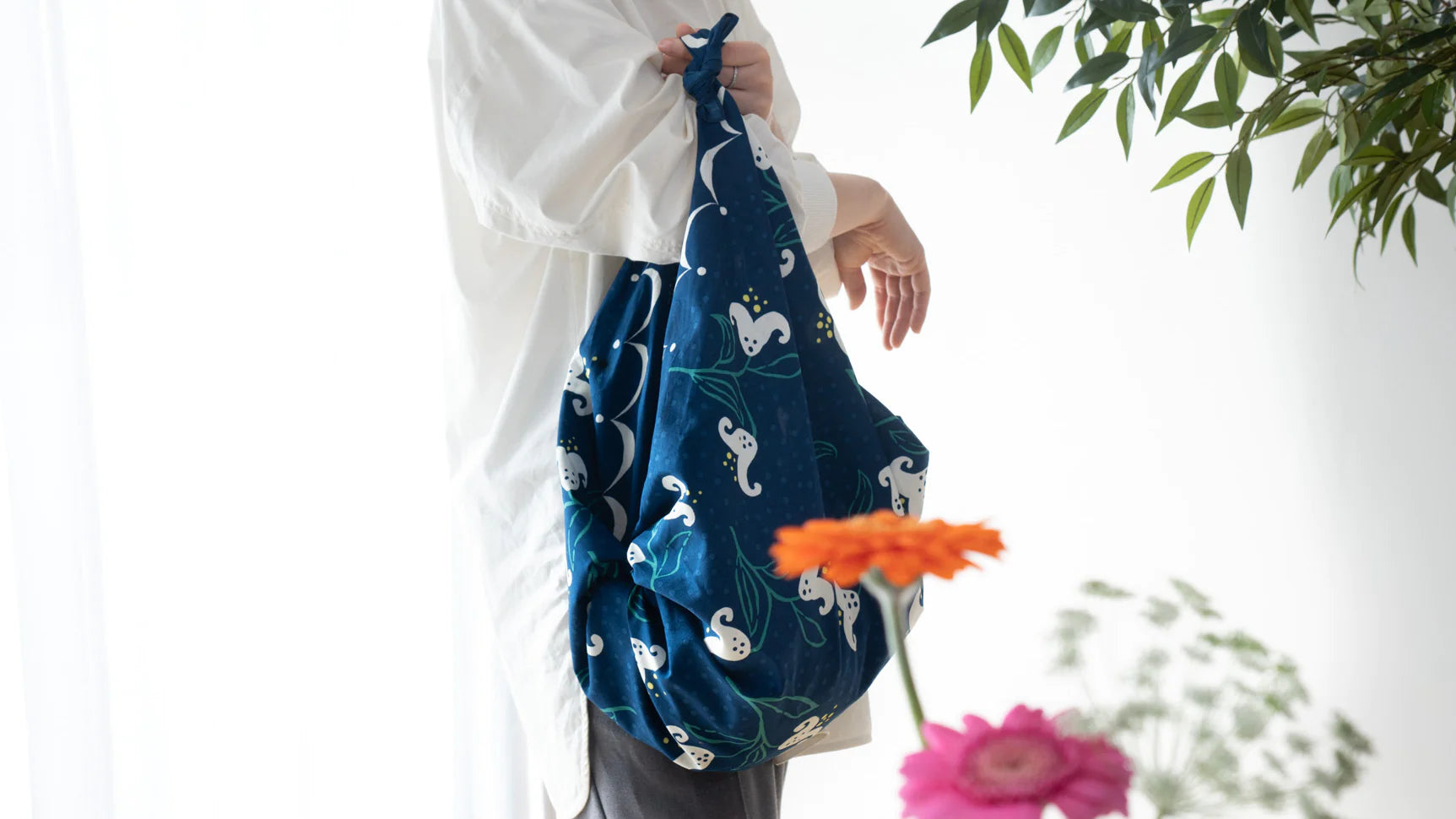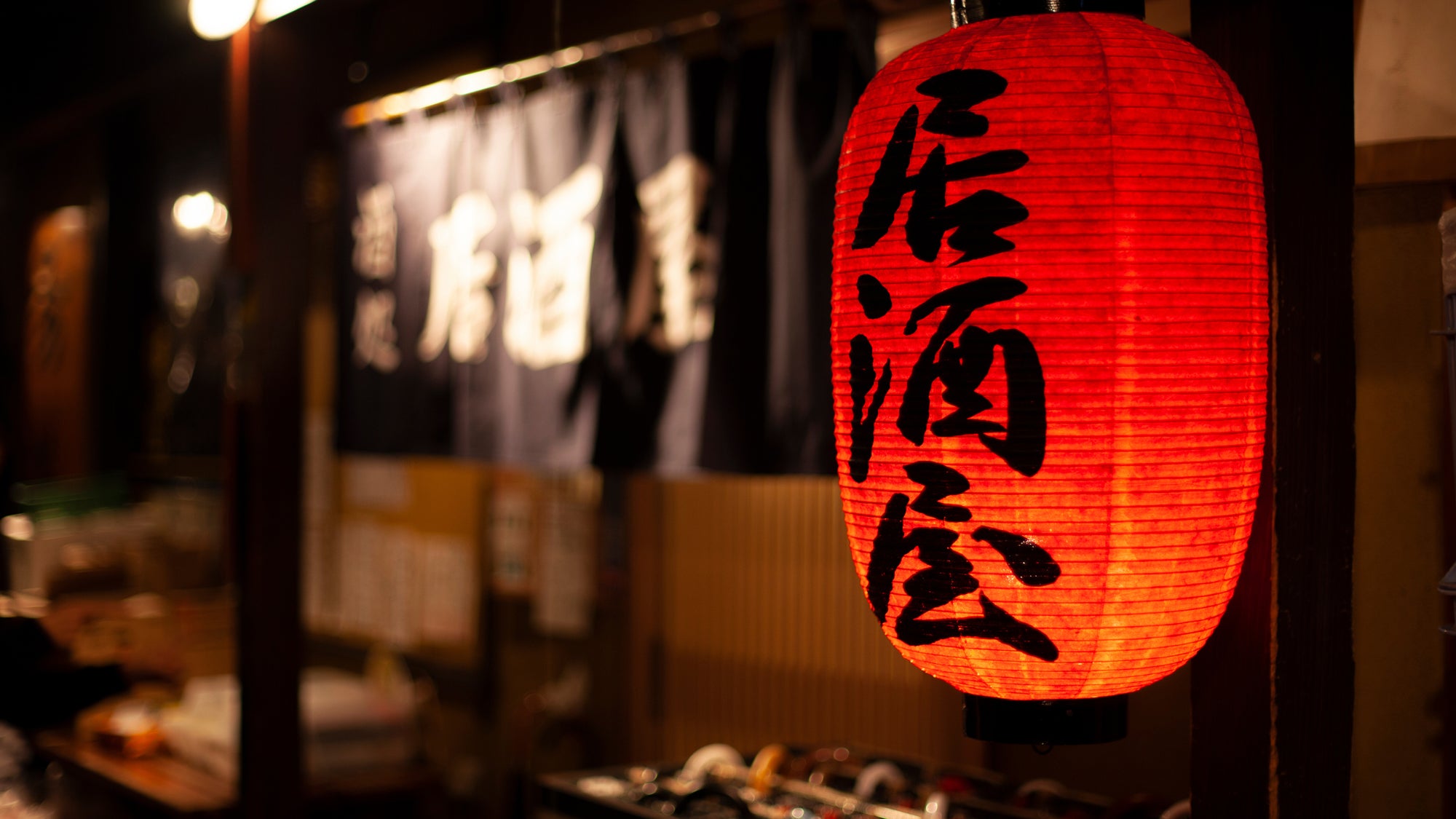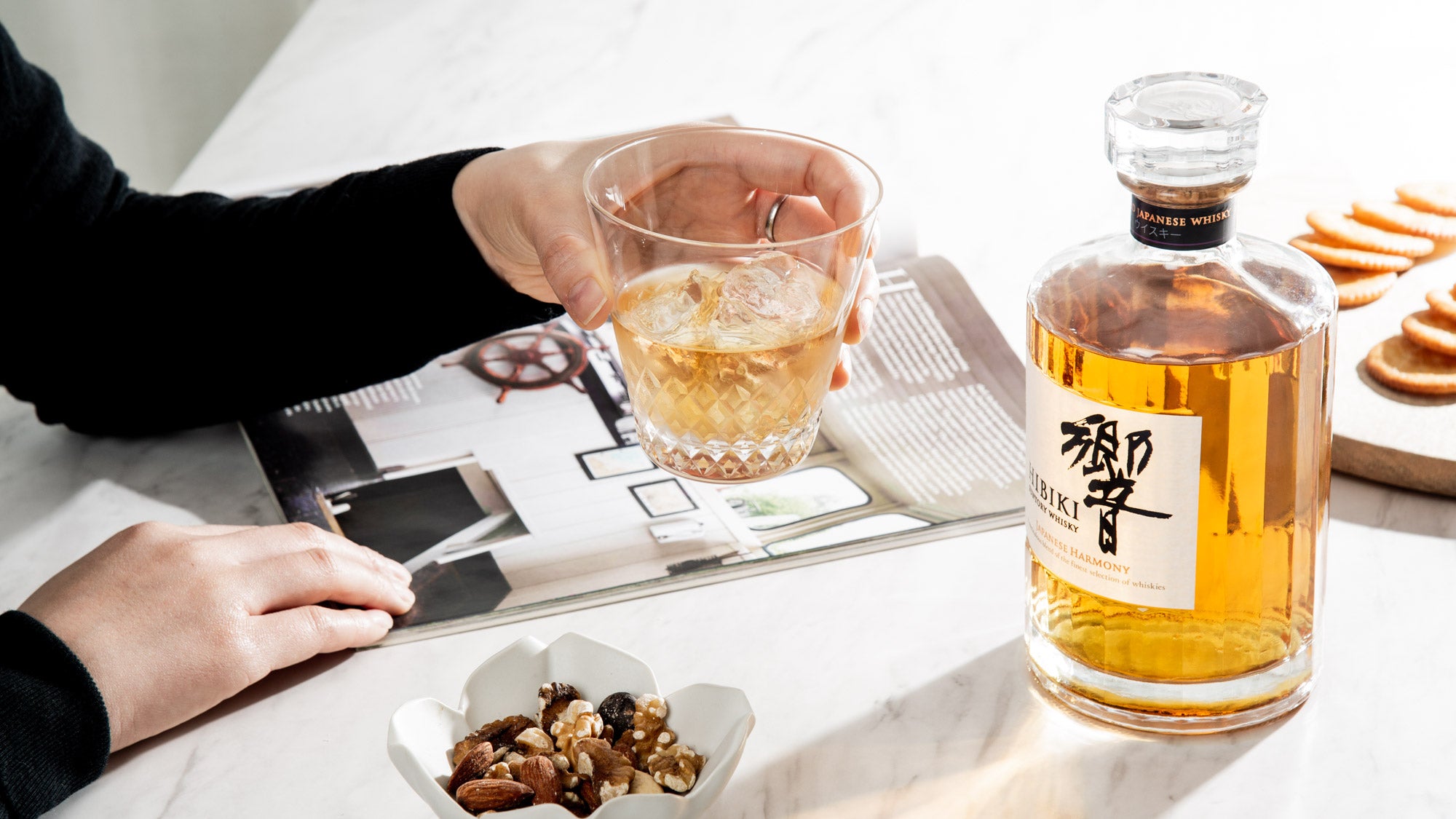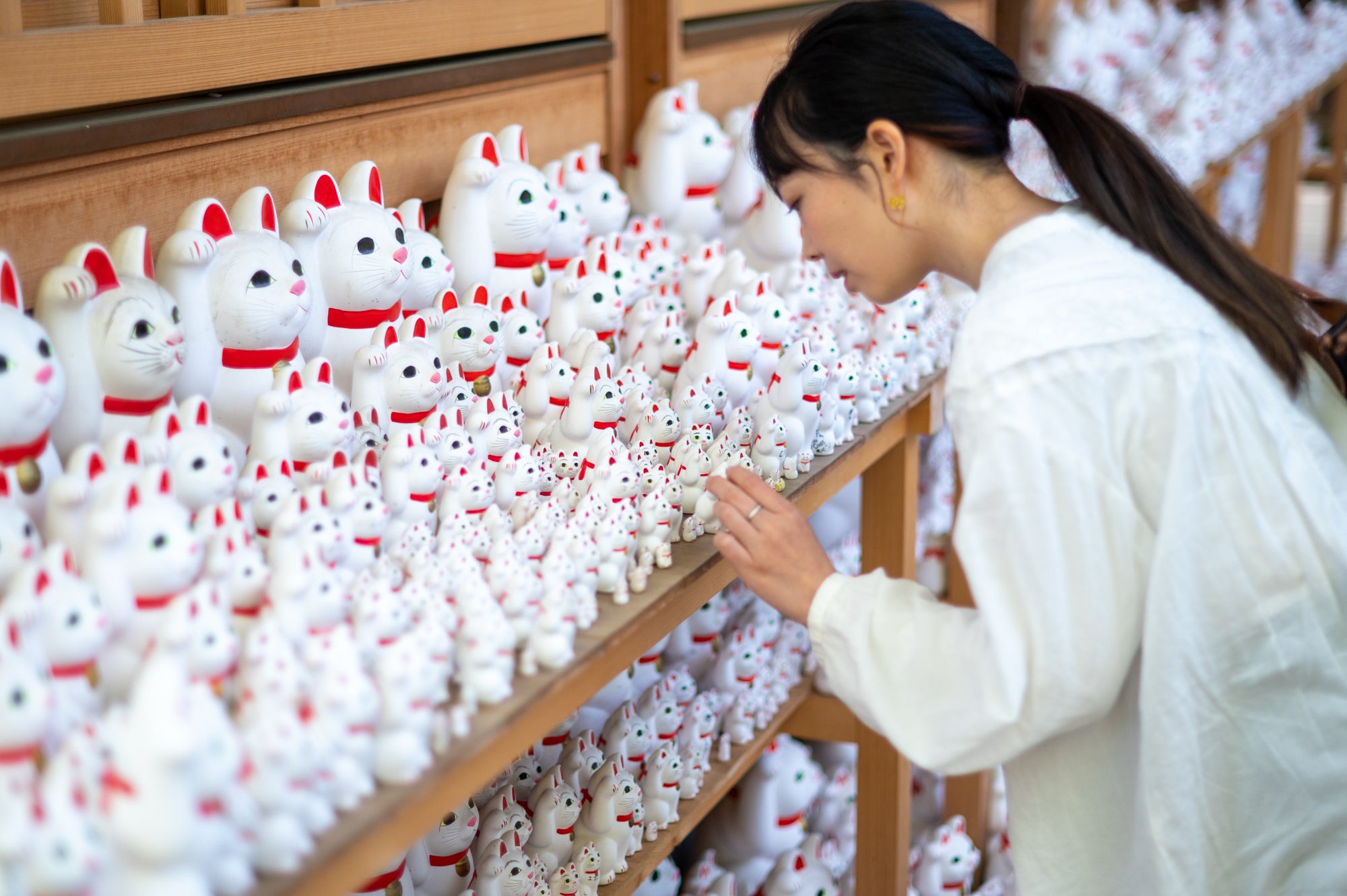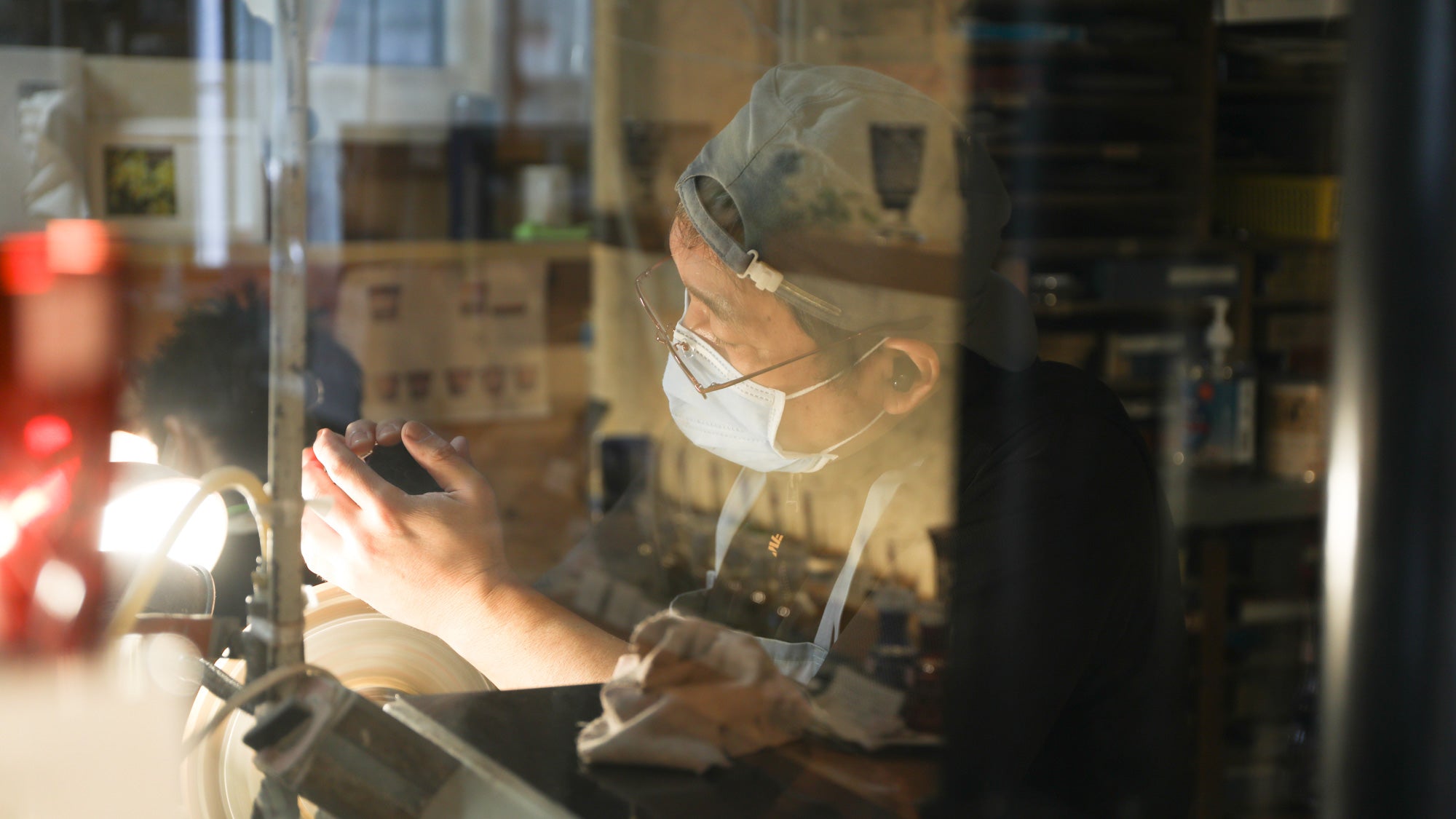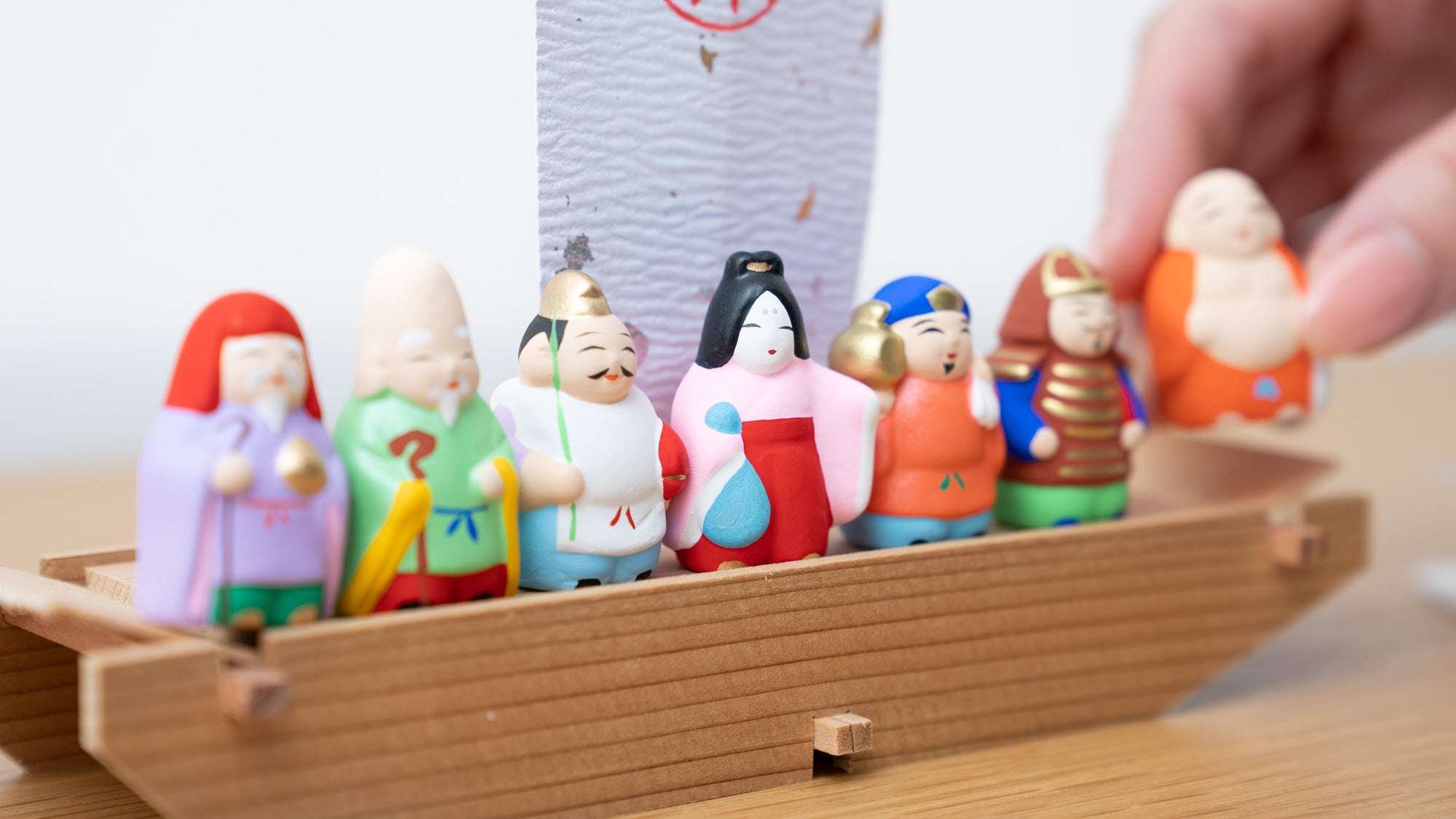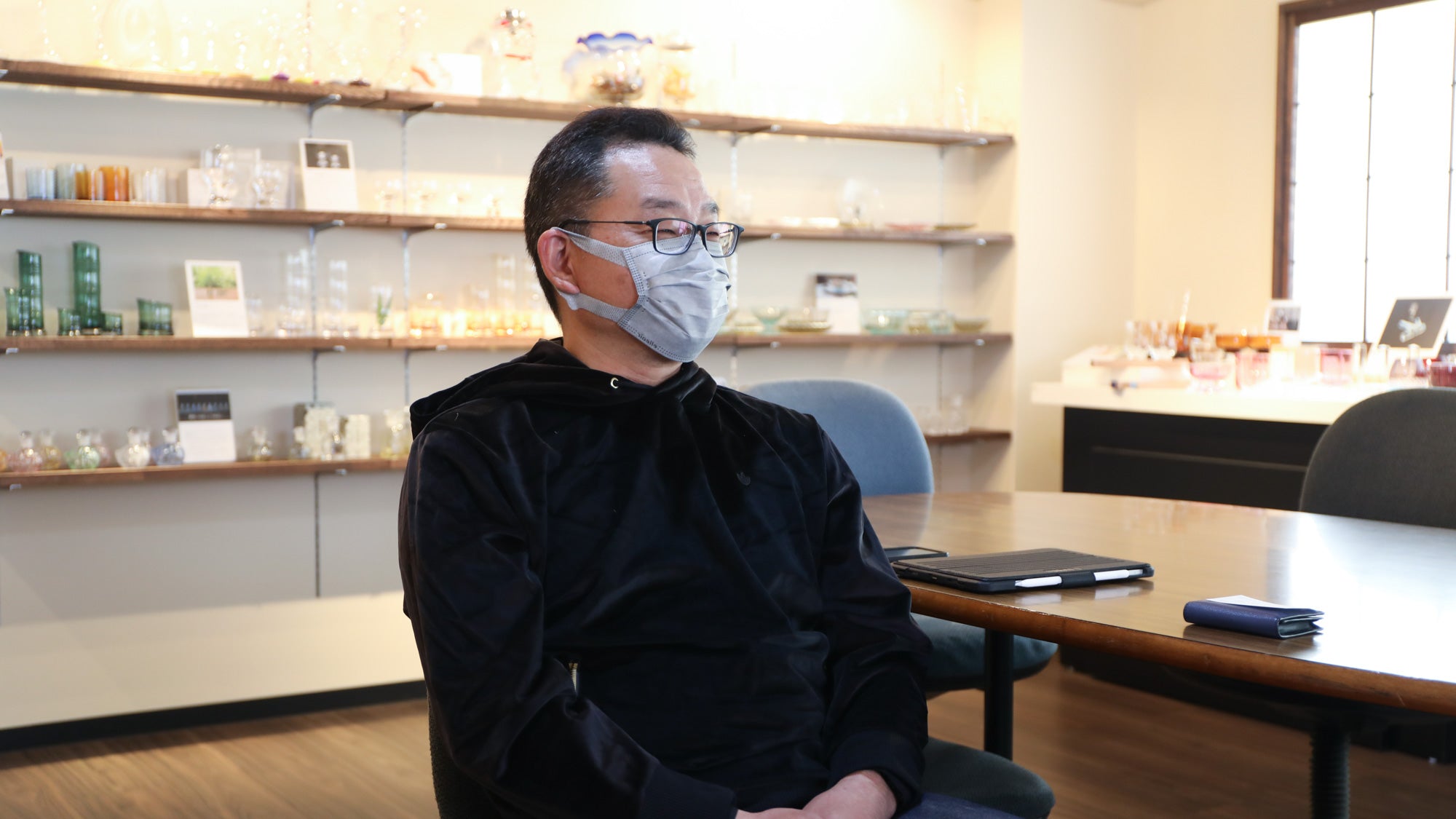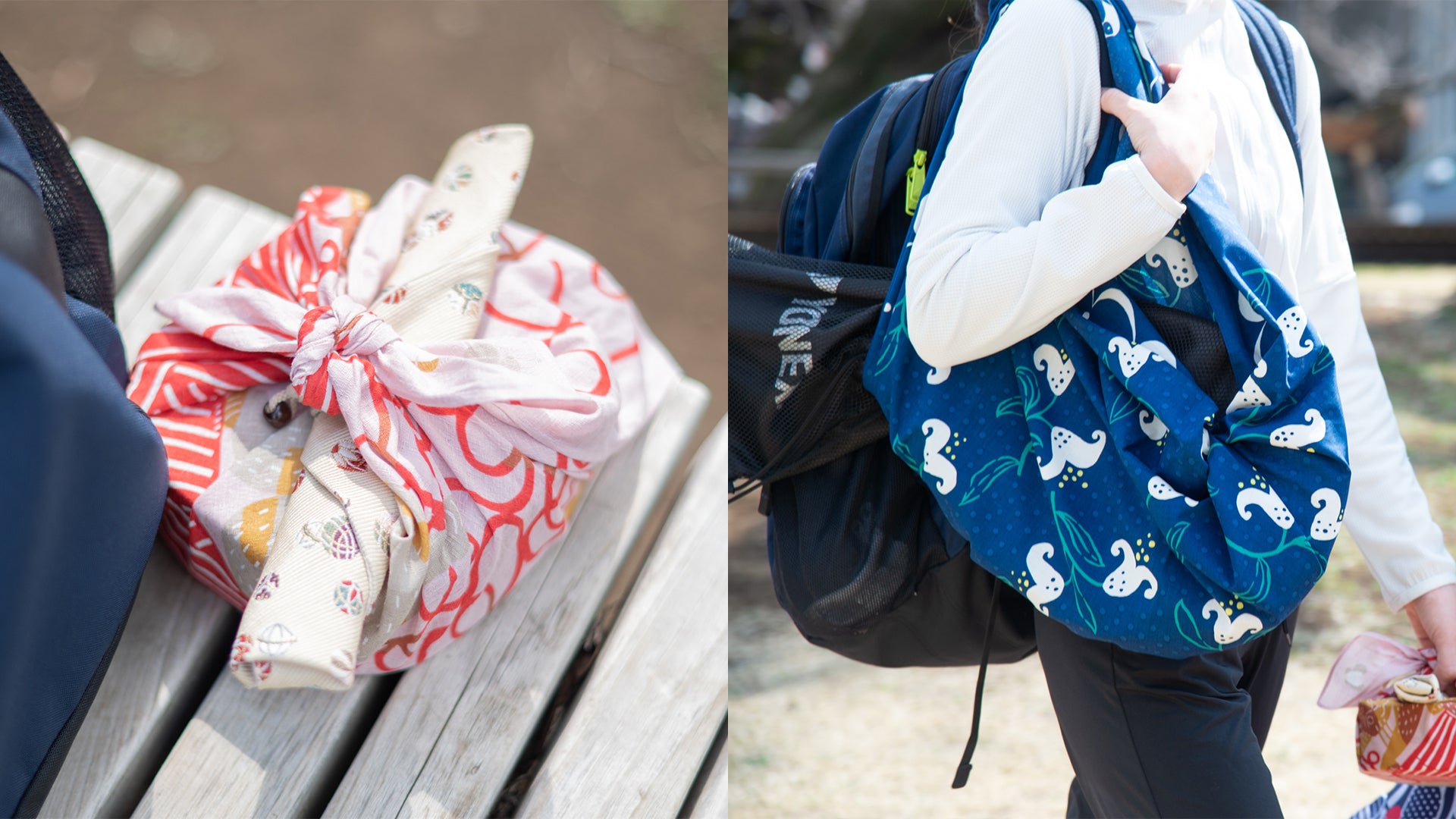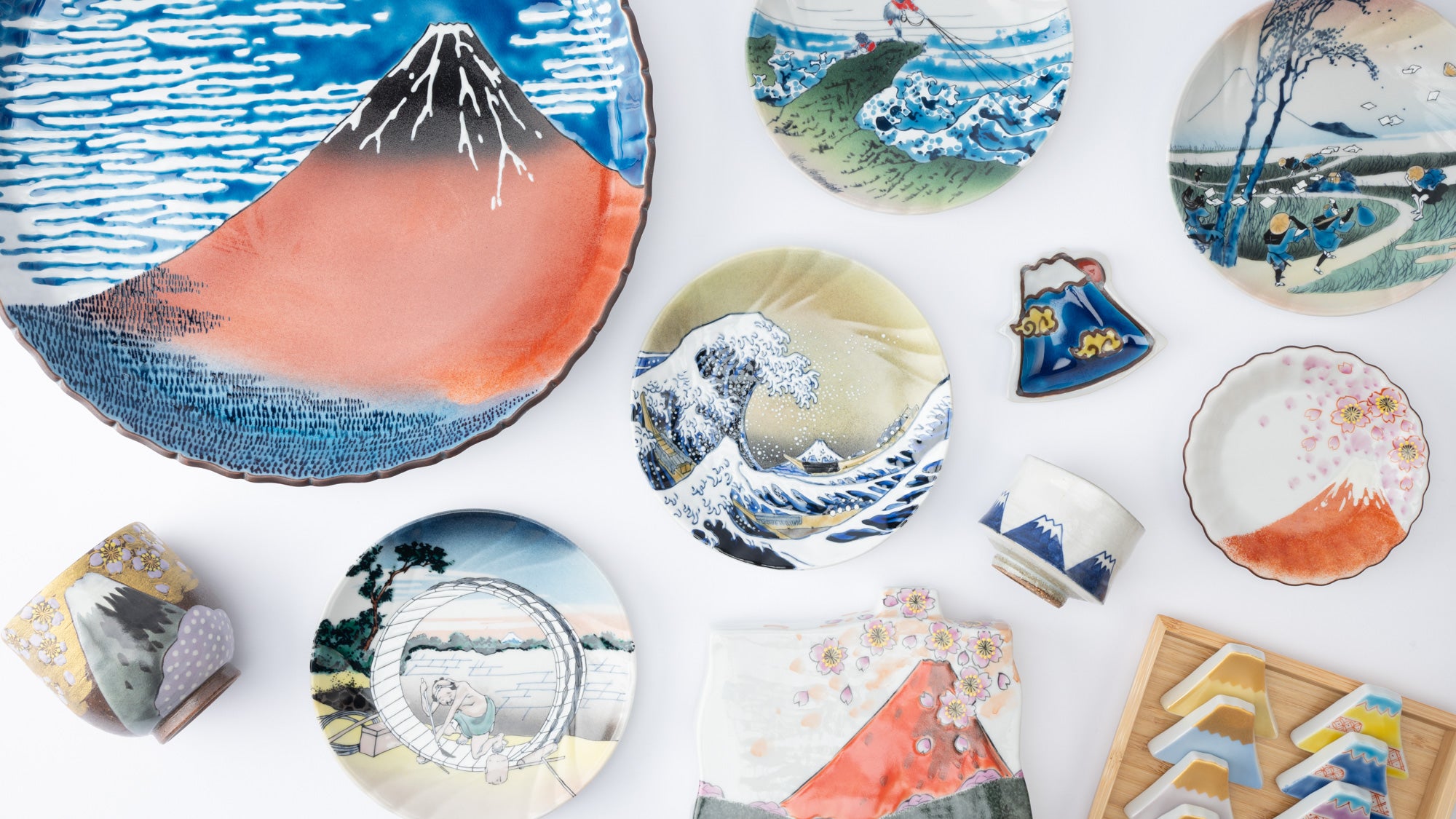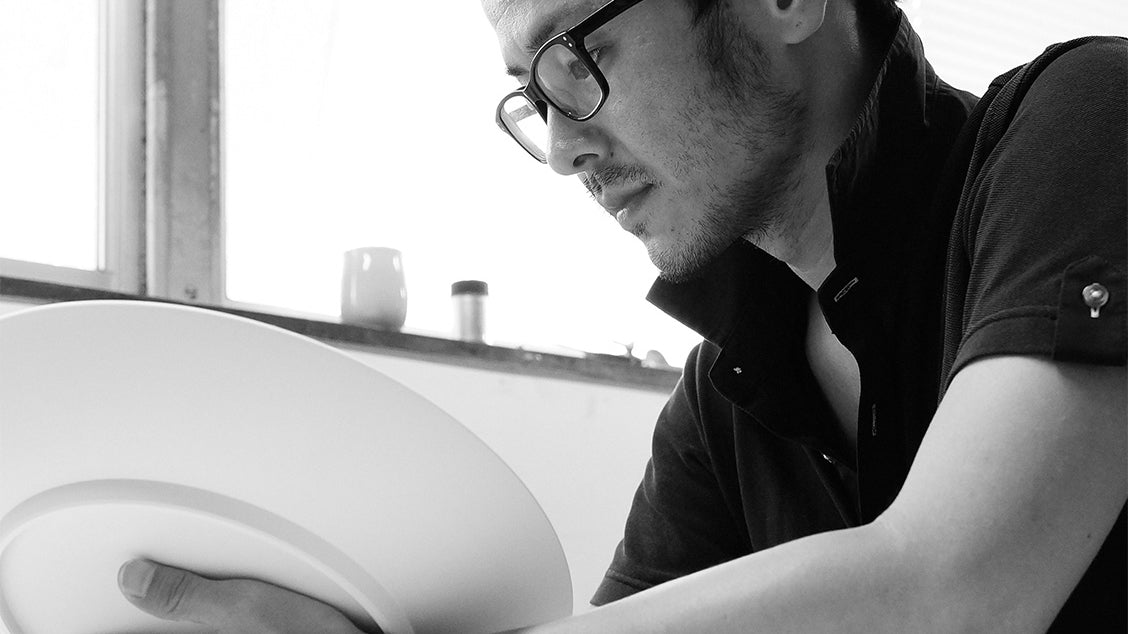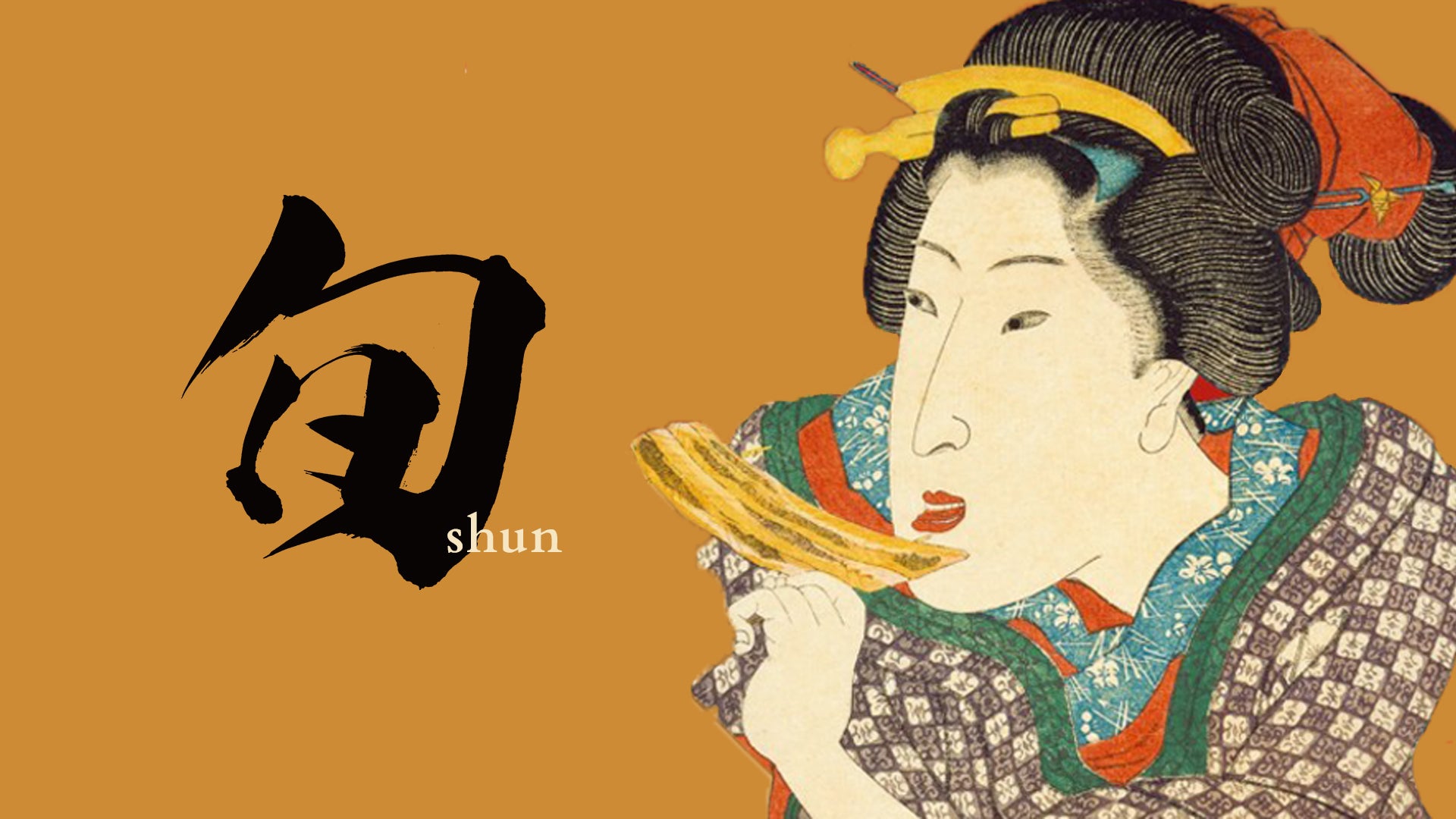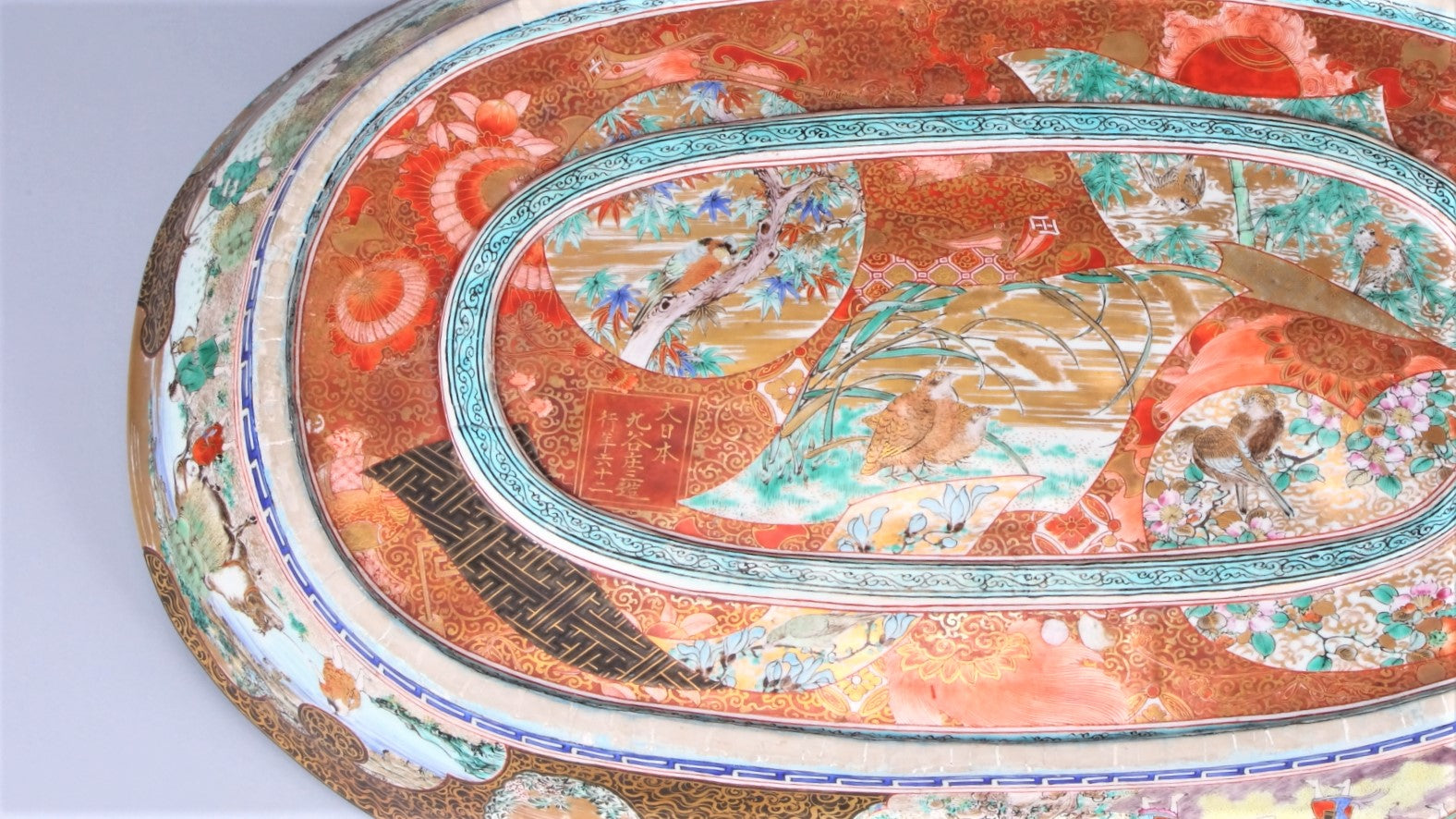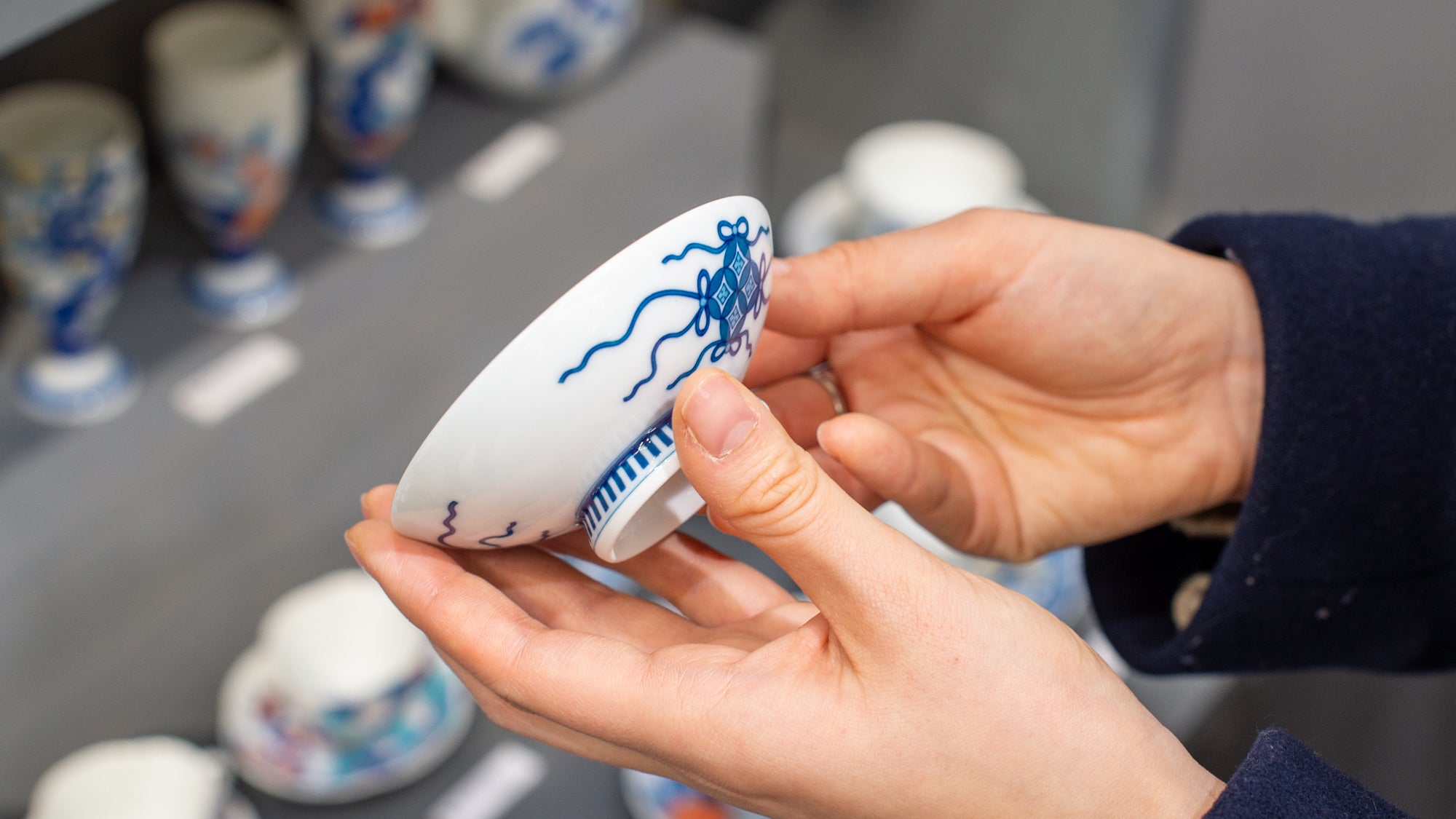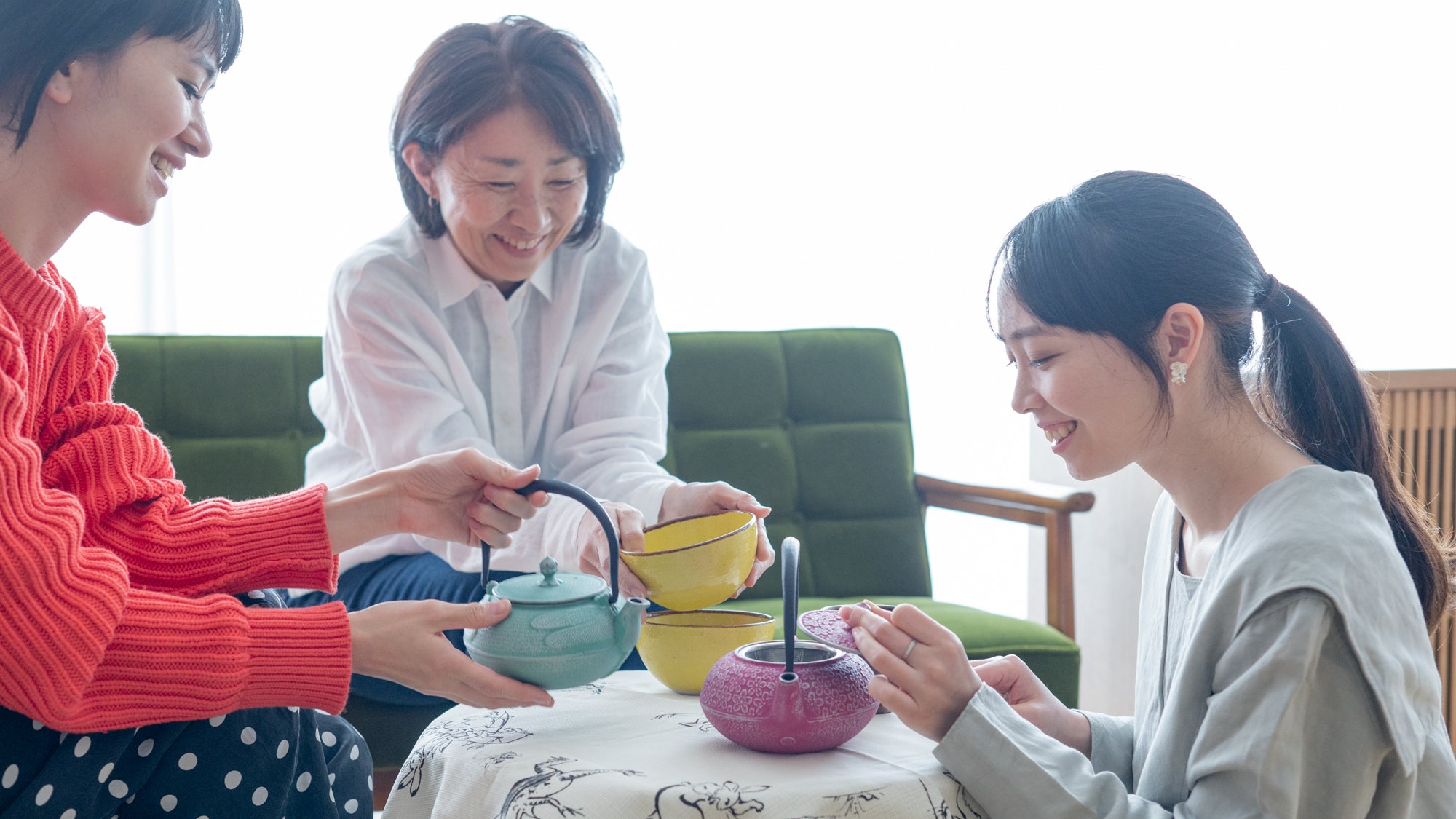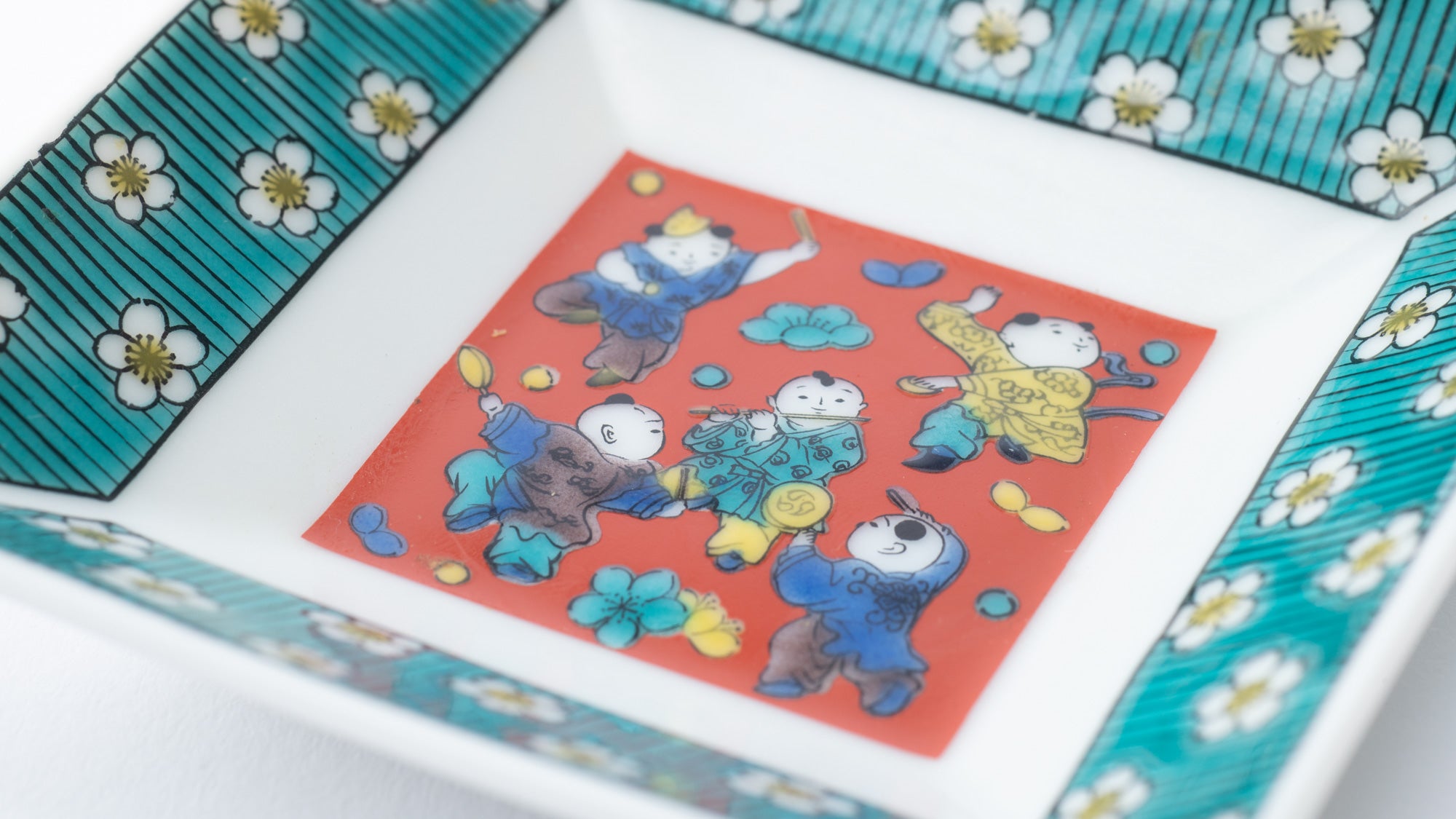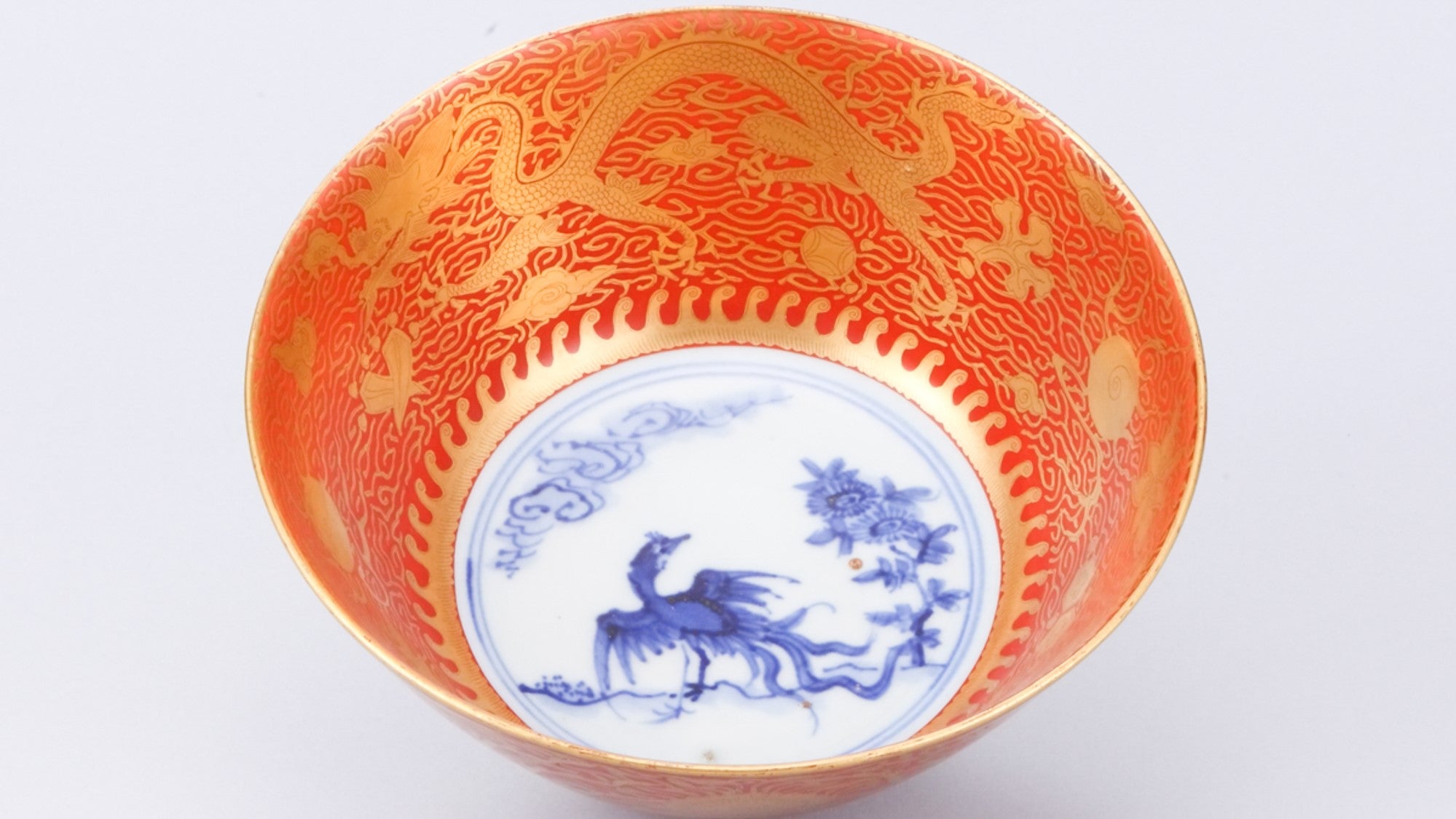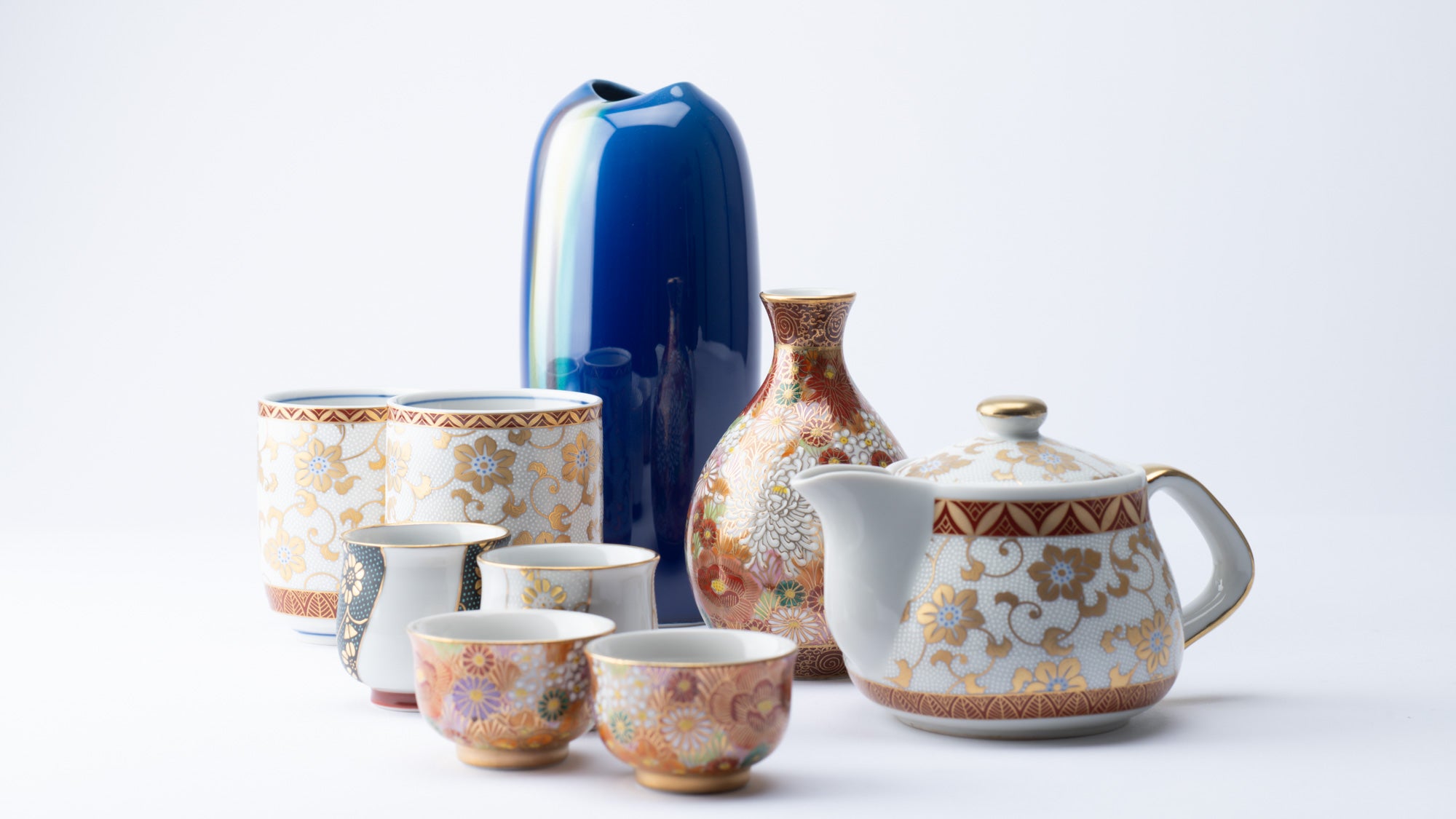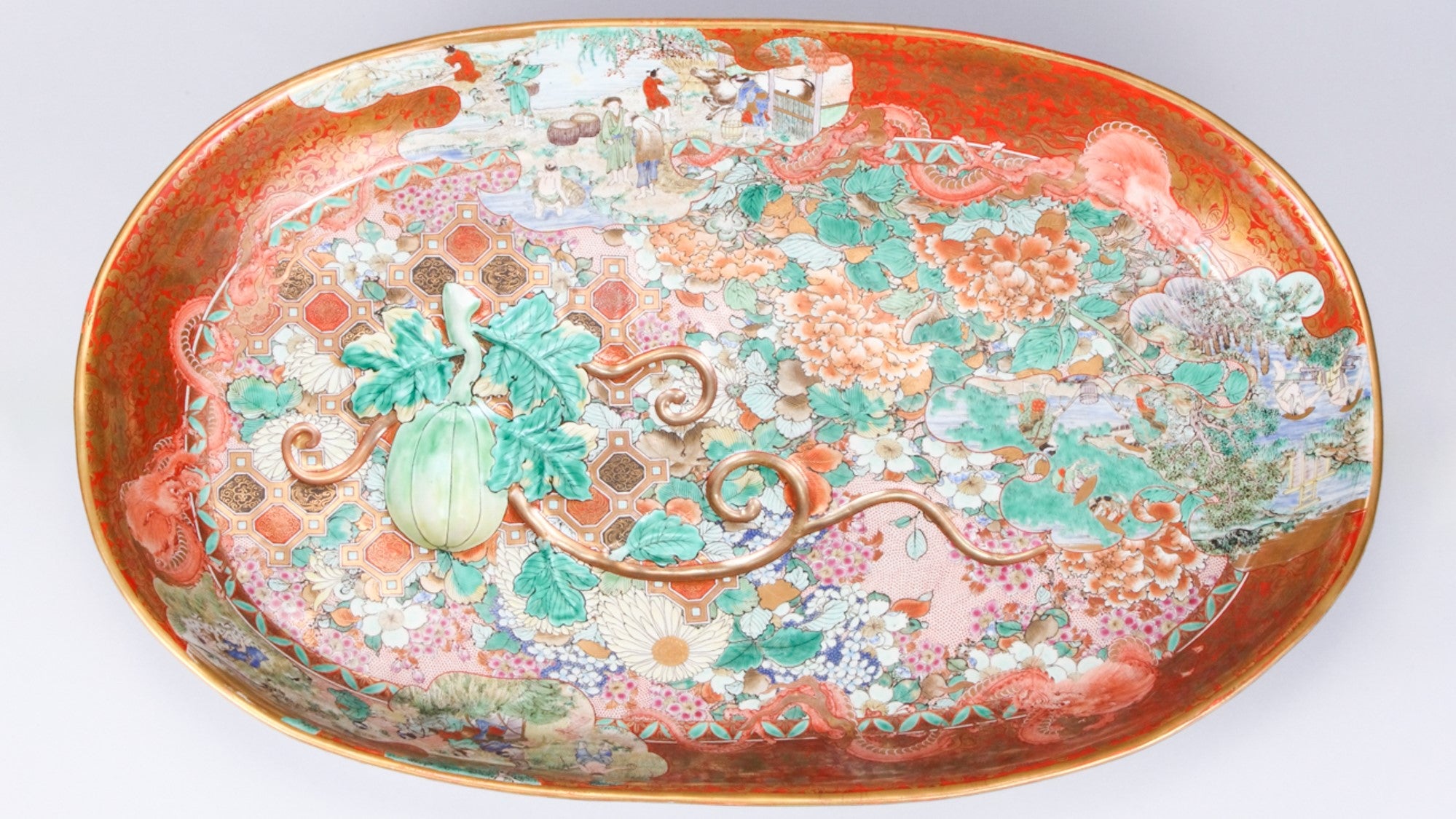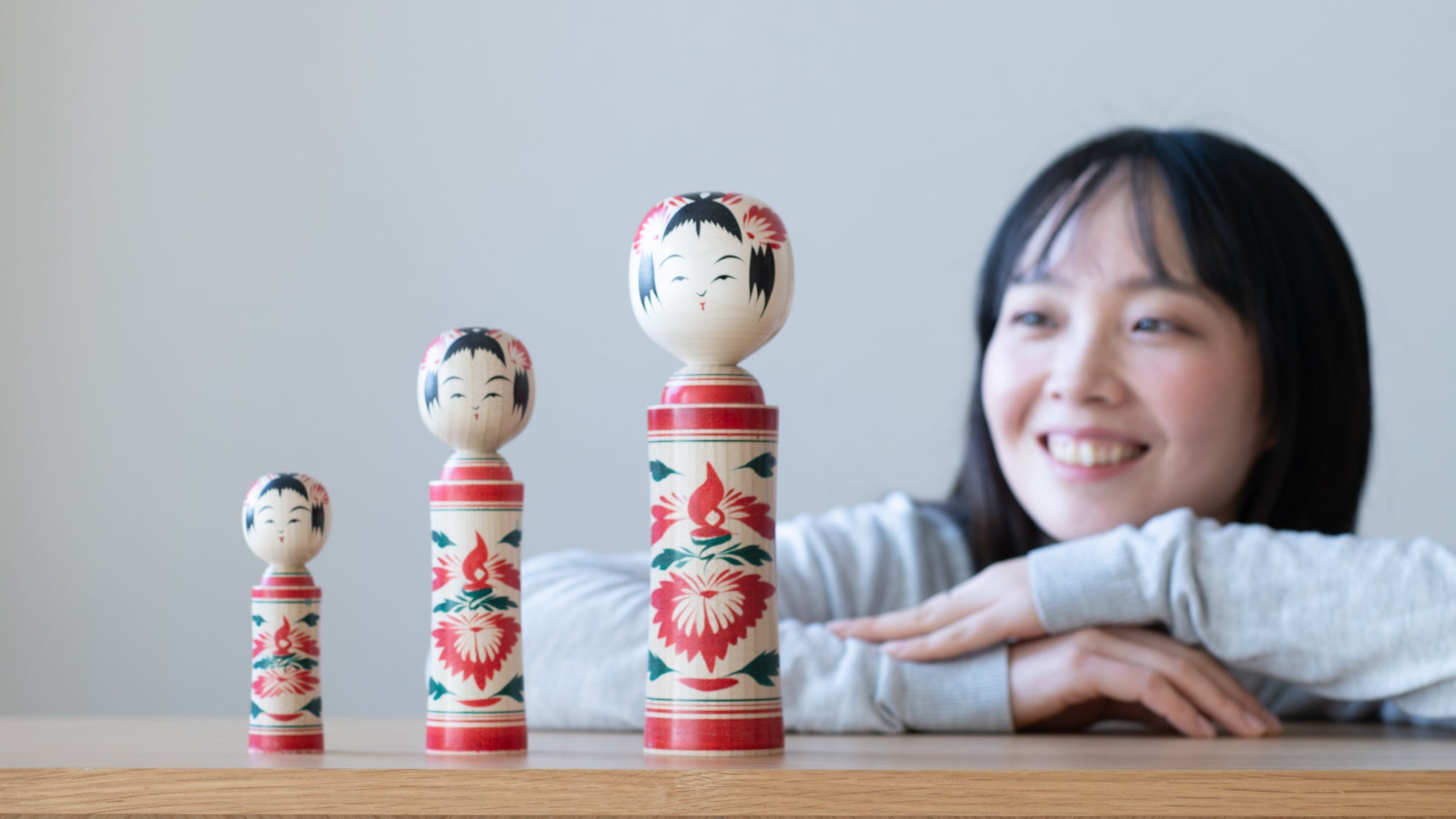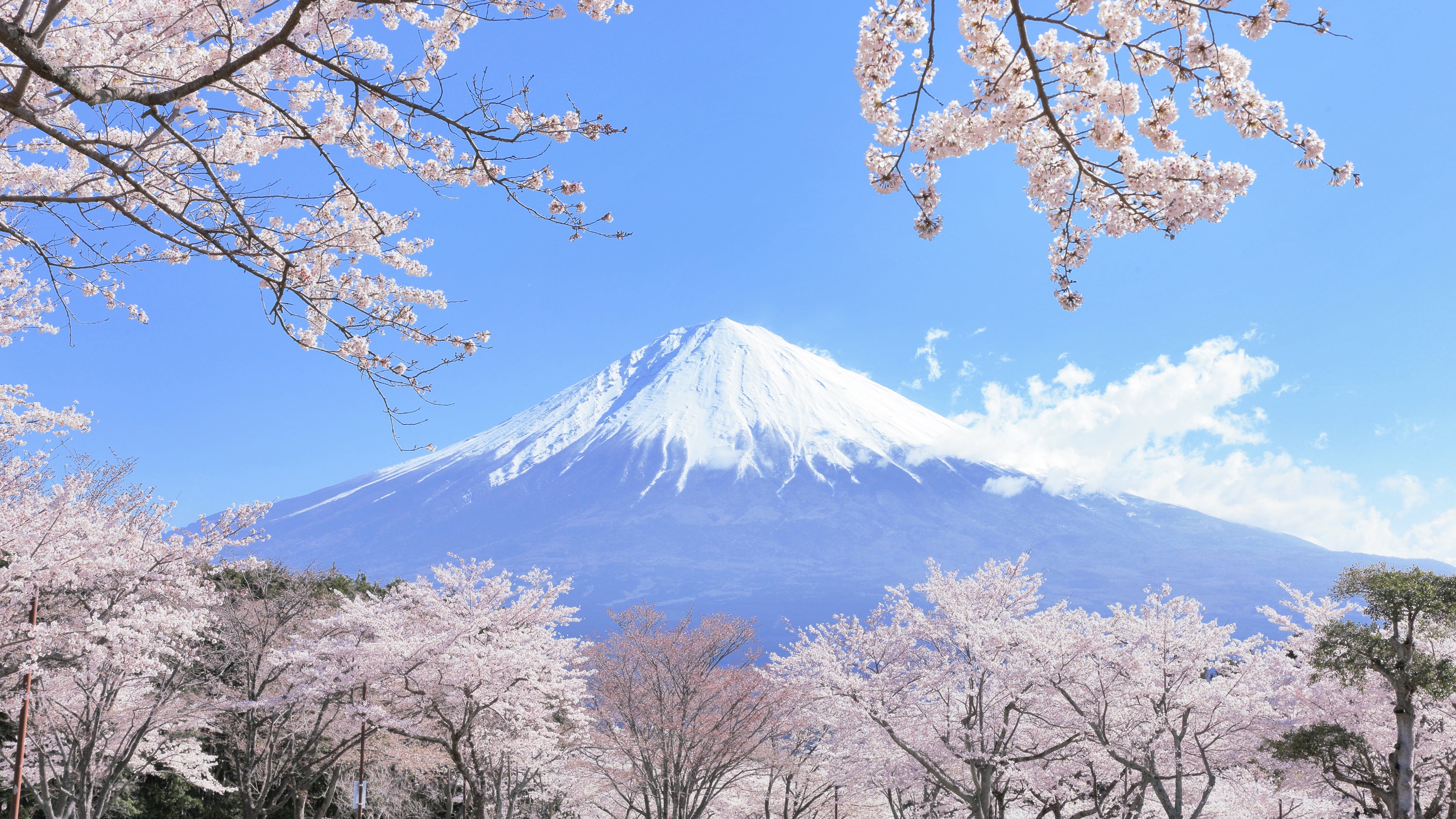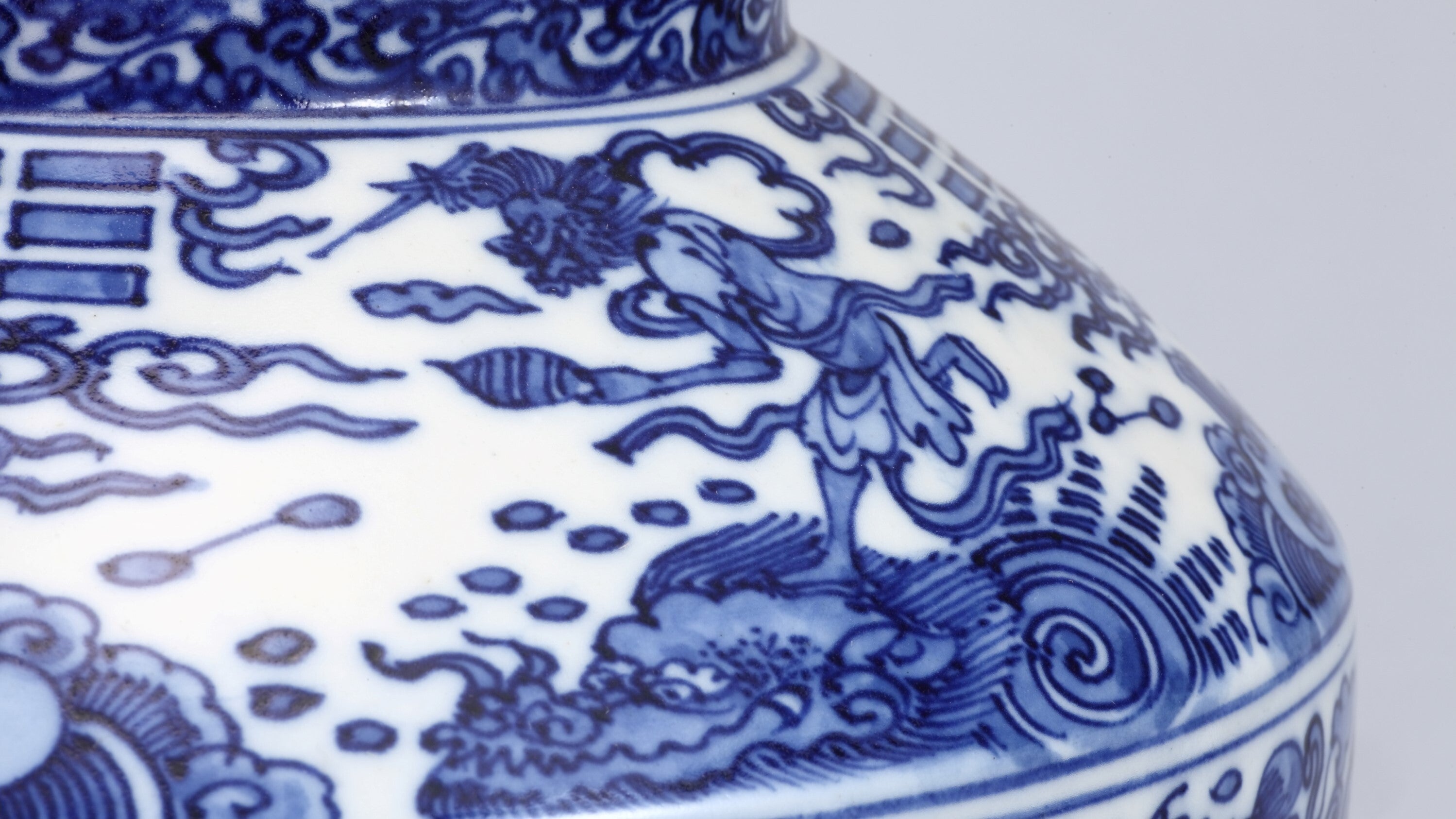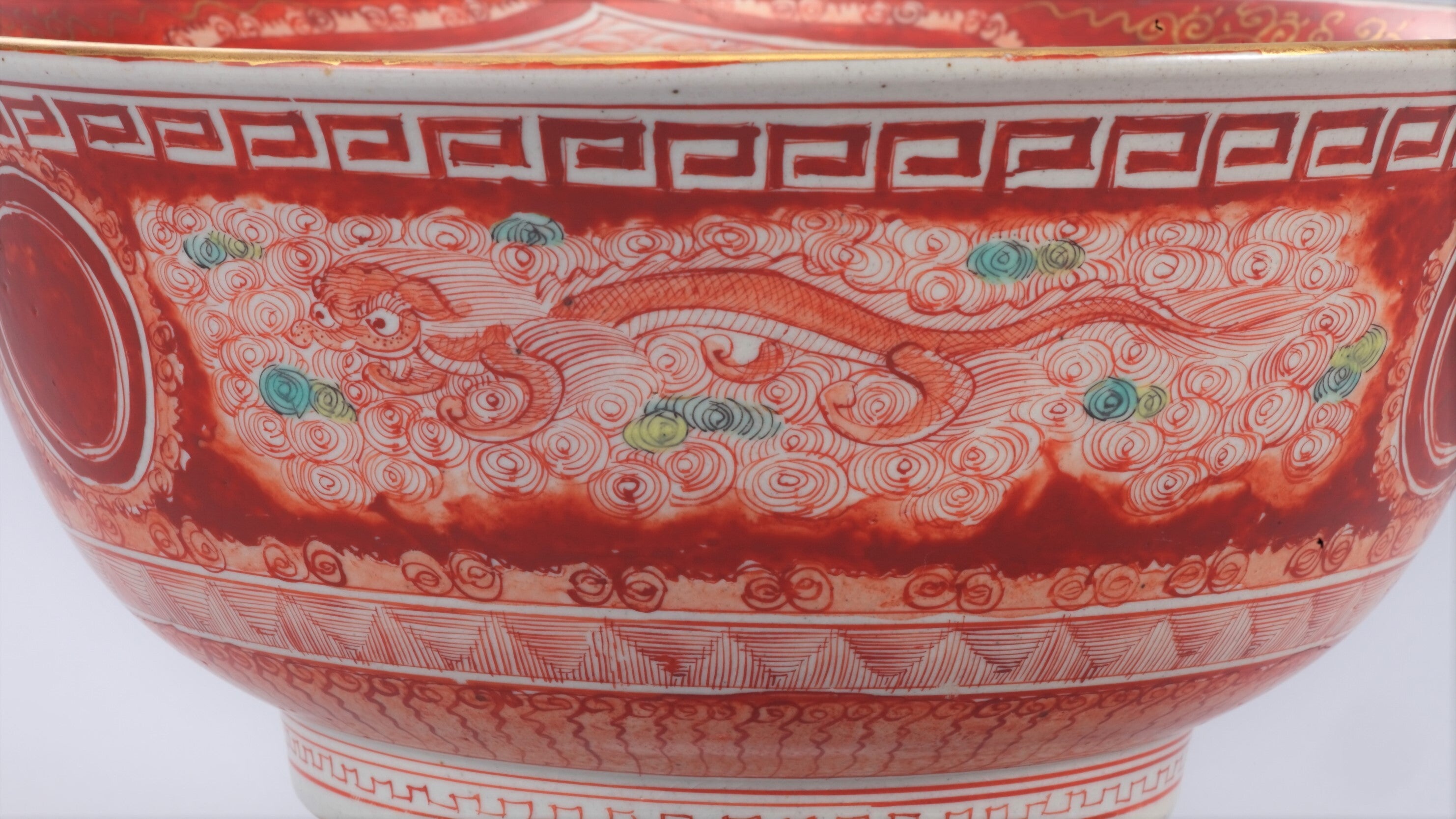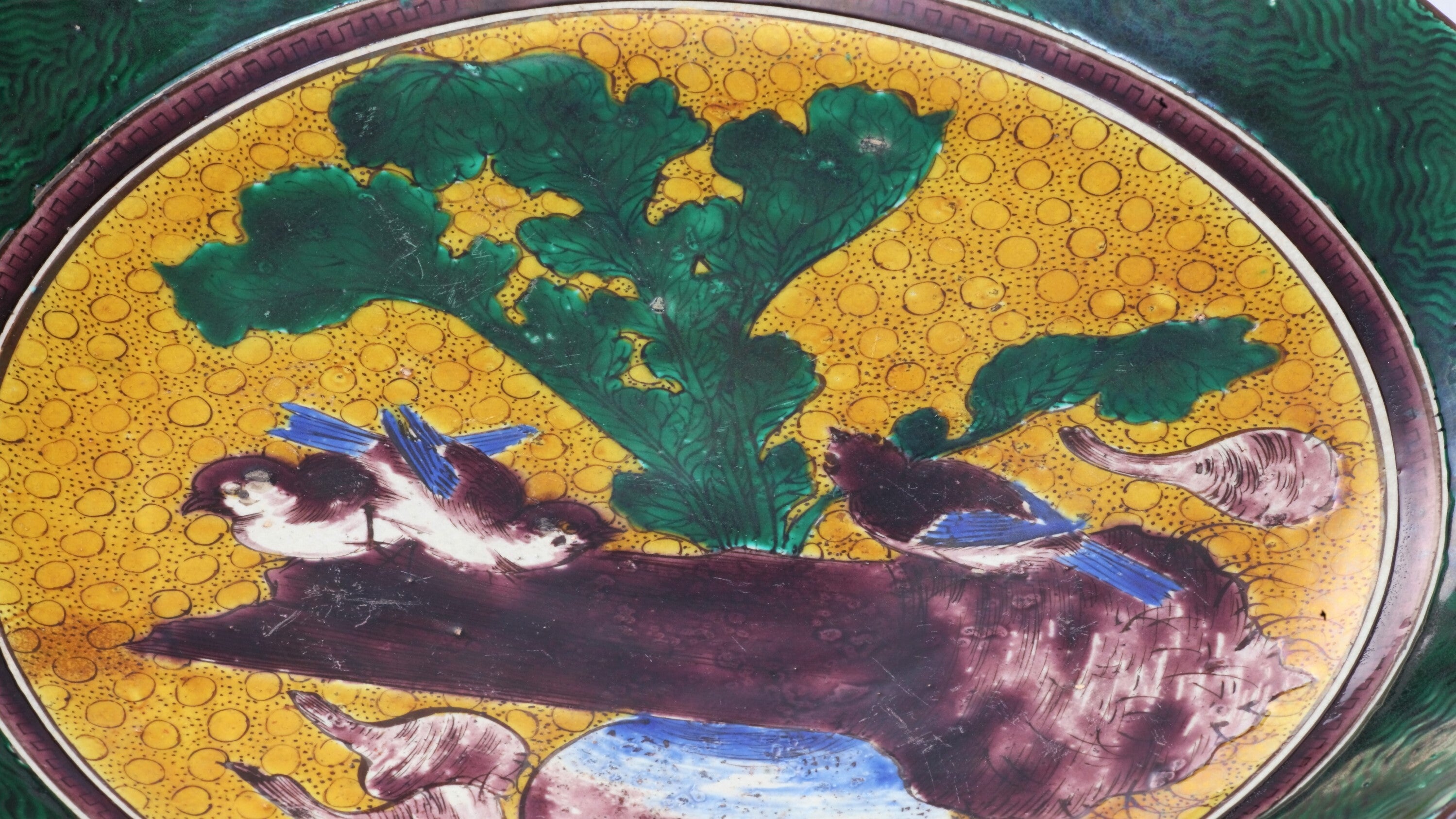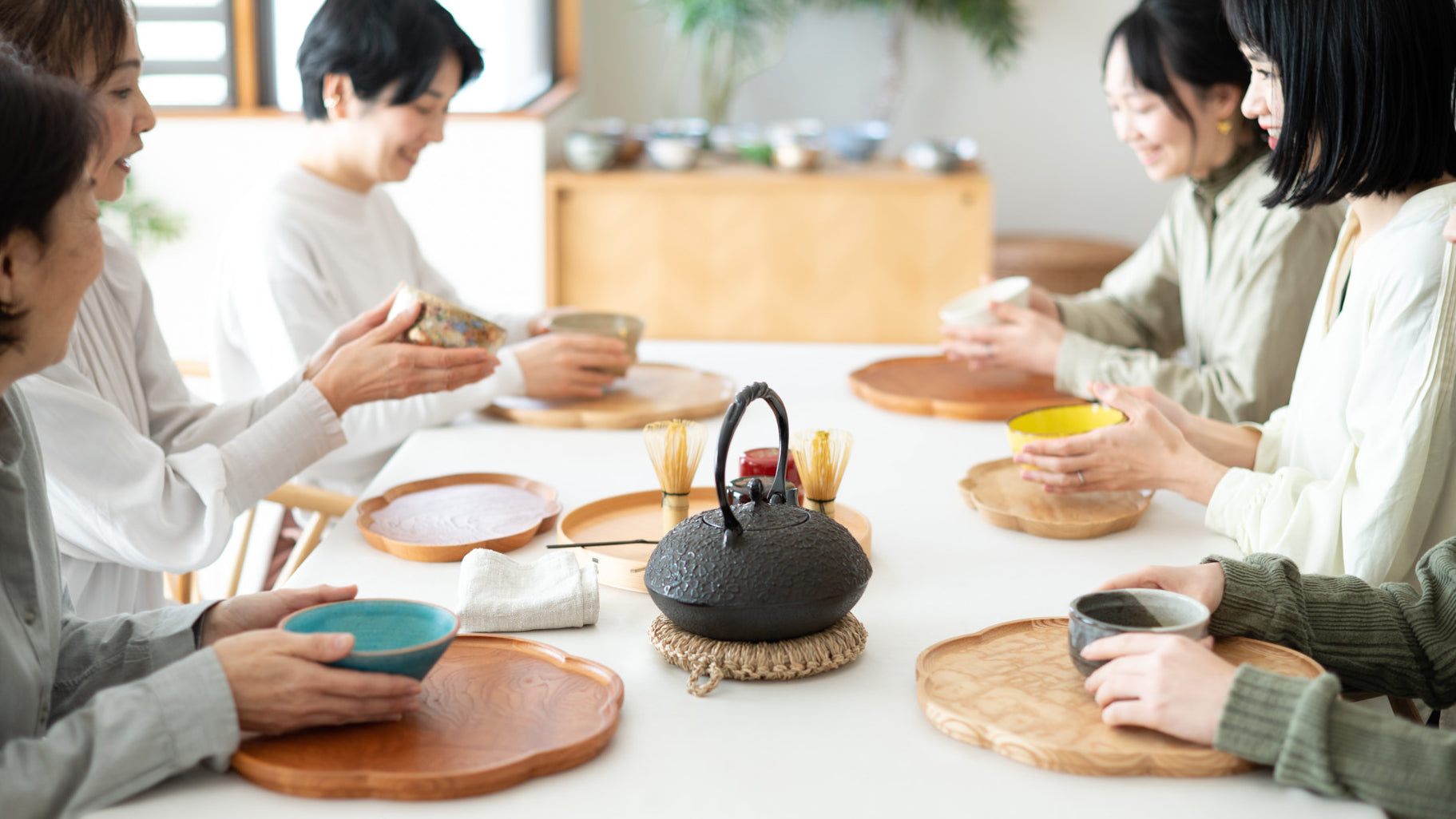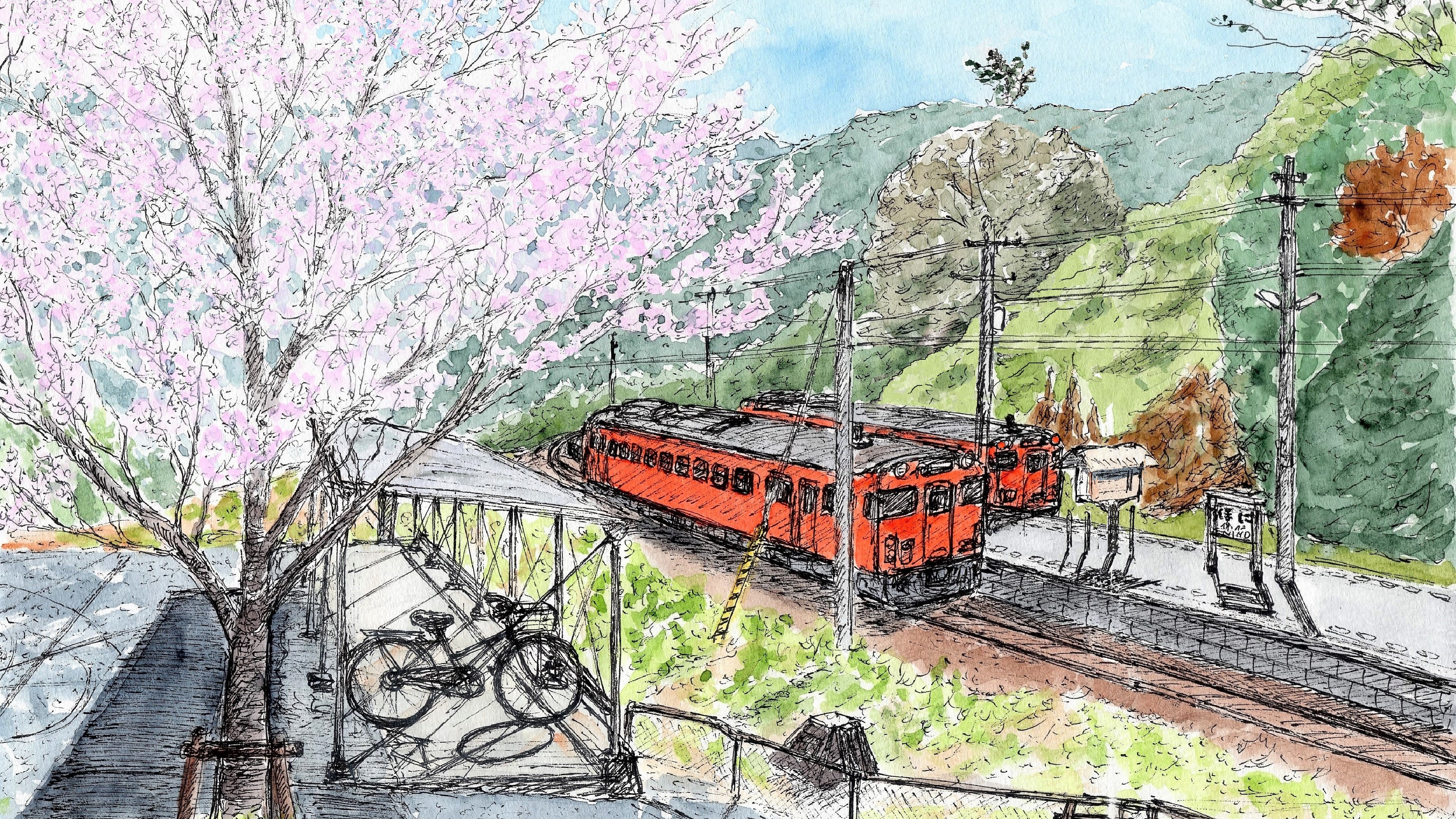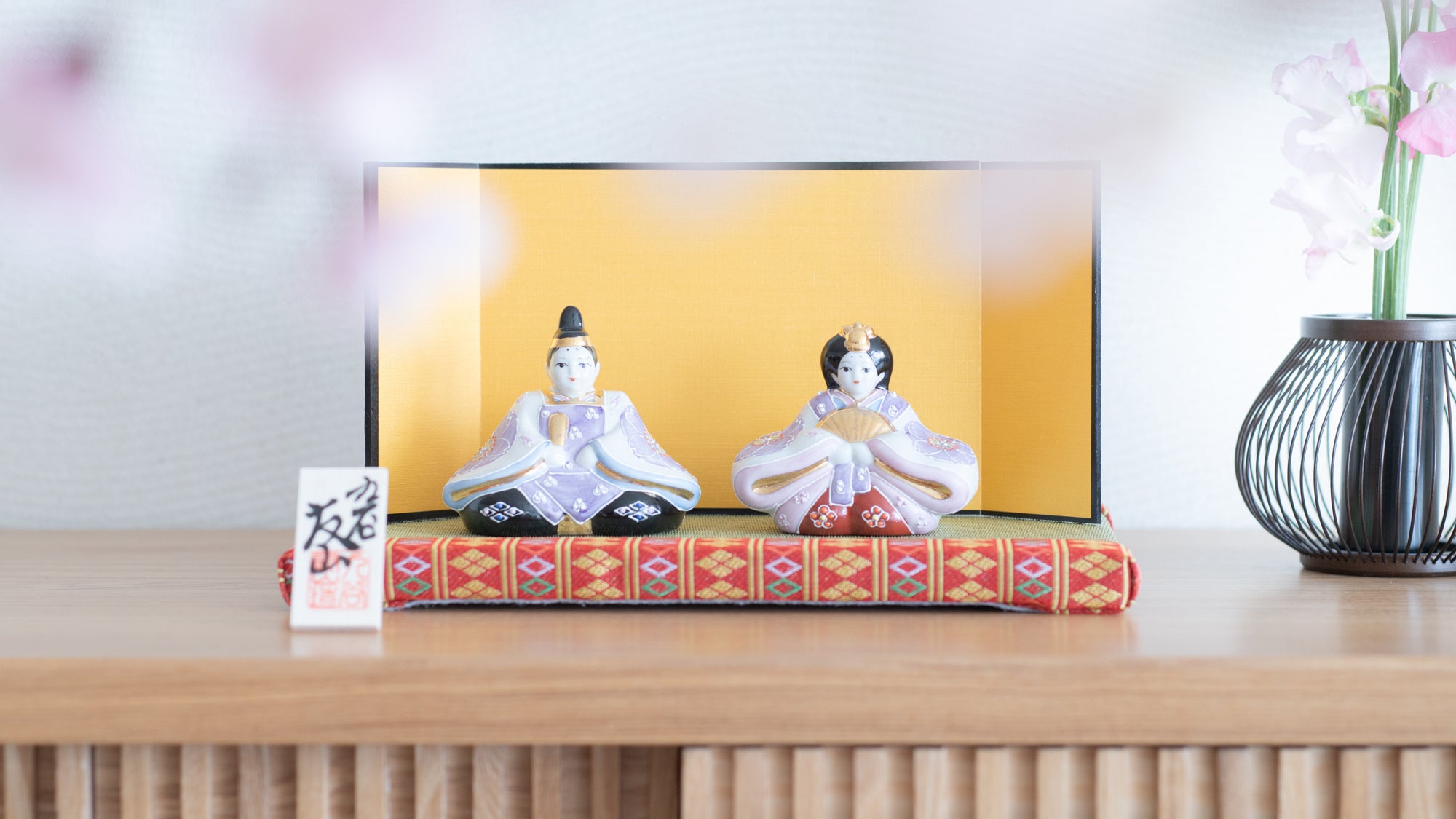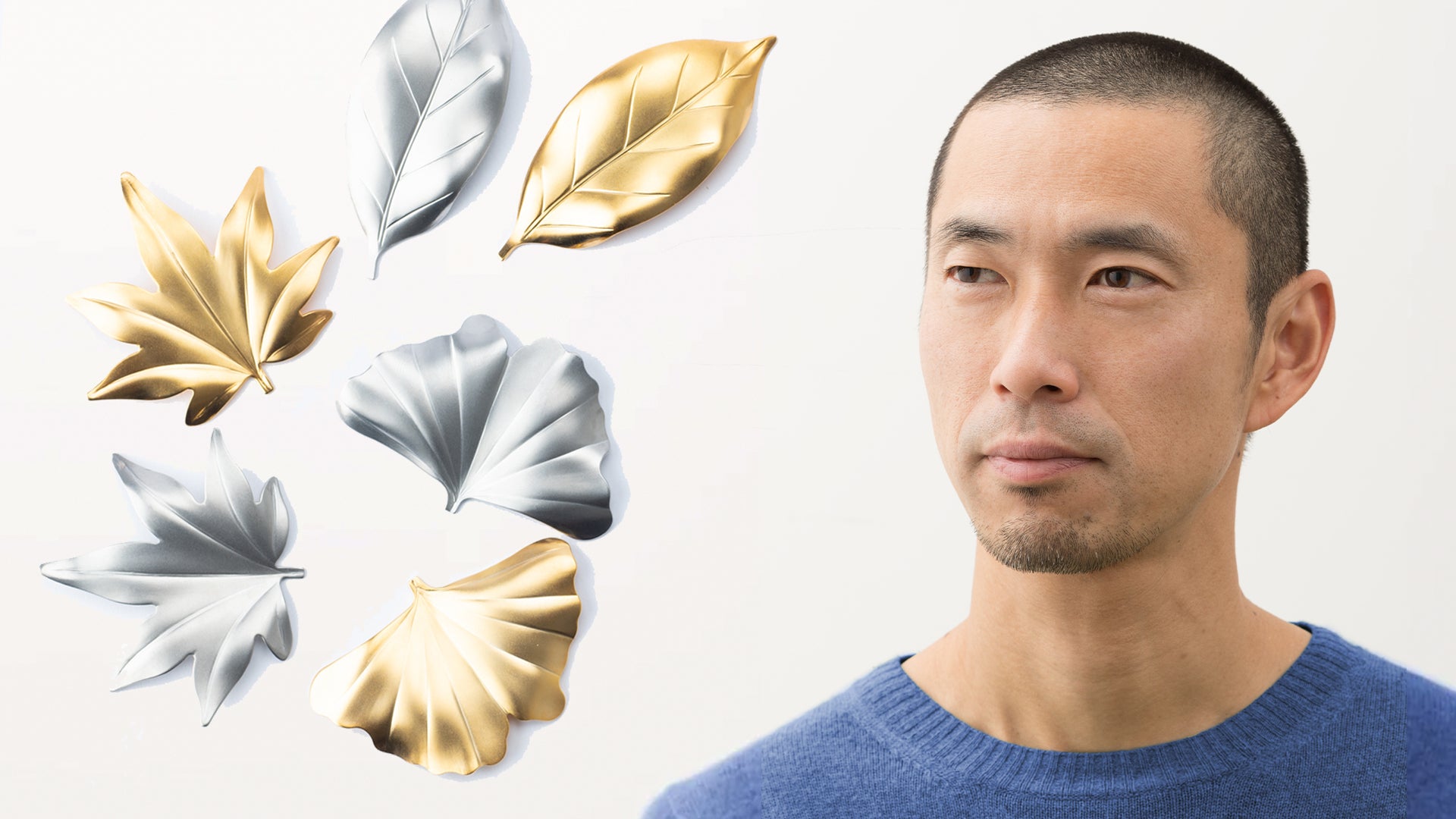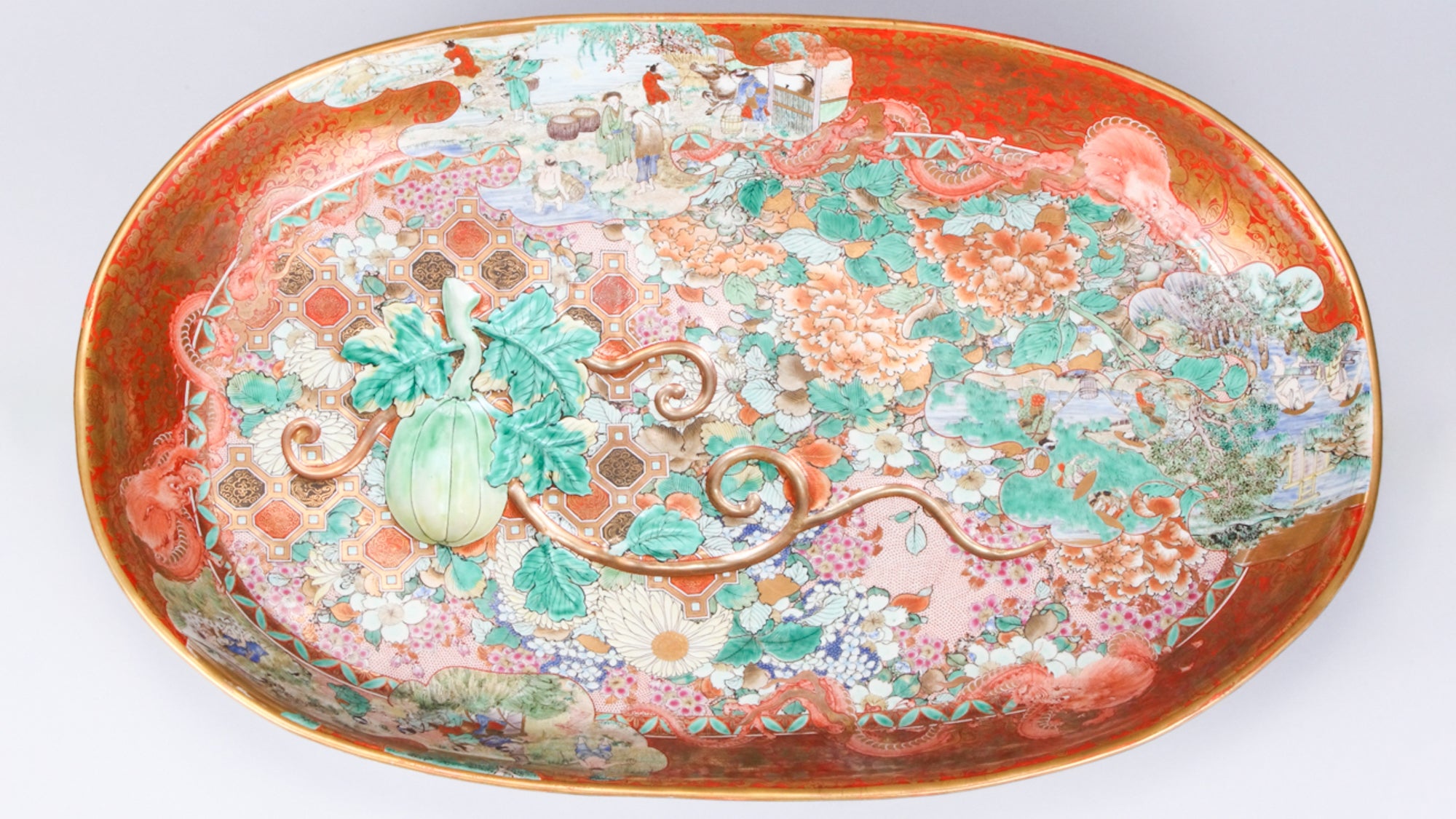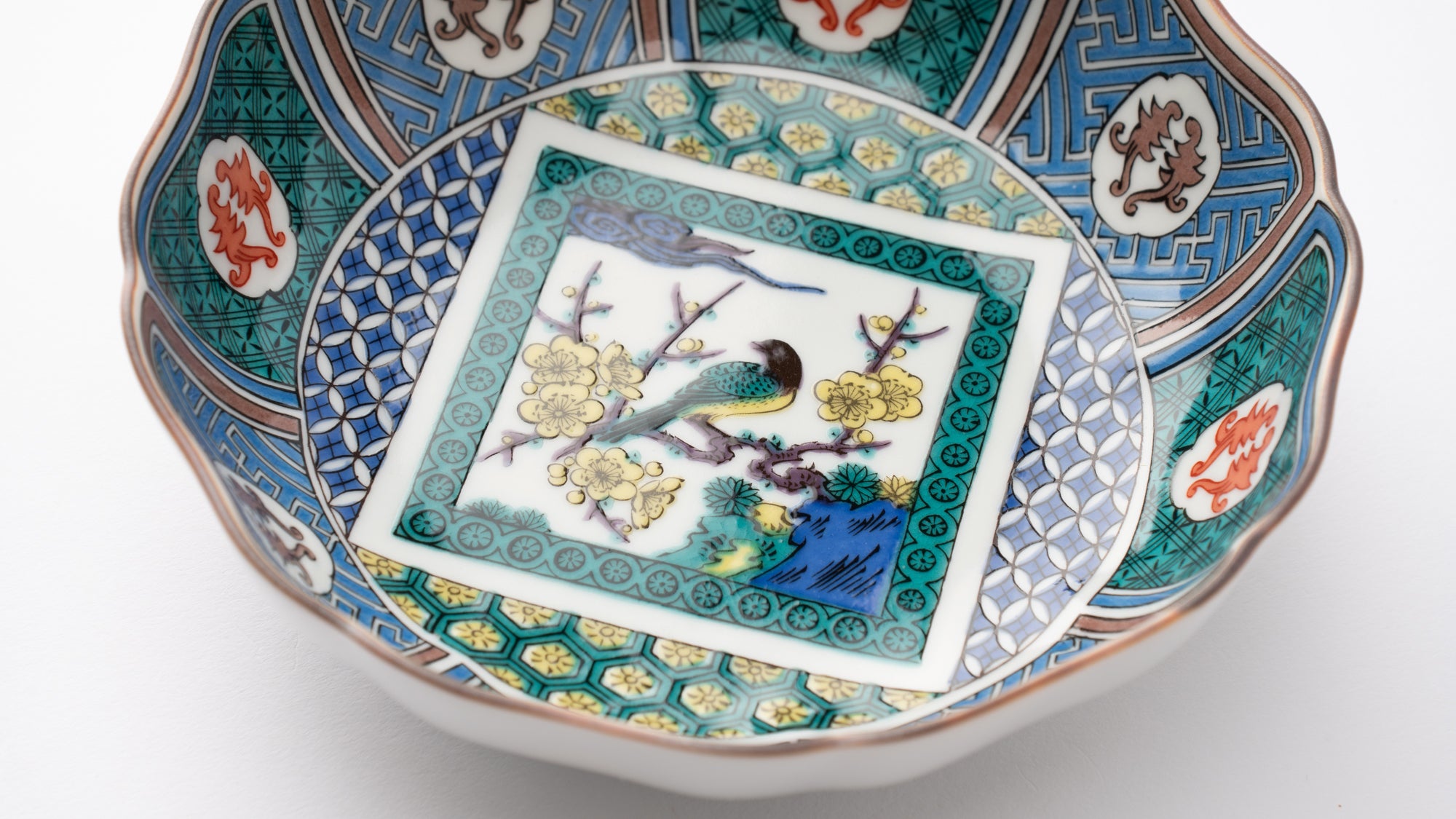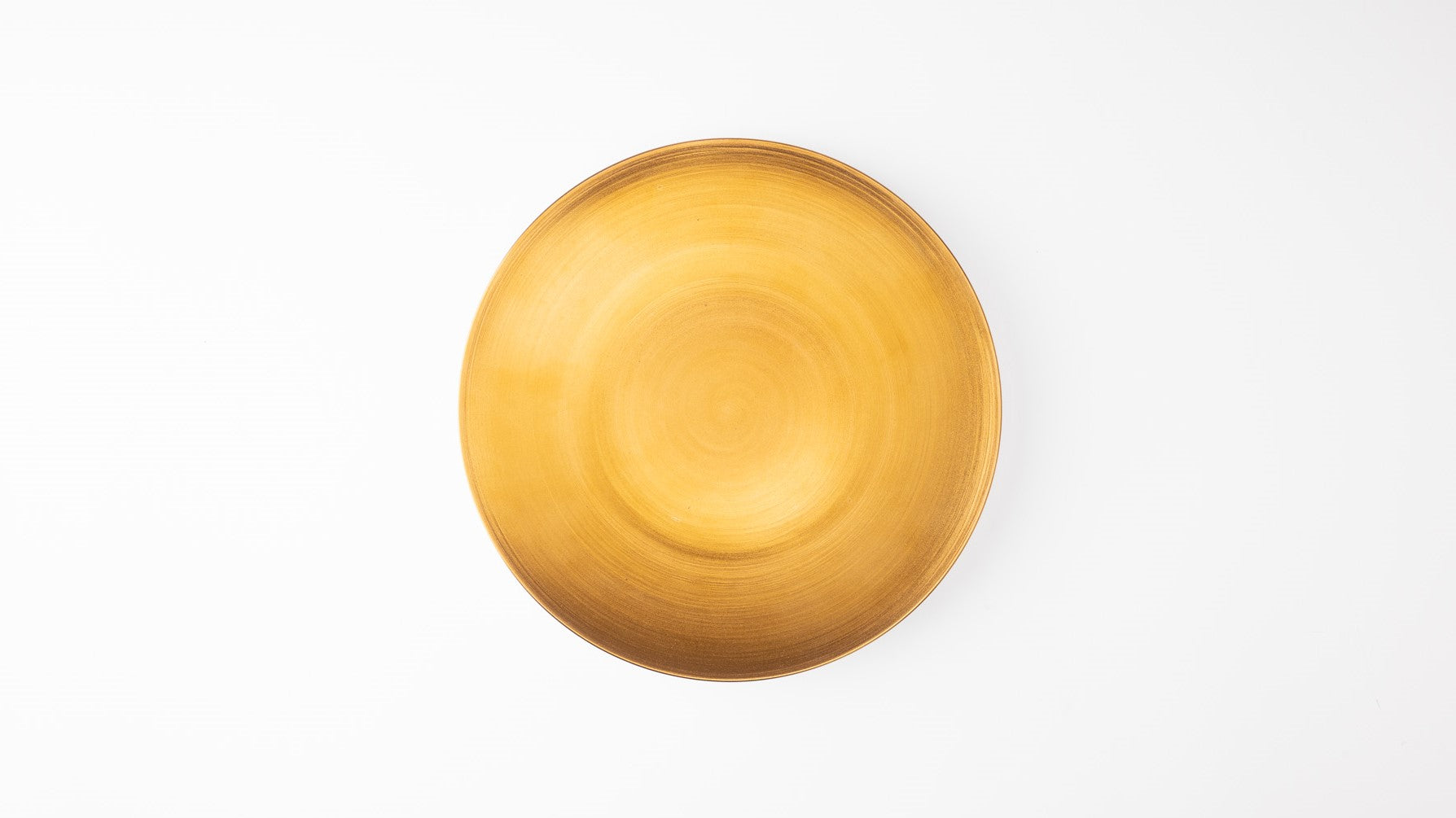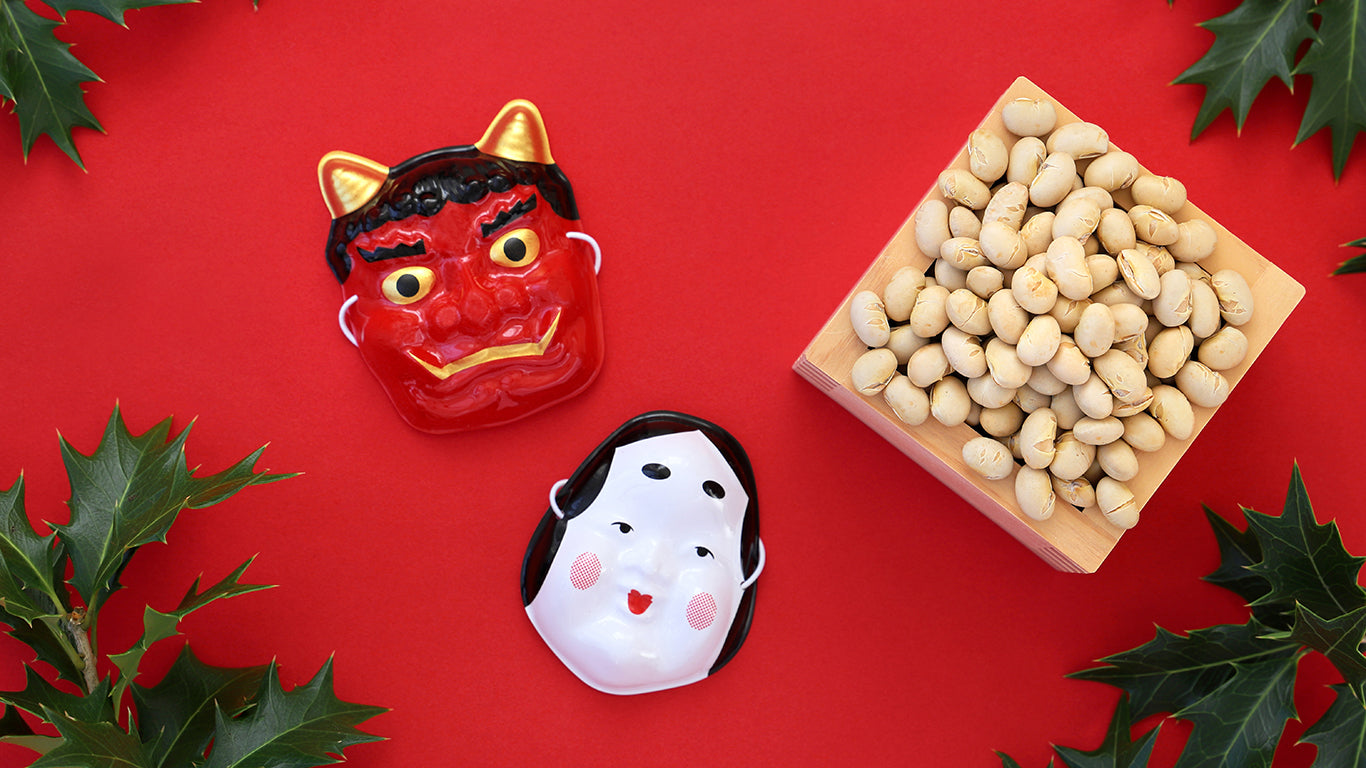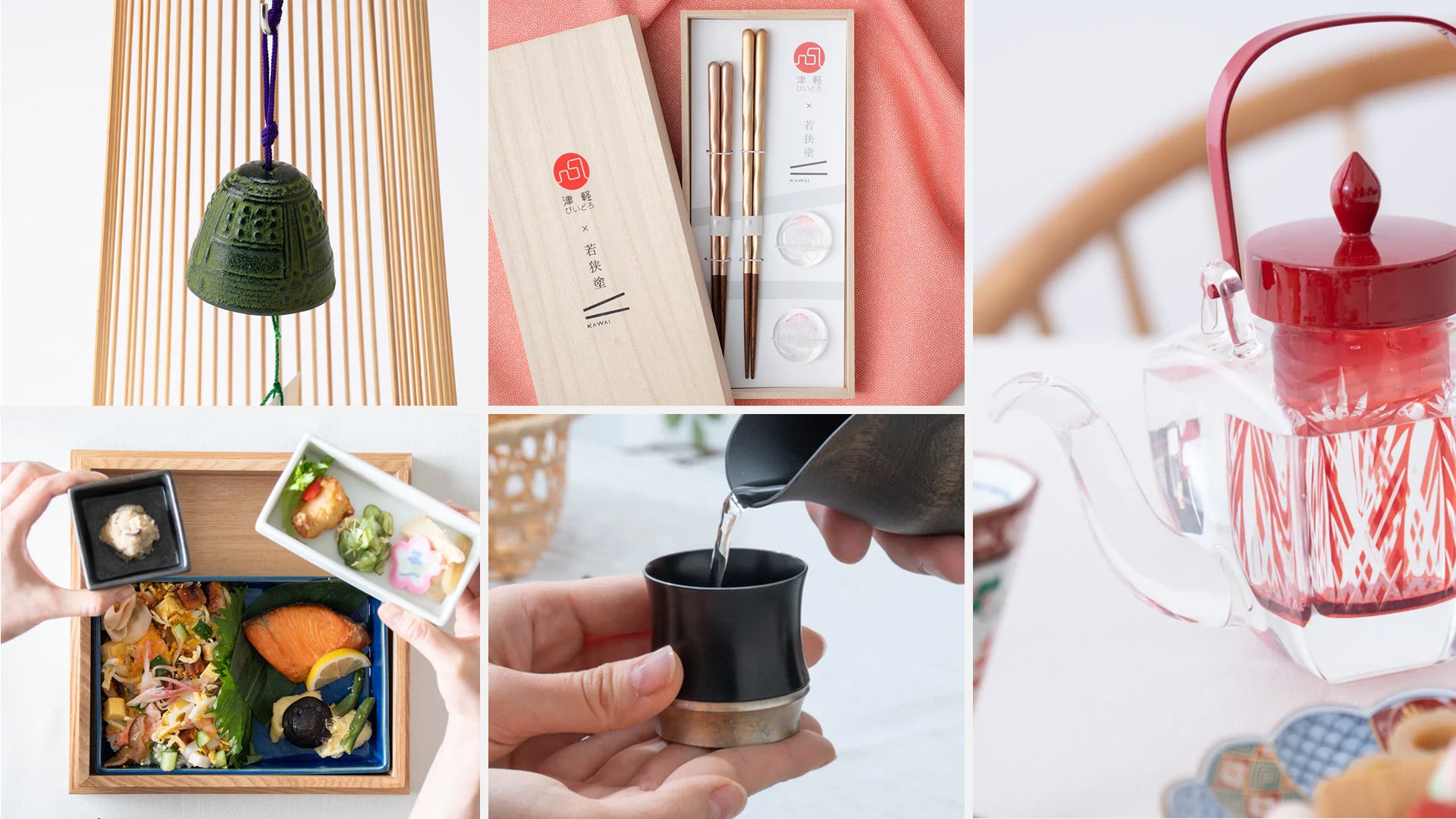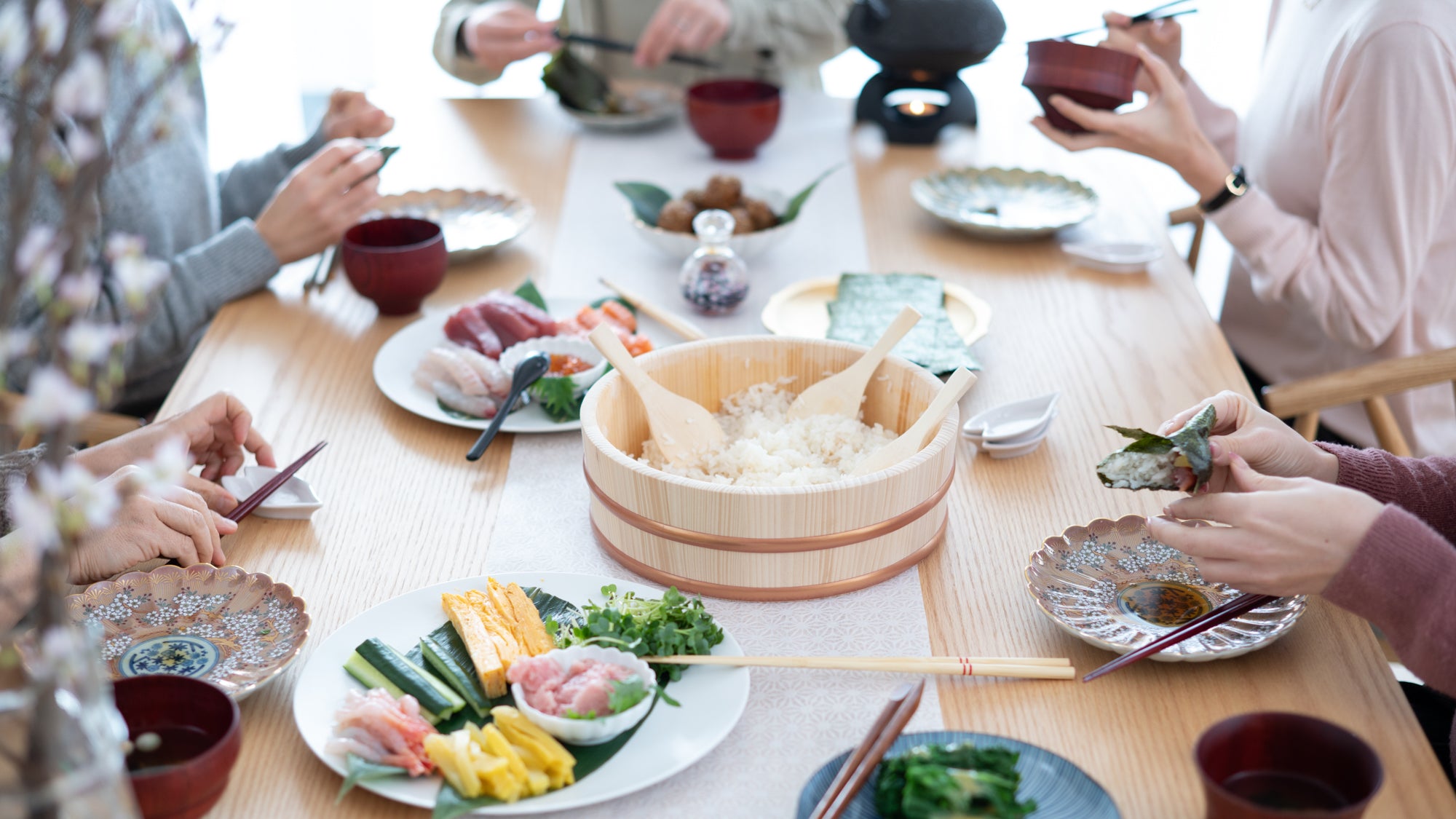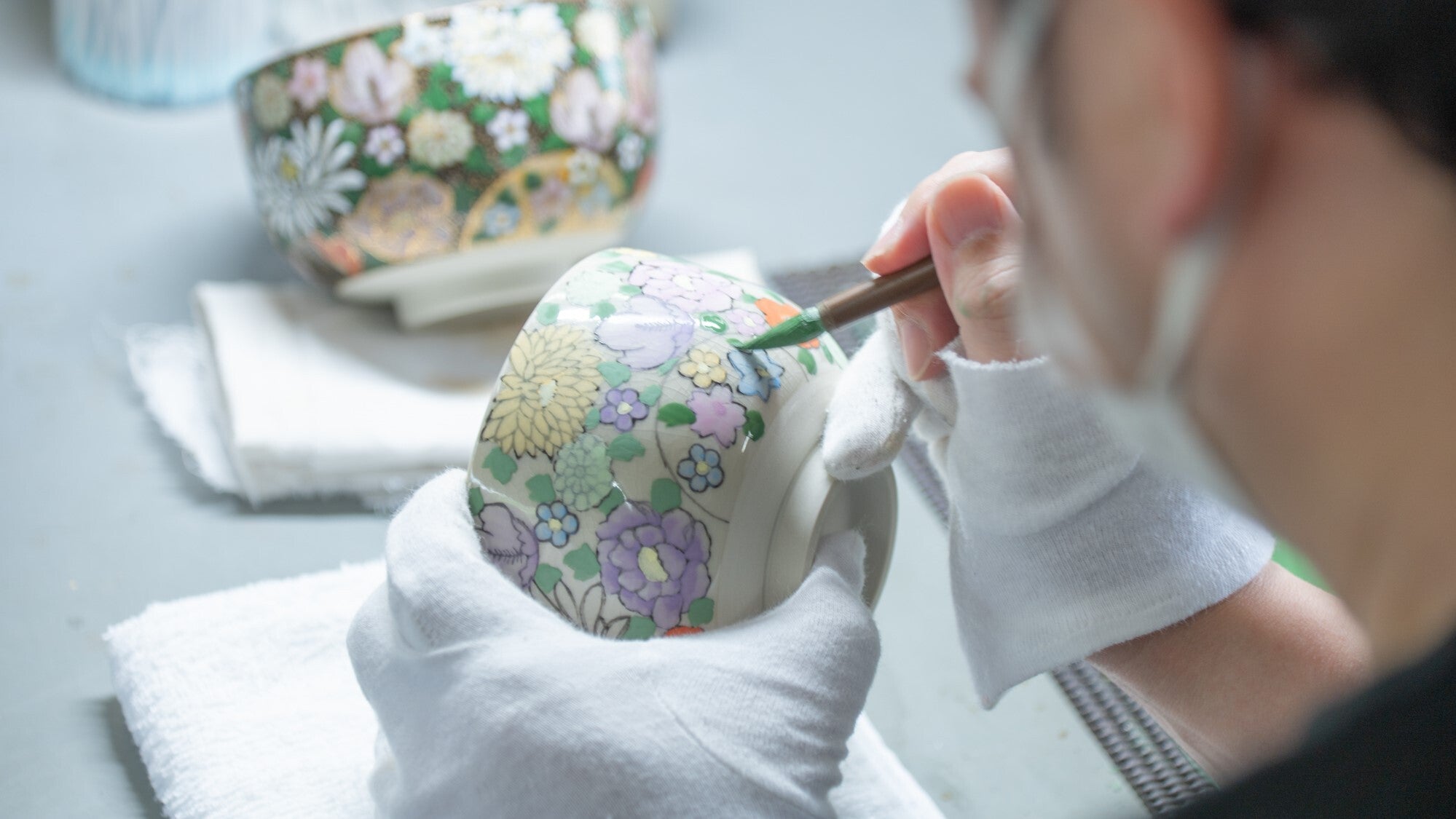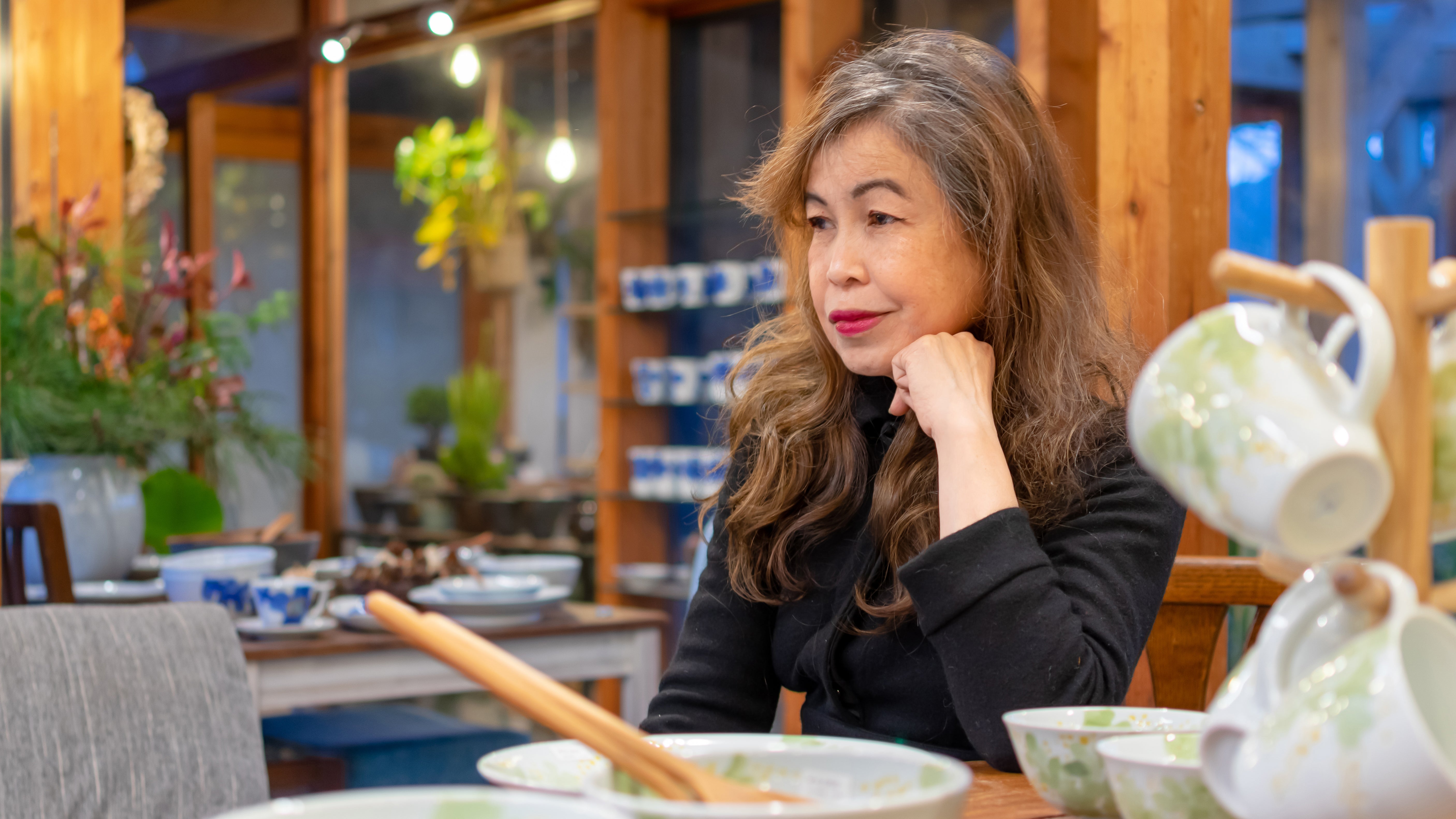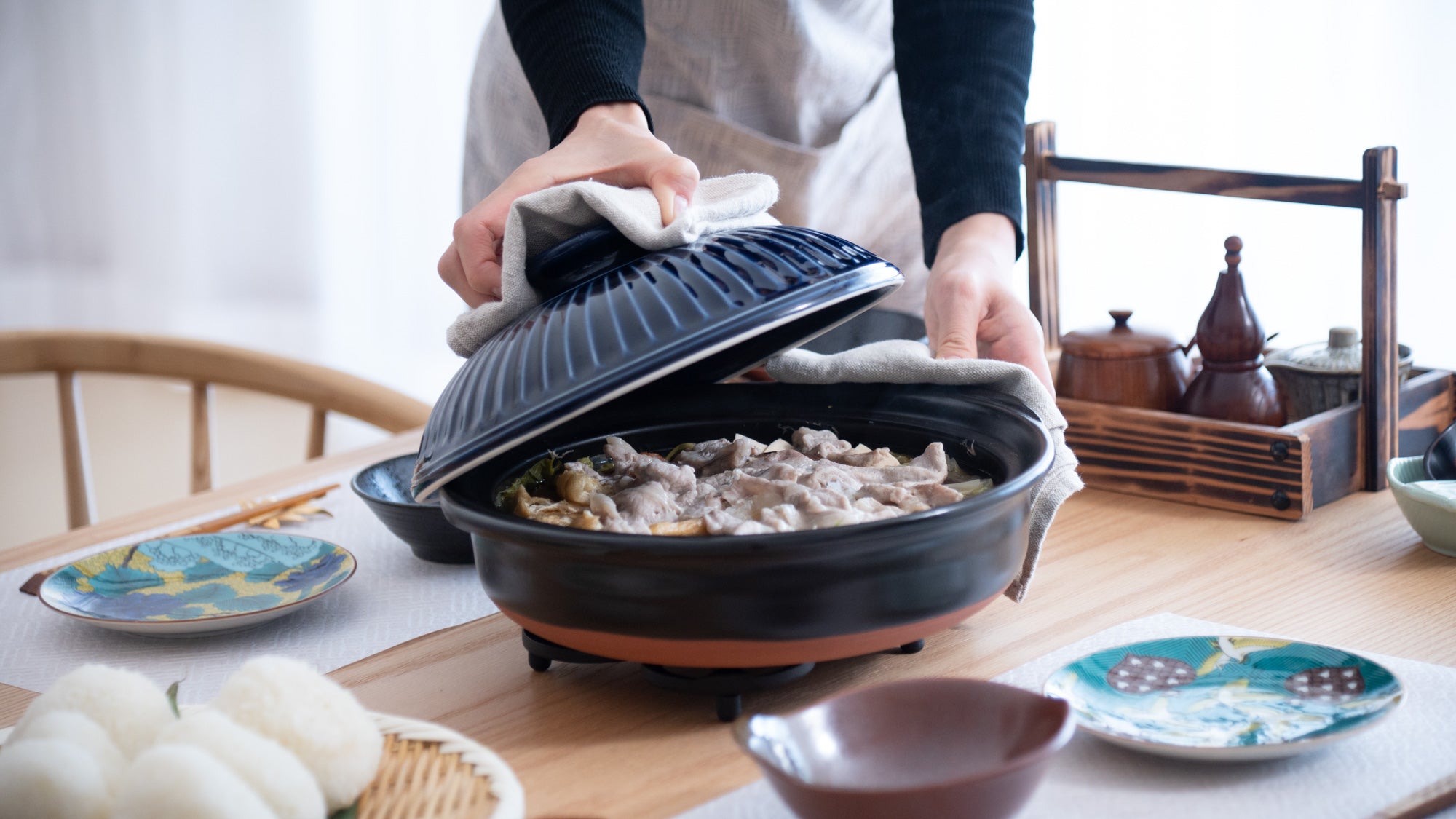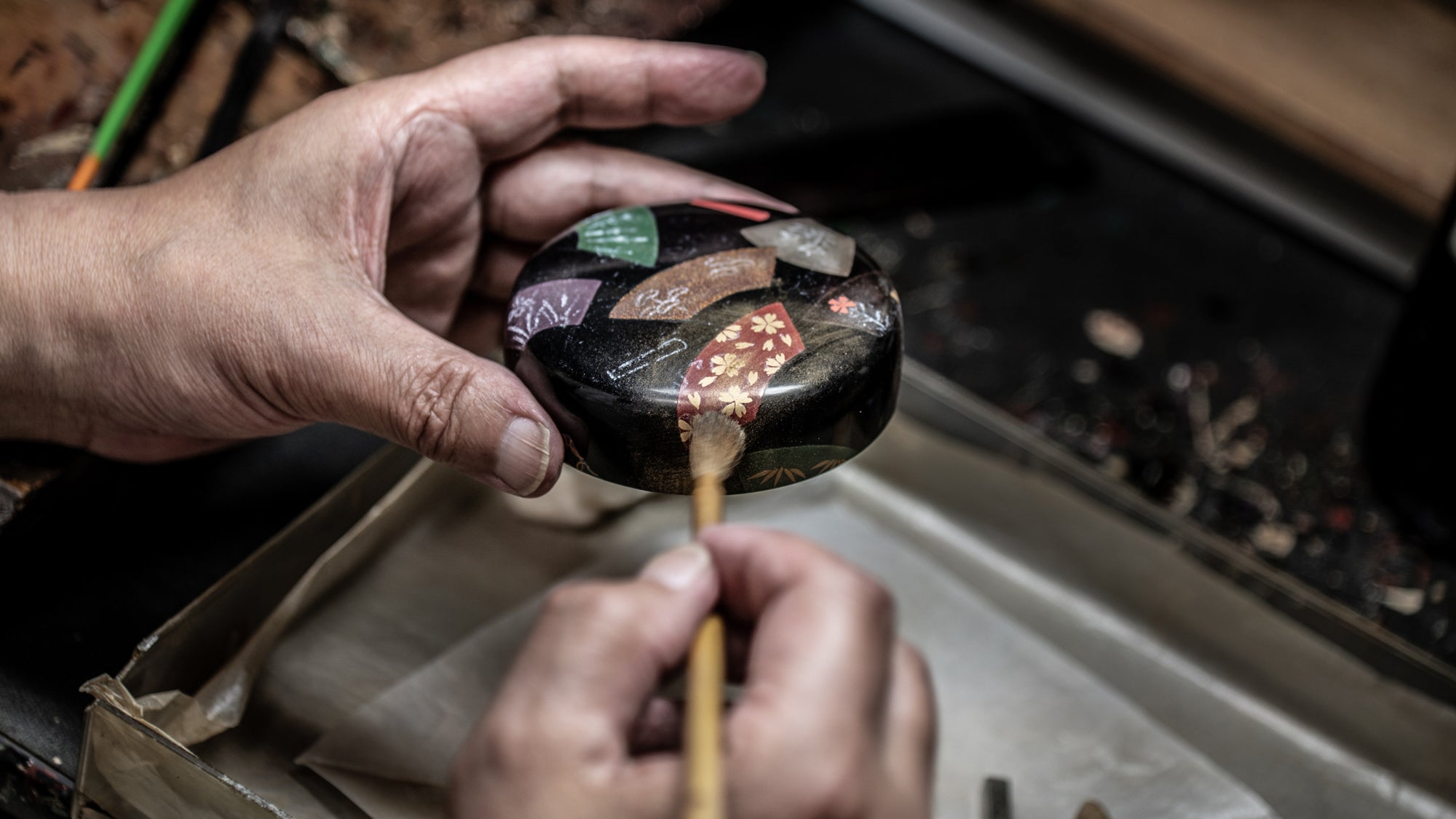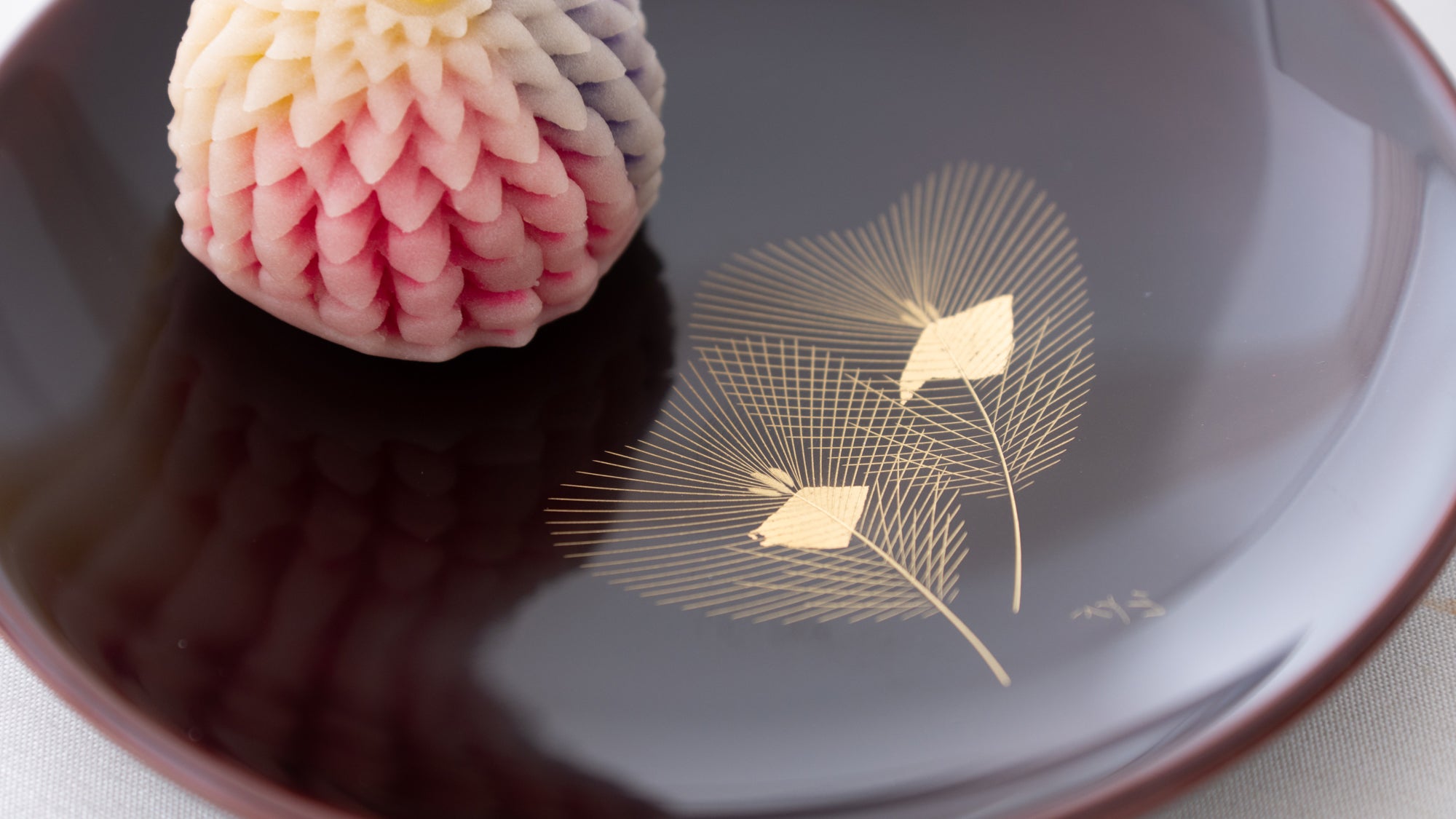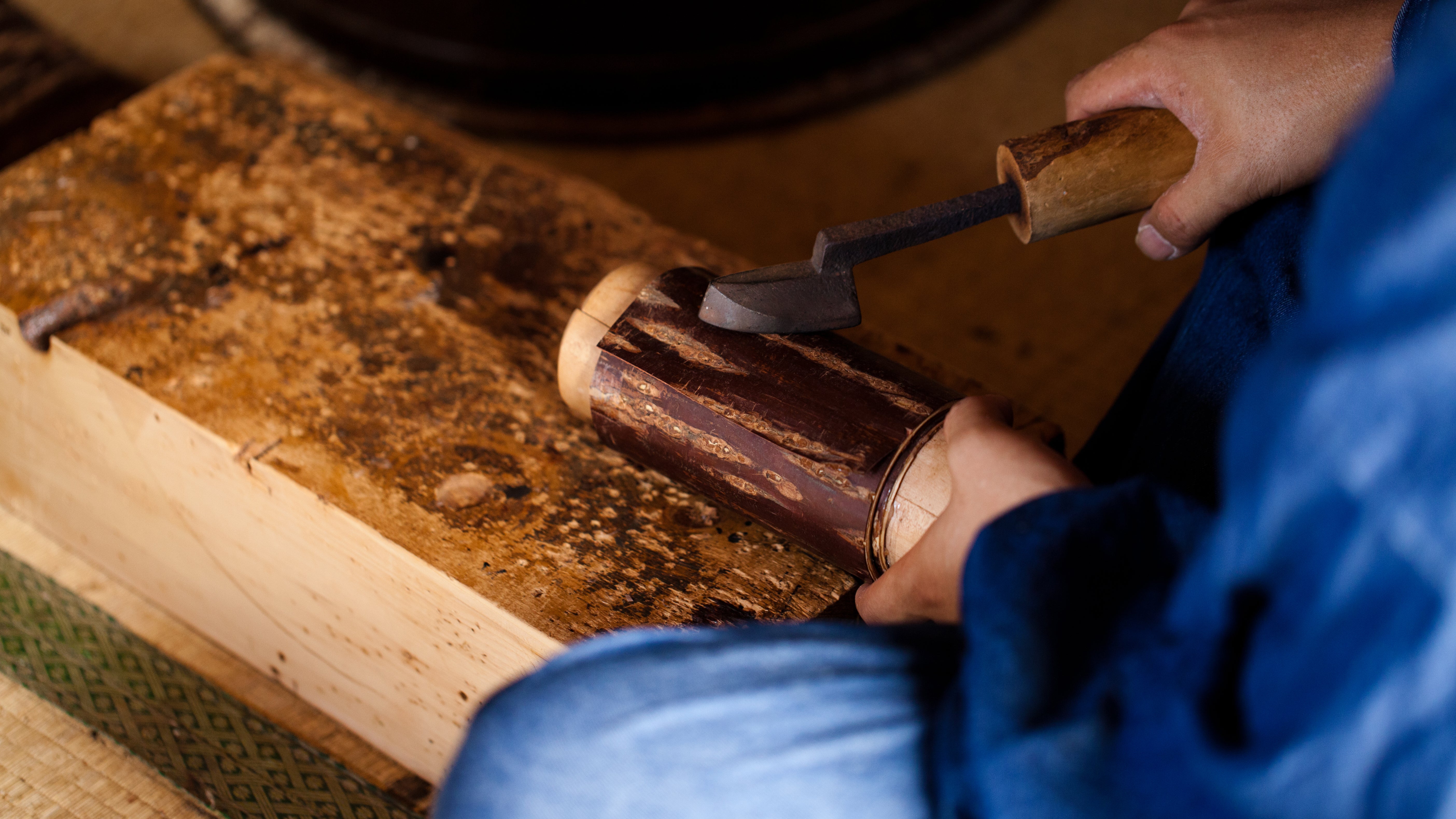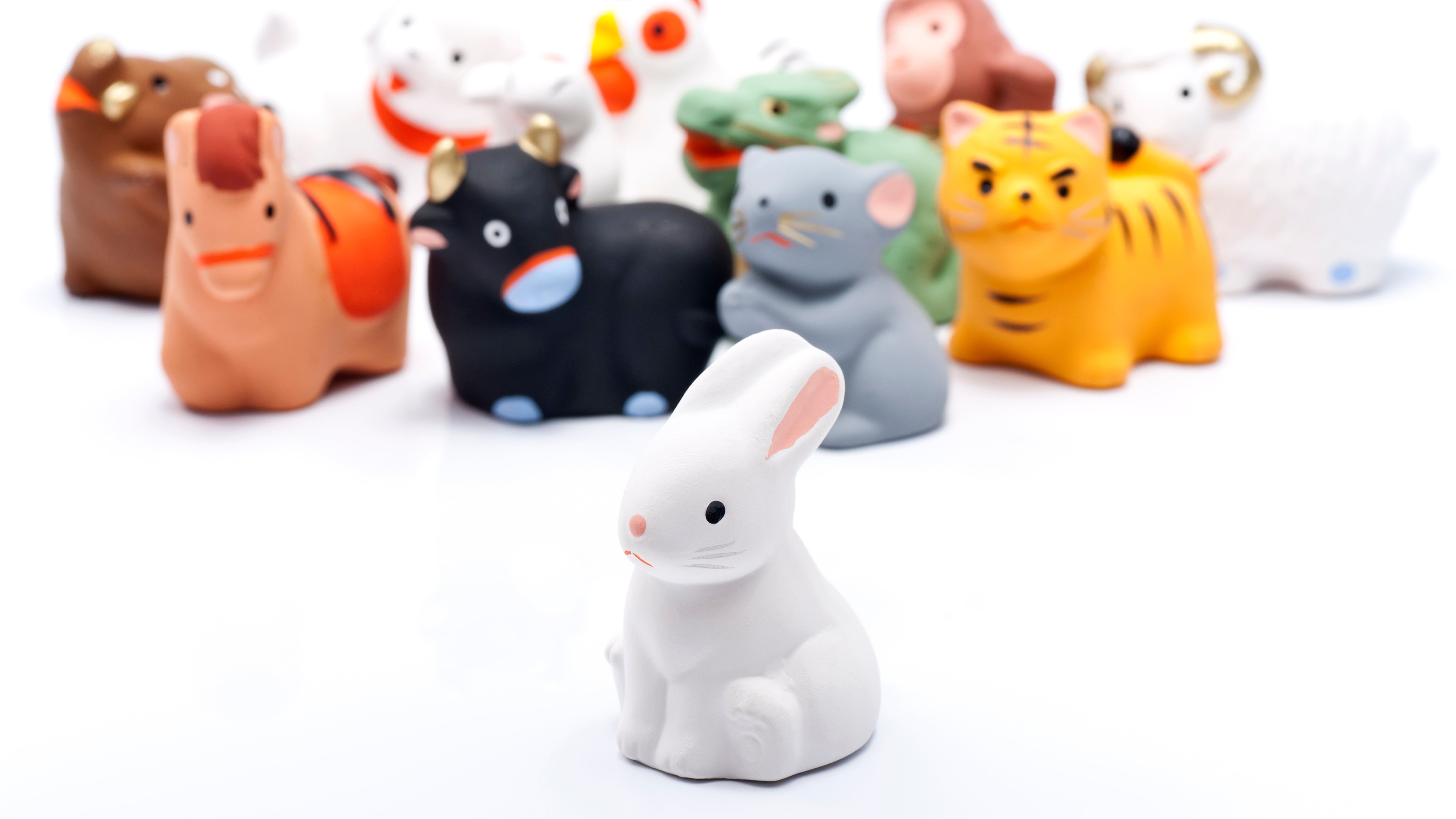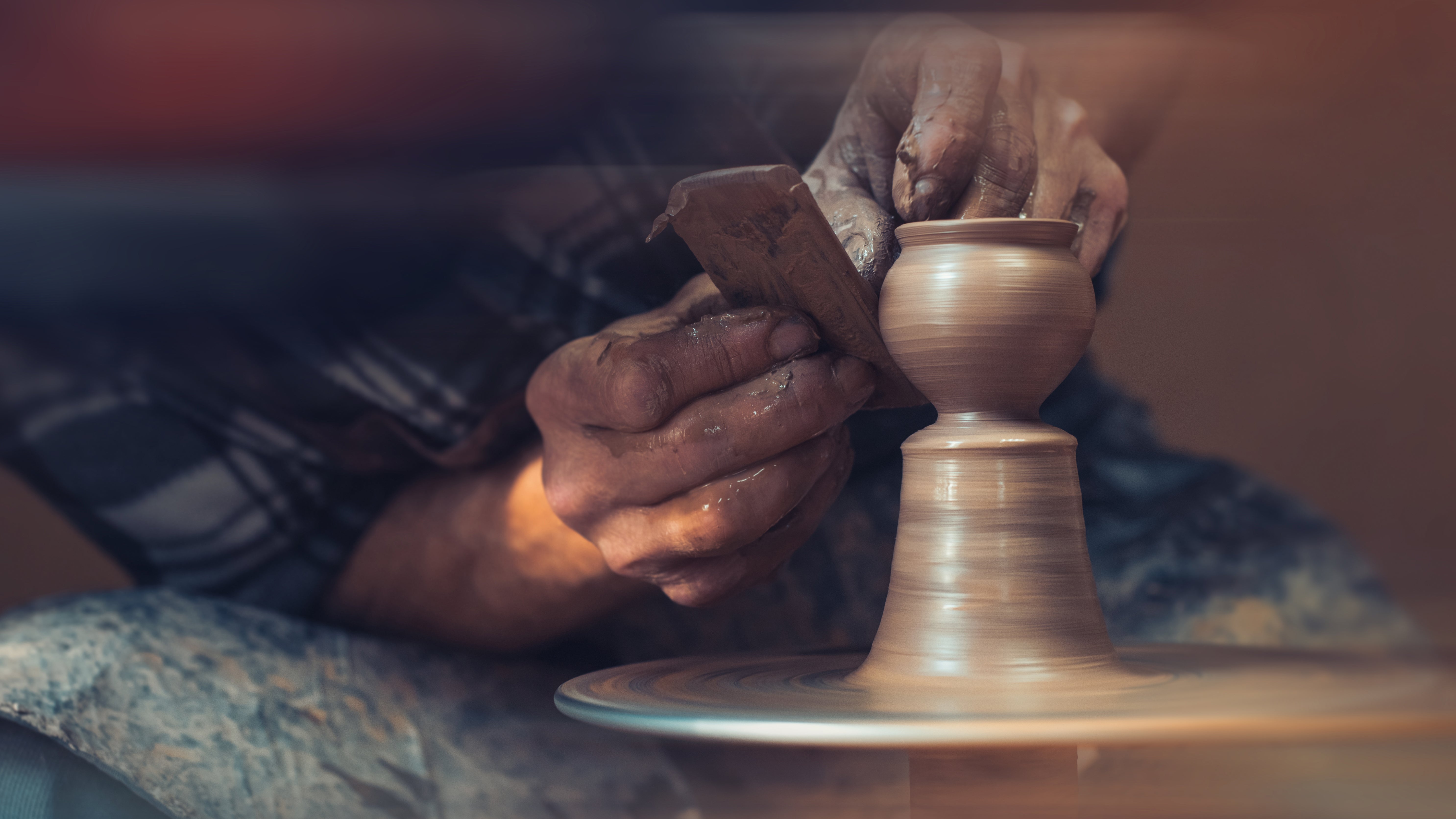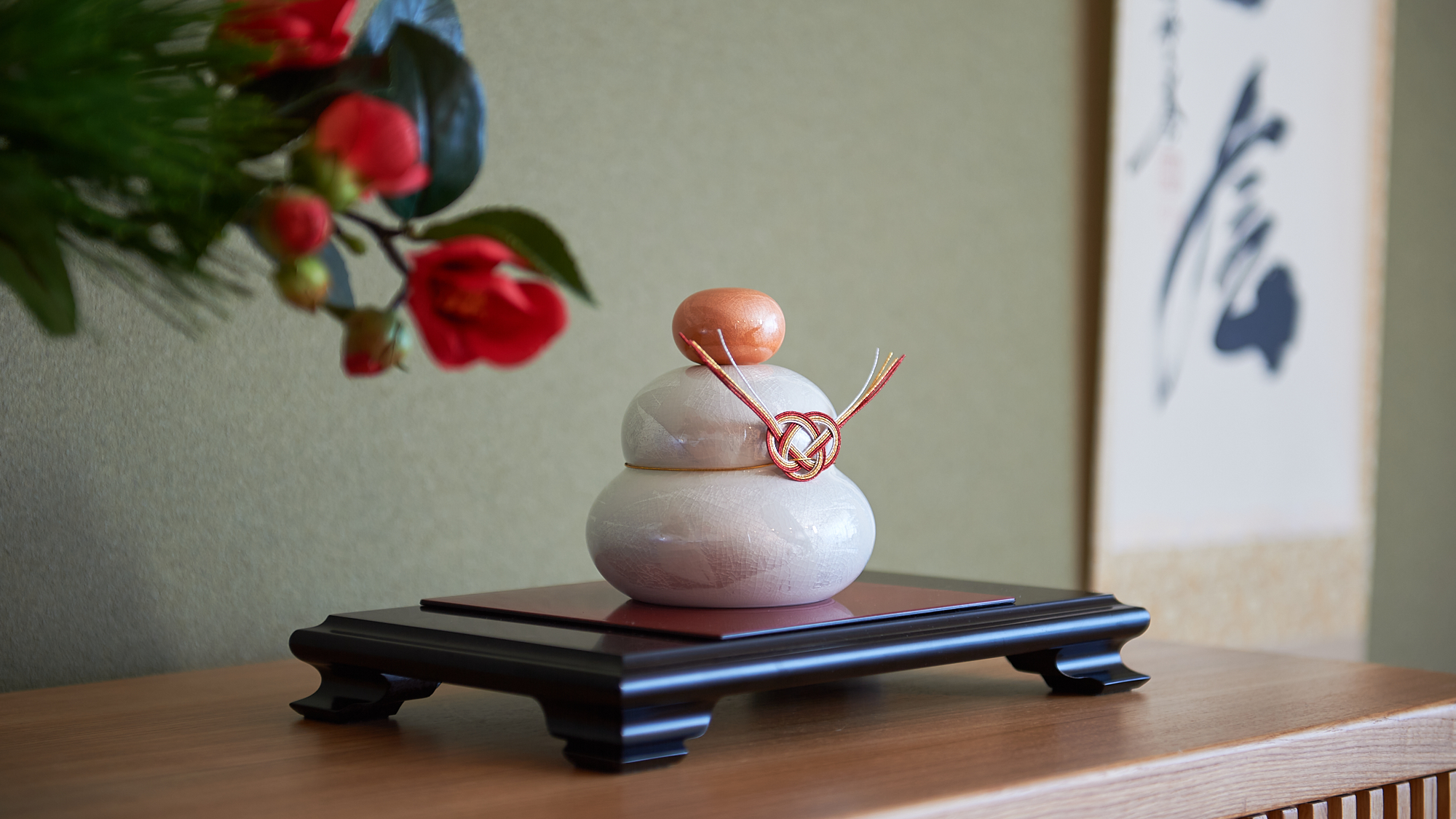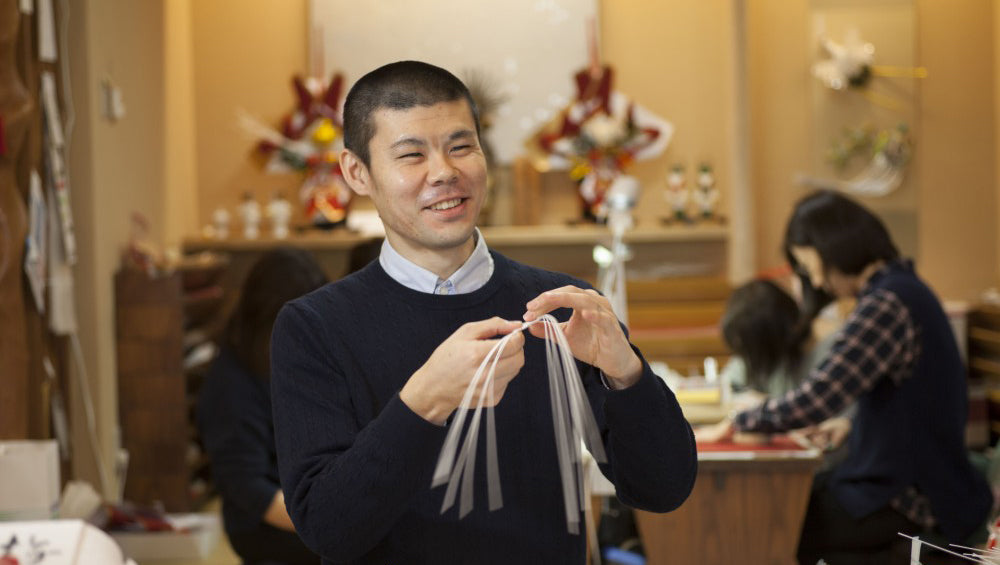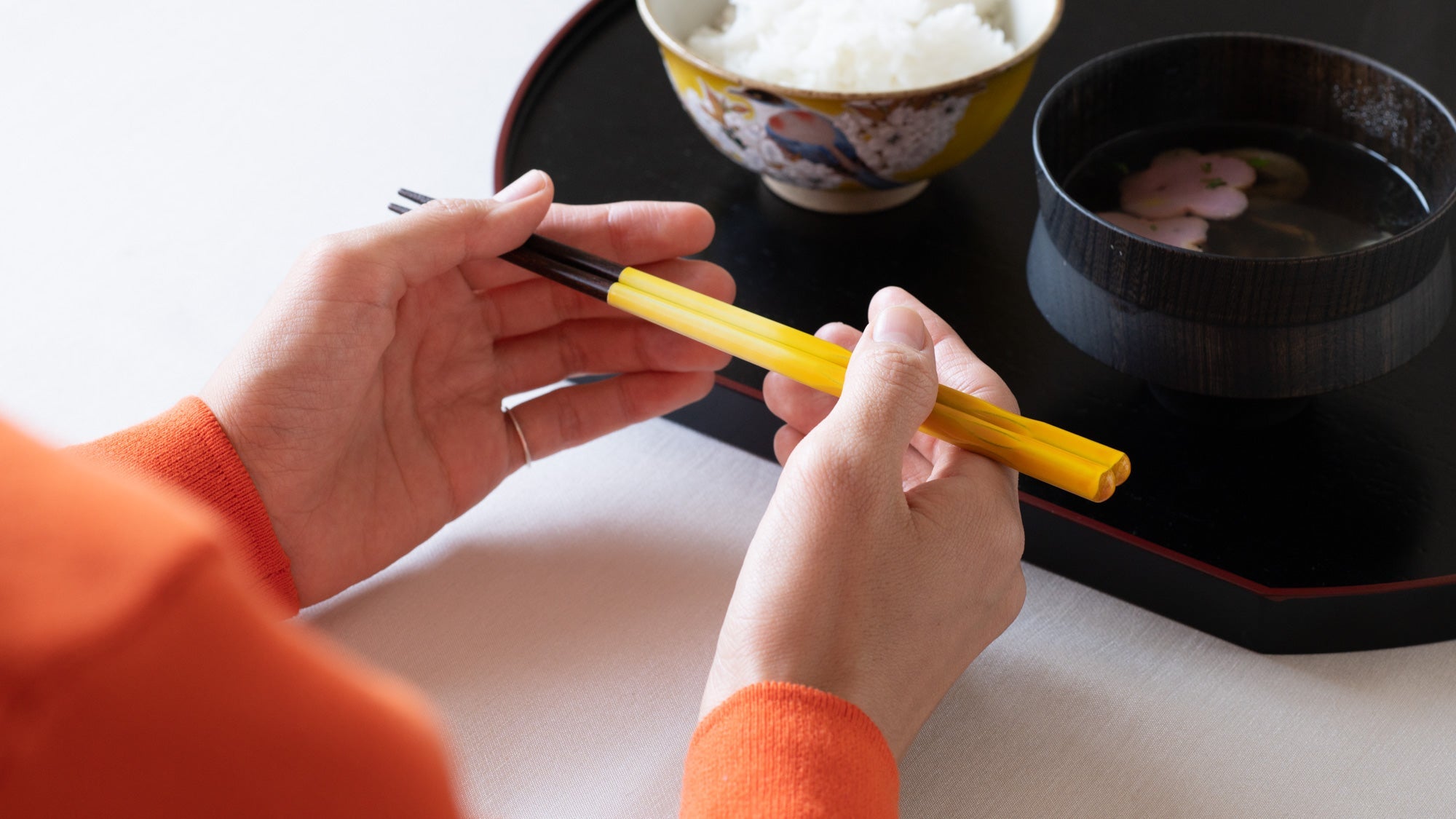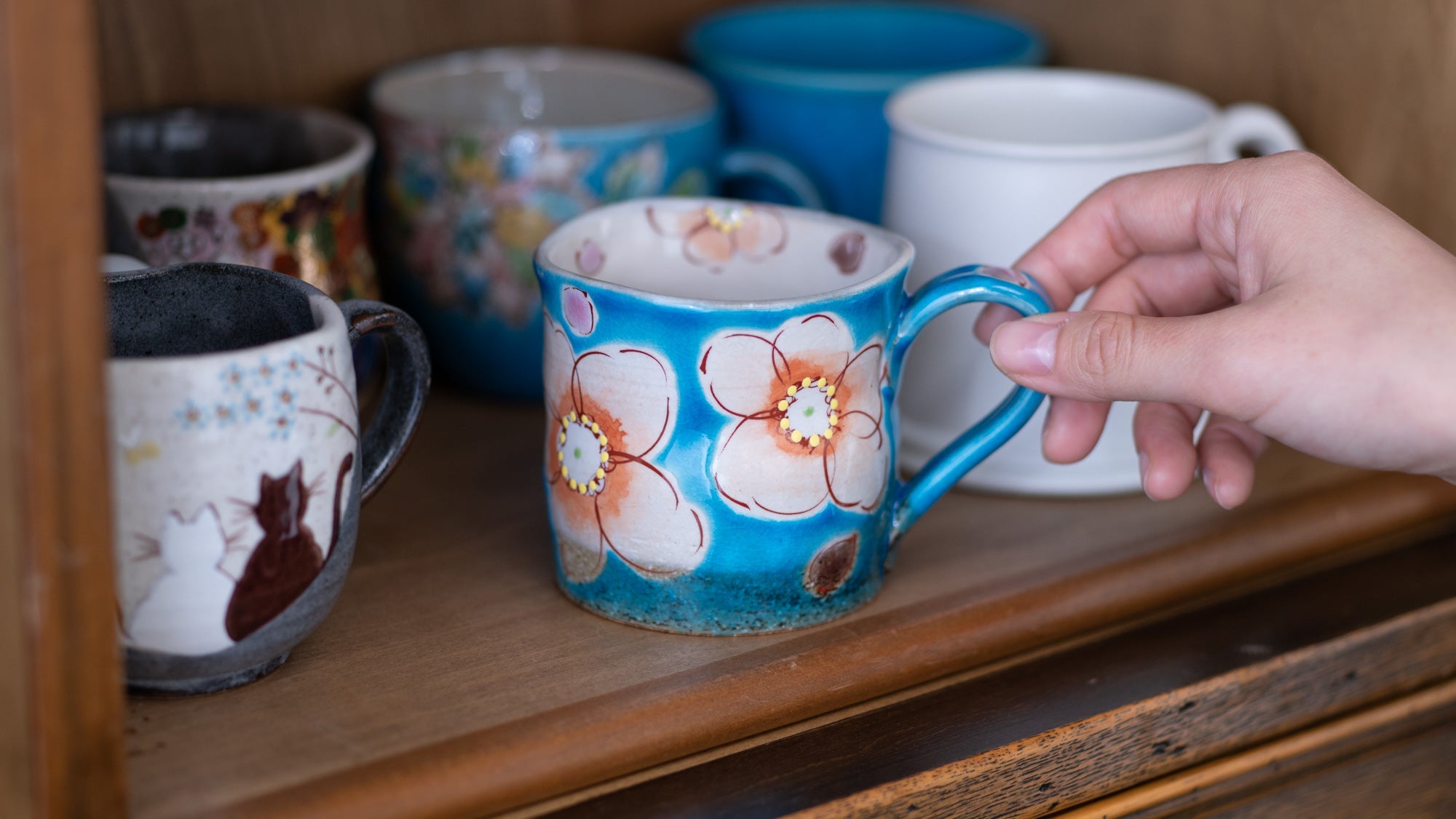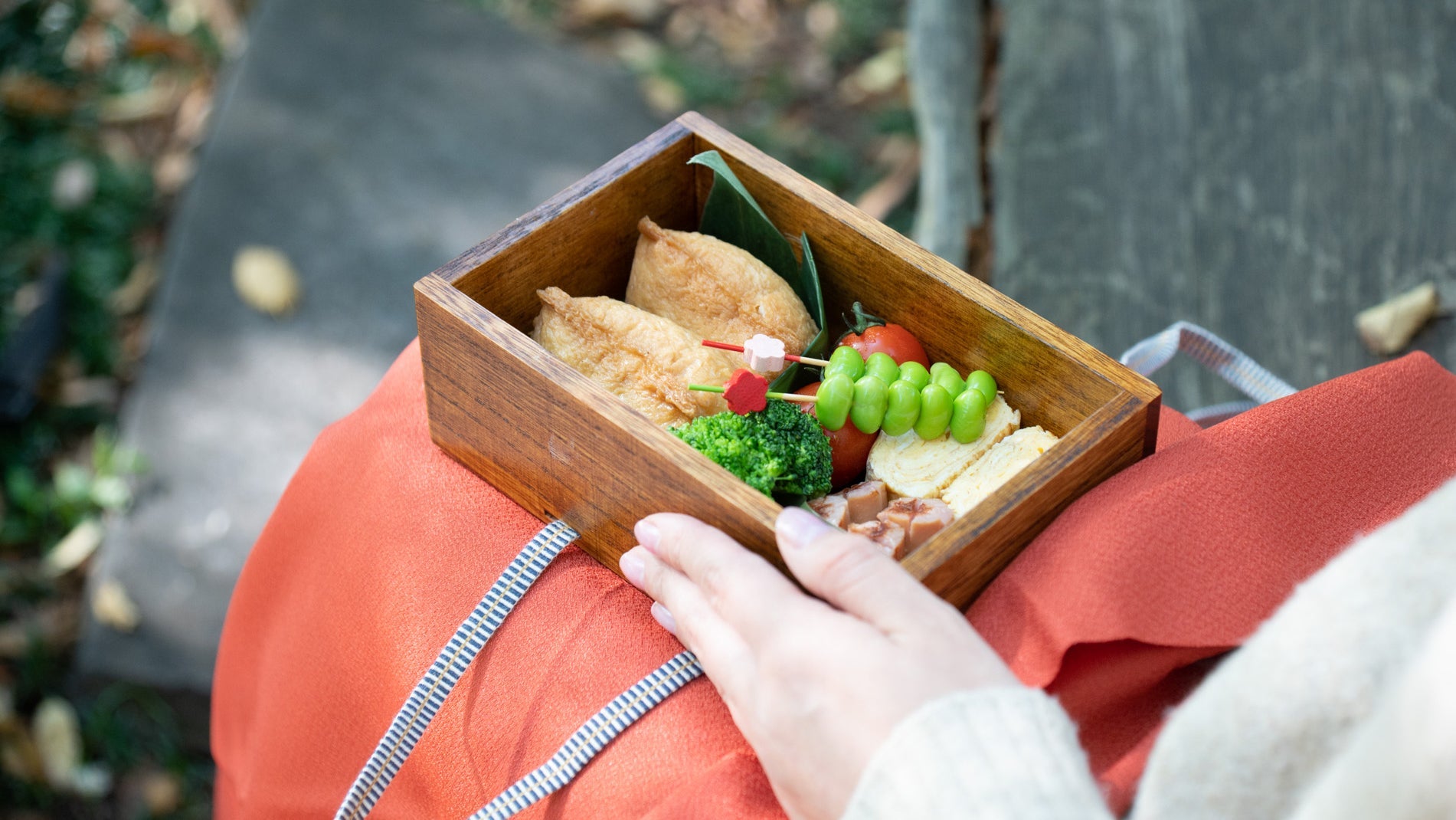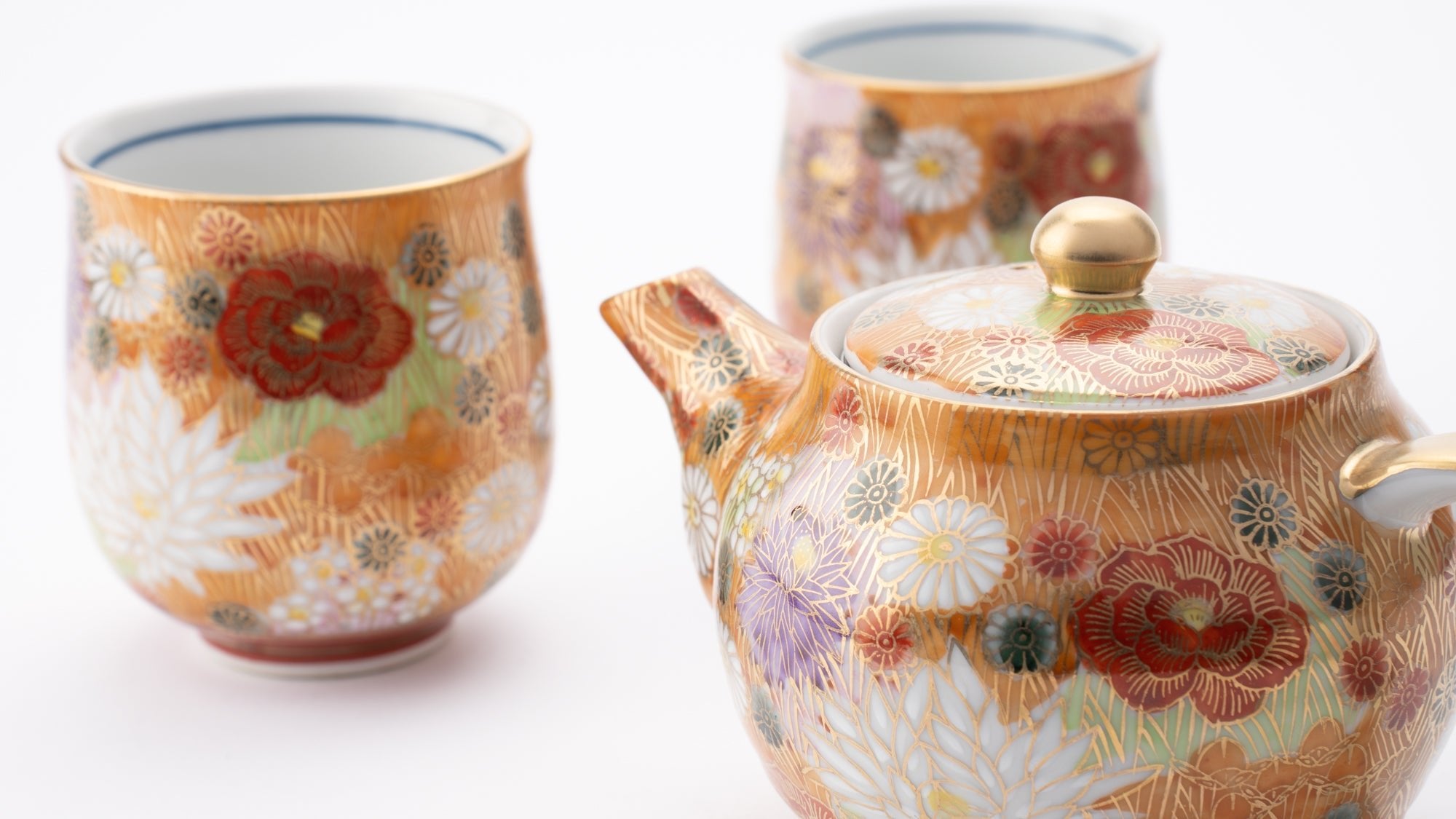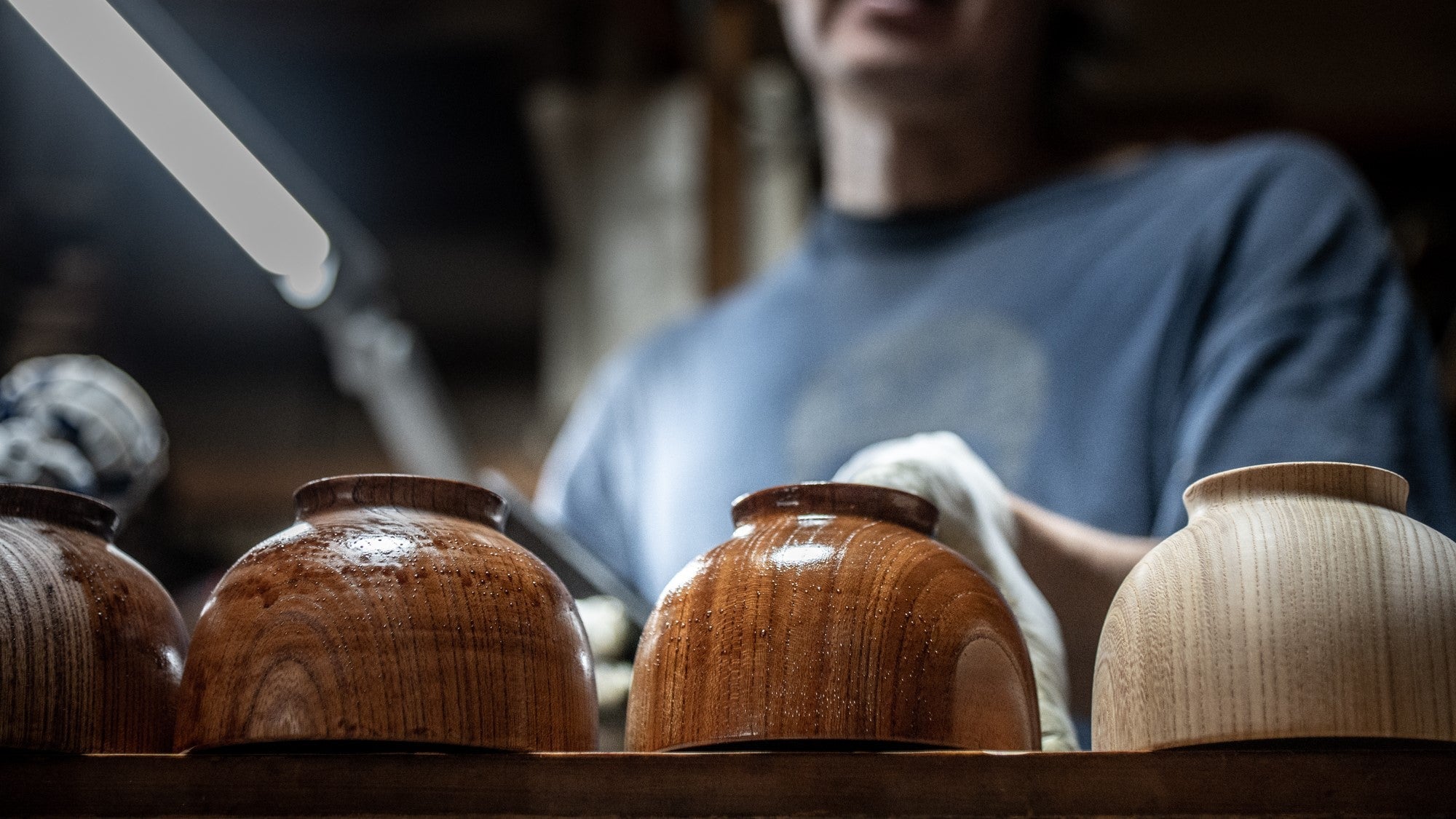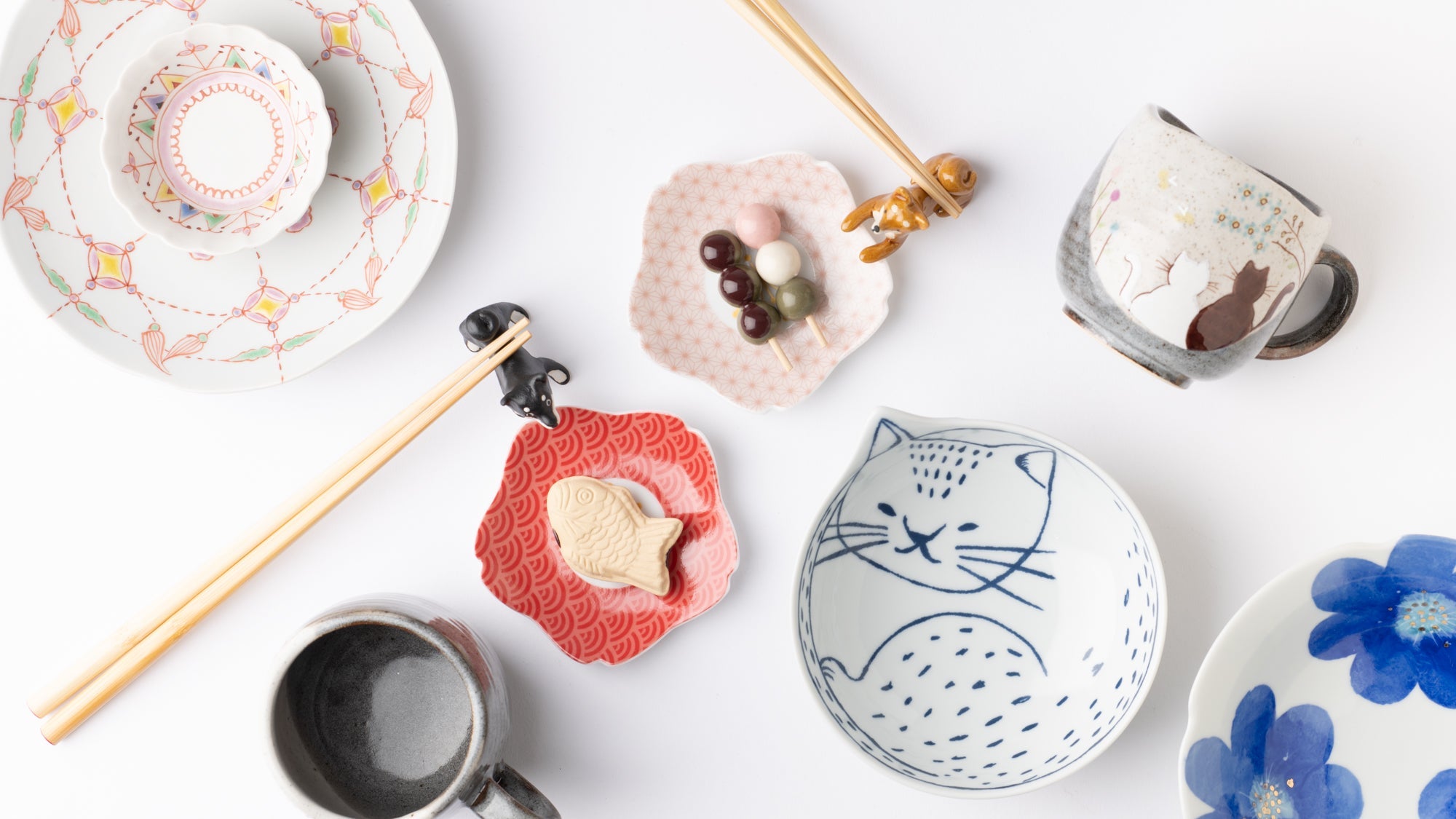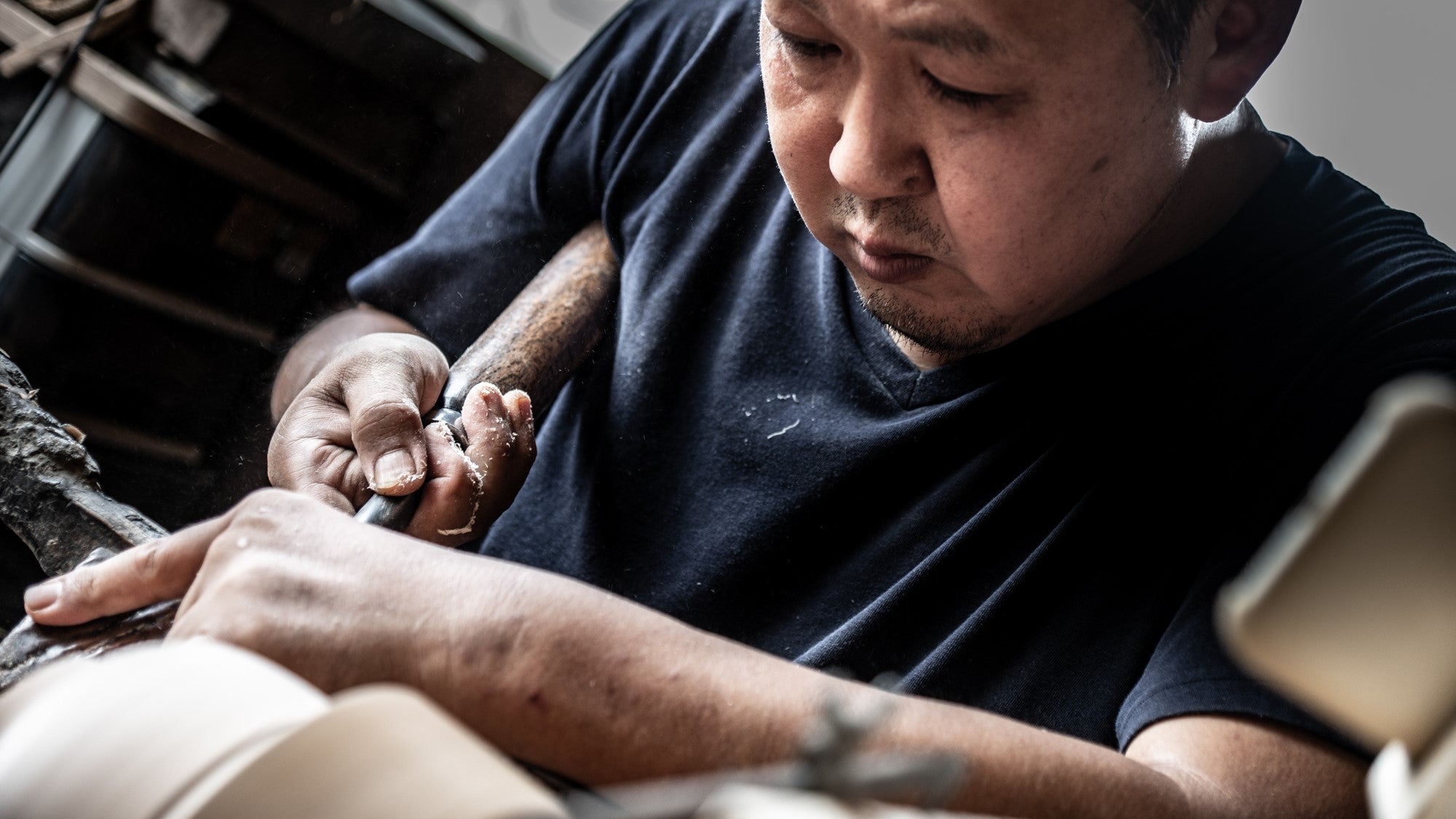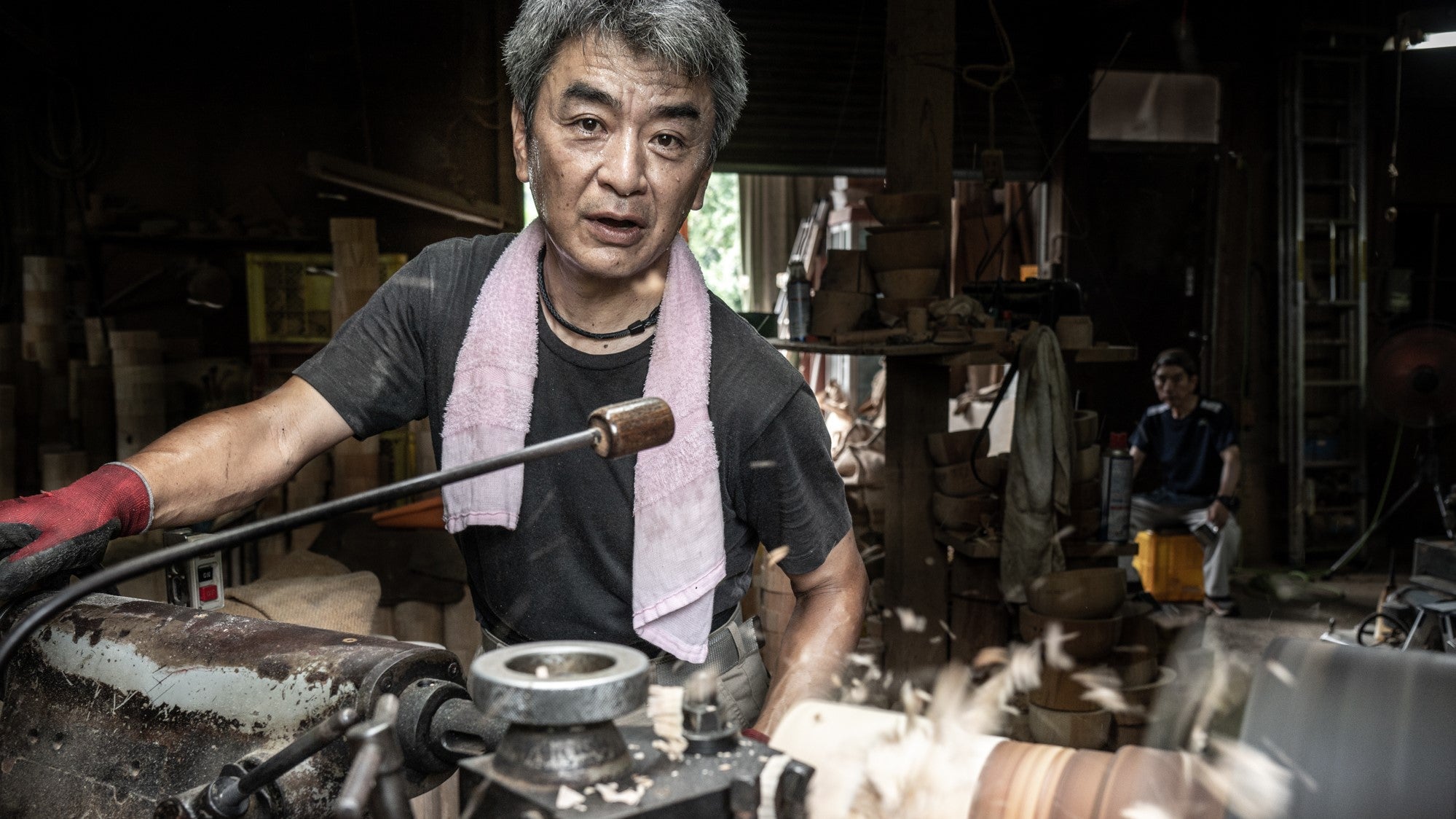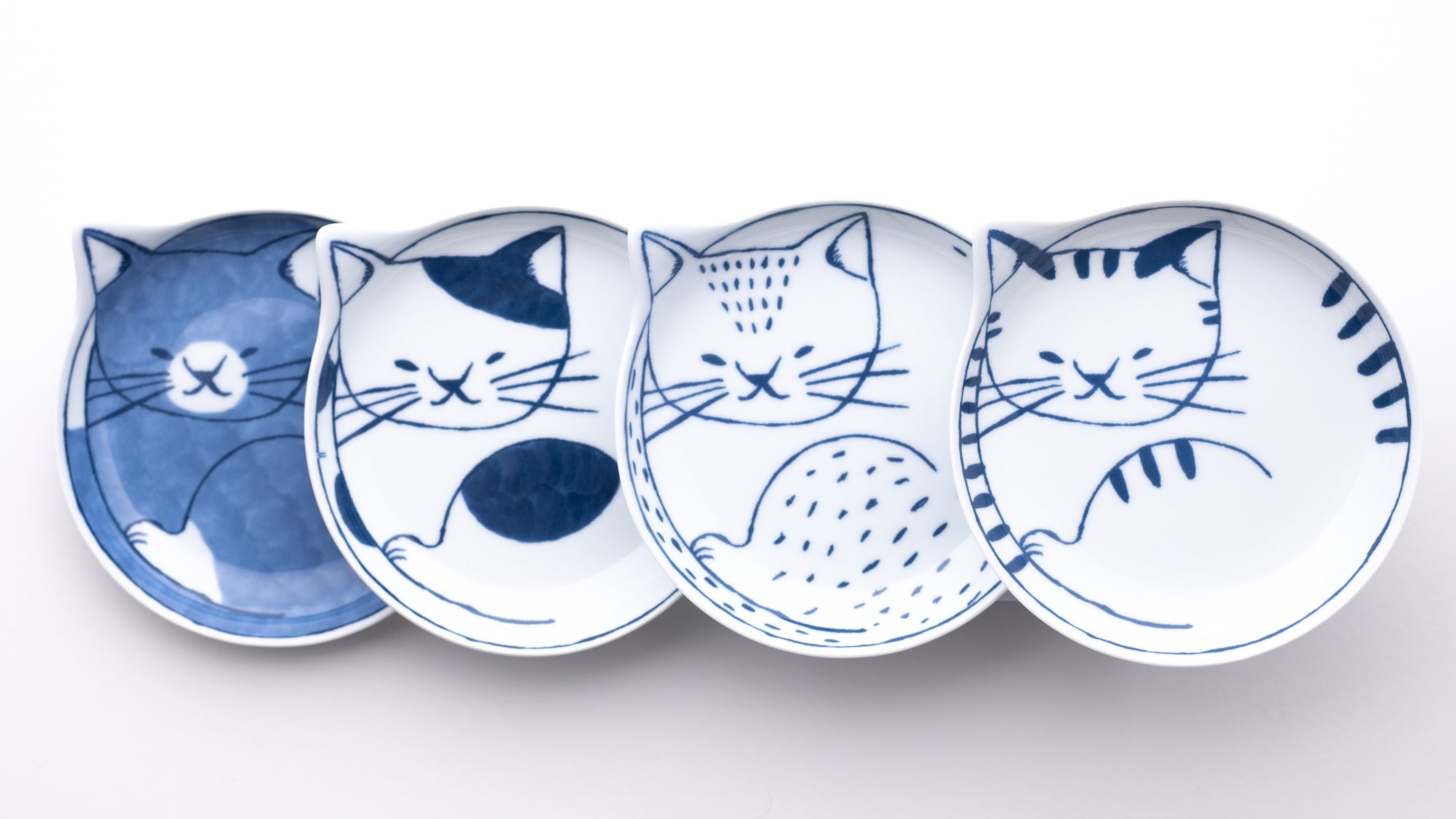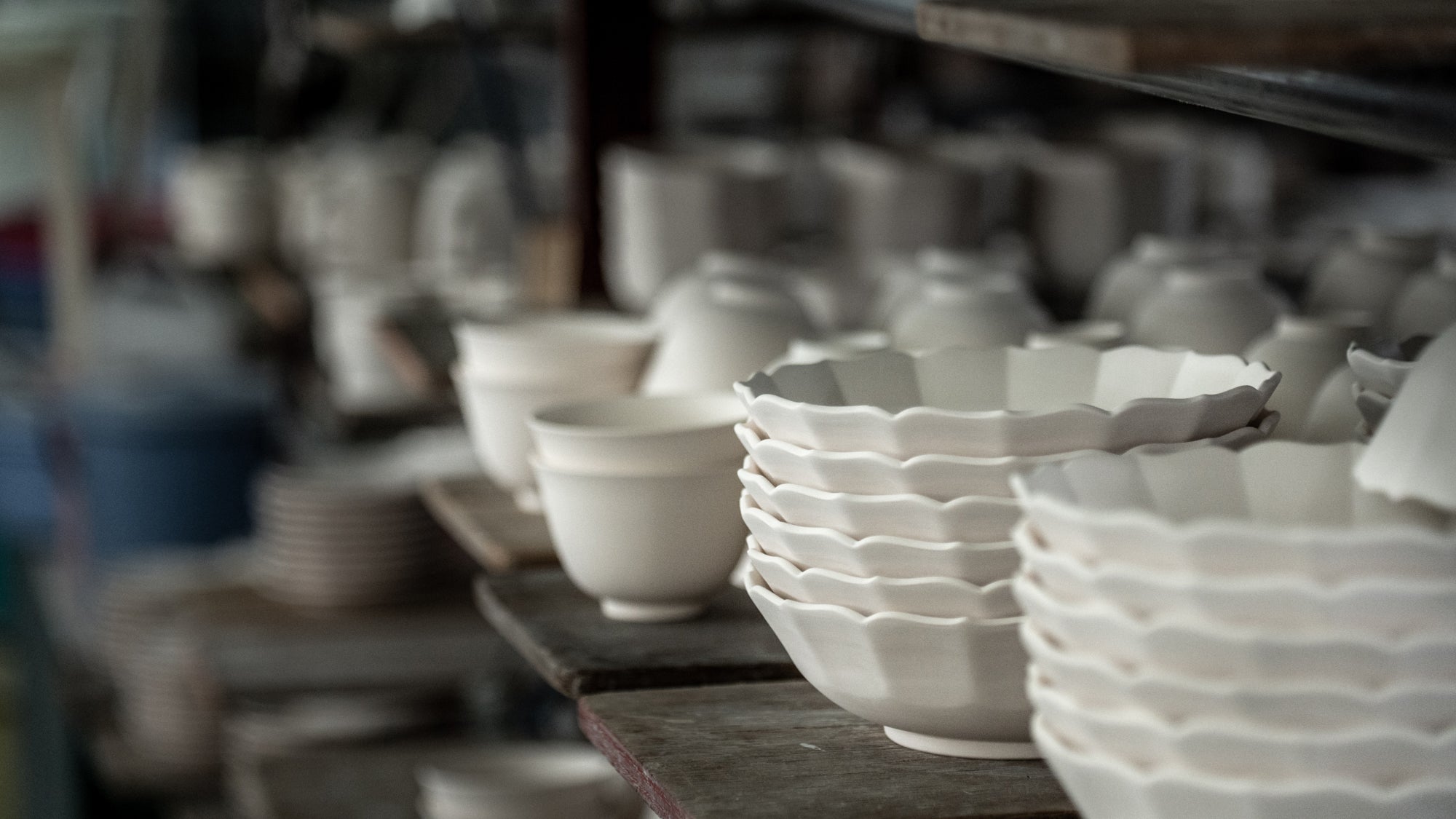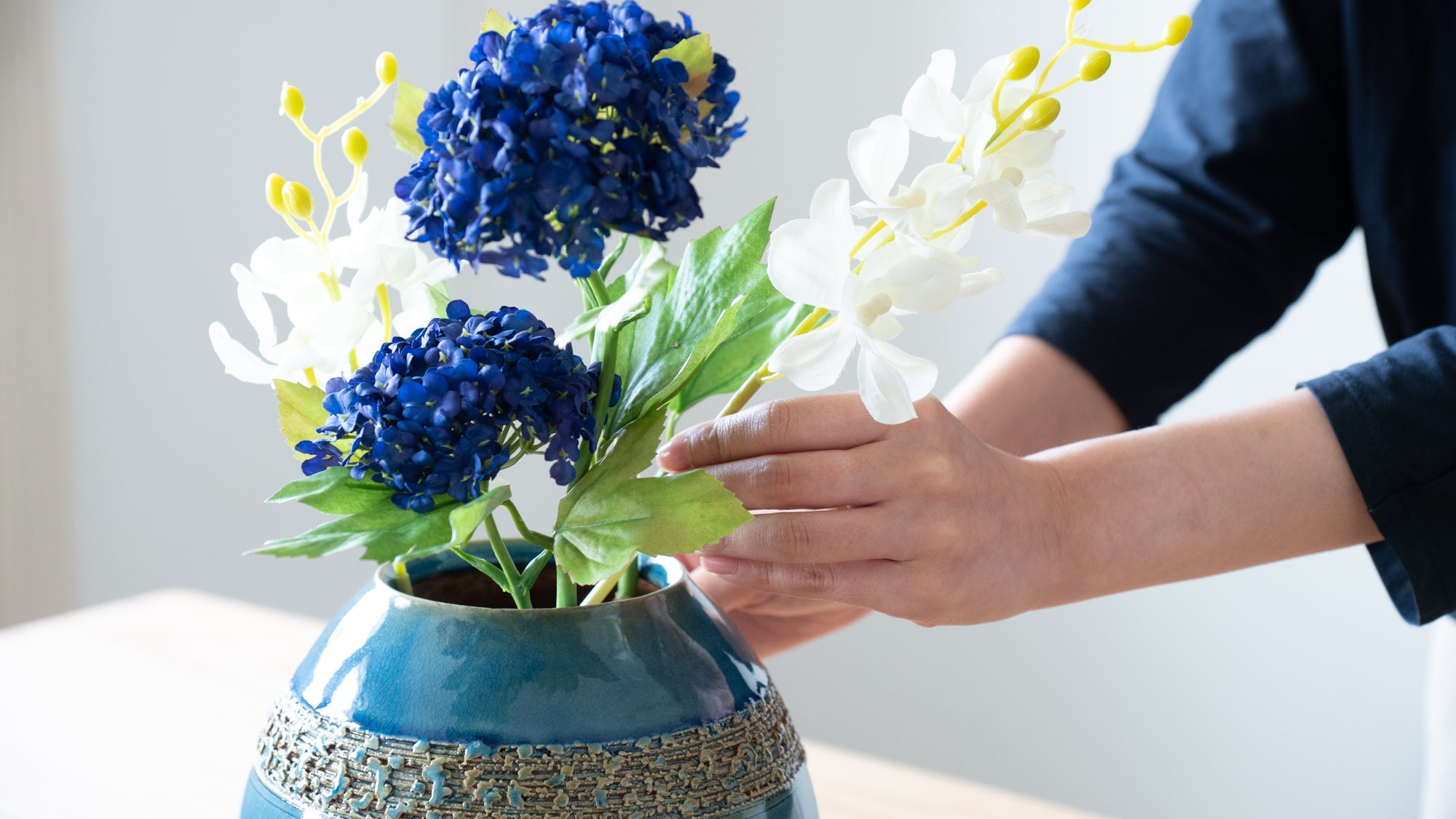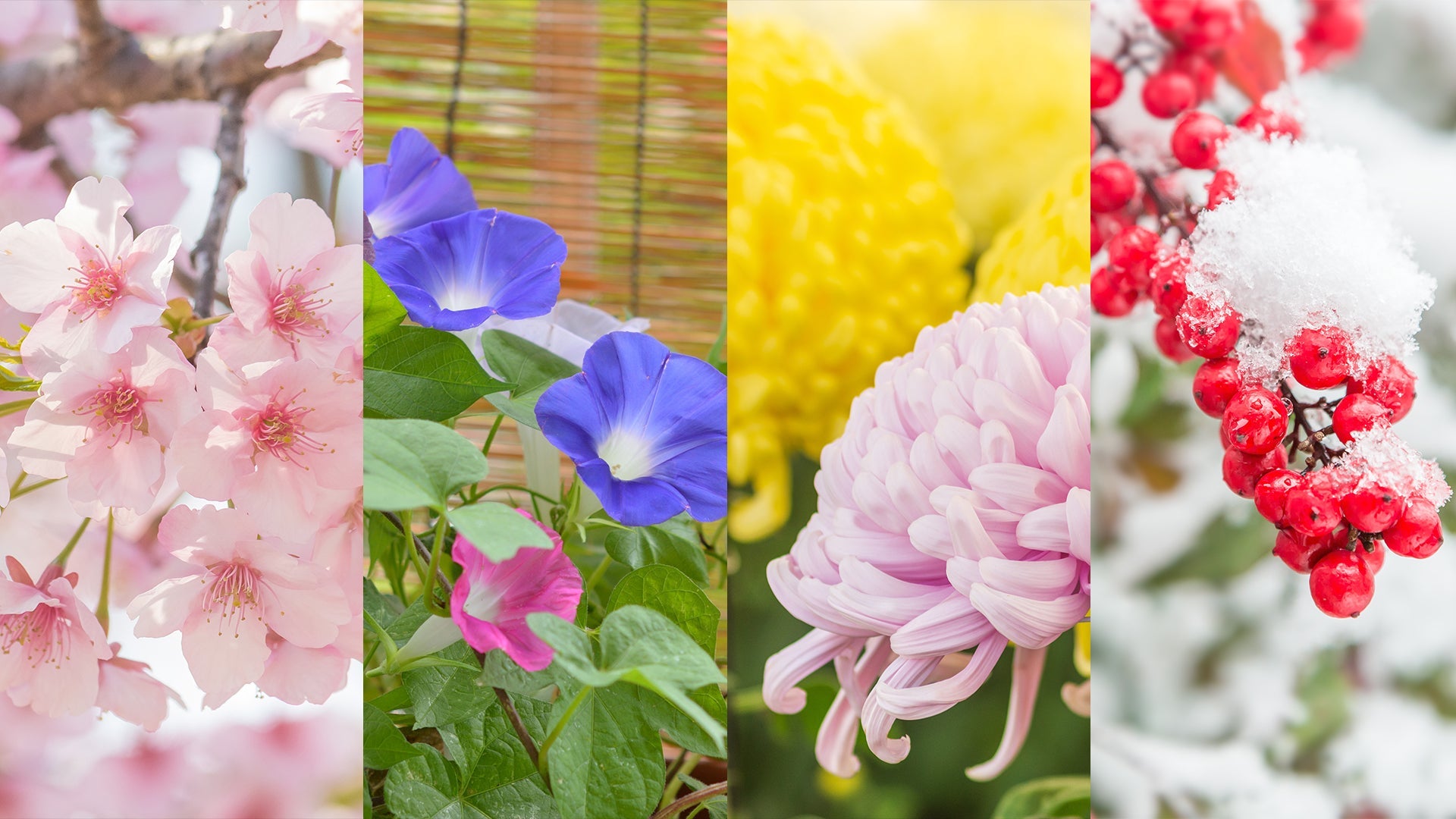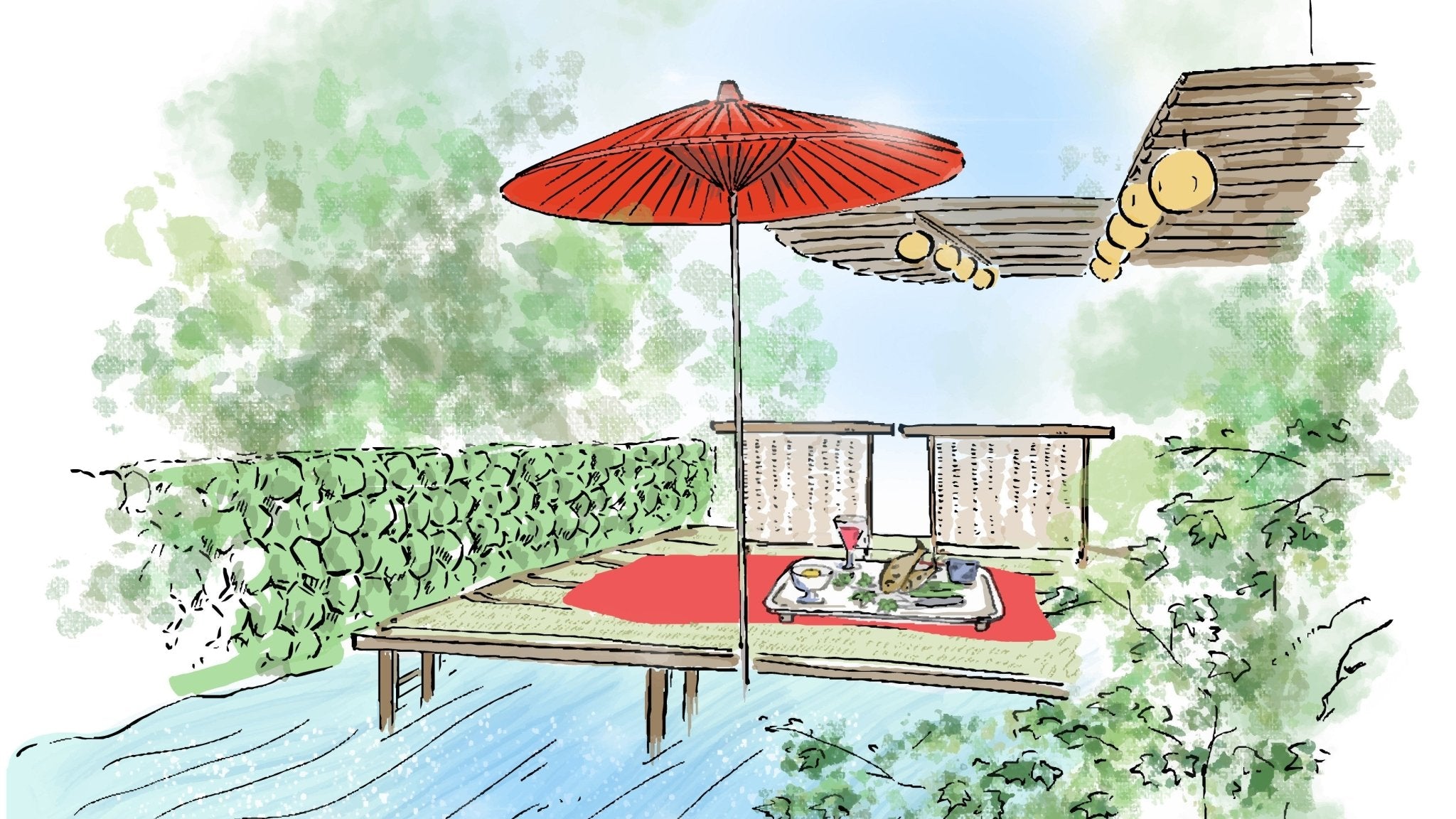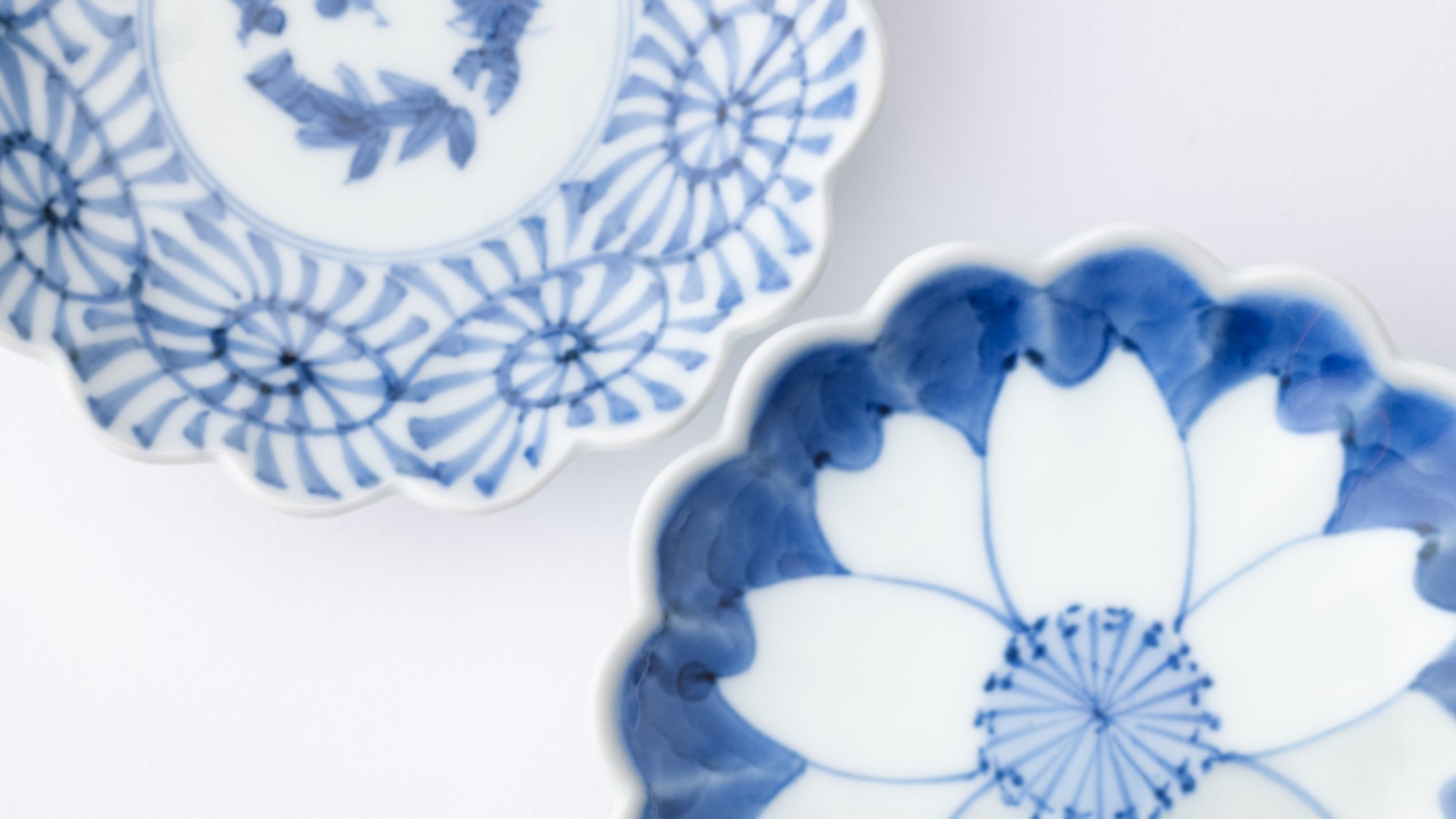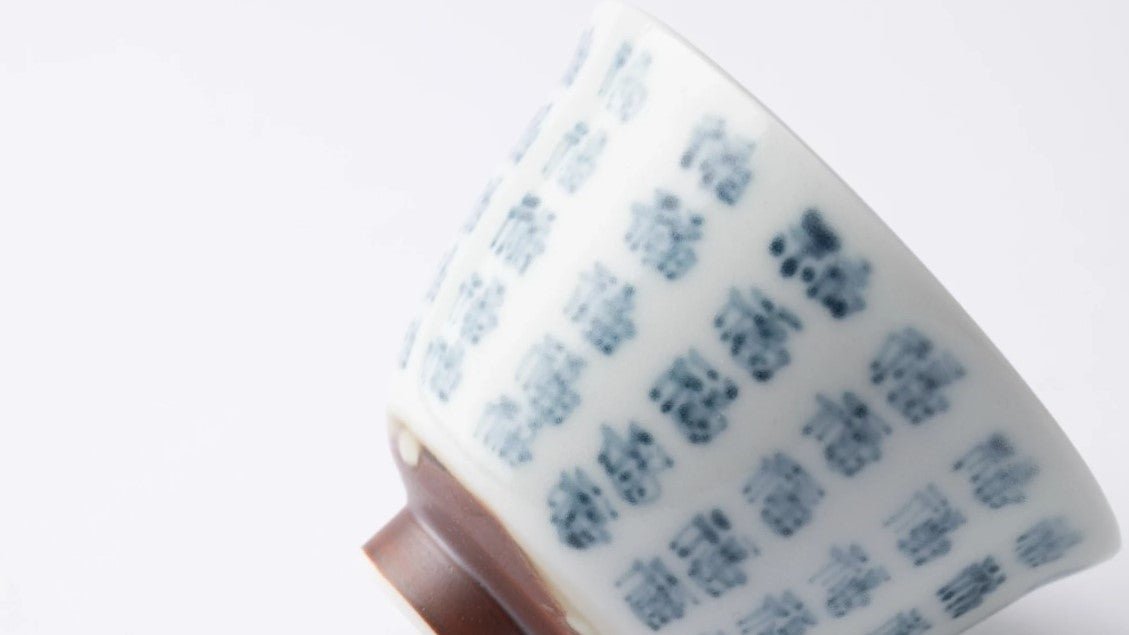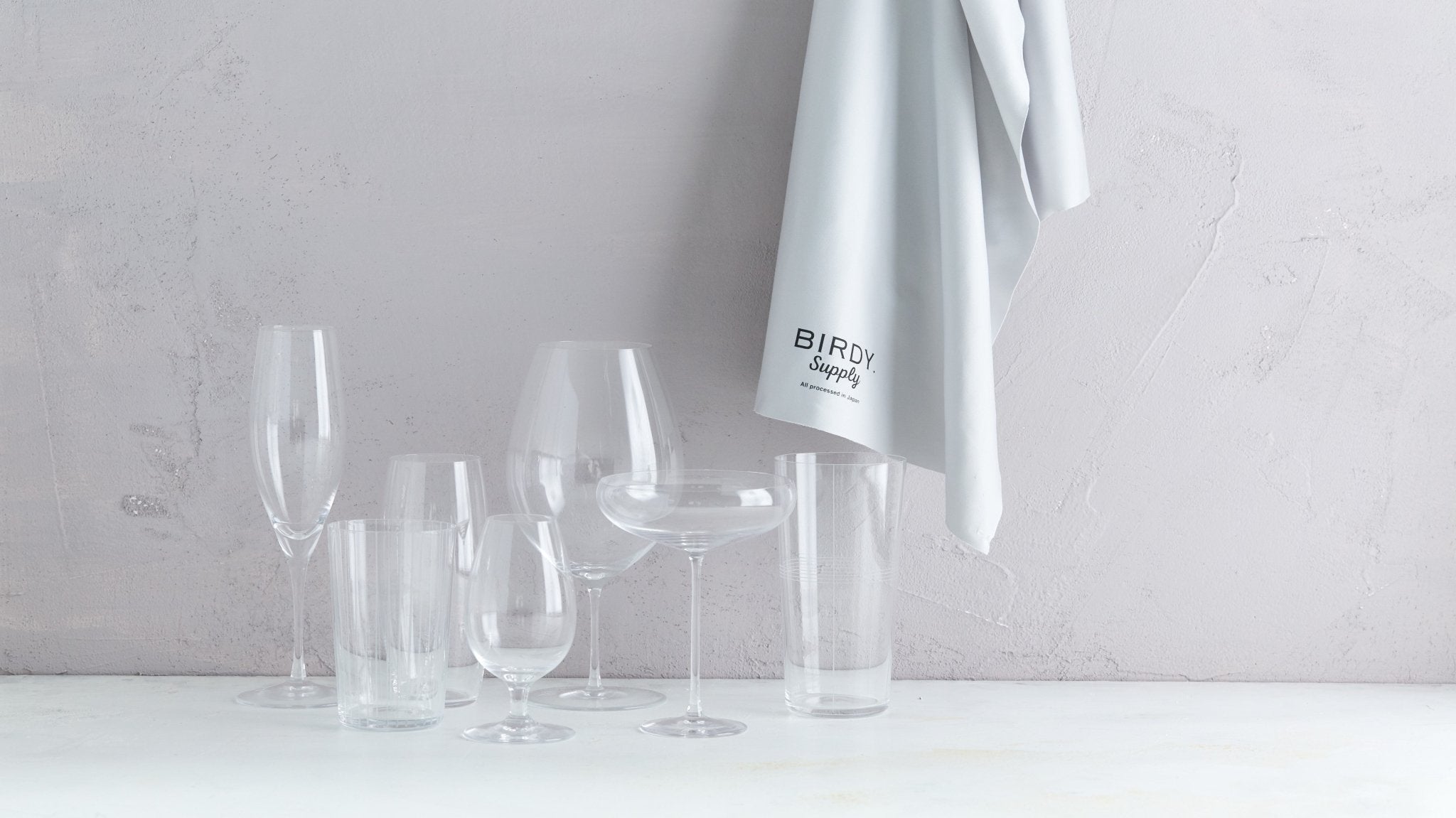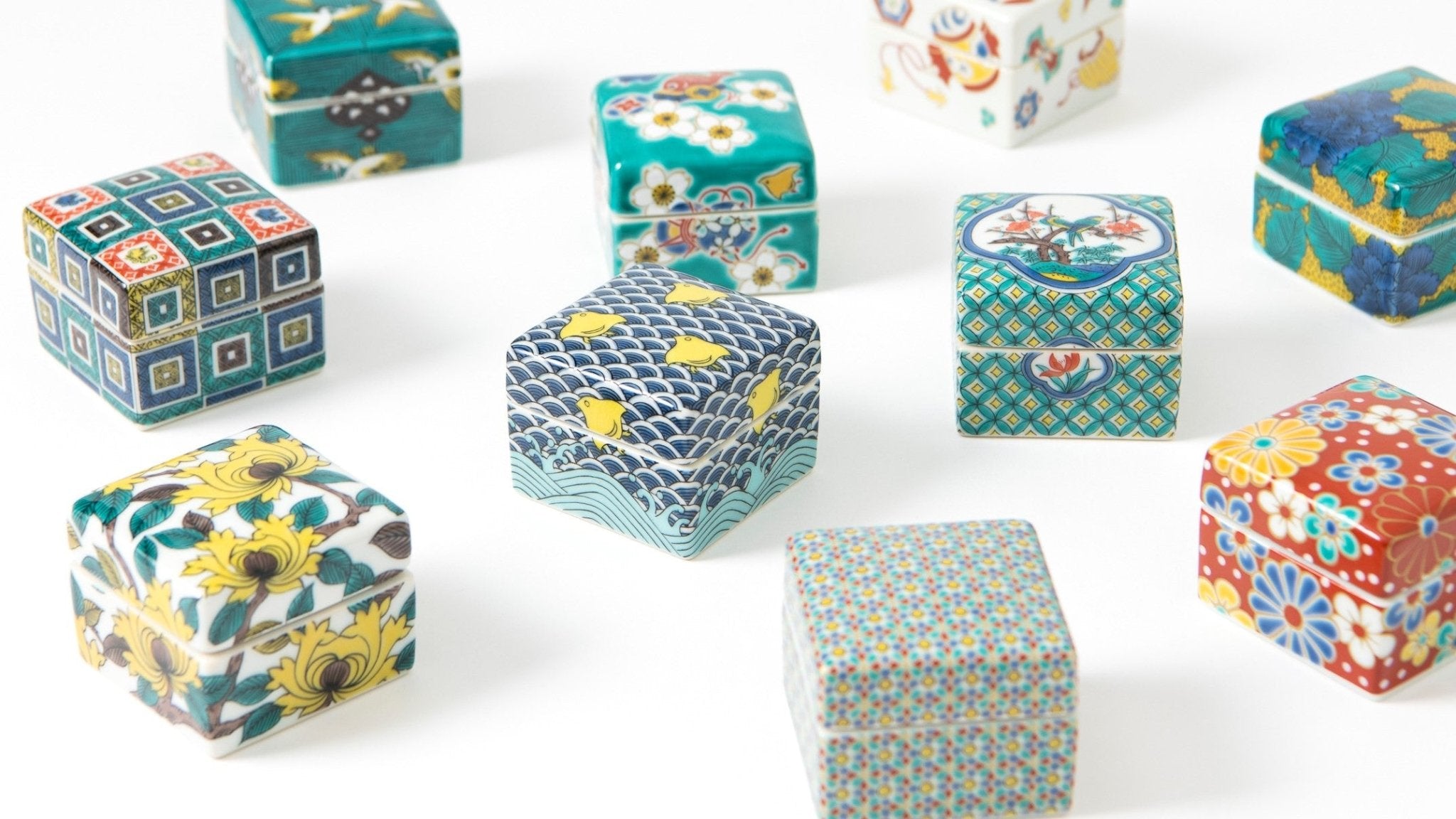21 May 2023
A Journey into the Heart of Kumiko Woodworking


In March, Team Musubi took a two-hour shinkansen (bullet train) trip from Tokyo to visit Ominato Bunkichi Shoten in Kamo City, Niigata Prefecture. Renowned for their expertise in intricate kumiko woodworking, in recent years they have expanded their craft to include home items such as trays and coasters, presently available at MUSUBI KILN.
Kamo City traces its roots back to 726 BCE when carpenters from Kyoto were summoned to build the Aomi Shrine, marking the birth of its woodworking industry. This historic town initially specialized in crafting fittings and screens for temples and shrines. In more recent times, it gained renown for its production of paulownia wood chests.

Ominato Bunkichi Shoten is nestled along the banks of the Kamo River, flowing through the heart of the city. Established in the early Meiji era (1868 CE–1912 CE) as a wholesaler of washi, traditional Japanese paper, the shop thrived by specializing in screens and Buddhist altar fittings throughout the Showa era (1926 CE–1989 CE). About four years ago, they began applying their expertise to create dining and interior items using traditional kumiko woodworking techniques. Their remarkable ability to adapt and innovate continues to meet the evolving demands of each era with unwavering craftsmanship and ingenious ideas.
Contents
- Crafting Kumiko Woodwork
- Navigating the Complexity of Kumiko Craftsmanship
- The Kumiko Experience
- Along With The History of Kamo City
Crafting Kumiko Woodwork

Kumiko is a woodworking technique that involves intricately cutting grooves into thin wood strips and assembling them without the use of any nails. The wood is cedar sourced from Akita. The core of the trunk is used for architectural pillars, while the leftover outer edges are unused. Ominato's grandfather seemingly established a system where these typically discarded wooden pieces were sent directly from the lumberyard to his shop. Even before the era of the SDGs (Sustainable Development Goals), Ominato Bunkichi Shoten had already developed an environmentally friendly and efficient production cycle.

The delivered wood is already cut to specifications, yet it still requires further thinning and the addition of grooves for fitting before the assembly process can begin. This step is crucial for achieving a perfect fit. Specialized machines are employed to shave the wood thinly, with precision down to the millimeter to ensure accuracy and consistency.

The equilateral triangle serves as the fundamental building block in kumiko woodworking, with six triangles coming together to form a hexagon. Using this structure as a base, artisans carefully incorporate smaller parts to craft traditional Japanese auspicious patterns such as hemp leaves and goma, which resembles the cross section of a sesame pod. In addition to designs of repeated patterns, artisans blend woods of different colors and varying thicknesses to create subtle nuances in shade and depth, crafting large-scale works that resemble paintings. Once assembled, the edges are trimmed, and then framed.
Navigating the Complexity of Kumiko Craftsmanship

In my past visits to kilns and studios, I've often heard about the inherent difficulties unique to pottery, such as how slight changes in firing temperatures result in different color shades. Similarly, wood presents its own challenges; it contracts when it dries and expands in humid conditions. Even a discrepancy of 0.01 mm in the grooves and parts can prevent them from fitting together seamlessly. While machines are responsible for precise cutting, it's ultimately the artisans who make decisions regarding wood selection and groove dimensions. Even after the product is completed, humidity can still lead to discrepancies, making it crucial to thoroughly inspect and determine the correct fit.

Overseeing the operations are president Ominato Yosuke, and the factory manager. Ominato explains, "We operate a 'factory' where we manufacture 'products'." While artists create one-of-a-kind pieces, as a manufacturer, Ominato Bunkichi Shoten ensures consistent quality year-round. Whether it's for a customer from last year or a new buyer this year, everyone receives the same high-quality item. They strive to maintain a stable supply and uphold high standards of quality.

They also engage in repairs, which is why they keep parts stored for long periods. This stems from their longstanding experience with Buddhist altar fittings and furnishings for temples. It was surprising to learn that they sometimes receive requests to repair items dating back to the Meiji era. I sensed a deep commitment not just to selling high-quality products, but also to securing their longevity and usability.

Under the dynamic leadership of Ominato Yosuke and the factory manager, who possesses unequivocal expertise, a strong mutual trust prevails. Moreover, their staff consistently develops new ideas in response to global demands, which contributes to the company’s ongoing evolution.
The Kumiko Experience

Fusada-san and I had the chance to try our hand at assembling a kumiko coaster. Although I understood the process in theory, actually fitting the pieces together proved challenging—they didn’t snap into place easily. This was proof of the precision with which the grooves had been cut. Assembling the coaster, which was just about 5 cm (2 in) in diameter, took about 10 minutes. However, larger pieces require significantly more parts and time to complete. Despite the brevity of the experience, it demanded intense concentration and patience.

Along With The History of Kamo City
For lunch, we dined at Kifune, a Japanese restaurant situated in front of Aomi Shrine. The decor featured exquisite woodwork from Ominato Bunkichi Shoten. Light from the ceiling filtered softly through kumiko panels, and the tables were divided by partitions made of kumiko woodwork.

At Kifune, we enjoyed the unique Kiridansu (paulownia chest) Gozen set and the Kumiko Gozen set, served on exquisitely crafted plates from Ominato Bunkichi Shoten. The Kiridansu Gozen was a visual feast—sliding open its drawer-like compartments revealed a vibrant array of Japanese dishes.

My Kumiko Gozen came beautifully presented on a kumiko tray with exquisite gourmet offerings from Niigata, making for a visually delightful meal. The hegi soba, smooth buckwheat noodles kneaded with a hint of nori seaweed, was so delicious that I bought some at the train station on my way back. The pairing of natural ingredients with wood lends a unique, earthy feel that distinguishes it from ceramic plates, reminding me once again of the distinct charm of kumiko.

The day was marked by cloudy skies and light rain, yet this moody weather only made the red torii gate at Aomi Shrine stand out more strikingly. The shrine is renowned for its breathtaking cherry blossoms in spring and vibrant autumn leaves. Most captivating, however, is its profound history, dating back to 726 BCE, which invites a deep, sentimental reflection on its storied past.

Rooted in a rich historical context, kumiko woodworking is not only an industry that showcases the natural beauty of wood but also a craft where artisans bring stunning geometric designs to life through meticulous work. This craft allows the warmth of light to filter through its intricacies, capturing the essential beauty of traditional Japanese patterns. Nestled within this beauty is the unwavering dedication of the individuals at Ominato Bunkichi Shoten, whose commitment I was able to personally witness and fully appreciate during this interview.
View Ominato Bunkichi Shoten Collection



